Truly Tokyo
A Tokyo Travel Guide

Tokyo 2-Day Itinerary
Two days is enough to see both sides of Tokyo: the traditional and the modern. This itinerary is the perfect way to make the most of two days in this incredible city.

Itinerary Summary
- Two days allows you to experience traditional and modern Tokyo.
- Base yourself somewhere central to save time.
- On Day 1, visit modern Tokyo on the west side.
- On Day 2, visit traditional Tokyo on the east side.
Check Hotel Availability
Destination, check-in date, check-out date.

Full Tokyo 2 Day Itinerary
Day 1: modern tokyo/west side.
- 8:30am: Head up to Harajuku, using the JR Yamanote Line to Harajuku Station or the Chiyoda subway line to Meiji-Jingumae/Harajuku Station.
- 9:00am: Arrive in Harajuku and walk west across the bridge and into the lovely forest surrounding Meiji-jingu Shrine . Explore the shrine and then return to Harajuku Station then walk east on Omotesando, browsing the shops along the way. Continue east all the way to the superb Nezu Museum and do not forget to explore the sublime garden after checking out the museum!
- 11:00am: Walk back to the intersection of Omotesando and Aoyama-dori and take the Ginza subway line west to Shibuya.
- 11:15am: Arrive in Shibuya and exit the station via the Hachiko exit and then cross the famous Shibuya Crossing . Have a light snack and/or a cup of coffee to sustain you until 1:00pm (the restaurants will be packed between noon and 1:00pm). Explore the big department stores and boutiques of Shibuya.
- 1:00pm: Eat lunch somewhere in Shibuya. Don't forget that all the department stores in Shibuya have huge restaurant floors. For more choices see the Shibuya district page Places to Eat section.
- 2.30pm: Take the Yamanote Line one stop south from Shibuya to Ebisu Station, then switch to the Hibiya Line subway and take that two stops east to Roppongi.
- 3:00pm: Arrive in Roppongi and walk west from Roppongi Station to the Roppongi Hills complex . Refuel with a cup of coffee there (the Starbucks at the TV Asahi/ Tsutaya complex has good people watching). Then, head up to the 52nd floor Tokyo City View observation deck of the Mori Tower to see the city.
- 6:00pm: Eat dinner in Roppongi. See the Roppongi district Places to Eat section for some of my picks.
- 8:00pm: If you still have any energy left, have a drink in one of Roppongi's many bars. See the Roppongi district Nightlife section for some recommendations.

Day 2: Traditional Tokyo/East Side
- 9:00am: Head up to Asakusa . The Ginza subway line is a good way to get there from many parts of Tokyo. Asakusa is the spiritual heart of Tokyo and a good place to start your day. Visit Senso-ji Temple and nearby Asakusa-jinja Shrine .
- 10:30am: Take the Ginza subway line three stops west to Ueno.
- 11:00am: Arrive in Ueno. Take the exit for Ueno-koen Park and walk north across the park to the superb Tokyo National Museum . After visiting the museum, walk south to Tosho-gu Shrine and then make your way back to the station. As on Day 1, try to avoid eating lunch between noon and 1pm. Have a snack or a coffee to get your through.
- 1:00pm: Take the JR Yamanote Line south to Tokyo Station. Eat lunch in or around Tokyo Station. See the Tokyo Station Area Places to Eat section for my recommendations.
- 2:00: Check with the tourist information office in the basement of the Kitte Building to see what's on at the Mitsubishi Ichigokan Museum or the Bridgestone Museum of Art. If neither look good, walk over to the Imperial Palace East Garden and take a stroll.
- 3:00pm: Walk over to Ginza and do some late afternoon shopping.
- 4:00pm: Return to your hotel for a nap and a shower.
- 6:00pm: Eat dinner in an area like Shinjuku , Ginza , Marunouchi or someplace close to your hotel. See the relevant district pages for recommendations.
- 8:00pm: If you've still got the energy, go out for a drink in a place like Roppongi , Shinjuku or Shibuya . See the relevant district pages for recommendations.
Hints, Comments and Variations
- If you're only going to be in the city for two days, you should try to base yourself in a central location so you don't waste time moving around. I'd suggest Shinjuku, Shibuya, Ginza or the Tokyo Station area. For more on where to say, check out my Where to Stay in Tokyo page.
- On Day 2, another good option for the afternoon is the Edo-Tokyo Museum . It's easy to reach from Asakusa, Ueno or Tokyo Station.
- On Day 2, if you start the day at Tsukiji Fish Market , after visiting the market, you can head up to Asakusa using the Sumida River Line from Hama Rikyu Pier. This boat is a relaxing way to make the journey.
- Don't try to do any more than this on two days in Tokyo – you'll tire yourself out. If you want to relax, subtract one or two places from this itinerary. As usual, it's better to enjoy a few places properly than to sprint through many places.
Where Are These Places Located?
- Open the Tokyo map
- You will see the list of places on the left hand side. (Click the 3-line icon in the top left corner if not). Scroll down or use the map search (the magnifying glass icon) to find the place you want.
- Click the name of the place in the list. Its location pin will be highlighted on the map.
- Map pins are color coded - BLUE: Hotels / Ryokan / Guesthouses | VIOLET: Ryokan | PINK: Places to Eat | GREEN: Shops | YELLOW: Things to See and Do
- If you're using the map on your phone, open the map and then search for the name of the place. The map will then zoom in on its location.
Tokyo Vacation Checklist
- For all the essentials in a brief overview, see my First Time In Tokyo guide
- Check Tokyo accommodation availability and pricing on Booking.com and Agoda.com - often you can book with no upfront payment and free cancellation
- Need tips on where to stay? See my one page guide Where To Stay In Tokyo
- You can buy shinkansen (bullet train) tickets online from Klook - popular routes include Tokyo to Kyoto , Tokyo to Osaka and Tokyo to Hiroshima
- You can buy an eSim to activate in Japan or buy a Japan SIM card online for collection on arrival at Tokyo Narita or Haneda airports. Or rent an unlimited data pocket wifi router
- See my comprehensive Packing List For Japan
- Compare airline flight prices and timings for the best Japan flight deals . Check my guides to arriving at Narita Airport and at Haneda Airport .
- If you're visiting more than one city, you might save money with a Japan Rail Pass – see if it's worth it for you
- A prepaid Welcome Suica card makes travelling around Tokyo much easier - here's how
- World Nomads offers simple and flexible travel insurance. Buy at home or while traveling and claim online from anywhere in the world
- Do you want help planning your trip? Chris Rowthorn and his team of Japan experts at Japan Travel Consulting can help
Tokyo District Map

- Imperial Palace Area
- Tokyo Station
- Shimbashi Shiodome Hamamatsucho Shinagawa
- Akihabara Kanda
- Roppongi Akasaka
- Harajuku Aoyama
- Ebisu Daikanyama Meguro
Disclosure: trulytokyo.com is a participant in the Amazon Services LLC Associates Program, an affiliate advertising program designed to provide a means for sites to earn advertising fees by advertising and linking to amazon.com and amazon.co.uk. World Nomads provides travel insurance for travellers in over 100 countries. As an affiliate, we receive a fee when you get a quote from World Nomads using this link. We do not represent World Nomads. This is information only and not a recommendation to buy travel insurance.
Travel, Hiking, Food
2 Days in Tokyo: The Ultimate First Time in Tokyo 2 Day Itinerary and Travel Guide
Looking for the best way to spend 2 days in Tokyo? Find out what to do and see in Tokyo with this complete 2 day Tokyo itinerary. This Tokyo itinerary also shows you how to get around Tokyo, where to stay in Tokyo and other practical tips to visit Tokyo.
This blog contains occasional affiliate links, where I receive a small commission on sales of the products/hotels that are linked at no additional cost to you. In addition, as an Amazon Associate, I earn from qualifying purchases .
Tokyo is a city on everyone’s Japan itinerary . It is a city that perfectly blends its traditions and modernity. Amidst the towering skyscrapers and neon-lit districts, you can still find pockets of ancient shrines, centuries-old tea houses, and traditional markets.
Even if you are not a fan of temples and shrines, there are themed cafes, high end shopping (and 2nd hand vintage Chanel and Rolex shopping), delicious restaurants, relaxing hot springs, fun arcade games (their claw games are the best), and themed parks like Disneyland and DisneySea.
Keep reading and find out how you can spend 2 days in Tokyo, where to stay in Tokyo, how to get around Tokyo and other practical travel information.
Also, if you want to see what more you can do in Tokyo, you can check out my Tokyo 2 to 7 day itinerary .
Planning a Japan Trip?
Check out my Japan travel guides for some inspirations on Kyoto , Arashiyama , Osaka , Hokkaido and the greater Tokyo area (including day trips)!
These guides are drafted to help you efficiently plan your Japan itinerary and provide you with practical travel information.
Lastly, save money on all the attractions in Tokyo with a Tokyo attraction pass .
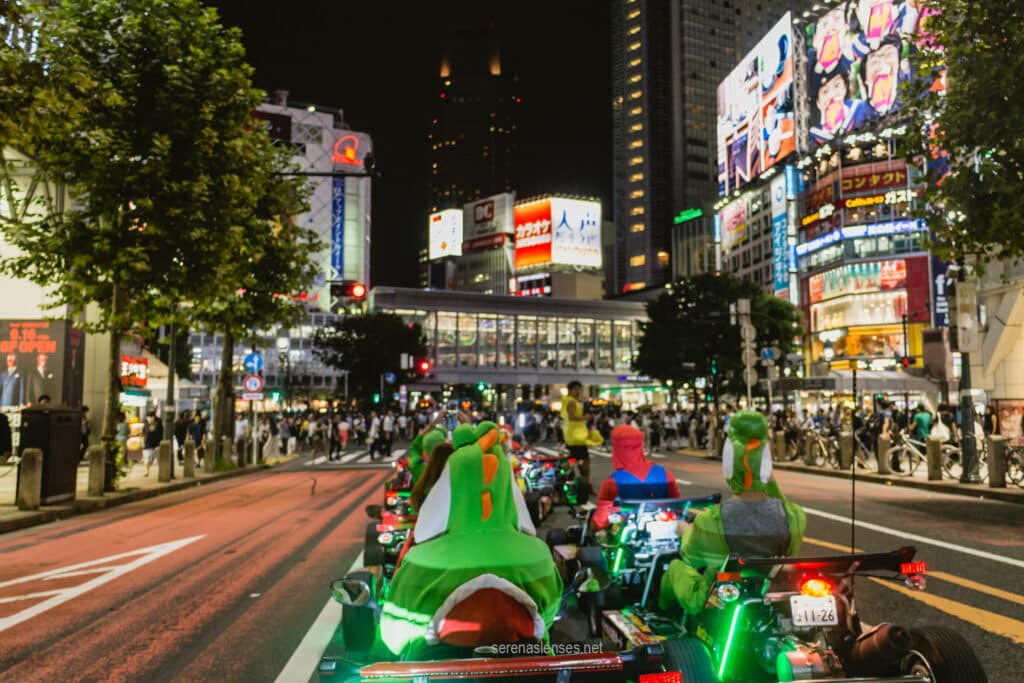
Complete 2 Day Tokyo Itinerary For First Timers
This two day Tokyo itinerary is meant for someone visiting Tokyo for the first time. This itinerary is divided as below:
- Day 1: Western Tokyo : Harajuku, Shibuya, Shinjuku
- Day 2: Eastern Tokyo : Tsukiji, Asakusa, Akihabara, Ginza, Tokyo Tower, Roppongi
I will also tell you fun things to do in Tokyo besides what’s mentioned on this sample itinerary so you can decide how to draft a perfect Tokyo itinerary for you (I mean everyone can’t possibly all like the same things right?).
Without further ado, let’s dive right into this super efficient 2 day Tokyo itinerary.

Day 1 in Tokyo: Western Tokyo – Harajuku, Shibuya, Shinjuku
Tokyo can be roughly divided into west and east. Therefore if you only have two days in Tokyo, it is only reasonable to divide up your Tokyo itinerary into west and east!
On your first day in Tokyo, you will be exploring the west side of Tokyo, including the neighborhoods of Harajuku, Shibuya and Shinjuku. These neighborhoods are grouped together due to their proximity, so you don’t need to waste too much time on the train.
Early Morning: Grab a Bite at your local 7-Eleven or Lawson
Why are you asking me to eat breakfast at 7-Eleven? You may be very doubtful of this suggestion but trust me, convenience stores in Japan are 1000x better than convenience stores elsewhere in the world. In fact, I (and everybody I know) absolutely loved getting breakfast from 7-Eleven in Tokyo.
Unlike the US, convenience stores in Japan are well stocked, with actual high quality and good tasting food. You can find all sorts of things from rice balls to sandwiches to boxed lunches (bentos) to fried chickens. There are also all sorts of drinks (cold and hot), bread, pastries, snacks and ice creams at a Japanese convenience store.
Trust me, get your breakfast at a local convenience store and you will want to go back for more.
Morning: Meiji Temple

Start your morning in Meiji Temple. Meiji Temple is one of Japan’s most iconic Shinto shrines, dedicated to Emperor Meiji and Empress Shoken. The shrine was established in 1920 to honor the spirits of Emperor Meiji and Empress Shoken.

Meiji Temple is on everyone’s must-see Tokyo list; it is inside a large forested area, with a large Torii gate at its entrance. You will see the stack of sake barrels, the main hall (and side buildings), gardens, and a new museum (opened in 2019) at Meiji Temple.

You can buy amulets for good luck and Ema (votive tablets), write your wishes on it and hang it around the tree in front of the main shrine. If you are lucky enough you will also witness a traditional Japanese wedding at Meiji Temple.

If you enjoy nature, you can also stop by the nearby Yoyogi Park , one of the largest parks in Tokyo.
Late Morning: Harajuku
Harajuku is a vibrant and eclectic district that has become associated with youth kawaii (cutesy) culture, fashion, and creativity.

The most famous street in Harajuku is Takeshita Street , a narrow pedestrian street lined with quirky boutiques, trendy cafes and restaurants.
You will also see the giant DAISO store , a 3 story Japanese variety store that has so many things, from snacks to character products to gadgets to souvenirs and much more and everything is 100 Yen.

You will also find a ton of crepe shops and the viral cotton candy shop on Takeshita Street. Around Takeshita Street and elsewhere in Harajuku, there are a number of animal and themed cafes:
- PEANUTS Cafe SUNNY SIDE kitchen: Snoopy themed cafe where food, furniture and decorations are all Peanuts themed. Their pancakes are good and super cute!
- Mipig Cafe : animal cafe with minipigs that roam around and interact with you. Skip if you don’t endorse animal cafes
- Pompompurin Cafe : Super cute Pompompurin themed cafe and restaurant where all the food are Pompompurin themed!

- Owl Village Cafe : animal cafe with owls flying around
- Hedgehog Cafe & Pet Store HARRY : animal cafe with hedgehogs (and hedgehog toys and souvenirs)
- Harajuku Mame Shiba Cafe : animal cafe with Shiba Inu dogs lying around
- Cafe Reissue : known for their amazing 2D and 3D latte art
Keep in mind that Harajuku is much more than just Takeshita Street. A few other noteworthy things to see in Harajuku include:
- Tokyu Plaza : a shopping center that is famous for its mirrored kaleidoscope escalator at the entrance. If you are an Instagrammer you would have to stop here for a photo. Check out the rooftop while you are there too.
- Omotesando : Technically not in Harajuku, but if you are into shopping and designer boutiques this is the place to be (besides Ginza). You will find all types of shops, including many famous second hand luxury shops like AMORE for vintage Chanel.
Grab lunch in Harajuku or if you are not hungry yet after visiting a cafe, continue to Shibuya and get lunch there.
Early Afternoon: Shibuya
Shibuya, one of Tokyo’s most iconic neighborhoods, is where you are thinking about when you think about Tokyo. Shibuya is on everyone’s Tokyo itinerary and it’s not hard to see why.

At the heart of Shibuya lies the famous Shibuya Scramble Crossing , often touted as the world’s busiest pedestrian crossing. This iconic intersection has been featured on many films and shows, including The Fast and the Furious: Tokyo Drift .
You can simply walk across Shibuya Crossing, or you can sit in the Starbucks right next to it and people watch. I have even driven a Go Kart while dressed up as Bowser across Shibuya Crossing.
Beyond the Shibuya Crossing, the Shibuya offers an array of shopping, dining, and entertainment options. Some of the best shopping centers and stores in Shibuya include:
- Shibuya 109 : Most popular fashion shopping center especially for teenagers and people in their 20s with amazing selection of fashion accessories, clothing and shoes
- Loft : very unique stationery store
- Tokyu Hands : arts and crafts and other household items, you will find all sorts of things
- MEGA Don Quijote : A must visit in Japan: they have everything from souvenirs to food/snacks to gadgets to beauty products to houseware to other quirky Japanese things
- Pokemon Center : everything Pokemon that you can think of

Other unique things to do and see in Shibuya include:
- Hachiko Square : named after the loyal Akita dog Hachiko, it is a popular meeting point
- Shibuya Sky : one of the most popular observation decks in Tokyo. Famous for its location, view of the Tokyo skyline, photo opportunities and its escalator over Tokyo sunset views. It gets crowded and you have to get tickets ahead of time (especially for sunset).
- Eating : There are a ton of restaurants and cafes in Shibuya. If you haven’t gotten lunch yet, be sure to grab lunch in Shibuya. I really liked Gyukatsu Motomura for their grilled beef cutlet. Wait is long so you might want to put your name down, explore Shibuya then come back to get seated.
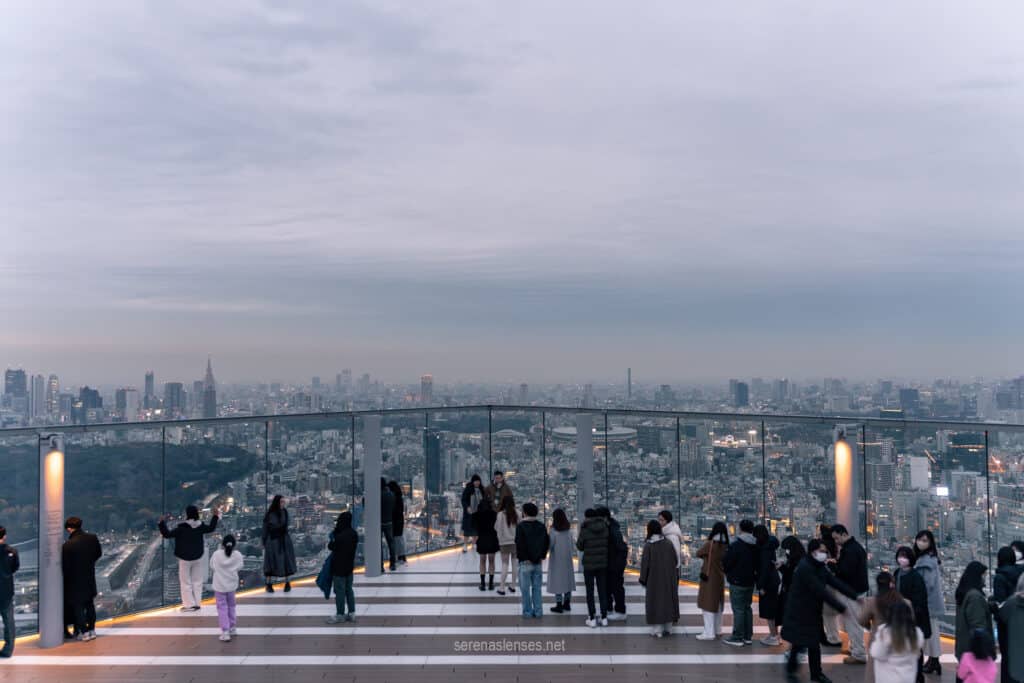
Shibuya Sky is included in this Tokyo attraction pass .
Late Afternoon: Shinjuku Gyoen National Garden

Shinjuku Gyoen National Garden is a large beautiful public park located near Shinjuku. It is popular among locals and tourists alike, providing a nice escape from the bustling streets of Tokyo. The park is especially popular during cherry blossom season in the spring.
The park is made up of many different gardens, such as the French Garden, English Garden and Japanese Garden. Therefore you will notice the different landscaping styles within the park. You can explore the expansive lawns, meandering pathways, and picturesque ponds that are home to vibrant koi fish.
One thing you can’t miss is the greenhouse, featuring tropical and subtropical plants from around the world.
Evening: Enjoy Nightlife in Shinjuku
Shinjuku is Tokyo’s bustling entertainment and business district. It is especially popular at night due to its wide array of restaurants, bars and interesting nightlife. There are also a number of shopping centers in Shinjuku and even the station itself has so many stores (it is also super big and you probably will get lost in there like I did).
Some of the most famous nightlife areas in Shinjuku include:
- Shinjuku Kabukicho : often referred to as Tokyo’s red-light district, is known for its neon lights, lively bars, and a plethora of adult entertainment options including host/ hostess clubs and karaoke bars
- Golden Gai : maze-like network of 6 narrow alleys lined with tiny bars, each with its unique theme and décor. There are over 200 bars in Golden Gai so you will definitely find something you like.
- Omoide Yokocho (Memory Lane) : otherwise known as Piss Alley, is another famous alley known for small izakayas. You will find skewers in these small izakayas as well as alcoholic drinks.
- Ryu no Miyako Inshokugai : a very interesting food court. Commonly known as bad and expensive food but cool vibes and photo opportunities. Pop in to take a look but don’t eat anything there.

You can always do a food tour in Golden Gai or a night foodie tour in Shinjuku if you don’t know where to go eat and drink. These tours are usually led by a local showing you a few famous places to eat and drink since you might not be able to go to the really local places without knowing Japanese.
If you want a free observation deck, then head over to the Tokyo Metropolitan Government Building . You will see the entire cityscape from the observatory at no cost at all.
People say that on a clear day you can see as far as Mt. Fuji. Well I’ve been twice and I have never seen Mt. Fuji because it was always cloudy. There is a South and North observatory and the observatory is open till 10pm at night. You can see the hours from the official website .
Day 2 in Tokyo: Eastern Tokyo – Tsukiji, Asakusa, Akihabara, Ginza, Tokyo Tower, Roppongi
After a full day exploring the west side of Tokyo, you will explore the east side of Tokyo on your second and last day in Tokyo.
There are a lot of things to cover on your 2nd day in Tokyo and don’t worry if you can’t do them all, the itinerary is very ambitious and I just want to let you know what’s there, and you can pick what things interest you the most.
Early Morning: Tsukiji Outer Market (avoid Wednesday & Sundays)
Tsukiji Outer Market is a famous seafood market in Tokyo. It used to be famous for its early morning tuna auctions but in 2018 the inner market (where the auctions happen) moved to Toyosu Market and what’s left now is the outer market.

Since you have a lot to see on your last day of this 2 day Tokyo itinerary, I highly suggest you come to Tsukiji no later than 8am. Most stalls are open by 8 (some are open at 6 and have long lines by 6:30am)! So it’s never too early to visit Tsukiji Outer Market.

Tsukiji Outer Market is a cool food market; you will find over 400 stalls and restaurants there. You can get raw seafood of course but the main appeal for most people is to get food like sushi, skewers, mochi, sea urchin bun, etc.
If you are overwhelmed by all the choices you can do this food and drinking tour in Tsukiji to try the best places. This tour tells you the history of Tsukiji Market and takes you to some really local spots that you may not have found by yourself.
Be sure to visit Tsukiji in the morning as it closes around 2pm. Avoid Wednesday and Sundays.
Morning: Sensoji and Asakusa
After Tsukiji, take the Asakusa Line to Asakusa station to visit Sensoji, Tokyo’s oldest and most revered Buddhist temple.

The temple’s history traces back to the 7th century, and its iconic Thunder Gate (Kaminarimon) serves as a grand entrance, leading to Nakamise-dori street.
You will find this pedestrian street festively decorated and lined with souvenir shops and Japanese confectionery shops. You can find all sorts of Japanese street food and snacks here (but be sure to only eat in the designated areas as it is considered rude to walk and eat).
Pro Tip : the best view of Nakamise-dori and Sensoji is from the Asakusa Culture Tourist Information Center, which opens from 9am to 8pm.

If you are visiting Tokyo during Sanja Matsuri in May, the Asakusa area near Sensoji will be extra crowded, with traditional performances and ceremonies. This festival lasts for 3 days.
Besides Sensoji and Nakamise-dori, there are a few other shopping streets in Asakusa, such as Nishi-Sando shopping street , Shin-Nakamise shopping street and Kappabashi Dougu Street , where you will find kitchen supplies and knives.

If you are visiting Tokyo in the spring, be sure to stop by Smmida Park to enjoy some cherry blossom. You can also easily see the Asahi Corporate building and Tokyo Skytree from this park, which is right by the river.
While in Asakusa, a cute coffee shop you can check out is HATCOFFEE , known for their 3D foam art.
View this post on Instagram A post shared by HATCOFFEE 〜浅草・蔵前のラテアートカフェ〜 (@hat_coffee)
Early Afternoon: Akihabara
Assuming you ate an early lunch in Asakusa, your next stop is Akihabara, the quirky electronic and gaming district of Tokyo.
Akihabara is heaven for those who loves anime, manga, or gaming. In Akihabara you will find numerous manga bookstores, anime and video game shops that also sell figurines and collectibles in places like Mandarake Complex , Super Potato and Animate Akihabara .
If you are in the market for electronics (or any electronic gadgets), you will love the multi-story electronic store Yodobashi Akiba , where you will find cameras, computers, gadgets, games (and gaming system), appliances, and some toys. There is also a foodcourt on the top floor.
Lastly, Akihabara is also known for its maid cafes , where young waitresses dress up as maids from anime and talk to you in cutesy voices. You can eat in these cafes and chat with the waitresses (if you speak Japanese since their English is not good). When I visited before, photos with the waitresses were not allowed at the place I went to, but I think at some other maid cafes you can probably take photos with them.
Afternoon: Ginza
You can make a quick stop in Ginza, one of the fanciest neighborhoods in Tokyo. Known for its high end shopping centers, boutique stores and luxury hotels, Ginza is heaven for those who want to go designer shopping.
I personally find Ginza a bit too “sterile” and manicured, but there are a few things I would recommend in Ginza, such as a visit to the Kabuki Theater , the beautiful Art Aquarium Museum (you don’t need to like fish to appreciate it), and of course the popular Le Cafe V (LV Cafe).
If you are a Ghibli fan, then walk over to the NTV Tower building to see the giant Ghibli clock .
Art Aquarium Museum is included in this Tokyo attraction pass .
Late Afternoon: teamLabs (PLANETS or Borderless)

TeamLabs are digital interactive art exhibits in Tokyo. There are actually two teamLabs, one called PLANETS in Odaiba and another called Borderless (opening early Feb 2024) near Tokyo Tower. Both are about 25 to 30 minutes from Ginza.
Pick one of the teamLabs to visit and be sure to wear the appropriate clothes. For example, TeamLabs PLANETS has knee high water, so you will need to go barefoot inside and there are rooms with glasses on the floor, so you don’t want to wear a mini skirt.
If you decide to visit teamLabs Planets be sure to stop by the Unicorn Gundam Statue in Odaiba and walk around the Odaiba Marine Park (where you will see a mini Statue of Liberty).
If you visit teamLabs Borderless , you can also visit the new free observatory inside Azabudai Hills before walking over to Tokyo Tower . You can actually go up to the main deck or pay more for a tour of the top deck of Tokyo Tower. We only went up to the main deck and I already thought that was pretty cool.
Regardless of which teamLabs you choose, you will definitely have a good time, so it really just depends on your personal preference.
While around Tokyo Tower, you can grab a drink at Sky Lounge Stellar Garden for a perfect view of Tokyo Tower.
Both TeamLabs are included in this Tokyo Attraction Pass .
Evening: Roppongi
Roppongi is super close to teamLabs Borderless and it is an area known for its nightlife and foreigner-friendly bars and restaurants. Around the Christmas holiday time in December, the streets of Roppongi is also lit up, making it extra festive.
If you are not sick of observation decks yet, you can go up Tokyo City View for a sweeping view of Tokyo and of the Tokyo Tower, but most likely you will be hitting the bars and even clubs in Roppongi. The first time I went clubbing in Tokyo was in Roppongi and the experience was interesting.
In Roppongi, especially Roppongi Hills area, you will find a number of western restaurants, like burgers, Italian, steakhouses, French, etc.
Tokyo City View is included in this Tokyo attraction pass .
Other Things to Do in Tokyo with 2 Days
The sample 2 day Tokyo itinerary above should give you some ideas on how to spend 2 days in Tokyo, especially if it’s your first time in Tokyo. But there are a number of things that I left out on this itinerary that you could potentially do:

- Street Go Kart : there is nothing more unique than driving a Go Kart on the streets of Tokyo while dressed up as a superhero. I didn’t add this to the itinerary but you should certainly consider doing this. Depending on the course you choose, you can drive through the famous Shibuya Scramble Crossing with your Go Kart!
- Ueno Park : located very close to Asakusa, Ueno Park is a large public park that’s renowned for its picturesque cherry blossoms in spring. Ueno park encompasses diverse attractions, including museums, temples, scenic ponds and the Ueno Zoo.
- Ueno : aside from Ueno Park, you can also explore Ueno. Ameyoko Shopping District is a fun area to check out for street vendors. There you will find a lot of food stalls, restaurants, clothes, suitcases, souvenirs, gadgets and shoes.
- Tokyo Imperial Palace : the residence of Japanese royal family, the Imperial Palace is a large complex with imperial residences, offices, historical buildings and gardens surrounded by a moat. The public can visit the palace and the East Gardens. You can take a timed free tour ( booking online or in person).
- Nezu Shrine : located north of University of Tokyo, Nezu Shrine is a shinto shrine famous for its red torri gates and seasonal flower blooms. If you cannot make it to Kyoto to see Fushimi Inari, you can experience walking through a tunnel of torii gates here at Nezu Shrine.
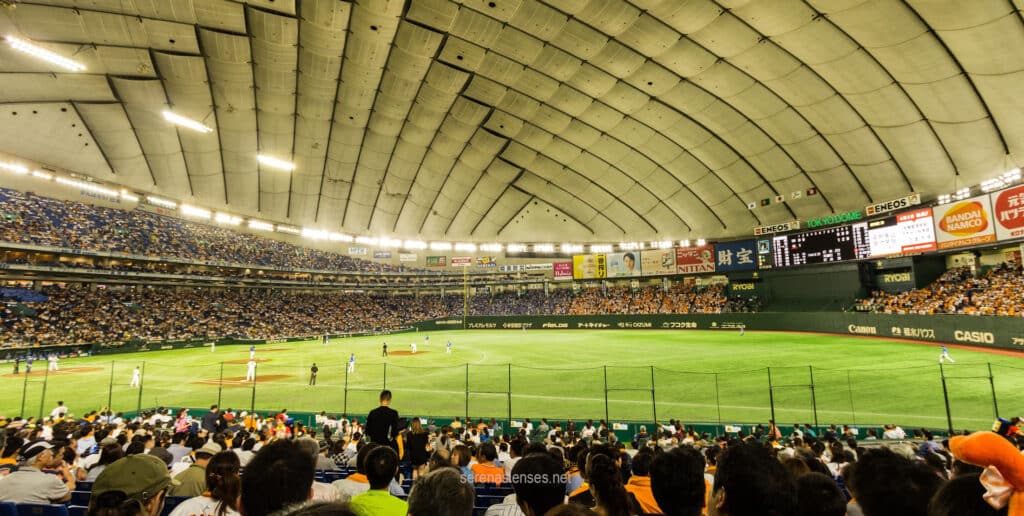
- Watch a baseball game : baseball is THE sports to watch in Japan and you have the perfect opportunity to watch a Giants baseball game at Tokyo Dome if you visit between mid March and mid September.

- Visit a museum : Tokyo has no shortage of museums. Some of the most famous museums in Tokyo include the National Art Center Tokyo, Mori Art Museum, okyo Metropolitan Art Museum, National Museum of Nature and Science, Fujiko Fujio Museum (if you like Doraemon) and Ghibli Museum.
- Tokyo Skytree: the tallest observatory in Tokyo is something not to be missed. It is across the river from Asakusa and some think Skytree is in fact the best observation deck in Tokyo. I didn’t add it to the itinerary since I mentioned a few other observation decks already. But if you like, get tickets online (this is also included in the Tokyo attraction pass ).
Is 2 Days Enough for Tokyo? Do I Need More Than 2 Days in Tokyo?
2 days is not enough to see Tokyo, especially if it’s your first time in Tokyo. Tokyo is a large city with so many things to do, see and eat. It is also very spread out so it takes time to travel between places.
As you can see from this 2 day Tokyo itinerary, you barely scratch the surface with just two days in Tokyo. Your days are completely packed (and even requires you to get up early), and you only get to spend 2-3 hours in each location (including meal time).
If you want to explore Tokyo at a comfortable pace, you will need at least 3 to 5 days. You can see my complete guide on how long is enough for Tokyo and see what you can see if you have 3 to 7 days in Tokyo.

What Airports to Fly into Tokyo
There are two major airports for Tokyo: Narita and Haneda.
Narita is a big international airport and located on the eastern side of Tokyo, so it is closer to places like Tokyo Station compared to Shinjuku on the west side. It takes between 60 to 90 minutes to different areas of Tokyo on public transportation ( train or Limousine bus ).
Haneda is the older of the two airports in Tokyo area but it is closer to Tokyo city center than Narita. It is about 15 miles (24km) from Shinjuku and it takes between 30 to 60 minutes to get into Tokyo city center. The best way to travel between Haneda and Tokyo city center is to take a limousine bus or train.
Ultimately both airports in Tokyo are convenient to get into city center, so just pick whichever airport is the cheapest for you!
Best Way to Get Around Tokyo
The best and the cheapest way to get around Tokyo is to take public transportation . However I understand that there will be instances when you need to take a taxi to go around Tokyo. In addition, you can also walk around Tokyo between adjacent neighborhoods (like from Harajuku to Shibuya).
Taking the train in Tokyo
Tokyo has an amazing network of public transportation system. There are numerous subway and train lines, and they are actually managed by different companies. You can pretty much get anywhere in (and outside) of Tokyo on public transportation.

The best way to pay for the train, subways and buses in Tokyo is to get an IC Card (Suica or Pasmo). There is a shortage of semiconductor, which limited the sales of new cards. But as a tourist, you can always get the Welcome Suica card (for 28 days) or a Pasmo Passport . Alternatively you can add these cards to your Apple Wallet.
You can navigate the train directions using Google Maps , Japan Transit Planner , or Japan Travel by Navitime.
Trains in Tokyo generally operates between 5am to midnight. If you miss the train, you will need to get a taxi (or book a cheap hotel).
If you know you are going to be using the train a lot, then consider getting a Tokyo subway pass for 48 hours.
Taking Taxis in Tokyo
You can try to hail down a taxi in Tokyo but that might not always be the easiest (since they are technically supposed to only pick you up in designated areas like a taxi stand).
An easier way to get a taxi is through Uber. You can use Uber in Tokyo but that will not get you a private car like you do in the US. Instead Uber will help to get a taxi for you, which is probably easier than you trying to hail one off the street.
Other apps to get Tokyo taxi include Go App and Didi . If you are staying at a hotel, you can always ask the hotel front desk to help you call a taxi.
Where to Stay in Tokyo
Anywhere close a metro station in Tokyo is convenient to stay, especially if you are near a Yamanote Line (山手線) that runs in a circle and passes by the major stations in Tokyo.
In particular people like to stay in areas such as Shinjuku, Shibuya , and Asakusa . I stayed in Asakusa twice and Shinjuku twice, Shibuya once and near Tokyo Station another time. If you have a train or bus to catch from Shinjuku Station or Tokyo Station, then spending the night there would be convenient. Otherwise all of the areas above are good to stay in.
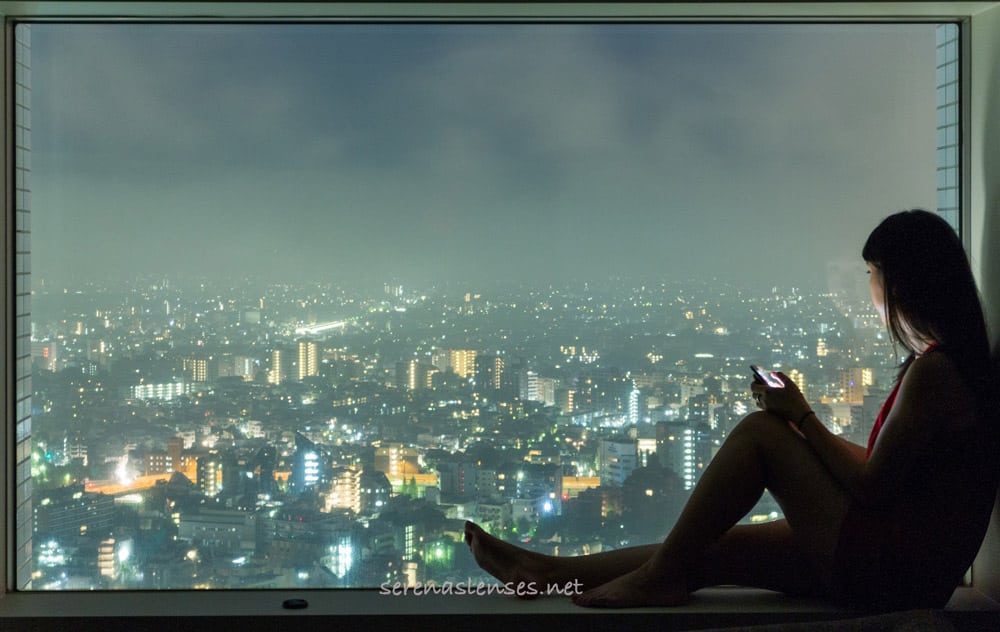
In Shinjuku I would recommend Keio Plaza Hotel Tokyo Premier Grand and Century Southern Tower . Both were convenient to access Shinjuku station and the night life in Shinjuku.
If you want an amazing view of Tokyo Tower, then you will have to stay at the Prince Park Tower or the luxurious Tokyo EDITION .
If you want something more unique and quirky, then check out this unique hotel in Asakusa (the corner room has a nice view of Skytree).
Best Japan Travel Booking Sites
If you found this post useful, please take a look at some of the best sites for booking hotels, tours and other activities in Japan.
The best hotel booking website for Japan are Agoda , Expedia and Booking.com or you can always book directly with the hotels. Best eSim for Japan <- we used this in Japan during the two most recent trips and they worked great Best tour booking site for Japan (you can of course book with official websites but many of them don’t take US or UK credit cards, and prices on this site is generally slightly cheaper) Best food review site for Japan Best Apps to check Japan train and bus schedules and routes : Google Maps, Japan Transit Planner or Japan Travel Best no-fee ATM card for Japan: Charles Schwab , Wise , Revolut Best travel insurance for Japan : this or this
If you do need medical help in Japan, always contact your travel insurance first and they can tell you which English speaking hospital to go in Tokyo.
Check Out My Other Japan Blogs
To help you plan your perfect trip to Japan, be sure to check out my other blogs on Japan below!
- 10 Day Japan Itinerary for First Time Visitors
- Tokyo Mario Kart
- Best Tokyo attraction pass to save money
- How many days in Tokyo: Complete Tokyo Itinerary
- Tokyo to Kamakura Day Trip Guide
- 2 Day Kyoto itinerary
- One Day Osaka Itinerary
- Best Hotel near Mt. Fuji
- Arashiyama Travel Guide
- How to get to the Kyoto Bamboo Forest
- Osaka to Miyajima and Hiroshima Day Trip Guide
- One week Hokkaido summer itinerary
Like this post? Pin this 2 day Tokyo itinerary to Pinterest!

Read my privacy policy .
- Kale by LyraThemes.com.

Tokyo 2 Day Itinerary to See Best Places in Tokyo – DETAILED Guide
Categories Asia , Japan
Tokyo is one of the most unique and exciting cities in the world . If you’re planning to visit Tokyo or do a weekend trip to Japan, narrowing everything down to an itinerary can be tricky – there is so much to see and do interesting things in Tokyo .
The contrast in Tokyo (tall skyscrapers and neon signs next to temples and shrines) shows exactly what Japan is about and exploring this city never gets old.
While you can barely scratch the surface of a city this big in just two days, there are ways to see some of the best places to visit in Tokyo and top things to do in Tokyo . Spending 2 days in Tokyo is a great way to get an awesome first impression of the city, allowing you to spend more time exploring other places in Japan.
If you’re not quite sure what to do in Tokyo and what to see in Tokyo in 2 days , we’ve put together this 2 day Tokyo itinerary to help you out.
2 Day Tokyo Itinerary
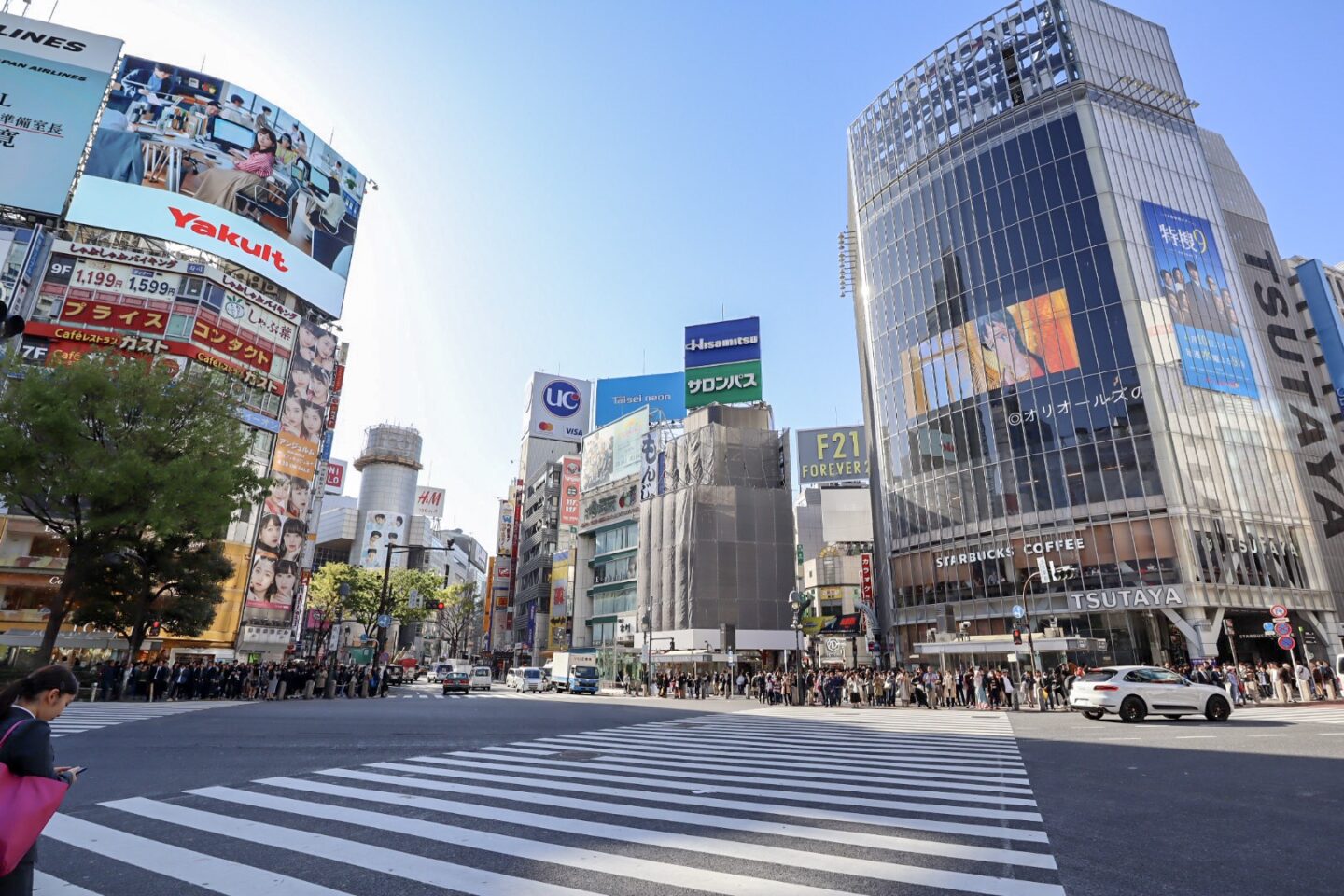
This 2 day Tokyo itinerary will show you an easy way to see most of the popular sights in Tokyo in just two days. This is what we recommend you to check out:
This is a guest post by Nele from The Navigatio . Nele loves Japan, it’s her favourite destination and her blog is dedicated to helping you get the best and most out of your trip to Japan!
Day 1 in Tokyo
When you only have two days in Tokyo, be prepared to do a lot of sightseeing and places to visit in Tokyo ! Tokyo has so much to offer, and on our first day, we’re exploring the Harajuku and Shibuya Districts .
Visit Meiji Shrine in Yoyogi Park
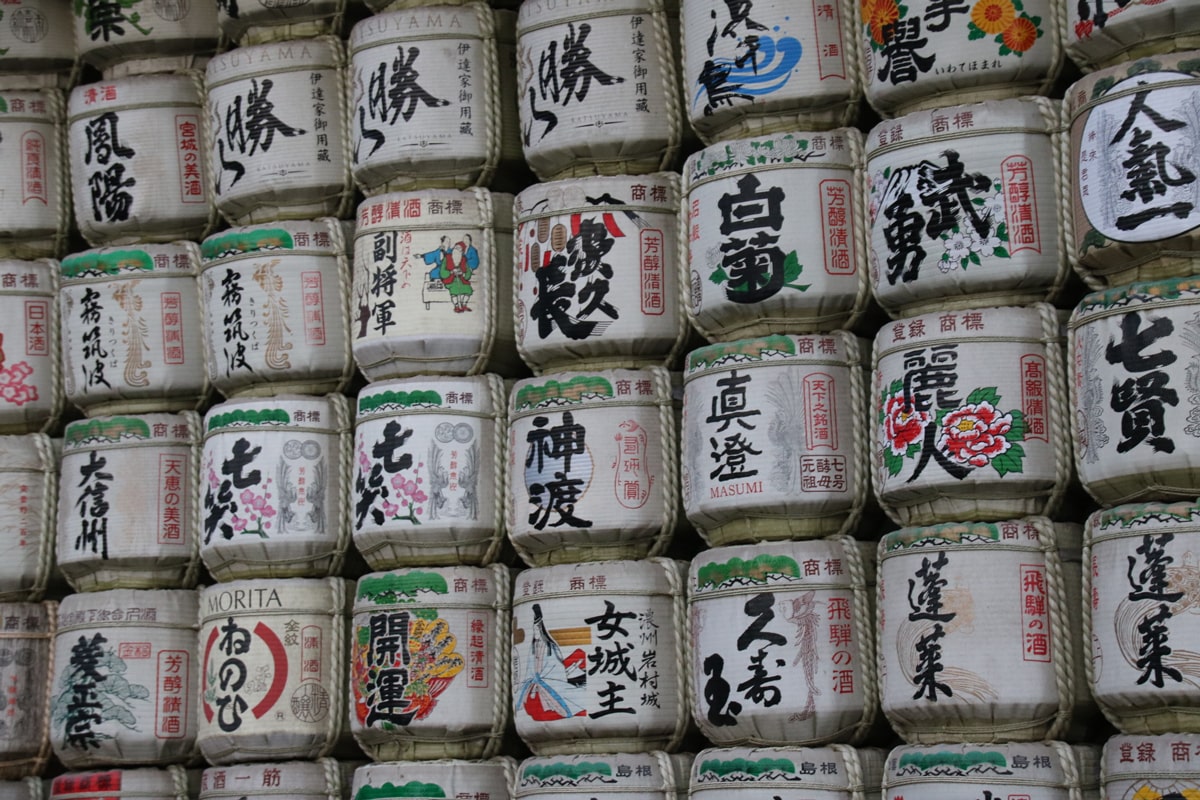
Our many of the first Tokyo attractions on this itinerary is one of the most popular shrines in Tokyo , the Meiji Shrine. The shrine is dedicated to Emperor Meiji and his wife. To get here, take the metro to Harajuku Station. From there, the entrance to Meiji Shrine (in Yoyogi Park) is only a few minutes on foot.
A giant wooden torii gate welcomes you – this is where you enter the grounds of the shrine. Since it’s located in one of the biggest parks in Tokyo , you almost forget that you’re in one of the biggest and busiest cities on Earth . There are nearly 100,000 trees that make up the forest surrounding the shrine, making it perfect for a lovely stroll towards the inner shrine.
Walking towards the inner shrine, you can visit smaller Japanese gardens and the famous sake barrel wall. It is made up of more than 200 traditional sake barrels !
At the inner shrine, you can find a wall of Ema plaques. These are wooden plaques that people can buy at the shrine – people write down their wishes and prayers and hang them with the others. It makes for a lovely sight and a great tradition to partake in when visiting.
Entree to Meiji Shrine is completely free, and it’s open from dusk till dawn.
Explore Harajuku
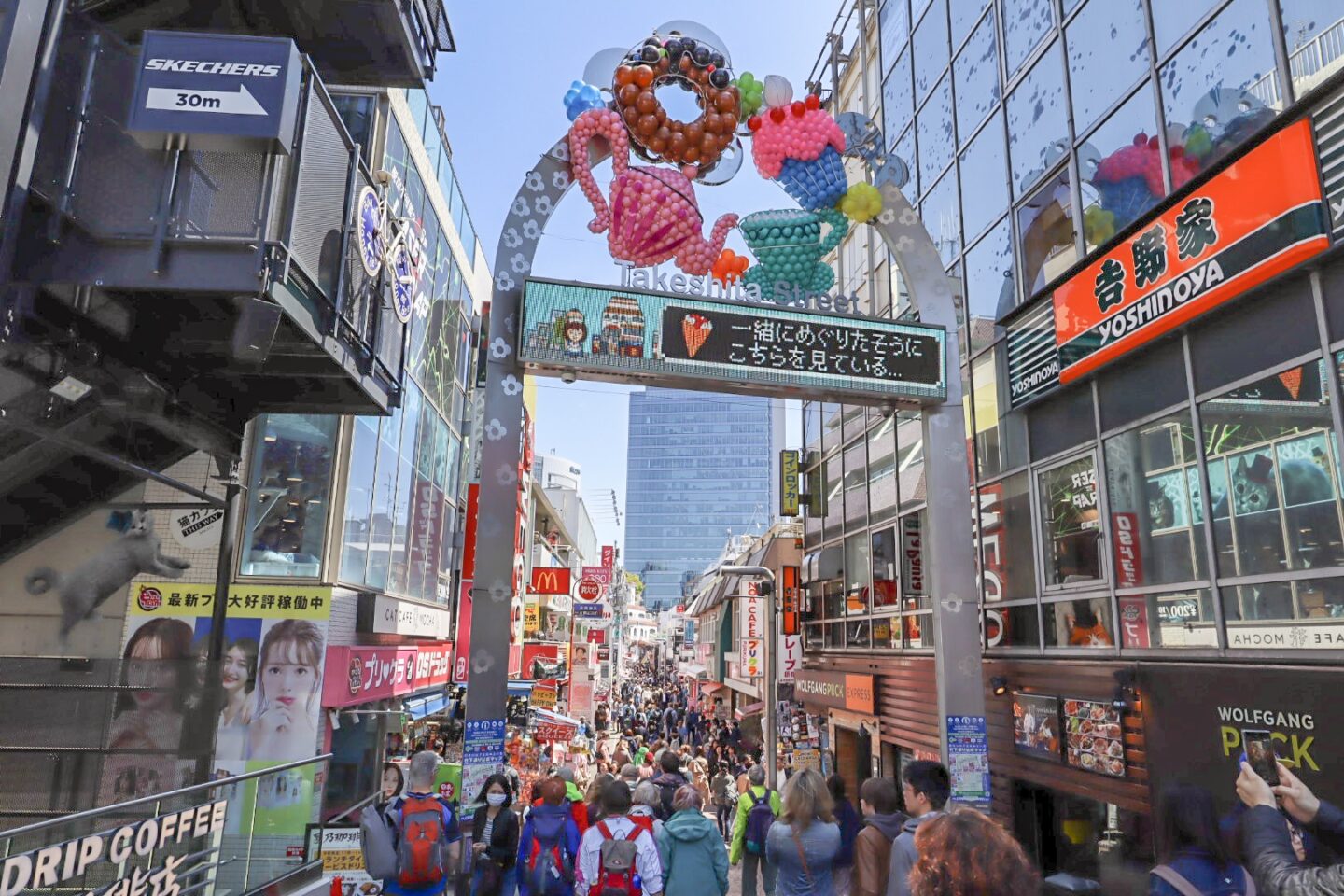
Next up is the popular Harajuku District which is one of the must-do things in Tokyo . Leaving the grounds of Meiji Shrine, you can walk over to Harajuku Station again. Directly opposite the station, you’ll find Takeshita Street – one of the most famous parts of Harajuku .
Harajuku is known for its vibrant street fashion which shares its name. You can find tons of boutiques here selling outfits in Harajuku style (from gothic and cosplay to decora kei and Harajuku punk) – plus, you’ll probably see a few people dressed up in these eye-catching outfits themselves.
After walking through Takeshita Street, you can continue exploring Harajuku. There are some great shops to check out, including some vintage Kimono stores. Don’t forget to try some popular street foods, including the Harajuku Crepes.
Omotesando is another great spot to check out when visiting Harajuku . This shopping street is filled with luxury brands and high-end shops. If you’re visiting during December, you can enjoy the Winter Illuminations, where the trees are lit up.
Walk across Shibuya Crossing
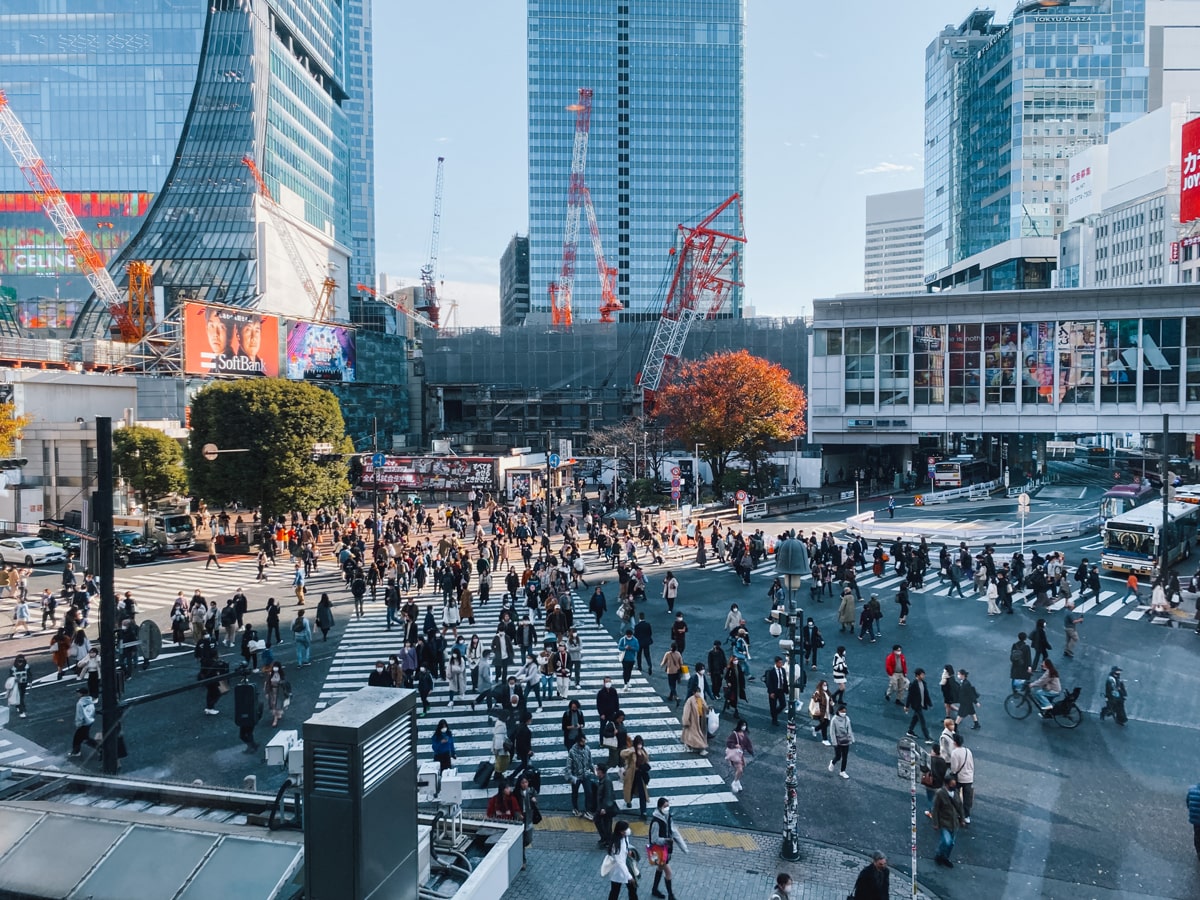
The Shibuya District is located next to Harajuku and there are many things to do in Shibuya . The metro only takes a few minutes, but you can also walk over (which takes 15-20 minutes).
One of Shibuya’s most famous spots is Shibuya Crossing (or Shibuya Scramble) . This is the busiest crossing in the world , with up to 3,000 people crossing at once. When visiting Tokyo, walking across the Shibuya Crossing yourself is a must.
There are some great viewing points nearby too, where you can sit and watch people cross. The Starbucks across the street is one of the best spots , as you can order your drink downstairs and walk up to the first floor for a perfect view of Shibuya Crossing . Other great places include L’Occitane Cafe and Cé La Vi.
And don’t forget to stop by Hachiko’s statue when leaving Shibuya Station! Hachiko, the dog, existed and waited at Shibuya Station for his owner to return from work every day. Sadly, his owner passed away, but Hachiko kept waiting for him. This faithful dog is now the mascot of Shibuya.
Admire the views at Shibuya Sky
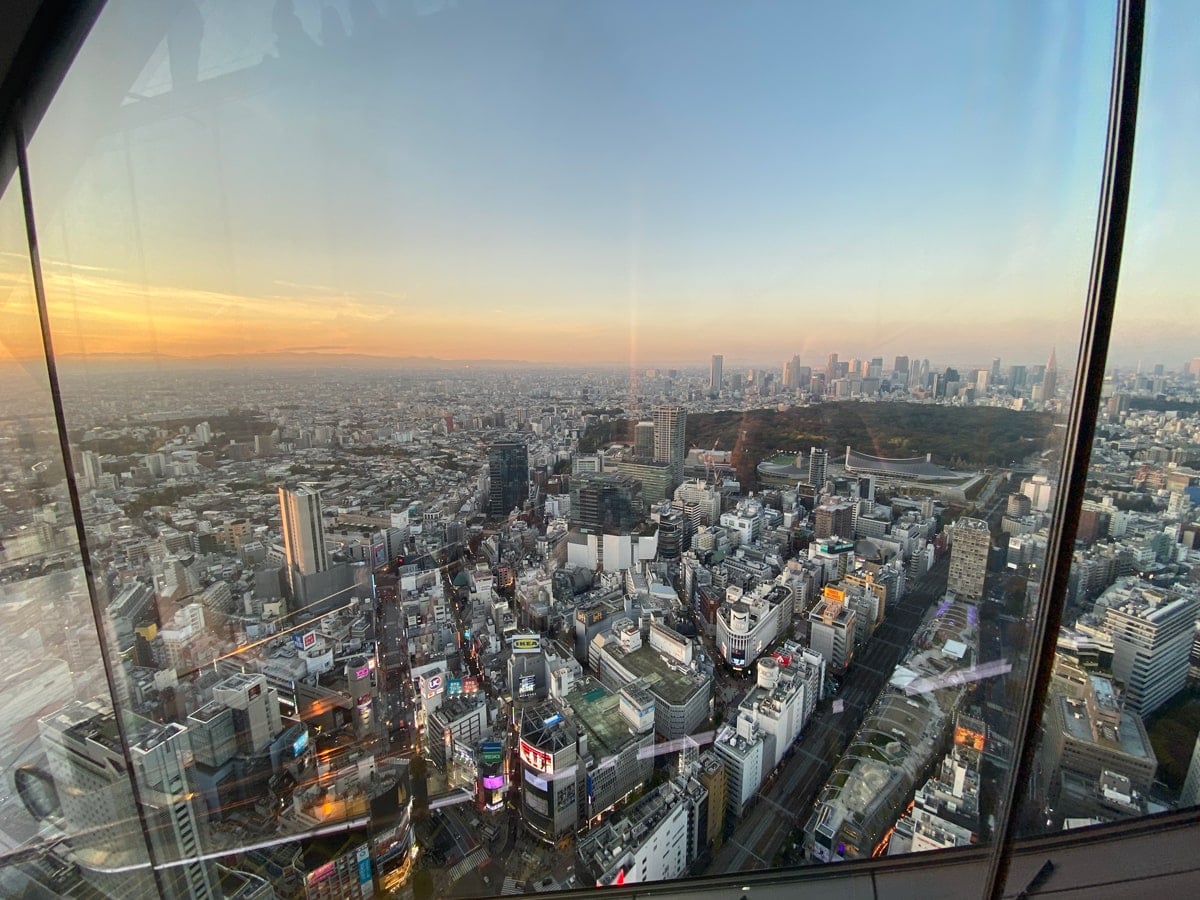
Near Shibuya Crossing, you can find Shibuya Sky which is a fun thing to do in Tokyo . This 360-degree open-air observation deck opened a few years ago and gives you one of the best views in the whole of Tokyo.
It’s best to pre-book tickets , as they’re usually sold out on the day. As you have to buy a timed entree ticket, you want to make sure you time this well (once you’re up there, you can stay as long as you want!).
Ideally, try to get a ticket right before sunset. Watching the sunset over Tokyo is incredible – especially on a clear day, as you’ll see Mount Fuji from Shibuya Sky!
Sing your favourite song at karaoke
Once you’re back on the ground after enjoying Tokyo from above, it’s time to grab some dinner and enjoy Shibuya’s nightlife as there can be many fun things to do in Shibuya .
You can opt for one of the many food tours available in this area ( pre-booking is essential! ), or you can enjoy one of the traditional izakayas in the area.
Afterwards, you can check out one of the karaoke bars . Karaoke is huge in Japan, but it’s very different from what you may be used to. Rather than singing your favourite songs in front of a crowd, you get to rent your own karaoke booth with friends. Here, you can pick your songs and order food and drinks at the booth! It’s a great way to end your first day in Tokyo .
JAPAN SIM CARD
Stay connected in Japan by ordering a sim card in advance and picking it up at the airport you land in. There is a huge range of sim card options in Japan which you can see and buy here !
If you prefer eSIMs these days, here’s a great option for an eSIM Mobile Data Plan in Japan so you’re connected as soon as you land without the hassle of swapping sims and waiting for a connection.
JAPAN RAIL PASS
I’m sure you know, or have heard, that the Japan Rail Pass is the best value for getting around Japan!
There are many providers for the JR Pass but this is the official provider and the one I used.
You need to get your JR Pass ordered BEFORE your trip and sent to your home address, so look into buying one here !
Day 2 in Tokyo
On our second day in Tokyo , we’ll move to the other side of the city to see the popular attractions in Tokyo. We’ll check out Asakusa, Ueno and the famous Imperial Palace for many fun things to do in Tokyo .
Visit Sensoji Temple
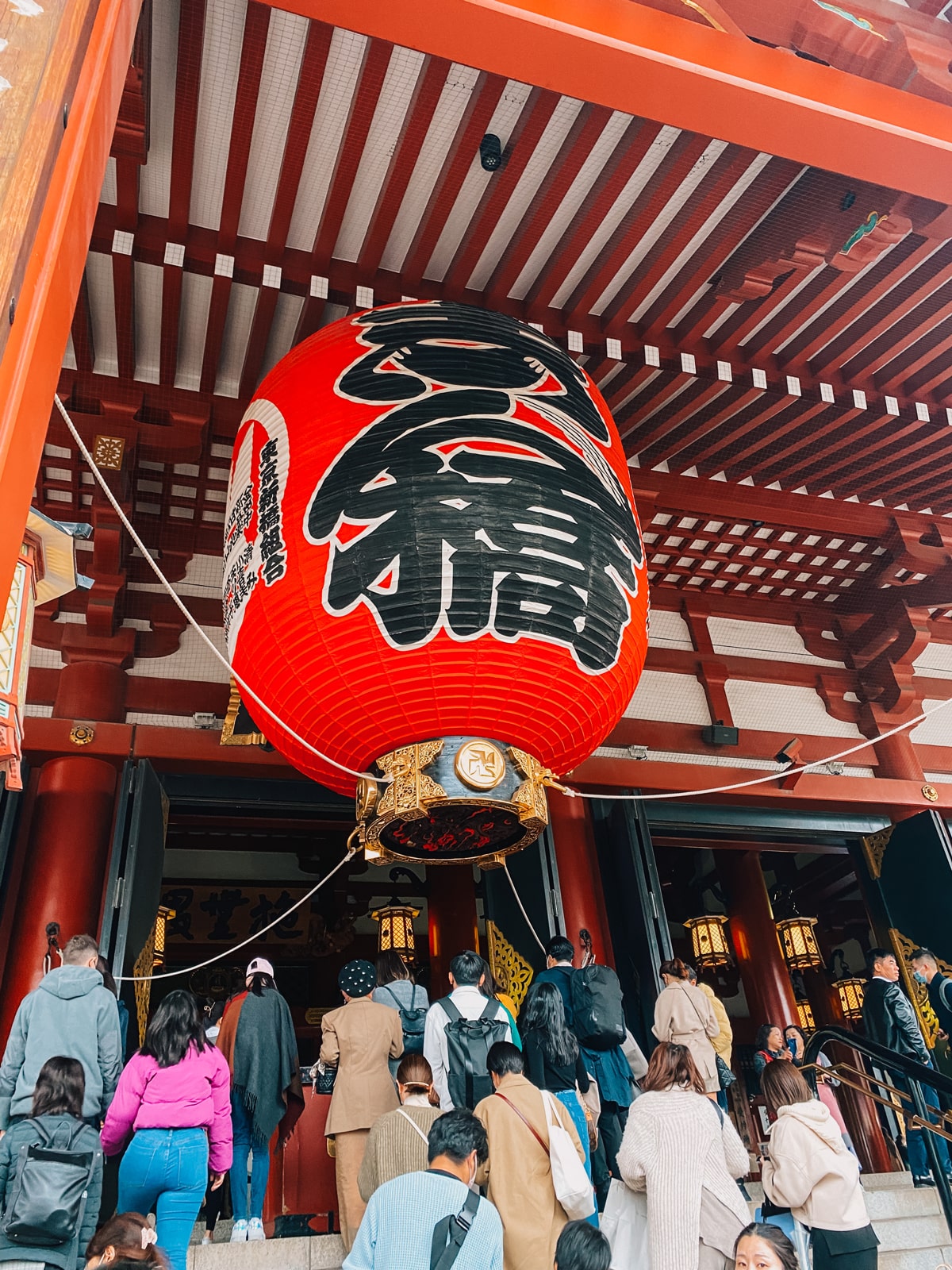
We’ll take the metro to Asakusa on our second day in Tokyo . This part of Tokyo has a much more traditional atmosphere compared to modern Shibuya and has many Tokyo attractions for families. The main sight here is Senso-ji Temple – the oldest temple in Tokyo , dating back to the 7th century.
Leading up to the temple, you can walk through Nakamise. This 200-meter-long street is filled with local stalls selling street food, souvenirs and more.
After walking through it, you can enter the main hall of Sensoji. At this temple, you can also partake in a traditional form of fortune-telling called o-mikuji. It can be done at many temples in Japan, and Senso-ji is one of them.
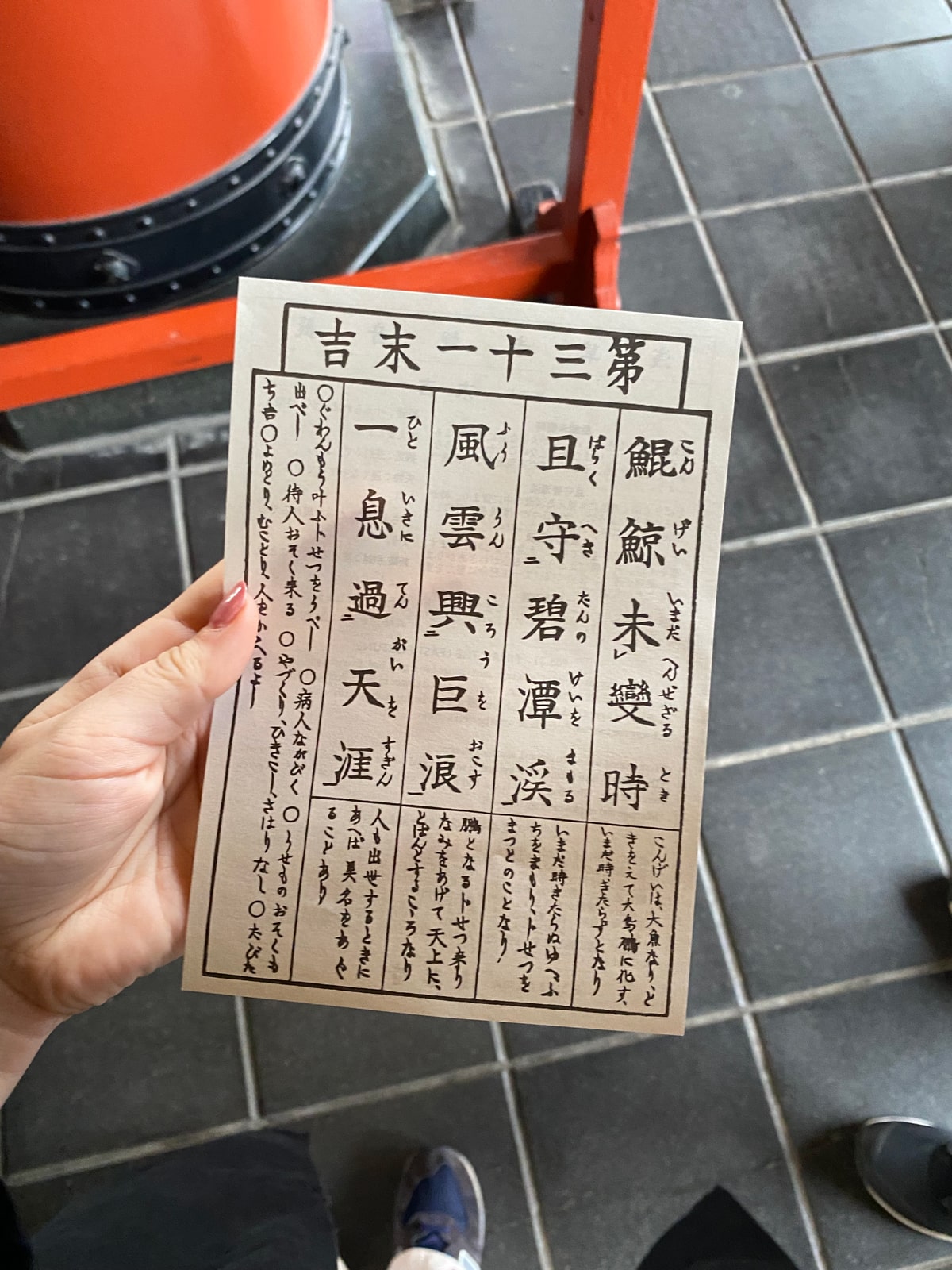
You pay around 100 yen to shake a wooden box until a stick falls out. The number on the stick corresponds with a fortune – anything from “very fortunate” to “a great curse” . If you happen to get a bad fortune, you can tie the paper to one of the poles in the temple. This way, you leave your bad fortune behind.
Apart from the main hall, there are smaller shrines to admire in this area too, along with a five-story pagoda.
Explore Ueno

If you’re visiting in late March or early April , Ueno Park is one of the best places to enjoy the cherry blossoms in Tokyo and has the top tourist attractions in Tokyo. But even if you’re visiting outside of cherry blossom season, Ueno has a lot of fun things to offer.
Related Post: The BEST Place To See Cherry Blossoms In Japan!
Ueno Park is also home to Ueno Zoo , some of the best museums in Tokyo (including the Tokyo National Museum and the Tokyo Metropolitan Art Museum), as well as the beautiful Ueno Toshogu.
Before leaving the area, stop by Ueno Ameyoko, a lively market street featuring countless street vendors, restaurants, cafes and bars. It’s a great place to grab some food before heading to the next part of this Tokyo itinerary.
Visit the Imperial Palace
The capital of Japan is decided depending on where the Emperor lives. Until 1867, the Emperor lived in Kyoto which made this city Japan’s capital for many years.
Related Post: Kyoto 1 Day Itinerary For Things To See In Kyoto In One Day!
However, since 1868, the Emperor has been based in Tokyo , making it the current capital city. Built on the grounds of Edo Castle, the Imperial Palace is an unmissable landmark to visit in Tokyo . Not all parts of the palace are accessible to visitors, but you can still see a large part of what it has got to offer.
It’s recommended to get a guided tour to visit the palace grounds. Some of the inner grounds of the palace cannot be visited without a tour – but it’s also a great opportunity to learn more about the history of the palace and Japan as a whole.
Enjoy a private tour tailored to your interests in Tokyo. Pick from top sights like the Imperial Palace, Shinjuku Gyoen, and Shibuya Crossing. Perfect for first-timers or returning visitors.
You can also visit the Imperial Palace East Gardens , a stunning Japanese garden containing the remains of the castle tower.
Enjoy Shinjuku in the evening

In the evening, it’s time to head to Shinjuku and explore the best things to do in Shinjuku . This lively part of Tokyo is one of the best places to visit in the evening – with great nightlife, fantastic restaurants and tons of arcades.
Make sure to stop by the Tokyo Metropolitan Government Building . At 202 meters in height, the observation decks can be visited free of charge. If you’re lucky enough to get good weather, you can even see Mount Fuji in the distance – along with popular sights like Meiji Shrine, Tokyo Tower and Tokyo Skytree as these are popular places in Tokyo.
Another highlight in Shinjuku is Omoide Yokocho . This narrow alleyway is filled with izakayas, selling sake, yakitori and other delicious dishes. Even if you don’t want to stop for dinner here, simply walking through it makes for a great experience. The alleyway is usually covered in seasonal decorations.
Another amazing spot for bar hopping and delicious ramen is Shinjuku’s Golden Gai . It has over 200 small bars and restaurants , so you’ll be sure to find one that will suit you. It’s also possible to book one of the many food tours available in the Golden Gai , allowing you to find the very best spots with the help of a local guide.
Book this tour and explore Shinjuku’s Golden Gai, a historic Tokyo hub with over 200 compact pubs, reflecting mid-20th-century ambience and renowned as the city’s nightlife spot.
How to get around Tokyo?
Tokyo’s public transport may be a little overwhelming to start with, but it’s very easy to use. The best way to find out how to get from one point to another is by using Google Maps . In Japan, Google Maps shows you exactly what platform you have to be at, along with the specific time and what train you need to use. It makes getting around Tokyo by train a breeze.
To pay for public transport in Tokyo , you can use the Suica card . This pre-paid transport card lets you tap in and out at stations, taking off the correct fee, so you don’t have to pay for individual tickets every time you want to use the metro. You can top up this card at any station.
If you have an iPhone, you can add the Suica card to your Apple Wallet without having to download the app or buy the physical card. You can then top it up on your phone rather than having to use cash at the stations. Simply tap your phone at the gates to use it, and you’re good to go.
Is 2 Days in Tokyo Enough?
While you can see many popular spots in Tokyo in two days (as you can see in the itinerary above), I’d recommend spending more time here. Depending on your full Japan itinerary , it’s not always possible, but Tokyo has so much to offer! You could easily spend a couple of weeks there and not get bored – I’d recommend going to Tokyo for at least four days, if possible.

Conclusion of 2 days Tokyo Itinerary
That concludes this 2 days Tokyo itinerary. Hopefully, it has given you a good first impression of this incredible city and left you wanting more for your next visit.
Tokyo is so big that it’s impossible to see everything in just two days, but it’ll allow you to dip your toes in.
I hope this 2 days in Tokyo itinerary helped you with the best places to visit in Tokyo and the best things to do in Tokyo.
If you liked this please share it 🙂.
- Click to share on Facebook (Opens in new window)
- Click to share on Twitter (Opens in new window)
- Click to share on Pinterest (Opens in new window)
- Click to email a link to a friend (Opens in new window)
By using this form you agree with the storage and handling of your data by this website. *
Monday 29th of July 2024
Thank so much for this amazing info tour!

Tokyo 2 day itinerary: What to see in Tokyo in 2 days
Tokyo is definitely a land of contrasts. There is so much to see and do, from ancient temples to modern skyscrapers! It’s hard to pick out what to do, so we have put together a complete Tokyo 2 day itinerary which would be perfect for first time visitors to get a good look and feel of the miracle that is Tokyo. Relax, and enjoy our article about what to see in Tokyo in 2 days!
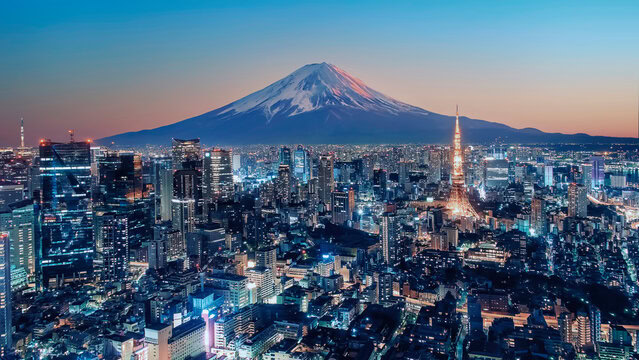
At a quick glance: 3 must-do’s in Tokyo
- Explore Shinjuku Bars
- Walk around Tokyo Old Quarter
- Experience Kimono Dressing
This post may contain affiliate links, which means that if you purchase anything via them, we might earn a small commission – at no extra cost to you. Check our affiliate disclaimer for more information.
Tokyo 2 day itinerary
By the time you have arrived in Tokyo, you’ll have noticed that Japan is a land full of contrasts. And guess what – Tokyo will still surprise you with how much this holds. And hell, there are so many things to do in Tokyo.
Hip and trendy, traditional and down-to-earth, busy and loud and yet peaceful and calm… no matter what you’re looking for, there’s a good chance Tokyo has it.
So what to see in Tokyo in 2 days? Let’s get to it!
Day 1: Tsukiji Fish Market, Odaiba, Shinjuku, Shibuya
Morning: tsukiji fish market.
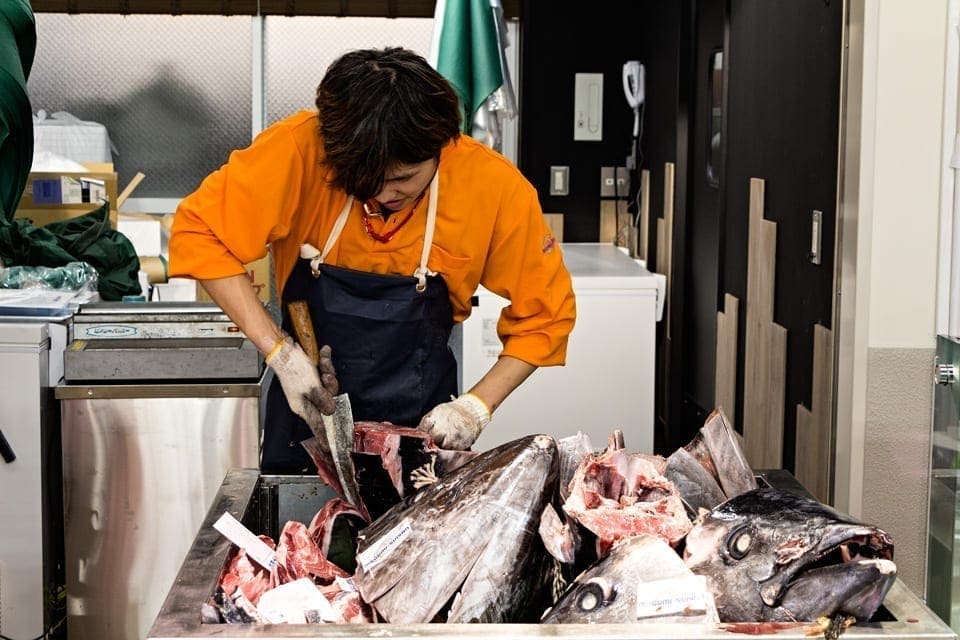
Start the first day of your 2 days in Tokyo by visiting Tsukiji Fish Market (now known as Tsukiji Outer Market).
A note: a part of the Tsukiji fish market has been replaced by Toyosu Fish market. Check here for more info.
With many restaurants and small shops, this is a fun place to walk around and savour the fishy experiences 😊 From the delicious huge tunas to the extremely poisonous Japanese delicacy of fugu (blowfish), this place probably has all the seafood imaginable, and frankly, maybe even some that are beyond imagination.
Did you know that fugu chefs are strictly licensed and take at least two years to learn how to turn the deadly fish into an edible delicacy? You might also remember a Simpsons episode: One Fish, Two Fish, Blowfish, Blue Fish, where Homer ate a fugu fish and almost died!
Tsukiji is also the right place to watch the chefs as they prepare the freshest sushi in the world and then enjoy it in one of the many small restaurants hidden in the side streets of the market.
Tsukiji Station on the Hibiya Line is the most convenient for getting to the Tsukiji Fish market. However, if your hotel is in the Kyobashi area or Ginza, it is also possible to walk there in about 20 – 30 minutes.
Afternoon: Odaiba
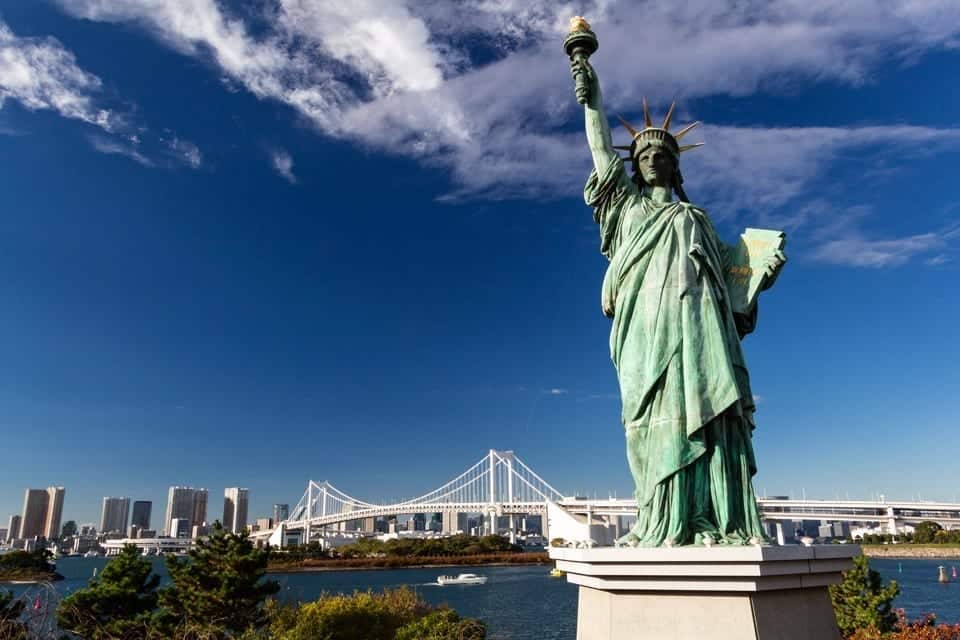
Having enjoyed the sushi, take an automatic elevated train to the nearby Odaiba – a futuristic part of Tokyo built on a man-made island and full of shopping, dining and entertainment options.
Why not take a selfie at the replica of the Statue of Liberty with Tokyo’s skyline in the background before heading to the Shinjuku district?
You can even spend a whole day in Odaiba entertainment centres if your time in Japan allows it!
We roamed here in the early afternoon of our first day in Tokyo. It was interesting, to say the least.
Odaiba requires a trip by a private Yurikamome driverless train from Shimbashi station. Get off at Daiba. This train requires a ticket, even if you have a day pass for the subway, as it is a private train.
Afternoon: Shinjuku
After Odaiba, make your way – with the driverless train! – to Shinjuku for some entertainment. Think skyscrapers, the world’s busiest railway station and plenty of shopping and entertainment options – that’s Shinjuku.
There are even bars, if that’s your scene – the most popular bars are in Shinjuku .
And as we promised some contrast, nearby is a vast Yoyogi park with the splendid Meiji Jingu shrine or the Shinjuku Gyoen National Garden. Unlucky for us, it started raining when we came back from Odaiba. But luckily, there are many nice little – and the main thing, warm! – teahouses in Shinjuku.
After having enjoyed Shinjuku, head on to Shibuya for some more contrast 😊.
Shinjuku station is served by 3 different metro lines. The circular JR Yamanote Line is the best place to get off and then explore the area on foot. For Meiji-Jingu Shrine and Yoyogi Park, you may walk -it’s about a 20-minute walk from both Shinjuku and Shibuya. If you prefer, you may also take the JR Yamanote Line and get off at Harajuku station.
Evening: Shibuya
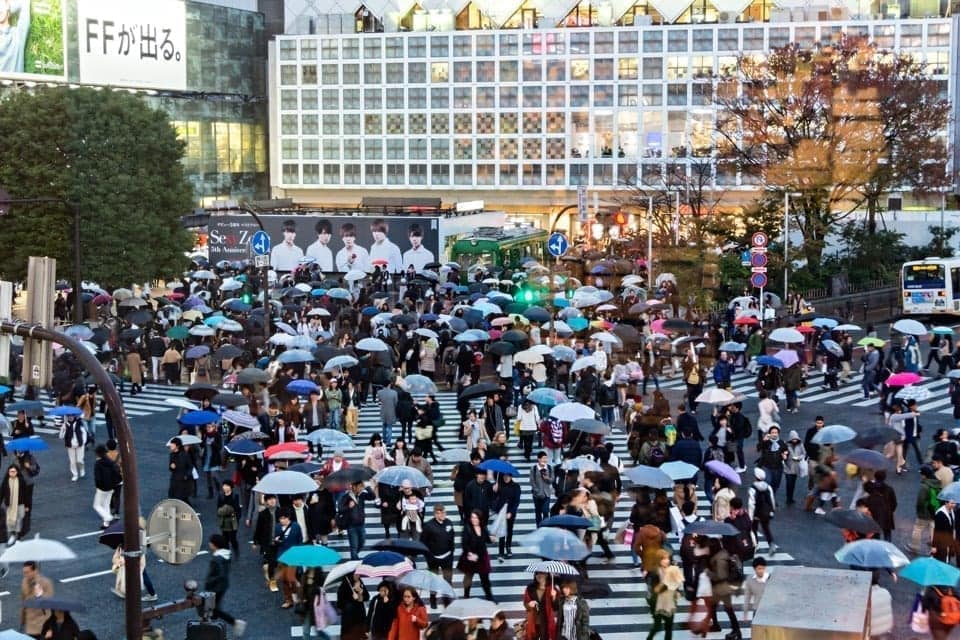
Shibuya is another modern district included in our 2 days in Tokyo itinerary, packed with shopping, entertainment, and flashing neon lights. Yup, this feels like 21st-century Japan.
Shibuya also has a famous bronze statue of Hachiko, a loyal dog who would come here every day to meet his master, a professor returning from work. After the professor’s death, Hachiko would still come to the same place for another 10 years, until his own death.
Ever wondered what the busiest pedestrian crossing in the world looks like? Shibuya crossing has the answer!
A tip – to get the best view of the Shibuya pedestrian crossing, go to the nearby Starbucks! Grab a coffee and watch this self-made street theatre from Starbucks’ second floor seating area. Just keep in mind that you will probably have to wait in line for the window seats overlooking the crossing.
Shibuya station is served by 3 different metro lines, as well as the circular JR Yamanote Line.
Day 2: Akihabara, Asakusa and the Tokyo Sky Tree
More of Tokyo’s highlights are waiting for you on the last day of this wonderful Tokyo 2 day itinerary.
Morning: Akihabara
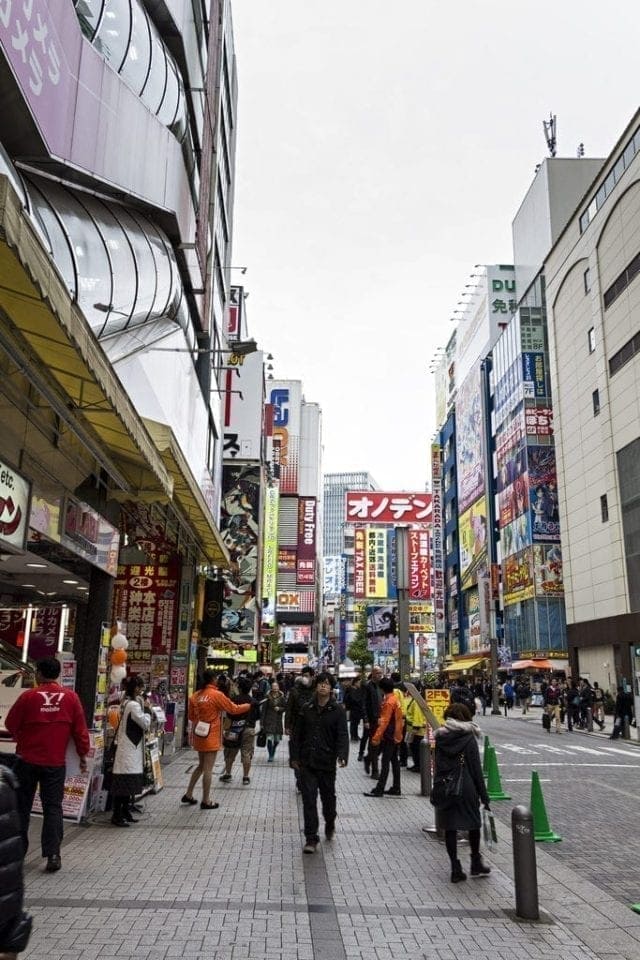
You can’t miss the Akihabara district – the centre for gaming, manga and anime culture (comics and animated stories) and also a place full of electronics stores and neon signs. It’s full of Japanese convenience stores – anything you can think of, there’s probably a store for that.
Perhaps you’ll find more electronics than you’ve ever seen before!
Perhaps you’ll be surprised to find that out of all the fancy gadgets, enjoying most of the attention of the locals are… the rice cookers! 😊
Akihabara – Akihabara station, served by JR Yamanote Line and Tokyo Metro Hibiya Line. Then wander around on foot.
Afternoon and Evening: Asakusa & Tokyo Skytree
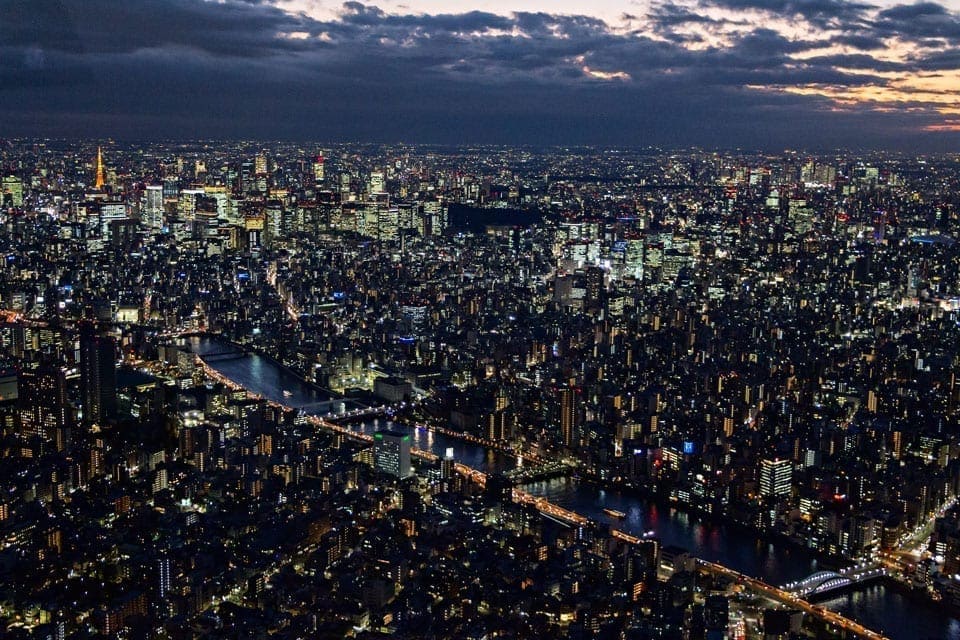
Having checked out the gaming arcades and the excitement of the Japanese getting the latest rice steamer, make your way to a more down-to-earth district, Asakusa, with its beautiful Senso-ji Temple, which is one the most beautiful places we recommend to do in this Tokyo 2 day Itinerary.
Asakusa has an atmosphere of the old Tokyo and is in quite a contrast to Akihabara. Well, by this time, the contrasts will feel like a completely natural part of our 2 day Tokyo itinerary.
Take a short walk through the Asakusa district and then, to finish your splendid journey through the contrasts, have a look at Tokyo from a bird’s eye perspective.
Your next stop is Tokyo Skytree , the tallest building in Japan, and it’s more than worth taking the elevators that whizz you up within seconds to the observation gallery located at 450 meters above the ground. Whichever direction you look, there’s Tokyo around you. With one exception – on clear days, the majestic Fuji is visible on the western horizon.
Altogether, it’s a really impressive vista of the Japanese capital and we recommend enjoying it during sunset and twilight, as the city will be gradually turning on its millions and millions of lights.
We recommend occupying the place with the best view a good minute before the sun sets. This is a very popular place for watching the sunset, which means the main deck gets full rather quickly.
Many people recommend going to the Tokyo Tower , but we think the Eiffel tower inspired illuminated structure of Tokyo Tower looked rather interesting from the Tokyo Skytree. Anyways, you can check also our review, whether to visit Tokyo Skytree or Tokyo Tower .
It’s time for the last dinner in Japan. So how about the fugu? 😊
Asakusa – Asakusa station is the best option, reachable by the Ginza line and Asakusa lines. Explore the area on foot. Tokyo Skytree – reachable by Asakusa and Hanzomon lines, the stop is Oshiage (Skytree). If you previously visited Asakusa district and Senso-ji Temple, we suggest walking from there to the Skytree – it’s only about 25 minutes and with Skytree being the tallest structure in Japan, you shouldn’t miss it!
Planning your Tokyo 2 day itinerary
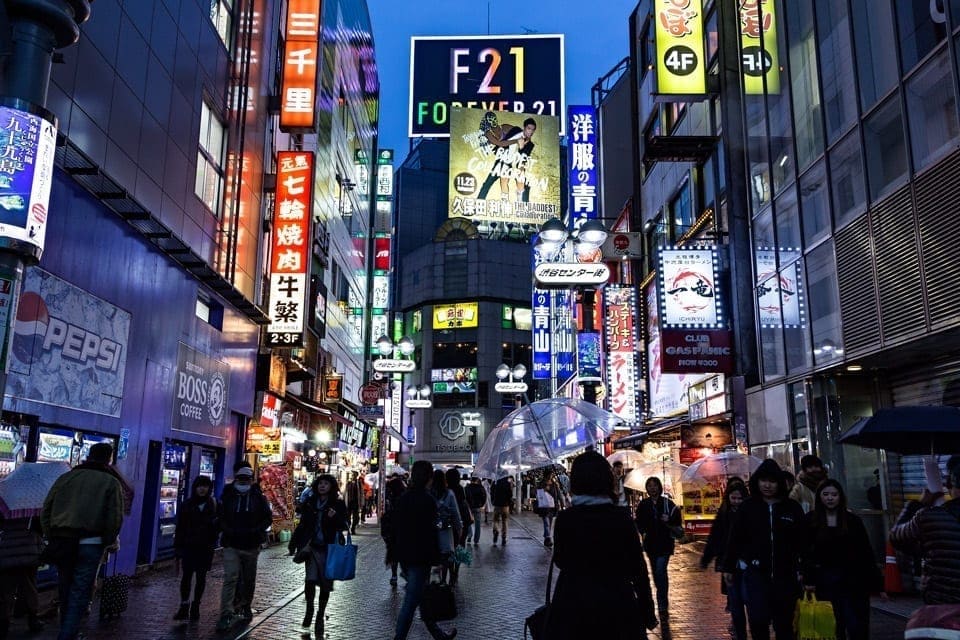
How much time to spend in Tokyo?
2 days in Tokyo is just enough time to get a feel of the city. Of course, you can’t see everything in 2 days in Tokyo – for example, we ourselves didn’t have time to catch the Meiji shrine, as it was raining, so we got too cold and went to a café to warm up instead.
So, if you can add an extra day or two, then definitely do it! You can do some day trips to, for example, Disney or Odawara. Or just spend some more days in Tokyo, as there are always things to add to your Tokyo itinerary – art museums, entertainment centres, shopping, and even a robot restaurant!
We also prepared an article about where to stay in Tokyo , so that you get a perfect base in Tokyo, and enjoy your two full days at maximum!
Best places to stay if visiting Tokyo for 2 days
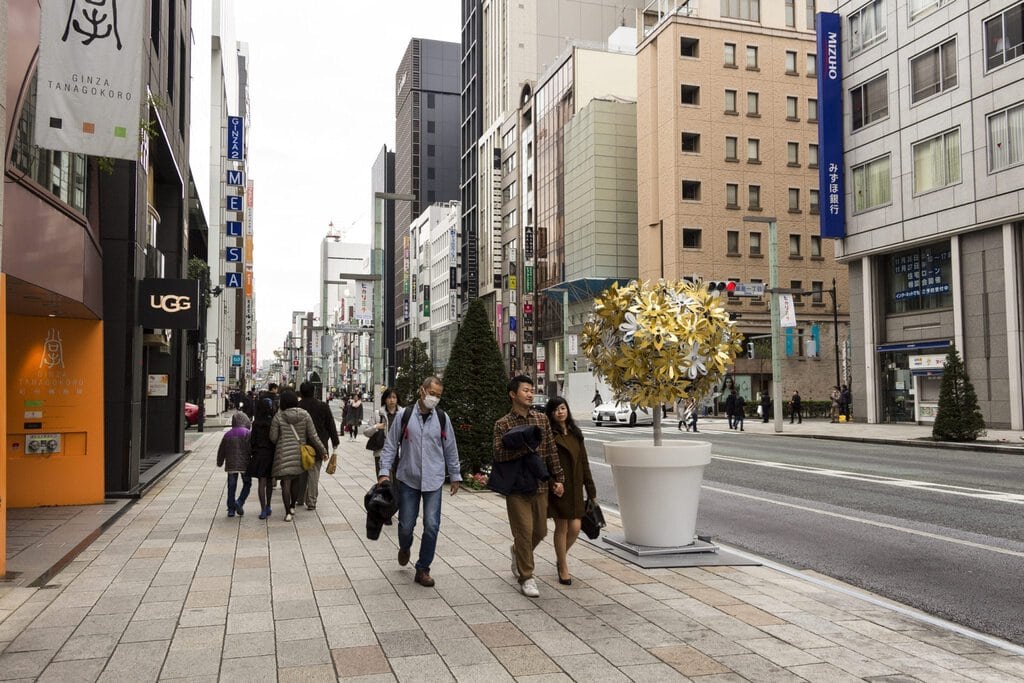
Since you’re only going to stay in Tokyo for 2 days, it’s a good idea to base yourself somewhere central or with good public transport options.
The best places to stay in Tokyo are Shinjuku, Shibuya, and the area around the Tokyo Station (including Ginza). All of them offer plenty of options for dining, shopping, and entertainment and are also important transport hubs.
The choice of hotels in Tokyo is huge , from budget to middle-class to luxury. Real estate is damn expensive in Tokyo, and this means many hotel rooms, especially in the budget and middle-class hotels, are rather small.
We stayed in Smile Hotel Ginza , which is close to the Ginza Subway line, so very convenient.
What to eat in Tokyo?
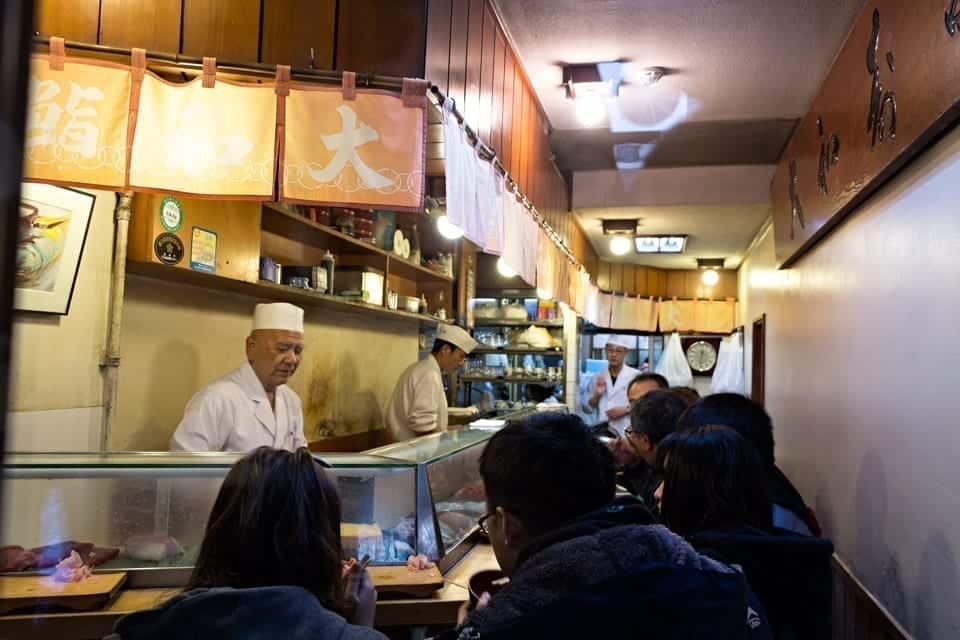
There are plenty of food choices in Tokyo!
With sushi and ramen being particularly popular, Tokyo is a great place to try just about anything from Japanese cuisine (and non-Japanese as well if you wish so), so get yourself ready, as this is one of the most important things to do in Tokyo!
Perhaps you’ll be surprised to hear Tokyo has a couple of Michelin-starred restaurants where a delicious meal sets you off a mere ten bucks! No kidding!
But don’t be afraid to eat street food – the food safety standards in Japan are sky-high, so you don’t have to worry about getting food poisoning. Anyway, we prepared a whole article about where to eat in Tokyo , so kindly check it, if you want to see more!
What to pack for Tokyo?
Obviously, the full packing list for your Tokyo 2 day itinerary depends on the time you visit and on what you need for comfort. We’ve created a basic packing list with the main items you should take to Japan , even depending on the season.
The main things on the list are:
- comfortable shoes , as it’s going to be a lot of walking
- a travel bag for water, snacks, extra clothes, wallet, ID, camera… you get the idea.
- camera – you will definitely want to make pictures!
- If you’re travelling in spring or autumn, we suggest packing layers of clothing, as the mornings and evenings might be colder, and it can get quite warm during the day.
How to get to Tokyo?
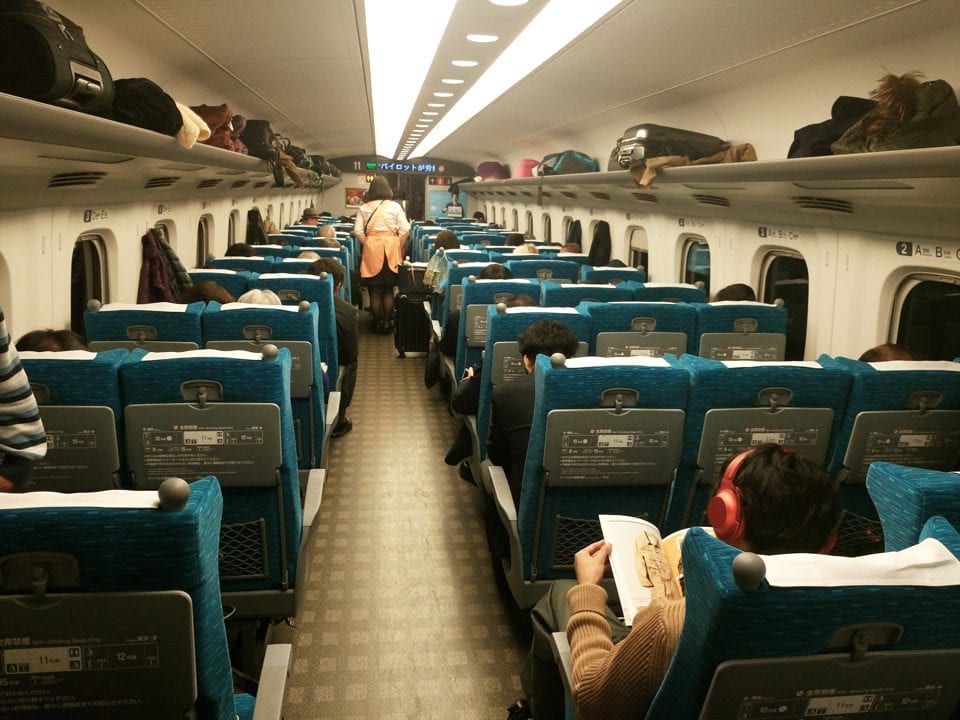
By train from other cities
If you follow our 10 day Japan itinerary , you’ll arrive in Tokyo by train from the Hakone area (after enjoying incredible views of Mount Fuji!) by taking the Odakyu-operated Hakone Express to Shinjuku Station in Tokyo.
But, since Tokyo is the capital of Japan, you can arrive basically from anywhere by taking Shinkansen. For example, a ride from Kyoto to Tokyo takes approximately 3 hours. Plus, riding a Shinkansen is definitely a Japan bucket list item!
By plane: How to get from Tokyo Airport to City centre
Tokyo has two major airports – Haneda and Narita. Most of the international flights arrive at Narita airport, while Haneda airport handles mostly domestic.
Haneda airport is closer to Tokyo, so you can take a limousine bus to get to Shinjuku.
For Narita Airport, the most convenient option is taking the JR Narita Express to Central Tokyo. It’s a good use for your JR pass as well , so we would love to suggest you buying one, as it’s going to be a perfectly invested money when travelling to Japan.
Well, sometimes might be a good idea to save your Japan Rail Pass, and it’s quite common. So, let’s say you want to be in Japan for total of 16 days, but the Rail Pass is valid only for 14 days. Well, while you stay in Tokyo for 2 days, you can start using your JR Pass just in the minute you leave Tokyo. But still, in this case you will need a ticket to get from Narita Airport to Tokyo city centre.
Most convenient (and expensive) from Narita Airport to Tokyo City
The Narita Express is our top choice as you don’t want to waste any minute in our Tokyo 2 day Itinerary. Despite a higher cost (¥3 070 one-way), it’s fast, direct, and comfortable. A discounted round-trip ticket is available for ¥5,000, valid for 14 days. The Narita Express ticket covers all JR stations in Tokyo at no extra cost.
Alternatively, the Skyliner connects Narita Airport with Ueno station, serving areas like Asakusa, Nippori, Akihabara, and Ueno. Fares start at ¥ 2 580 one-way. Packages with unlimited Tokyo Metro travel for 24, 48, or 72 hours. Prices are 800 YEN up to 1 500 YEN.
Express Bus
For budget-conscious travellers, express buses from Narita to Tokyo cost ¥1 300. They run to hubs like Shinjuku and Tokyo Station every 20 minutes. However, they might get stuck in traffic and lack WiFi or toilets.
By Local Trains
Local trains are another economical way to get from Narita Airport to Tokyo, with fares starting at ¥1,200. The journey can take 90-120 minutes, with possible transfers. The JR Sobu express service to Tokyo station, running hourly, is a good option.
Getting around Tokyo – with subway
Tokyo is huge! We recommend using Tokyo’s efficient subway services for travelling between various neighbourhoods and then exploring them on foot.
Tokyo has altogether 13 lines of subway (metro), operated by two different companies (9 lines of Tokyo Metro and 4 lines of Toei Subway), as well as a circular JR Yamanote line and some private lines. The system is efficient, safe and easy to navigate for foreigners, with English signs helping you find your way everywhere.
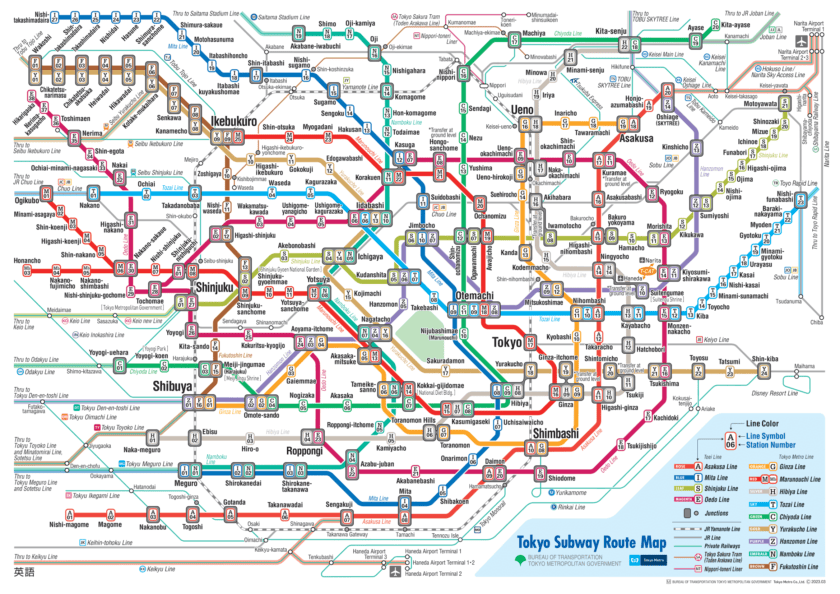
Well, as a tourist, you have basically just three options. You can get yourself a 24-hour ticket, 48-hour ticket or 72-hour ticket. All the prices are pretty much similar (You get a 100 YEN discount if buy for 72 hours). So, we are keeping it up to you, in case you want to stay in Tokyo for just two days, just get yourself a 48-hour ticket, which costs 1200 YEN for adults, and 600 YEN for kids under 11 years of age.
Price for Tokyo Subways Tickets
Tokyo Subway 24-hour Ticket – Adult: 800 yen, Child: 400 yen
Tokyo Subway 48-hour Ticket – Adult: 1,200 yen, Child: 600 yen
Tokyo Subway 72-hour Ticket – Adult: 1,500 yen, Child: 750 yen
The easiest, and most convenient way to get tickets is to buy them on GetYourGuide.com . The price is the same as if you buy them on-site, and you will have them easily prepared before travelling to Tokyo.
Additional things to do in Tokyo
If you’d like to change some of the things that are in this Tokyo 2 day itinerary or maybe you have some extra time, I have some options for you:
A day trip to Hakone
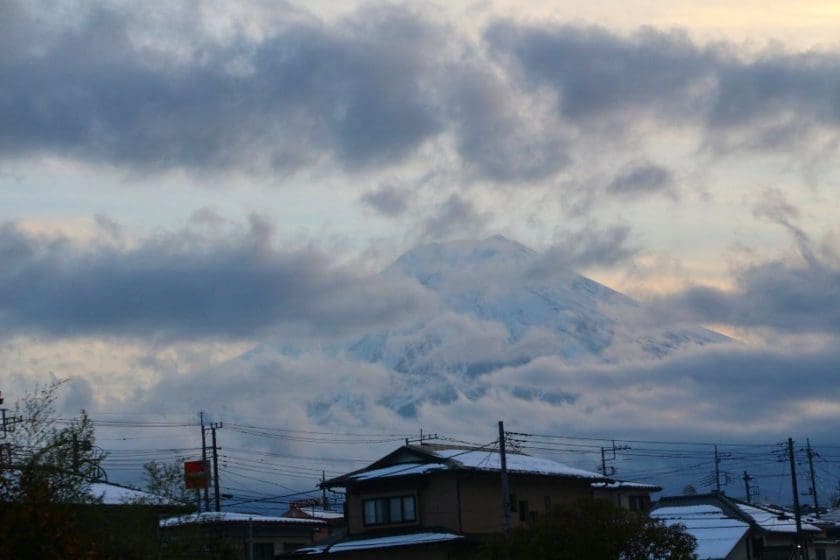
Generally, we suggest that you spend a couple of nights in Hakone, as there is an abundance of some of the best ryokans in Japan to enjoy there. But if you don’t have time for that and you do have an extra day, you can go for a day trip to Hakone . It’s not hard to plan the trip by yourself, but there are tours available, too.
Tokyo Disneyland or DisneySea
Another thing that requires a whole day – or even more, actually.
Two of the most amazing Disney parks are located not far from Tokyo.
Add some magic to your Tokyo trip – go on the space or splash mountain, join a journey to the centre of the Earth, have lunch at the granny’s kitchen, and so much more! And of course, the fireworks – cannot forget about those 🙂
A GoKart tour
It’s possible to dash through the streets of Tokyo – the Shinjuku, Harajuku, and Shibuya Crossing, even with a costume on! And have a photo shoot of the experience at the same time. A massive fun!
You can easily book here !
Digital Art Museum
The Tokyo Digital Art Museum has immersive exhibits and installations made of lights, sounds, and different materials to delight all five senses.
In this unique exhibition, your presence actually impacts the artwork – you basically become a part of it. The exhibition space includes several areas, covering over 10,000 square meters in total. There’s a great variety of installations, with different lights, sounds, and materials.
Conclusion for the 2 days in Tokyo itinerary
Well, there are many things to do in Tokyo, so we probably know that our Tokyo 2 Itinerary is not something you should strictly follow. But still, you can get yourself a lot of inspiration here.
So, I hope, that we at least helped you to find what to do in Tokyo in 2 days, and if we did, we are so glad. Fulfilling two 2 days in Tokyo Itinerary was really hard, and guess it’s going to help your 2 days in Tokyo.
Have you been to Tokyo? Are you planning to go again? Kindly let us know, if there is anything else, you would recommend to add into our Tokyo 2 day Itinerary.
Like this post? Share it!
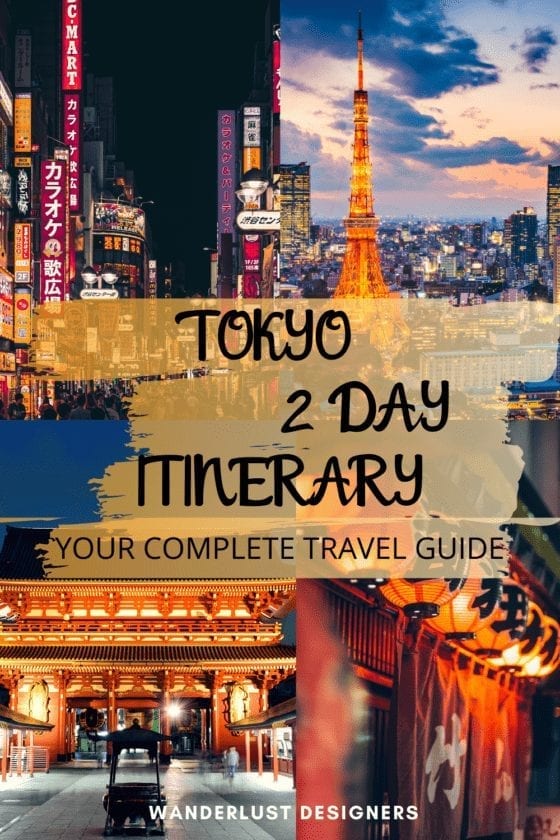
Guest Author
Kristine Eksteine-Nizka is a guest author of Wanderlust Designers. She has lived in 4 countries and has visited over 200 places in 30 countries, all while holding a full-time job or studying, and is determined to inspire and teach others to do the same.
Similar Posts

Ultimate Japan Rail Pass Review: Is Japan Rail Pass worth it?
There are many ways of getting around in Japan. Its road and public transport networks, and even airports, are quite easy to access and understand. Some of the ways are faster, some are slower, some are more expensive, and some are cheaper. The best, though, in our opinion, is train – that’s how we were…

Complete guide on what to do in 2 days in Venice
Venice is one of the most unique places in the world. A city built completely on islands in a lagoon, with thousands of years of history and architecture to show for it, you should definitely have a Venice 2 day itinerary on your Italy trip plan. There are no roads to drive on, only canals,…

Best ryokan in Hakone with private onsen
Staying in a ryokan in Hakone with private onsen was one of the best experiences we had in Japan. There’s subtle luxury, traditional Japanese hospitality and culture, incredibly tasty food (kaiseki is something else when you’re in a ryokan)… There are just so many things that I loved about our experience! Since prices of hotels…

How to dress in Japan as a Tourist: 9 Rules not to offend anyone
Well, in a word you should dress conservatively while in Japan, or at least smart casual. But there are many other rules you should follow while being in Japan. So sit down, and get ready for our article about how to dress in Japan as a tourist. Of course, as a tourist, you will not…

Dancing, Drinking, and Dining: Shinjuku bars you must visit
Shinjuku is a special ward in Tokyo, the capital of Japan, and it also happens to be the spot with the best nightlife in the country. As a major commercial hub with the busiest railway in the world, you know you can find some great spots to sip wine and slam shots, whichever you are…

Where to stay in Miyajima for an extra bit of romance
Miyajima – the little island in the Seto Inland Sea of Hiroshima that is full of romance, temples, and deer. It’s believed to be the place where god dwells. In this article, we want to answer your question about where to stay in Miyajima. Miyajima is famous for its Itsukushima Shrine and the floating Torii…
Leave a Reply Cancel reply
Your email address will not be published. Required fields are marked *
Save my name, email, and website in this browser for the next time I comment.
This site uses Akismet to reduce spam. Learn how your comment data is processed .

48 Hours in Tokyo – A 2 Day Itinerary
Tokyo is a fantastic city full of culture, modern amenities, and plenty to do. I’ve travelled to Japan a few times and Tokyo has always been a place I’ve loved to spend time in. It’s easy to fill up two days with fun activities while still finding time to relax. If you’re looking for something traditional and cultural, Tokyo’s shrines and temples are not to be missed! Sensoji Temple is one of the most popular attractions in the city with its vibrant shopping street right outside the temple gates. The Meiji Shrine is also a must-see as it’s the most iconic Shinto shrine in Tokyo. For those wanting something more modern, Tokyo Tower offers gorgeous views of the city skyline from its observation deck. If that’s not enough for you, take an elevator up to the Sky Deck at Mori Tower for even higher views!
Shopping districts such as Harajuku, Shinjuku, and Ginza are excellent places to explore too – here you can find both traditional souvenirs and modern fashion apparel. At night, why not have dinner or drinks at one of the many themed restaurants around town? Whether it’s robot restaurant or an owl cafe – there are plenty of unusual experiences that are unique to Tokyo.
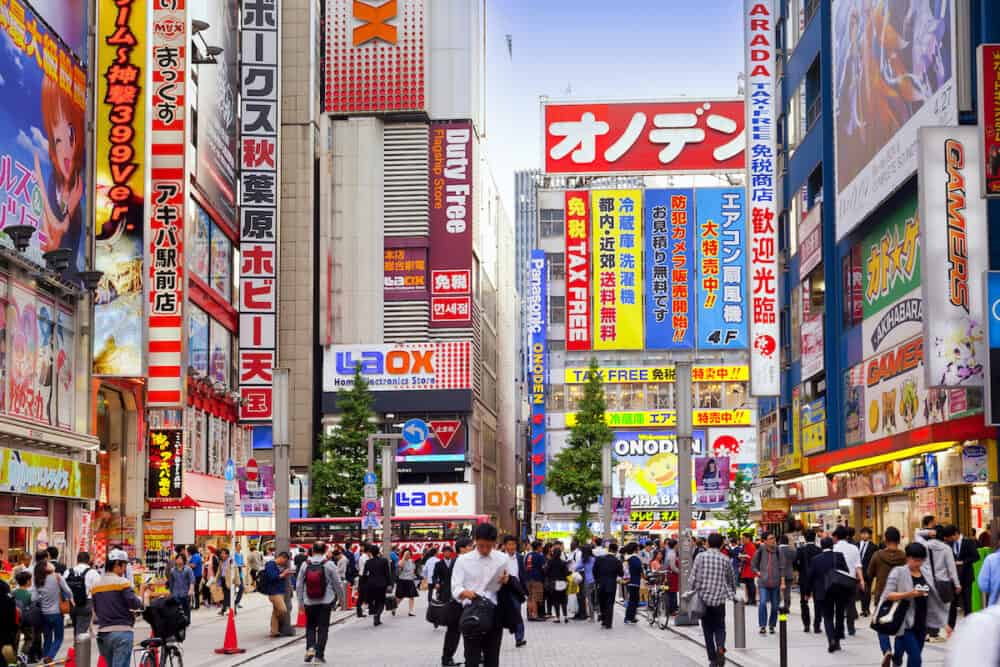
Tokyo is known for its eclectic mix of traditional Shinto architecture and modern high-rises. This blend of old and new is one of the reasons Tokyo is such a popular destination for travellers. The Japanese capital city is home to more than nine million people and over 20 million yearly visitors.
It’s a big and bustling city, and you should enjoy your trip without worrying about how you’re going to see and do everything. You don’t need to stress, because you can fit a lot into just two days in Tokyo! To help you out, this guide will show you what to do in Tokyo when you only have 48 hours.
If you’re wondering how many days in Tokyo is ideal or how many days do you need in Tokyo? well it all depends on what your plans are? You could easily spend 2 weeks in Tokyo or 2 months and still not see or do everything.
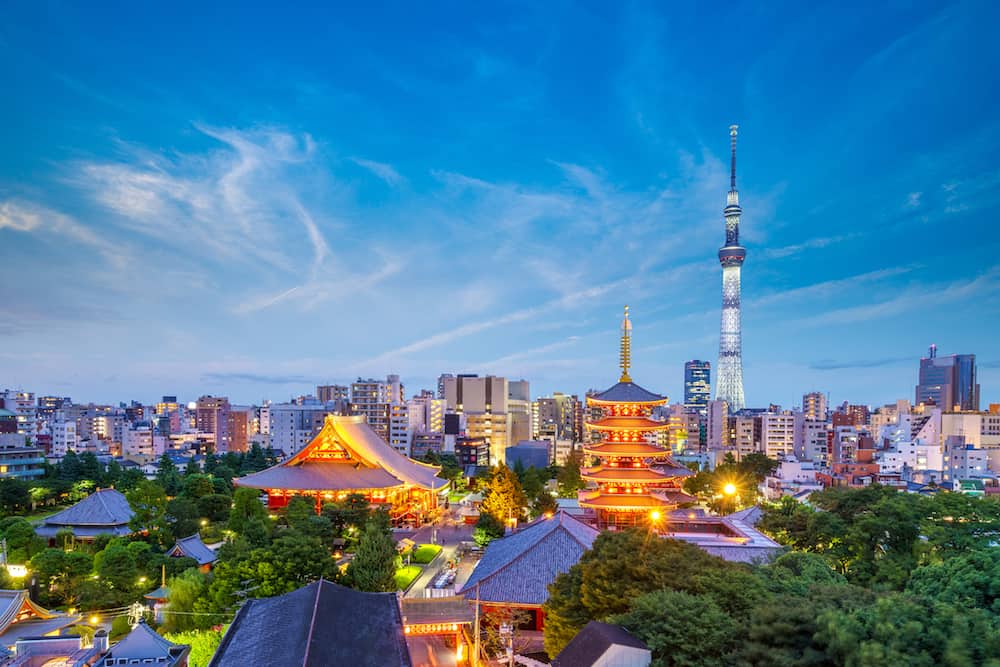
Below is a great guide on what to do in Tokyo for 2 days because sometimes 2 days in Tokyo is all you have, especially if you’re going over on a cruise or you’re short on time and want to be able to tour some of the other areas within Tokyo.
This guide is perfect for those who only have 48 Hours in Tokyo 2 Day Itinerary, showing you what to do in Tokyo in 2 days. We will show you what to do in Tokyo for 2 days, where to stay, what to eat and how to get around, whether its a weekend in Tokyo Japan or just a quick trip.
Plan your trip?
Avoid hidden fees in the exchange rate while withdrawing from millions of ATMs abroad, paying in restaurants and shops, and buying your accommodation and flights using the Wise Card . You can hold up to 40+ currencies at once to spend in in over 150 countries, and convert them in real time with the free Wise app.
Need help planning your trip from start to finish? Check out these helpful links:
- Cheap flights
- Savings on accommodation from hostels to luxury hotels
- Affordable car rental options
- Affordable sightseeing tours and day trips
- Travel Adapter – All in one so you don’t have to carry a bunch around
- Don’t be silly and forget Travel Insurance ! Get hurt and you’ll regret it…
This post contains some affiliate links for your convenience. Click here to read my full disclosure policy. You can also read our content/editorial policy here .
Table of Contents
Overview Of 2 days in Tokyo itinerary
Day 1 in tokyo.
- Catch the train to Shibuya
- Enjoy Breakfast at Kanetanaka
- Check out the Shibuya Scramble
- Wander around Yoyogi Park to the Meiji Shrine
- Enjoy fashion trends Harajuku
- Visit the Watari Museum of Contemporary Art
- Head to Chiyoda to the National Art Centre
- Ramen lunch in Ippudo Roppongi
- Relax in Hinokicho Park
- Visit the Tokyo Tower
- Visit Hinode Pier
- Enjoy a dinner cruise and show along Tokyo Bay
Day 2 in Tokyo
- Head to Chūō-ku for a big breakfast at K’shiki
- Take a guided tour of the Imperial Palace
- Visit National Museum of Modern Art
- Kanda Shrine via the Tozai and Ginza train lines
- Wander through the Ueno Park
- Lunch at Inshotei
- Relax by the Shinobazu Pond
- Visit Tokyo National Museum and the Tokyo Metropolitan Art Museum
- Explore Sensoji Temple in Asakusa
- Snack on dumplings
- Nakamise Street for souvenir shopping
- Dinner at Kamiya Bar
The best time to visit Tokyo
If you want to visit Tokyo when the city is at its most beautiful, come during spring or autumn. In March, the lovely cherry blossoms are blooming, and in October, the autumn leaves have turned vibrant yellows and reds.
The weather during both seasons is mild, which is exactly what you want when you only have a weekend in Tokyo. Keep in mind, however, that spring and autumn are also the busiest times of year to visit.
If you can handle the heat and humidity, you may enjoy a trip during summer. There are always a lot of festivals happening, including many fireworks displays. It’s a great time of year to dive deep into Japanese culture with a ton of dancing, music, and of course, eating.
You should avoid a visit to Tokyo and all of Japan during the New Year. Shops and businesses shut down for the celebrations, and many locals visit the temples to pray, meaning crowds are busier than usual. If you’re hoping to visit a ski resort, wait until mid-January.
Read more: If you have extra time in Tokyo, check out this 3 day itinerary for Tokyo
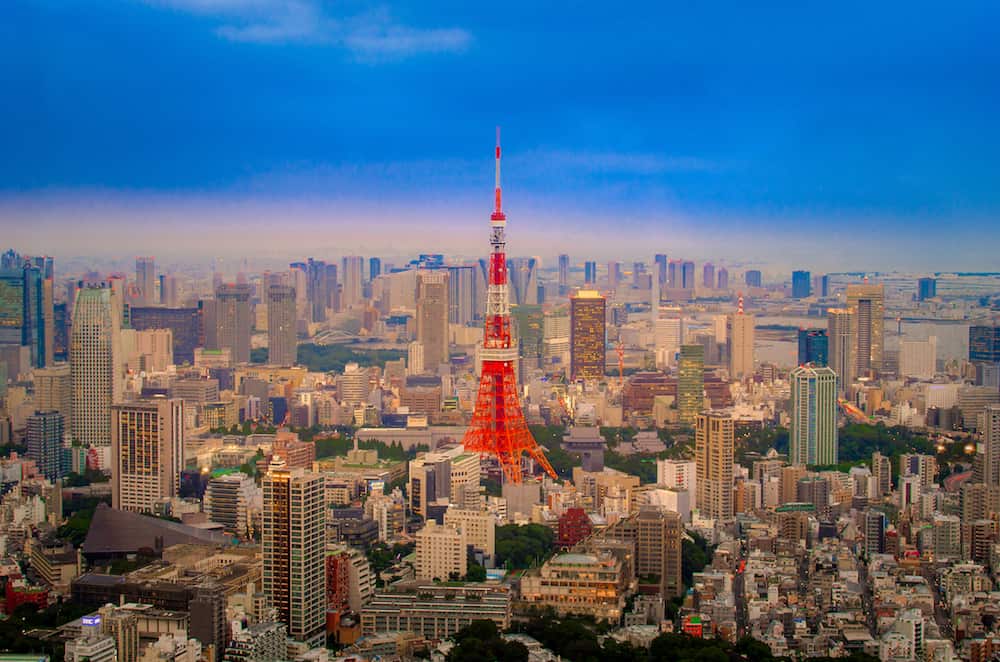
How to get around Tokyo
The trains in Japan are among the best in the world, so getting around Tokyo will be easy and pleasant for you. If you’re going to be taking multiple trips over two days, it’s worth getting a Tokyo train pass for tourists.
This pass allows you to take unlimited rides on both the Tokyo Metro and Toei Subways. It’s the perfect time-saving solution, as you won’t have to constantly queue up to buy new tickets.
This Tokyo metro pass comes in three options. Passes valid for 24 hours cost 800 yen, 48-hour passes are 1,200 yen, and the longer 72-hour passes are only 1,500 yen. You can order a pass, purchase one at the airport, or pick one up at designated travel shops.
When you’re getting to the city from Tokyo’s Narita International Airport, avoid catching an expensive taxi. With such an impressive railway system, you’re better off catching the train or even a shuttle bus.
Each of the airport’s three terminals has its own railway station. The most comfortable option, the JR Narita Express (NEX), takes one hour and costs 3000 yen.
If you’re not travelling a huge distance and want to be more active, you can rent a bicycle. With Tokyo’s main bike-sharing provider, Docomo Bike Share, you can pick one up for an hour or an entire day.
Luckily, there are clear instructions in English on their website that won’t make the process too much of a headache.
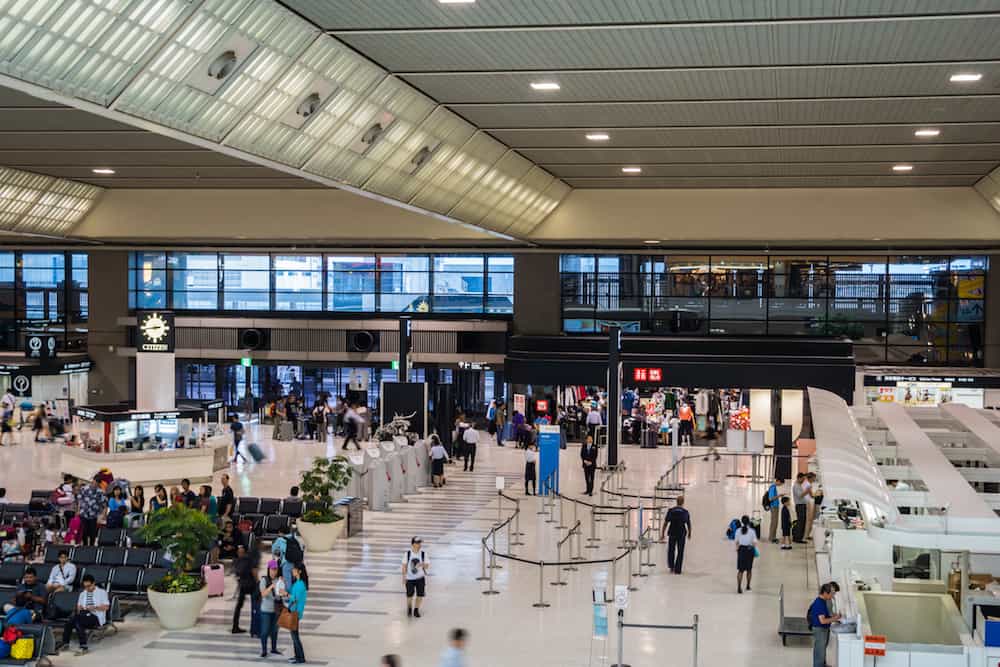
Best Things to do in Tokyo
Tokyo is home to many unique markets. Whether you want to shop for souvenirs, sample the local cuisine or simply wander the stalls, you’ll find a market that’s just what you’re looking for.
Nakamise Shopping Street is easily the number one market for buying souvenirs. While it’s generally packed with tourists, you can find some delicate kimonos, wooden toys, replica samurai swords and delicious snacks.
The street conveniently leads up to the gates of Sensoji Temple, which you can explore once you’ve spent enough of your money!
Going solo in Tokyo for 2 days lets you see the city’s cool mix of old and new. You can check out different city spots, enjoy tasty food, and see quiet temples all by yourself. Tokyo has lots of fun things to do and places to see, making it a great place for a short solo trip.
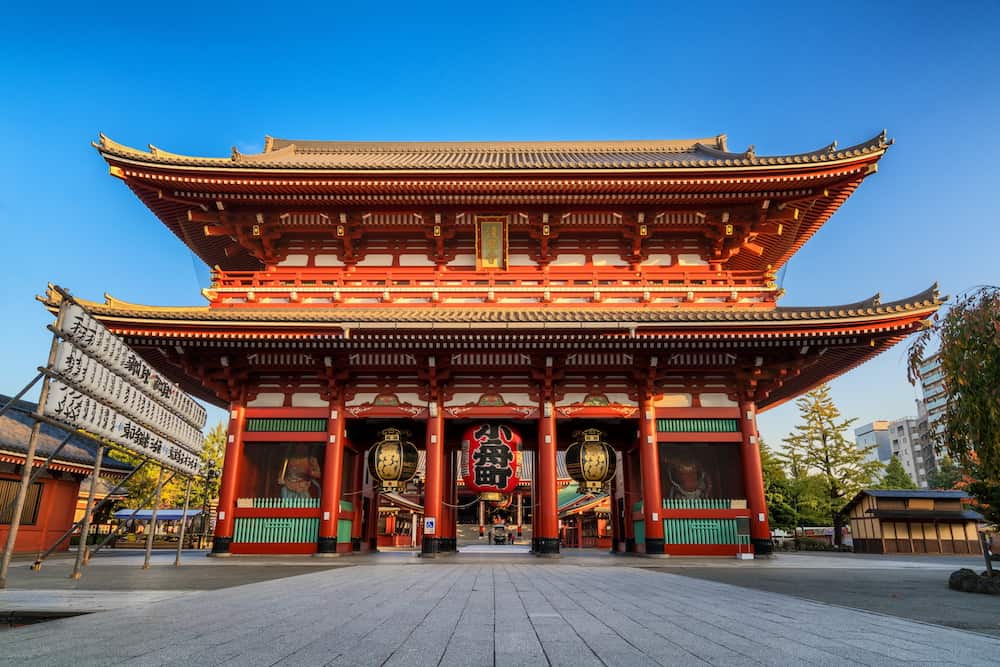
Seafood lovers can also check out Tsukiji , the largest and busiest fish market in the world. If you arrive at the crack of dawn, you can witness live tuna auctions.
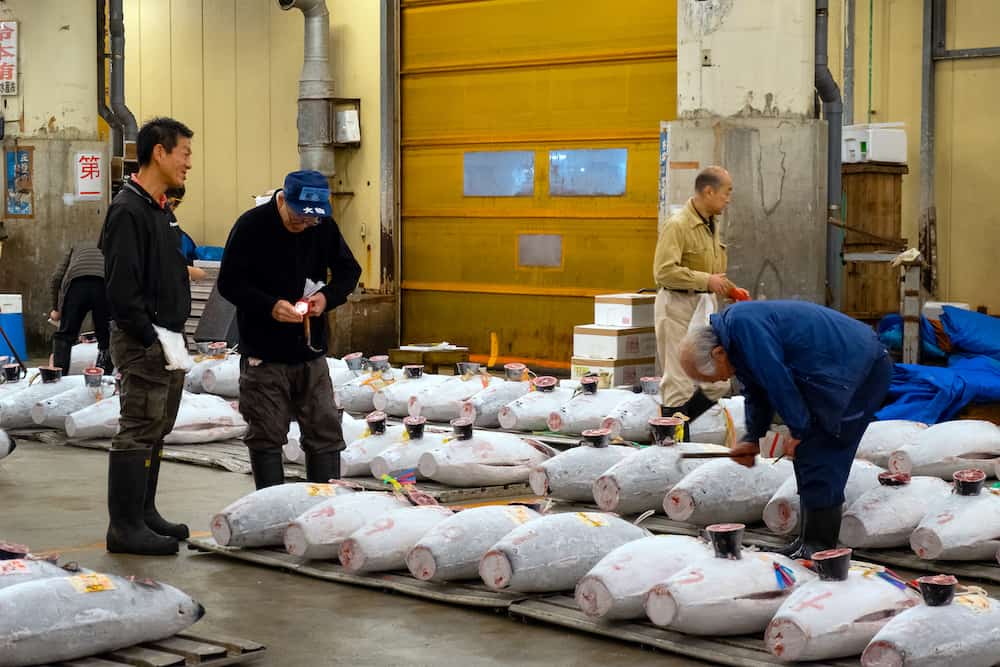
To sample the best sweets, head to Ameya-Yokochō, aka Ameyoko. It’s known as the candy store alley, but you can find just about anything.
There are insane bargains to be found, particularly if you’re willing to buy in bulk. I recommend trying some ningyo-yaki, a sweet cake made with red bean paste, and imo yokan, a sweet potato jelly.
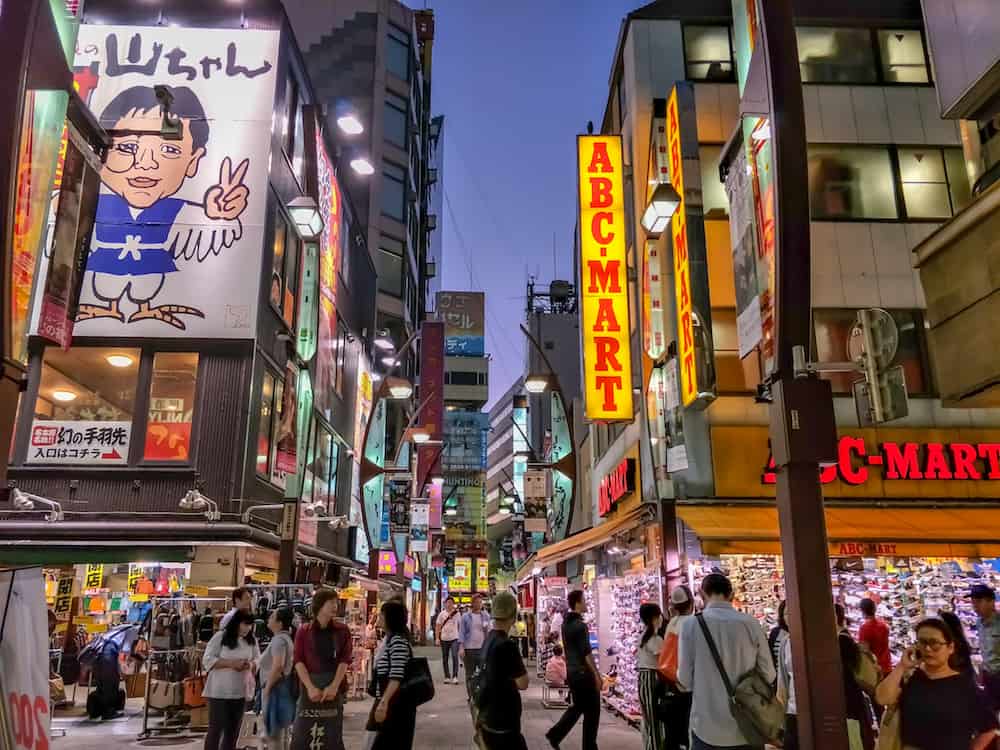
If you love all things vintage, you won’t want to miss the Mottainai Flea Market. It emerged as a way to promote recycling and environmentalism, and primarily sells secondhand clothes.
Yoyogi Park also holds occasional flea markets, including the monthly Earth Day Market. Regardless, this popular park is always worth a visit.
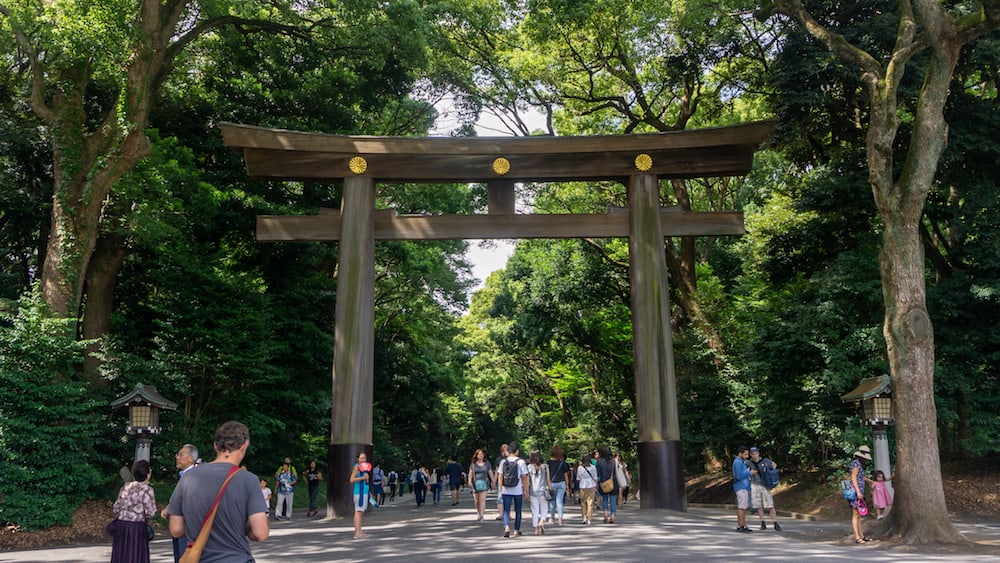
If you want to learn more about Japan’s unique culture, you’ll find a myriad of museums and art galleries. The Tokyo National Museum in Ueno Park is a great place to start, since it’s the largest and oldest museum in Japan.
Many artifacts, ancient artworks and items classified as Japanese National Treasures are preserved here. Other places worth a visit include the Mori Art Museum, the Edo-Tokyo Museum, and the National Art Centre.
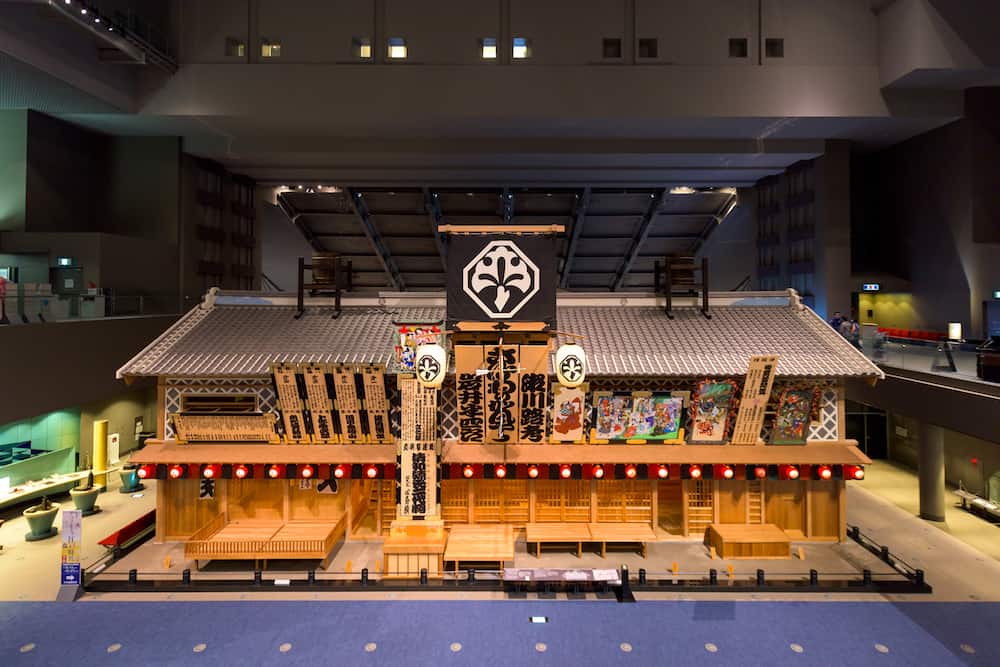
For anime fans, you can’t go past the Ghibli Museum. Located at the beautiful Inokashira Park in Mitaka, the museum showcases the best work by Studio Ghibli.
Photography is prohibited, as director Hayao Miyazaki wants every visitor to immerse themselves in the world of animation and imagination.
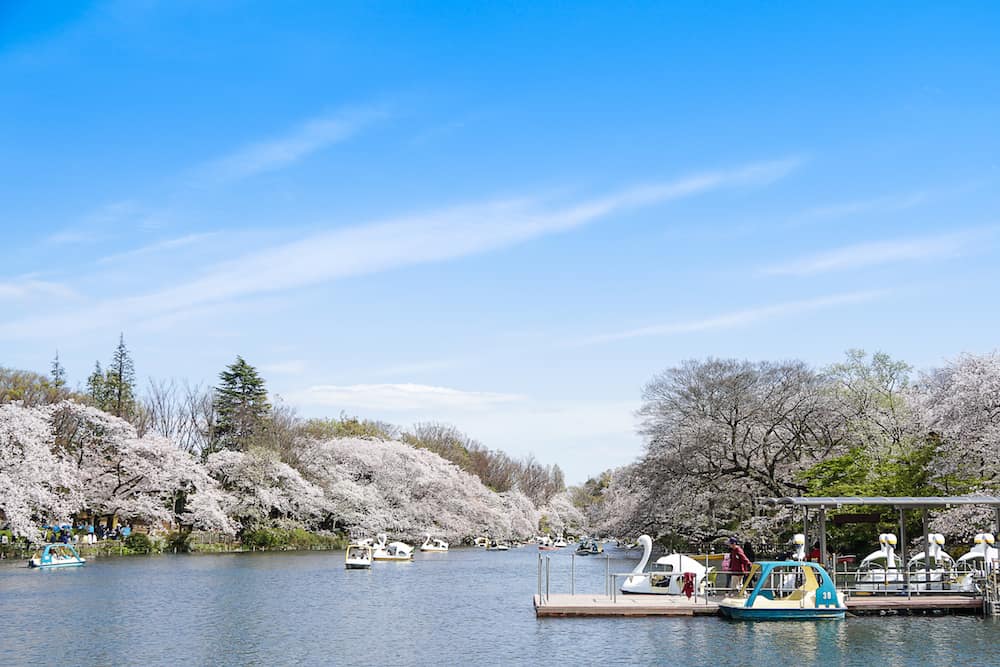
Places to visit in Tokyo
New York City has Times Square, and Tokyo has Shibuya. This area is home to the notoriously busy famous Shibuya crossing, nicknamed the Shibuya Scramble .
If you’re not keen on getting amongst the crowds, you can observe the chaos from the second floor at Starbucks.
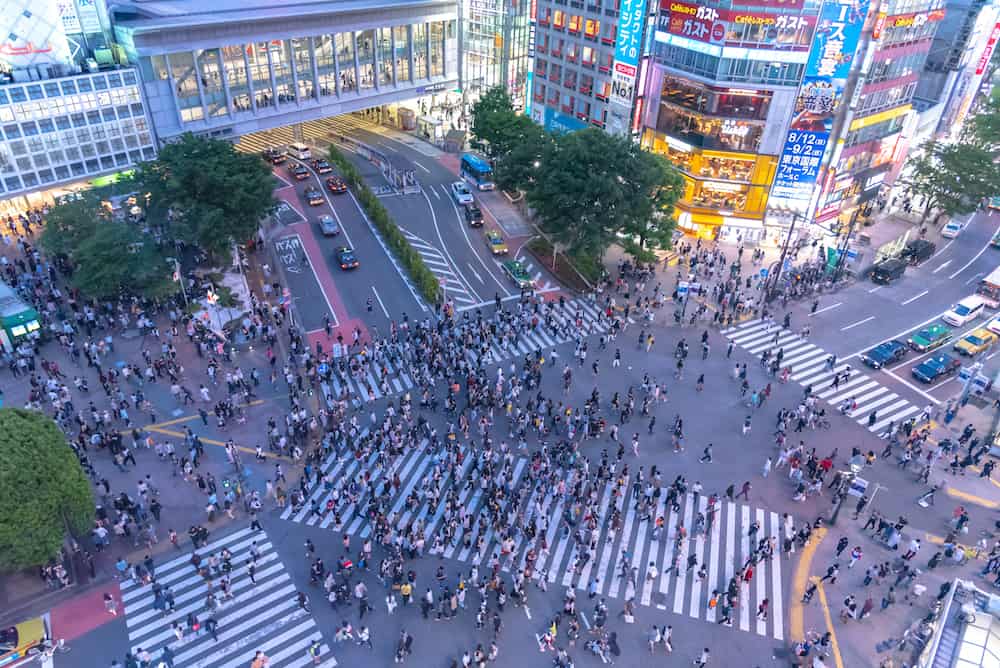
Nearby the crossing is the famous Hachiko Memorial Statue. For those who don’t know the story, an Akita dog named Hachiko would wait for his owner to return from work each day and greet him outside the train station.
Without fail, he continued to wait every day for 10 years after his owner’s sudden death. The Japanese people were so touched by this story that the bronze statue was built to commemorate his loyalty.
This landmark has become a common meeting spot for locals, and a must-visit for tourists.
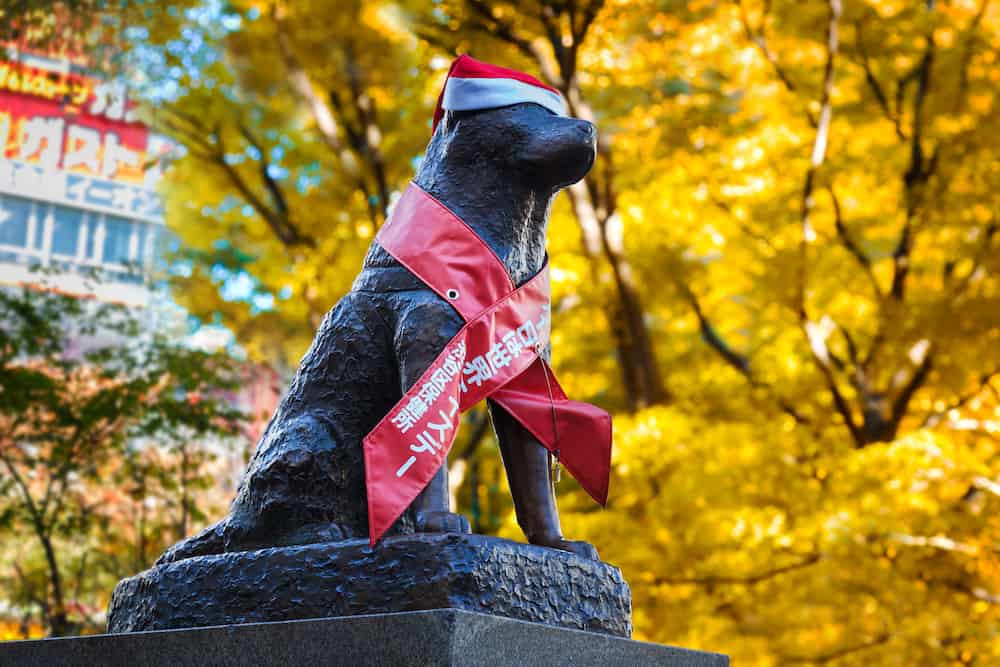
There are numerous beautiful temples and shrines to visit in Tokyo. Sensoji, the oldest Buddhist temple in the city, receives over 30 million visitors per year.
The vibrant red structure was constructed in 645 AD and is dedicated to the Bodhisattva of compassion. It’s next to the Asakusa Shrine , and both are among the few structures to have survived World War II.
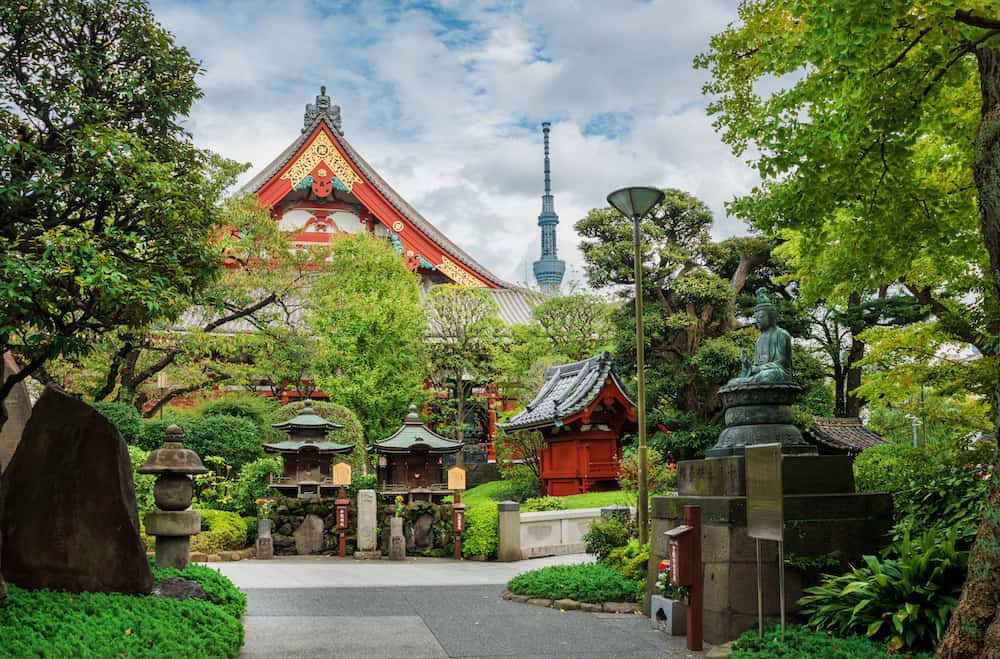
The Kanda Shrine, located in downtown Chiyoda , is where locals come to pray for wealth and success. It has been an important shrine since the Edo period beginning in 1603.
Kanda also survived World War II because of its reconstruction following the 1923 Great Kantō earthquake. More recently, it has been referenced in anime and become a spot for blessing electronic devices.
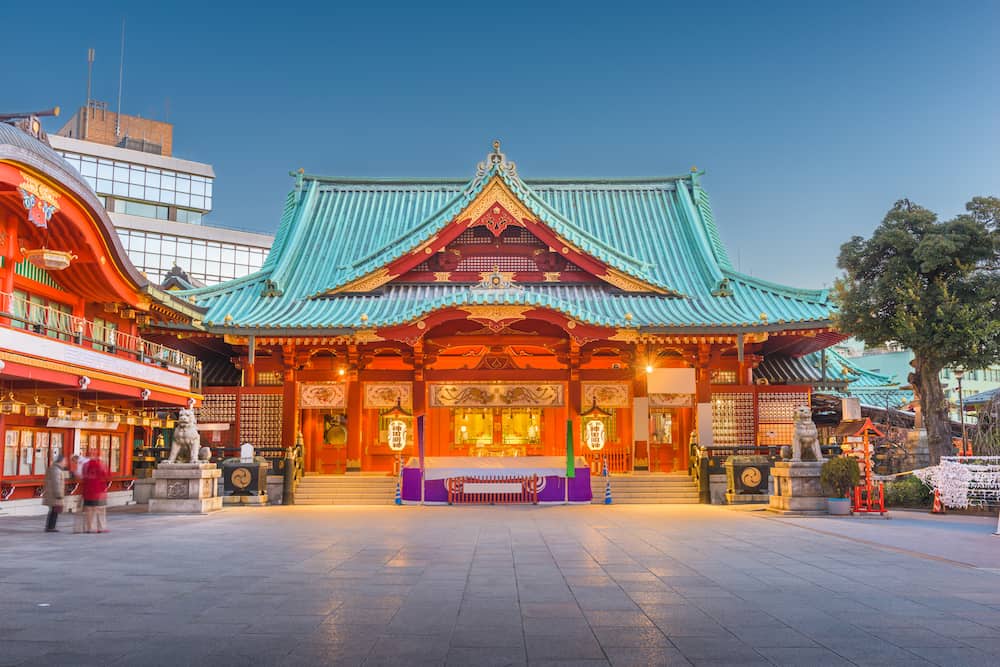
For further sightseeing, you have your pick of observation decks. The Tokyo Tower was inspired by the Eiffel Tower in Paris and is similarly referenced to in Japanese popular culture.
You can visit the two-story main deck or the 250-metre-high top deck. Even if it’s not on your list of things to do, you’re sure to see the orange and white tower from a distance.
A newer addition is the Tokyo Skytree , now the tallest structure in the world. From the 350-metre-high Tembo Deck, you can experience uninterrupted panoramic views. There’s also a cafe for you to enjoy a refreshing beverage while admiring the city.
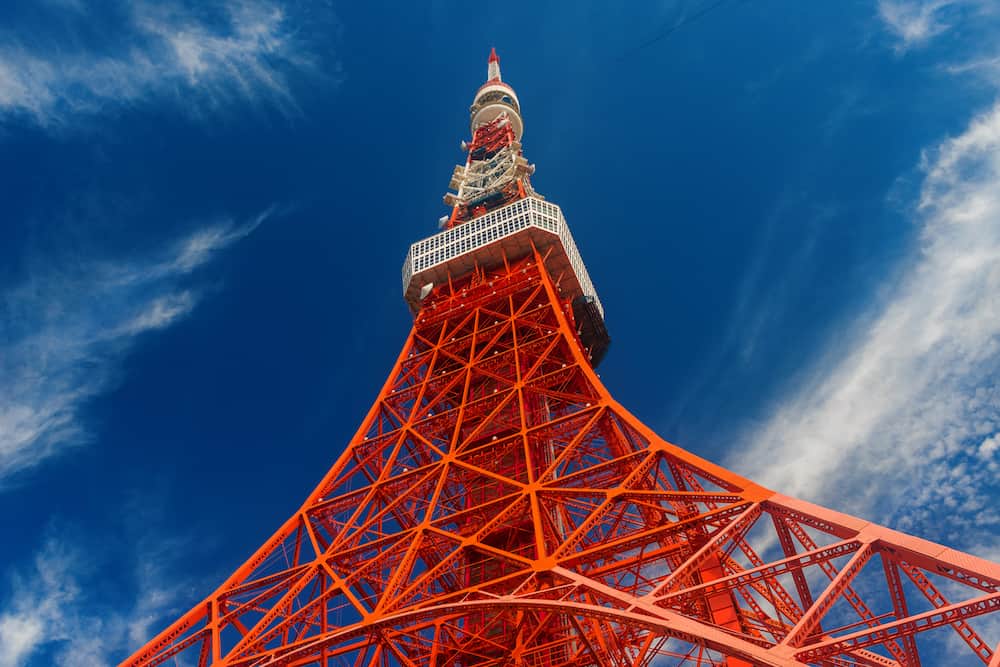
Where to stay in Tokyo
Although Tokyo is a very modern city, you can still find some Japanese-style accommodation options. Here are some suggestions for both traditional ryokans and Western hotels as well as AirBnbs. We have also written an extensive guide on Where to Stay in Tokyo .
A sleek and affordable option is the b tokyo ochanomizu . The hotel is one minute away from Awajicho Station in the quiet and picturesque Chiyoda area. The rooms all have a stylish wooden finish with comfortable Western-style single, twin or double beds. You’ll have access to a generous breakfast buffet, plus free coffee all day long.
For a classic and authentic Japanese stay, there’s Ito Ryokan in the area of Chūō. The rooms are impeccably clean, and the twin, triple and quadruple room options make it the perfect place for families.
You’ll be astounded by the attentive hospitality here. The welcoming staff are always eager to teach guests about their culture and ensure everyone has the best stay possible.
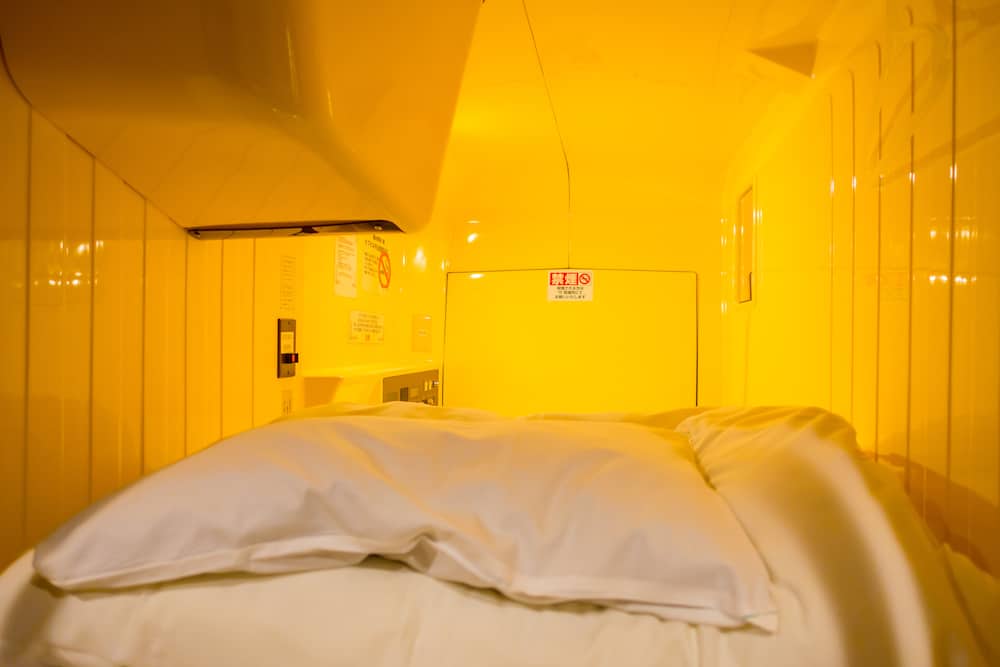
Tours to do in Tokyo
There are numerous customisable and guided tours offered throughout Tokyo.
A day tours often takes you on a one-hour cruise of the Tokyo Bay to see the stunning city skyline. You’ll also learn about Japan’s feudal history at Meiji Shrine, stop at the Imperial Palace East Garden, shop along Nakamise Street, and pay a visit to the Sensoji Buddhist pagoda. This tour is considered the best of both traditional and modern Tokyo.
One of the most unique and memorable tours is the Guided Go-Kart Tour Experience . This two-hour adventure departs from Shinagawa and guides you around to see the Shibuya Crossing, the Rainbow Bridge, the Tokyo Tower and more.
The tour really embraces Japan’s love of anime and manga, as you can dress up as your favourite comic book character for the duration. Plan ahead if you’re interested in this fun experience, as an international driving permit is required.
Of course, there are also walking tours available. If you’re not a native English speaker, the Tokyo Free Guide has volunteers that speak many languages. For a smaller, private tour with friends or family, the guides at the aptly-named Tokyo Walking Tours have you covered.
Recommend tours in Tokyo
- Mount Fuji, Lake Ashi and Bullet Train Day Trip from Tokyo
- Mt. Fuji Day Trip Including Lake Ashi Sightseeing Cruise from Tokyo
- Private Custom Tour: Tokyo in a Day
- Tokyo Day Tour: Meiji Shrine, Asakusa Temple and Tokyo Bay Cruise
- Tokyo Robot Evening Cabaret Show
- Nikko National Park Day Trip from Tokyo
- Small-Group Tokyo Biking Tour
- Food Tour of Tsukiji Fish Market
- Walking Food Tour of Shibuya at Night
- Tokyo Asakusa Rickshaw Tour
- Tokyo Local Food and Drink Experience with a Bar Hopping Master
- Hands-on Ninja Experience in Tokyo
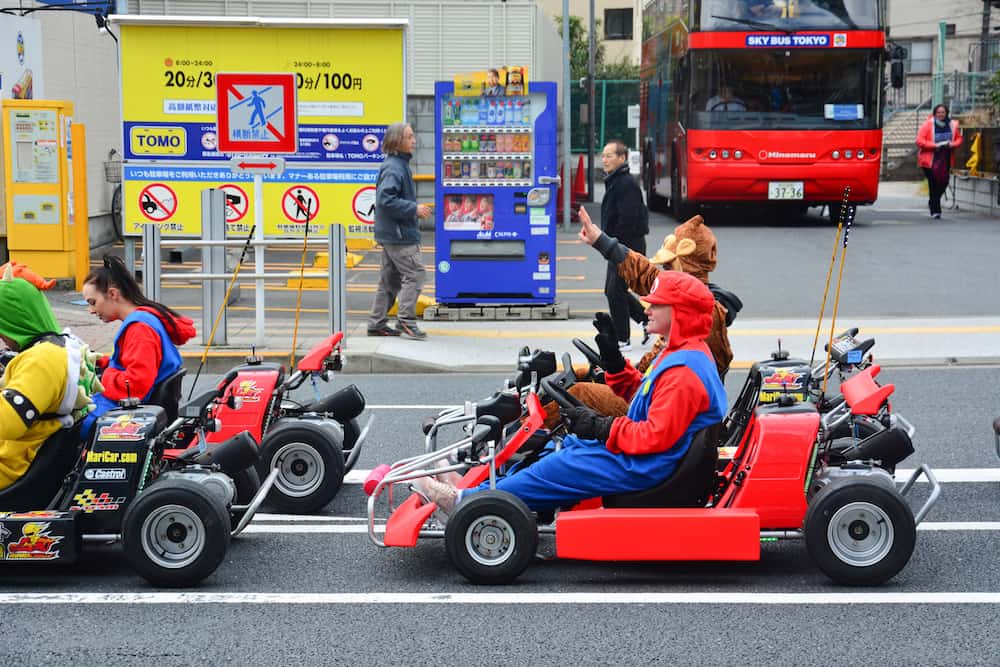
2 Day Tokyo Itinerary
By now you must be wondering how many attractions and activities you can fit into two days in Tokyo. It’s always up to you to decide how packed or relaxed you want your trip to be! Here’s a sample Tokyo 48 hour itinerary you may like to follow.
Make use of your Tokyo pass early on and catch the train to Shibuya. From the station, walk to Kanetanaka So for one of the most authentic Japanese breakfasts in the city.
After your meal, you can witness the early morning Shibuya Scramble and meet Hachiko’s statue. Wander through the luscious Yoyogi Park on your way to the Meiji Shrine.
Next, walk through Harajuku to get a glimpse of the colourful street art and out-there fashion, then visit the Watari Museum of Contemporary Art. Catch the Chiyoda line to get to the architecturally stunning National Art Centre. Walk to Ippudo Roppongi for a delicious late lunch of ramen.
Relax in the quaint Hinokicho Park, visit the Tokyo Tower (head to the top to see all of Tokyo), then head to Hinode Pier. End the day with a dinner cruise and oiran show along the Tokyo Bay.
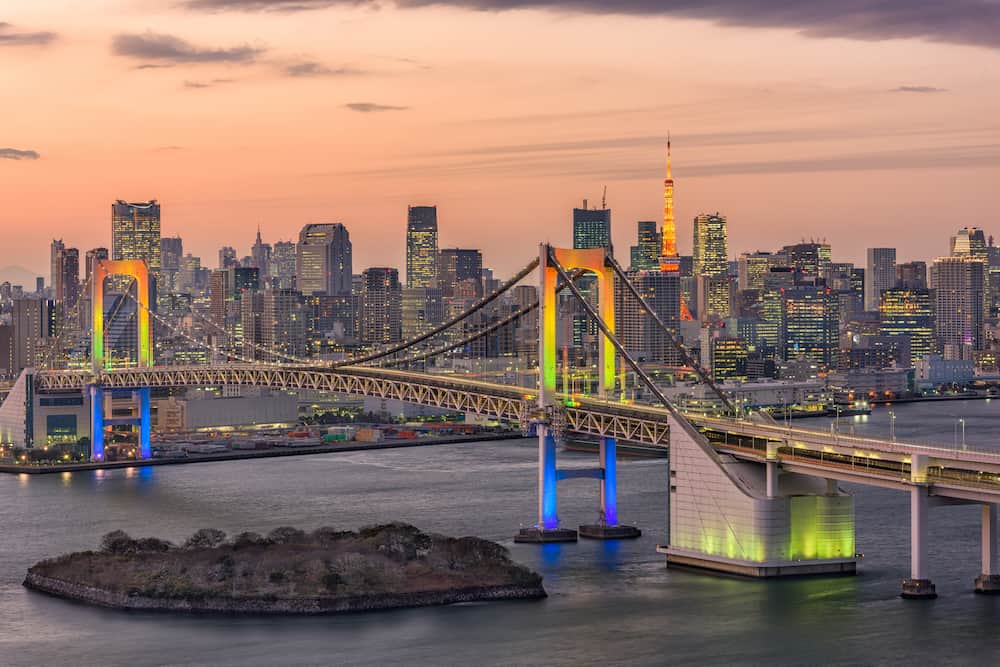
Make your way to Chūō-ku for a big breakfast at K’shiki , then wander around or take a guided tour of the Imperial Palace. You can also pop over to the nearby National Museum of Modern Art.
When you’re done, take the Tozai and Ginza lines to reach the vibrant Kanda Shrine. Afterwards, catch the Ginza line again to get to Ueno Park. Inside the park, you will find a quaint Japanese kaiseki spot, Inshotei .
After lunch, relax at the beautiful Shinobazu Pond, then delve into the Tokyo National Museum and the Tokyo Metropolitan Art Museum.
Next, make your way to Asakusa to explore Sensoji Temple and the surrounding shrines and gates. Get some millet dumplings and imo yokan as you head back down Nakamise Street for some souvenir shopping. Complete your Tokyo trip with dinner and drinks at the famous Kamiya Bar nearby.
While you should still leave time to explore anything that may come up, planning ahead and knowing what to do in Tokyo will save you a lot of stress. I hope this guide and 2 days Tokyo itinerary have inspired you to organise your next trip!
FAQs About tokyo in two days
What should i pack for a two day visit to tokyo.
You should bring clothes that are suitable for the season you’ll be visiting in, and make sure you have comfortable walking shoes.
Depending on how cold or hot it is, you should also bring a light jacket and/or umbrella. If you plan to do any shopping, remember to bring enough cash!
What attractions should I visit if I only have two days in Tokyo?
There are countless attractions in Tokyo that would be worth your time but some popular spots include Senso-ji Temple in Asakusa, Meiji Shrine near Harajuku and Shinjuku Gyoen National Garden for beautiful scenery.
Make sure to also take the time to explore the various neighborhoods of the city such as Akihabara (for electronic gadgets) and Shibuya (for its famous “scramble crossing”).
are 2 days in tokyo enough?
Tokyo is an amazing city with so much to offer, but two days is not enough for a full experience. Certainly, you could get to know the basics of the city during this time.
Explore some main streets and popular attractions, sample different cuisines in renowned eateries, take part in cultural activities like a tea ceremony or karaoke night.
But with only two days there’s so much more that you miss out on! To really appreciate the vibrancy of Tokyo and be able to visit all its most iconic sites, we suggest four days minimum.
how many days do you really need in tokyo?
You really can get the best of Tokyo in a few days, but if you want to see everything it has to offer, it’s best to plan at least a week.
This gives you enough time for sightseeing and exploring popular neighborhoods like Shinjuku or Shibuya.
Even if you don’t have 7 days, there are plenty of attractions and experiences that you won’t want to miss in just two or three days.
But if you give yourself some extra time, you’ll be able to see more of the city and perhaps uncover hidden gems along the way.
Final Thoughts: 2 day itinerary tokyo
The best way to make the most of this two day itinerary for Tokyo is to mix and match it with your own preferences. Don’t be afraid to take a tour or two for that extra insight into the city.
You’ll be able to learn so much more about Tokyo’s rich history and culture from an experienced local guide. By doing this you will also get to experience some parts of the city that you may not have known existed – so don’t forget your camera! No matter if you prefer traditional temples, modern skyscrapers, bustling nightlife or just meandering through the alleyways – Tokyo has something for everyone!
So don’t be afraid to take the plunge and plan your own unique journey through Japan’s capital. With this itinerary as a starting point, who knows what magical sights await you?
- Where to Stay in Tokyo Japan
- A few of the Coolest Things to do in Tokyo + Day trips From Tokyo
- The Best Day Trips from Tokyo
- Budget Guide for Tokyo
- Luxury Travel Guide to Tokyo
5 day Itinerary for Japan
- Budget Travel Guide for Japan
- 10 Dishes you Must Try in Japan
- Best Dog Friendly Hotels in Tokyo : A Guide for Every Budget
If you’d like to save it for later, please save it to Pinterest.
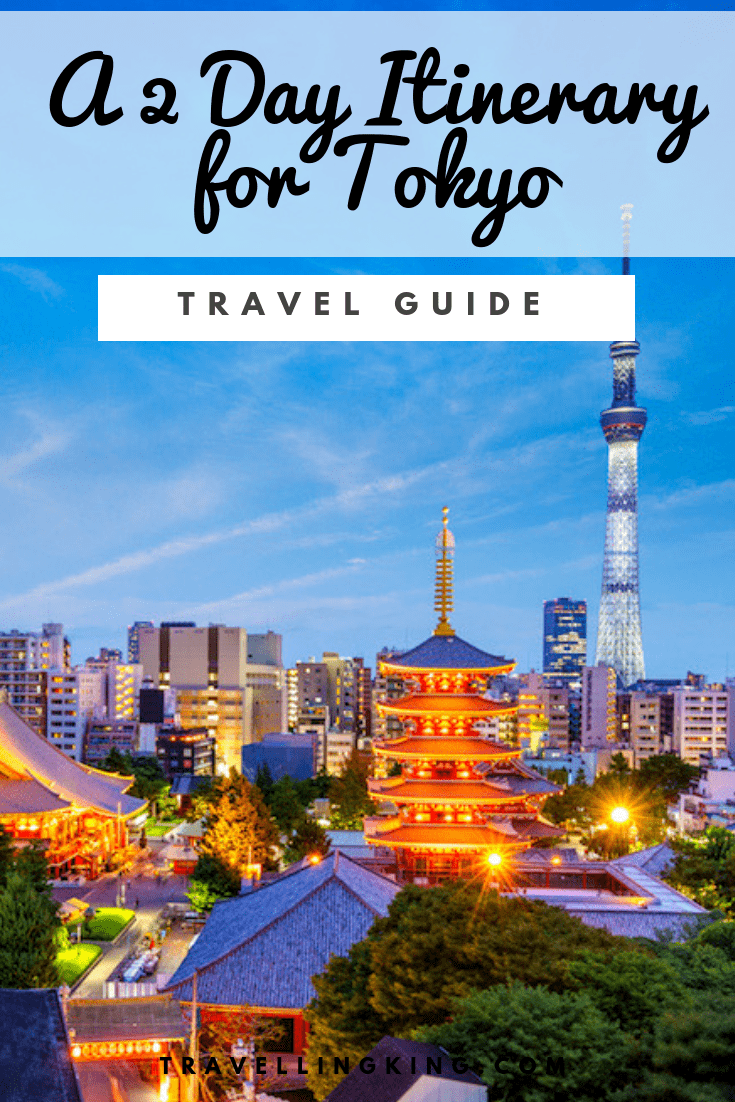
Sam, a seasoned traveler across four continents and 49 countries, is a leading authority in travel planning. Her website, Travelling King, offers tailored itineraries and expert guides for seamless trips. Sam's expertise in luxury travel, fast travel, and destination guides keeps her at the forefront of the travel community.
Similar Posts
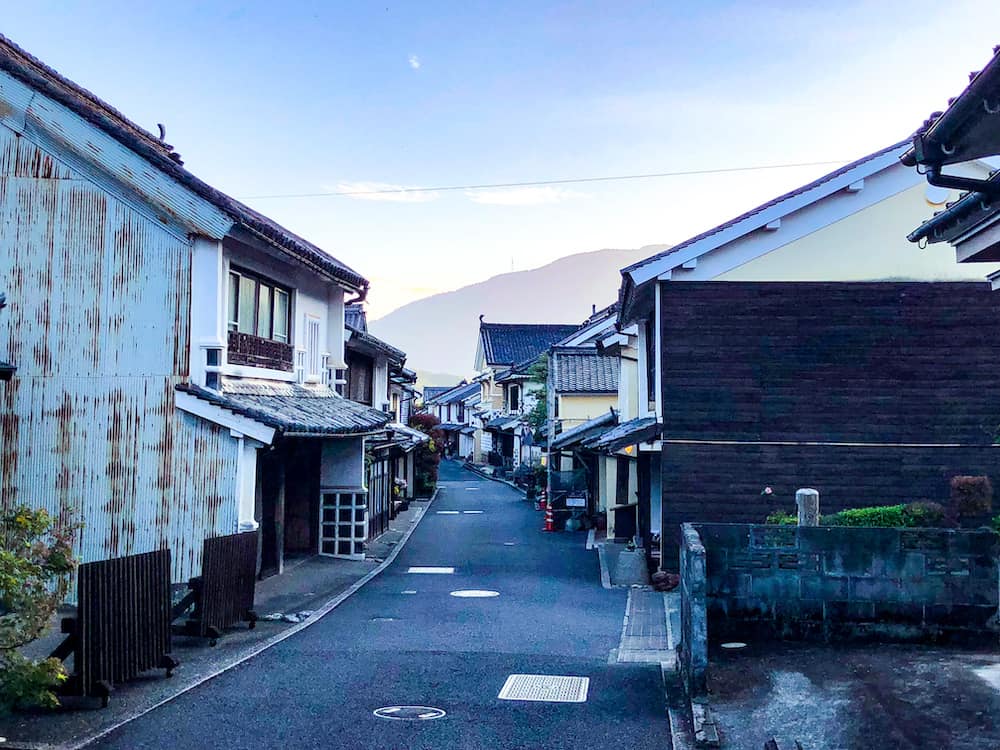
Five days in Japan is never going to be enough but hey, it’s a great place to start, in…
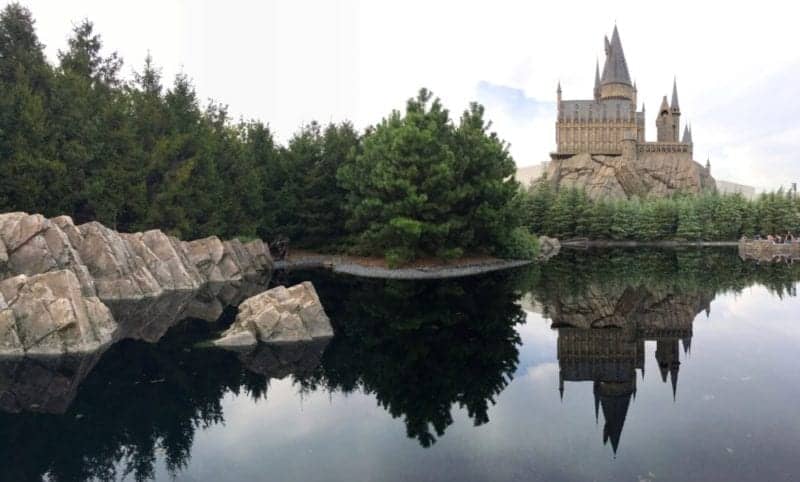
A Day at Universal Studio Japan – Photo Blog!
Let me take you through my day at Universal Studio Japan – I had such a busy full on…

Where To Experience Breathtaking Views In Japan
Japan itself is a breathtaking destination, filled with unlimited exploring to do. Timeless culture, the finest food, local beauty,…
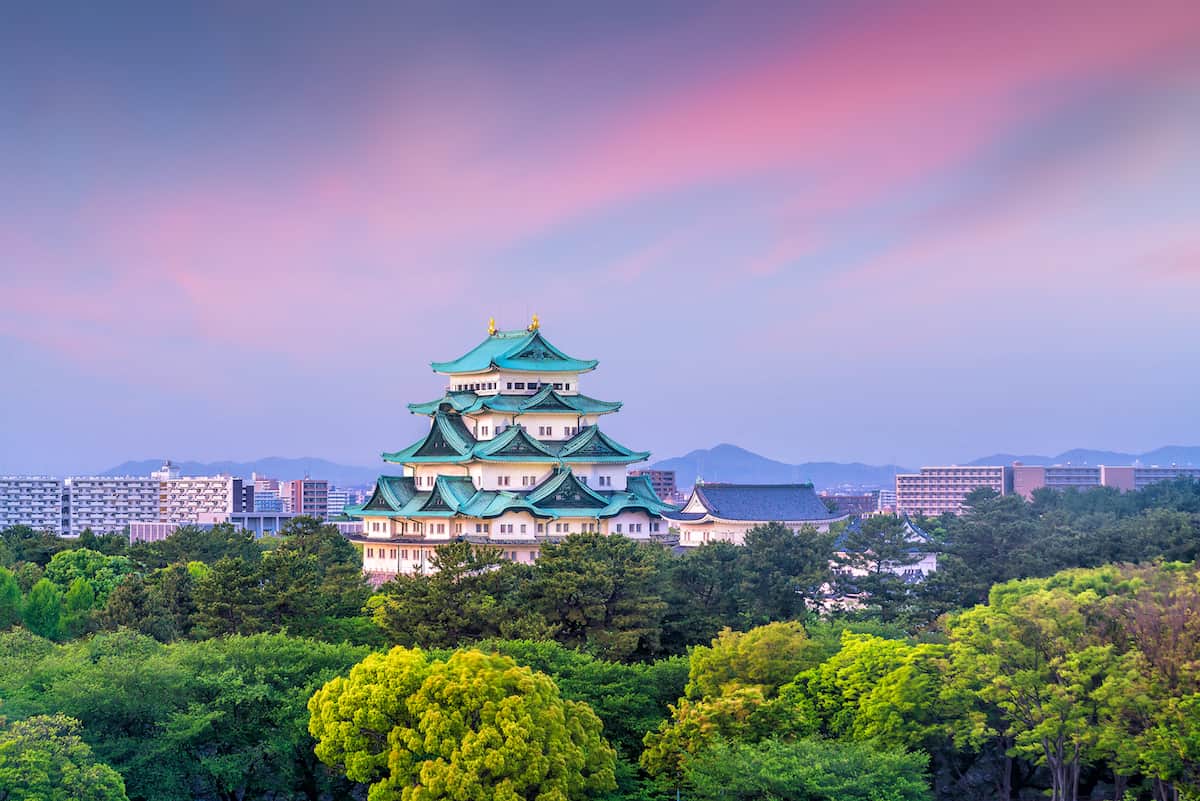
48 Hours In Nagoya – 2 Day Itinerary
Nagoya – a city in the Chubu region on Honshu island – is often overlooked by tourists, but it’s…
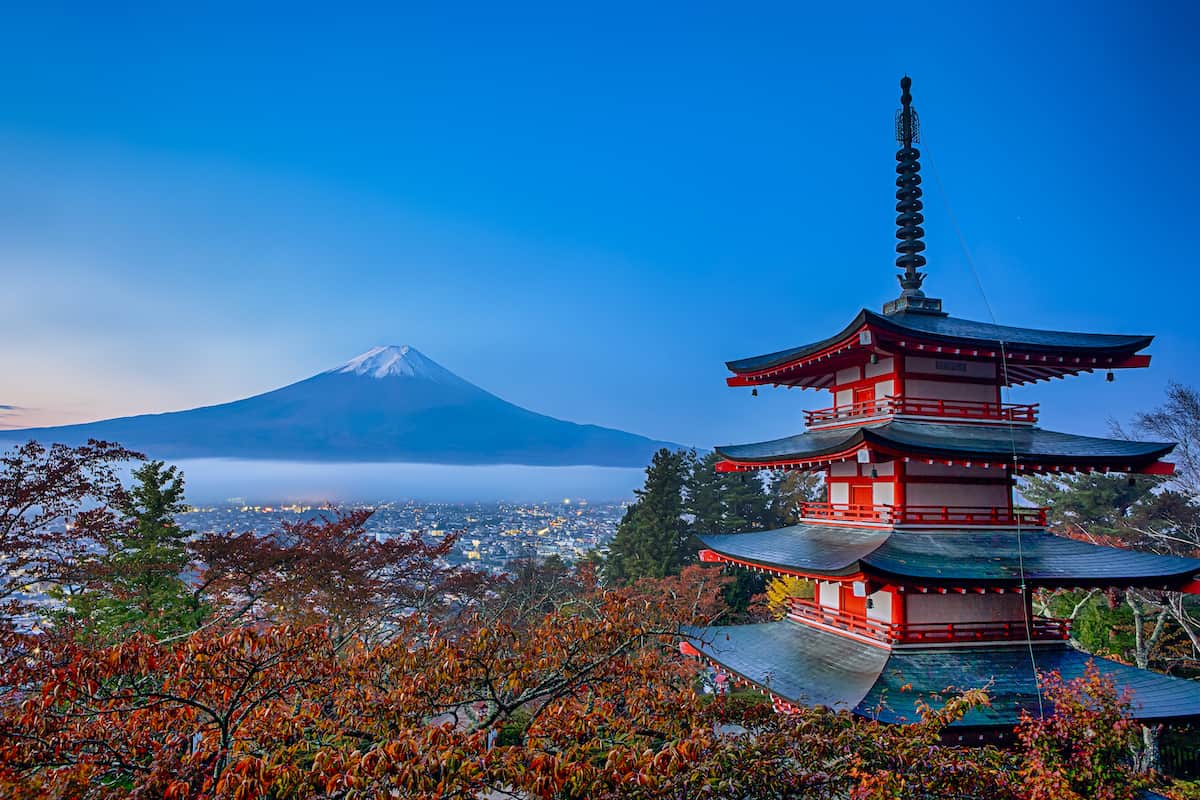
best apps for travelling in japan
Throughout my travels, I have sat and wondered how we would all manage without the countless useful apps currently…
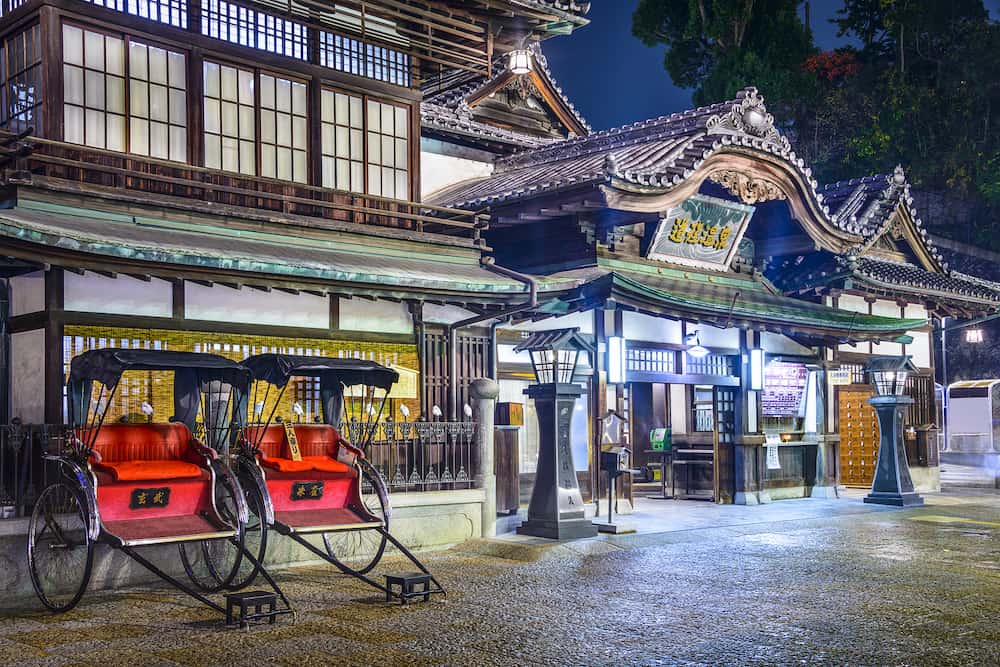
Ultimate Travel Guide to Matsuyama
Located on the Japanese island of Shikoku, Matsuyama is a peaceful yet bustling city that’s often overlooked by first-time…
Tokyo Travel Guide

2-days Itinerary in Tokyo
- 2-Day Itinerary
- All Things To Do
- 1-Day Itinerary
- 3-Day Itinerary

Tokyo National Museum Tokyo National Museum
If you're looking to learn a little (or a lot) about Japan's history, the Tokyo National Museum is the place to go. This museum is one of the country's most expansive, housing about 120,000 pieces of art and artifacts that cover the longest recorded history of Japan. Strolling through the halls of its numerous buildings, you'll spot relics such as samurai armor and swords (a traveler favorite), delicate pottery, kimonos, calligraphy, paintings, and much more, some of which are designated as national treasures and “important cultural properties” by the Japanese government. In addition to artifacts from Japan's history, you'll also find pieces from all across the Asian continent, including Buddhist scrolls that date all the way back to the 7th century.
Travelers were impressed with all that the Tokyo National Museum has to offer. Even some who admitted they aren't "museum people" enjoyed the variety of unique artifacts on display. Travelers appreciated that the museum featured English translations, something that some visitors noticed other Tokyo top attractions lacked (like the Ghibli Museum ). Museum goers also say that there is so much to see in the Tokyo National Museum that you probably need an entire day if you want to get through everything. If you don't have enough time to do this (or just don't want to) the best thing to do is get a map of the museum beforehand and pick what you want to do before you venture in.

Senso-ji Temple, Asakusa Senso-ji Temple, Asakusa free
The oldest religious site in Tokyo is also its most visited. The Senso-ji Temple sees about 30 million annual visitors and its inception dates all the way back to year 628. Despite its claim to antiquity, however, the structures that currently stand are relatively new reconstructions of previous edifices (during World War II, nearly the entire temple was razed). The Senso-ji Temple is dedicated to Asakusa Kannon, the Buddhist god of mercy and happiness. According to legend, two fishermen struck gold and found a statue of the god while fishing on the Sumida River. The Senso-ji shrine is dedicated to this lucky catch and features a small homage to the fisherman who caught the statue. Unfortunately, while here, you won't be able to see the actual statue. It is there, but it isn't on public display (it never has been). Either way, Buddhists and interested tourists alike flock to this attraction with the hopes that being in the presence of Kannon's healing powers will rub off on them. After you've properly toured Senso-ji, take some time to check out the shops that line Nakamise Dori, which you'll find on the way to the temple.
The majority of travelers enjoyed their experience at the Senso-ji Temple, with some saying a visit to Tokyo isn’t complete until make a stop here. Visitors found the temple to be beautiful and enjoyed admiring its grand stature and intricate architectural details. The only complaint among travelers was with the attraction and all the activity surrounding it; Senso-ji can get so crowded that it can be difficult to be able to simply admire the attraction. If you don't want to share space with throngs of tourists, visitors suggest coming early morning or late at night.

Imperial Palace Imperial Palace free
You'd think the Imperial Palace would be mobbed with tourists, but it's not. You can credit the lack of crowds to an application policy, which limits the number of visitors. That's because the Imperial Palace is home to the Emperor of Japan and his immediate family. And before that, it was the residence for some of Japan's most important figures, including Emperor Meiji (credited for modernizing Japan) and rulers during the Edo Period (the time period before Japan was modernized by Meiji). Because of its significant importance in Japanese society, admittance to the site is hard to get (you have to put in your application several weeks in advance) and access inside the actual palace is even more restricted.
As such, most travelers suggest skipping the application entirely (those who went on the tour were disappointed with how little of the palace is open to visitors) and admiring the compound from afar. Visitors also say the East Gardens, which are part of the Imperial Palace complex, are much more of a sight to see. This flourishing green space has plenty of shady spots and open fields, perfect for relaxing. And during cherry blossom season, these gardens are a choice spot for locals looking to enjoy the seasonal foliage.

Meiji Shrine Meiji Shrine free
The Meiji Shrine is a Shinto (Japan's original religion) shrine dedicated to Emperor Meiji and Empress Shoken. Japanese history credits Meiji for modernizing Japan by incorporating Western principles into Japanese society, including adopting a cabinet system into government. After the emperor's death in 1912 and that of his consort in 1914, the Japanese commemorated their contributions with the Meiji Shrine. While the buildings are certainly worth visiting, the surrounding forest (considered part of the vast Yoyogi Park) is a sight to see as well. That's because 100,000 of the trees standing were all donated by Japanese people from around the country as a thank you to the emperor.
While at such a sacred site, take time to partake in traditional rituals. When entering the shrine, you'll first see the Torii , or the shrine's large archway. It's traditional to bow once entering, then again when you leave. To foreigners, the Temizusha may appear to be a drinking fountain, but it's actually a cleansing station where visitors have the opportunity to purify themselves with holy water. It's common to wash your hands and rinse your mouth out, but don't drink the water. When approaching the main shrine, it's customary to pay your respects by bowing twice, then clapping your hands twice and bow once again. Carrying out such respects are optional, the rules of the shrine are not. Don't photograph the interior of the buildings; don't eat, drink or smoke unless you're in designated areas.

Tsukiji Outer Market Tsukiji Outer Market free
You don’t have to be a sushi connoisseur to enjoy the Tsukiji Outer Market, which offers an unforgettable experience. Even before Tokyo’s international wholesale fish market – the largest in the world – moved to the Toyosu district in 2018, the Tsukiji Outer Market was a popular place to buy a variety of food and kitchenware. Today, hundreds of different types of seafood are sold here, ranging from basics (like tuna) to the exotic. If all the excitement and bartering starts to make you a little hungry, don't hesitate to grab a bite here. There are numerous sushi stalls and tiny restaurants in the market (Sushi Sei Honten and Sushizanmai are popular spots) that serve fish at their freshest. But if you aren't much of a seafood fan, no matter. There's still something for you here. The market features a few ready-made meal stalls that aren't all seafood-based, including Mosuke Dango, where you'll find sweet dumplings. What’s more, retail stalls selling kitchenware items like knives and tableware also set up shop.
Recent visitors offered mixed reviews for the Tsukiji Outer Market, noting that prices were higher than the original market that moved to Toyosu. If you're not a fan of seafood, or you don't enjoy overstimulating and/or crowded places, visitors say this is not the attraction for you. Travelers say this market is huge and very busy, especially on Saturdays. Those who do enjoy seafood will no doubt be in awe of the vast array of fresh and delectable seafood options available, so much so that reviewers strongly suggest coming hungry as you'll probably end up eating more than you planned. Travelers were also delighted in the market's lack of a pungent, fishy smell.

Ginza Ginza free
U.S. News Insider Tip: Tucked on an alleyway, Kagari Ramen offers a not-to-miss truffle chicken ramen that people begin to line up for in the early afternoon. Get there early and grab a ticket for entrance. – Kristin Braswell
New York has Fifth Avenue, London has Bond Street, Paris has the Champs-Élysées and Tokyo has Ginza. The neighborhood is a shopper's paradise, housing all types of storefronts from affordable, big-name retailers, such as H&M and Zara, to upscale design houses, such as Dior, Armani and Cartier. You can also find specialty stores selling traditional items, such as kimonos, incense and chopsticks. There's also a plethora of Hello Kitty products at the Sanrio flagship store located here, as well as all the toys your kid's heart desires at the massive Hakuhinkan Toy Park.

Odaiba Odaiba free
Envision a mini Atlantis rising out of the water, conveniently right next to downtown Tokyo. That's Odaiba. This neighborhood and human-made island situated on the Tokyo Bay is a hub of entertainment, eateries and eye-catching architecture, including the futuristic-looking Fuji Television building and the life-size Unicorn Gundam Statue. Some of the area's top attractions include the National Museum of Emerging Science and Innovation and the relaxing Odaiba Seaside Park, which comes equipped with an artificial beach and Tokyo's own Statue of Liberty (scaled down).
Along with the Legoland Discovery Center, there’s also the DiverCity Tokyo Plaza and Decks Tokyo Beach facility, which offers lots in the way of dining and shopping in addition to entertainment options.

National Museum of Emerging Science and Innovation (Miraikan) National Museum of Emerging Science and Innovation (Miraikan)
The National Museum of Emerging Science and Innovation, commonly referred to as the Miraikan, attests to Tokyo's entrepreneurial spirit and penchant for science and technological innovation. This high-tech museum features a plethora of exciting interactive displays spread across three themed permanent exhibits. In "Explore The Frontiers," visitors can learn about space exploration by stepping into a model of the International Space Station. There's also "Discover Your Earth," where you'll find a large LED-paneled Earth sculpture, as well as the robotics-heavy "Create Your Future" exhibit. Make sure you get an eyeful of Honda's impressive ASIMO robot while here. ASIMO has opposable thumbs, can run, and even kick a soccer ball (as it did with President Obama in his 2014 visit to the museum). Kids will particularly enjoy the displays as they can touch, climb on and play with many of them. The museum also features science workshops for kids, talks from researchers and the Dome Theater GAIA.
Despite its draw, many travelers offered mixed reviews of the museum. Some reported feeling like kids, amazed at the vast amount of things to learn and do, while other adults said the museum is best suited for children. Some visitors also found the exhibits to be lacking, saying the information provided was very basic. Those who did bring their kids in tow said they had a ball.

Akihabara Akihabara free
Akihabara is nirvana for techies. Tokyo's premier electronics district, which is also referred to as "Akiba," has gadgets of all kinds found in booths on side streets and main street mega department stores. You'll spot the latest technology on the shelves, which will probably put your equipment to shame. And if you're in the market for hard-to-find bibs or bobs, you're likely to find that here, too. If you're unsure where to start, stop at the larger-than-life Yodobashi Camera store (often billed as the largest electronics store in the world) or stroll along the neighborhood's main street, Chuo Dori, which becomes car-free on Sundays for select hours. In addition to being an electronics hub, Akihabara also caters to serious gamers, anime and manga lovers. Here, you'll find loads of gaming arcades as well as shops and street stalls selling comics and character figurines. You'll also probably spot a few cosplayers casually walking down the street.
While Akihabara is no doubt unique, recent travelers had mixed reviews about the district. Those who expressed interest in anime loved their visit, saying you can't leave Tokyo without experiencing the world Akihabara has to offer for fans. Those without a greater interest in the subject matter enjoyed the buzzing activity and plethora of neon signage that permeated the area, but ended up growing bored after a period of time. Some were offended by the inappropriate nature of some of the anime culture (think: maid cafes), so this area may not be suitable for all travelers. Visitors solely interested in shopping for electronics felt overwhelmed by the options and recommended researching in advance to maximize your time in the neighborhood.

Tokyo Tower Tokyo Tower
The Japanese iteration of the Eiffel Tower serves a predominately practical purpose. The orange and white tower, which stands 1,092 feet tall, is a radio and television broadcasting structure supporting 62 miles of frequencies. The tower also caters to tourists, offering two observation decks, one at 490 feet (the main observatory) and one at 820 feet (the special observatory). The observation decks offer 360-degree views of Tokyo's sprawling cityscape and come equipped with placards that point out notable buildings in the skyline. And if you visit on a really clear day, you'll be able to spot Mount Fuji in the distance. The Tokyo Tower also has its own cafe, where patrons can sip tea while admiring the views, as well as Club 333, a music venue that hosts performances daily. And if you're on the hunt for souvenirs, travelers say this is a surprisingly great place to peruse thanks to all the on-site shops.
The best time to visit the Tokyo Tower is at night, according to reviewers. That's because the tower lights up beautifully, and often in multiple colors depending on when you visit. You'll also encounter stunning vistas from atop Tokyo SkyTree, a much taller tower located about 8 miles northwest, but you'll have to combat hordes of fellow tourists. Recent visitors said of the two towers, this one is less crowded.

Popular Tours

Mt Fuji and Hakone 1-Day Bus Tour Return by Bullet Train
(12298 reviews)
from $ 166.97

Tokyo Sumo Entertainment Show with Chicken Hot Pot and Photo
(251 reviews)
from $ 113.24

1-Day Tokyo Bus Tour
(7972 reviews)
from $ 123.41
Explore More of Tokyo

Best Hotels

When To Visit
If you make a purchase from our site, we may earn a commission. This does not affect the quality or independence of our editorial content.
Recommended
30 Fun Fall Weekend Getaways for 2024
Holly Johnson August 29, 2024

The 19 Best Fall Family Vacations for 2024
Amanda Norcross August 27, 2024

The 28 Best Water Parks in the U.S. for 2024
Holly Johnson|Timothy J. Forster May 8, 2024

The 18 Best Napa Valley Wineries to Visit in 2024
Lyn Mettler|Sharael Kolberg April 23, 2024

The 25 Best Beaches on the East Coast for 2024
Timothy J. Forster|Sharael Kolberg April 19, 2024

The 50 Best Hotels in the USA 2024
Christina Maggitas February 6, 2024

The 32 Most Famous Landmarks in the World
Gwen Pratesi|Timothy J. Forster February 1, 2024

9 Top All-Inclusive Resorts in Florida for 2024
Gwen Pratesi|Amanda Norcross January 5, 2024

24 Top All-Inclusive Resorts in the U.S. for 2024
Erin Evans January 4, 2024

26 Top Adults-Only All-Inclusive Resorts for 2024
Zach Watson December 28, 2023


Ultimate Tokyo 2-Day Itinerary: What to Do With 48 Hours in Tokyo
- Written by: Matt Vachon
So you have found yourself in Tokyo with a minimal amount of time to spend. Maybe you’re here on an extended layover while passing through to another destination. Perhaps Tokyo is just one small part of your vacation to Japan. Regardless of the reason, one fact remains clear - you have stepped off the plane, and the clock is ticking. Tackling Tokyo in just two days is no small feat; it’s one of the biggest cities in the world, after all. Follow the winding streets through its wildly varying neighborhoods, and you will quickly realize how easy it is to become overwhelmed here. In order to make the best use of your time, a well-thought-out itinerary is a must. For those seeking the “quintessential Tokyo experience,” look no further.
What to do in 2 Days in Tokyo
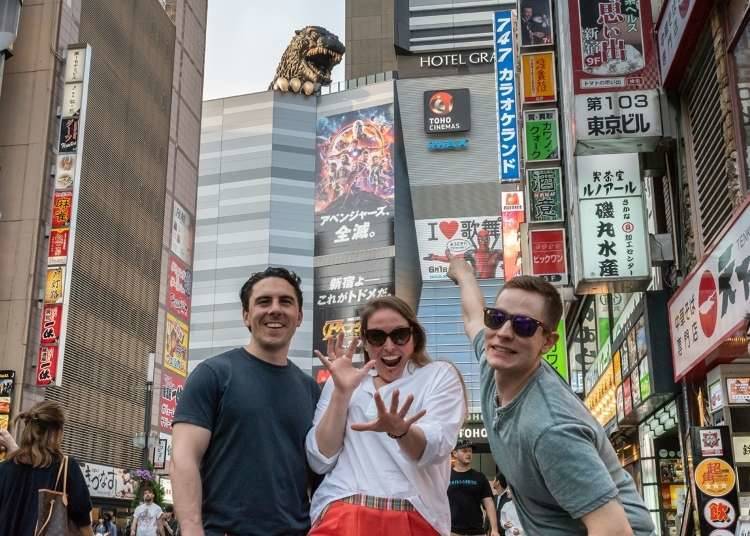
While you will undoubtedly want to see and do as much as possible over the next two days, it’s important not to rush through everything and skimp on the overall experience. Therefore, the following guide has been laid out in a way that if followed in order, will maximize the amount of places you can see while still allowing time to enjoy the moment at your own pace.
Day One in Tokyo
1. shinjuku gyoen - 9:00 am.
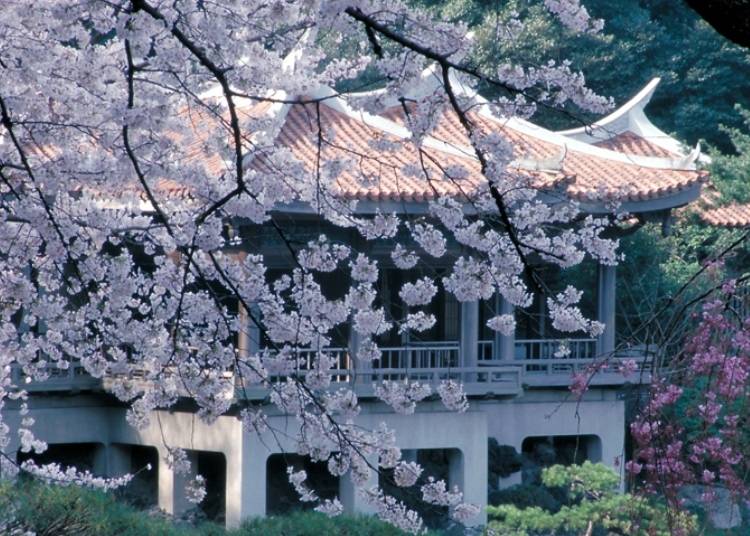
What better way to begin your Tokyo adventure than by getting into a zen-like state of mind with a walk through an authentic Japanese garden ? Despite its location in the heart of the city, Shinjuku Gyoen’s massive public green space feels far removed from the non-stop pace of its urban surroundings. This is a great first stop on your 48 hour Tokyo adventure as it opens earlier than most local attractions and provides a glimpse into a quieter, more traditional side of Japan without leaving the city. The park opens at 9:00 AM, so I recommend leaving your hotel by 8:30 and coming here early to enjoy the morning serenity and start your day with a traditional cup of matcha at one of the park ’s two teahouses. Hours: 09:00 - 16:00 Tuesday through Sunday. The park is closed on Mondays. Price: Admission to the park is \200. How Much Time to Spend Here: Assuming you arrive at 9:00 AM for the opening, aim to spend 1.5 hours in the park - 15-30 minutes for tea and 1 hour for walking through the gardens and enjoying the scenery. As Tokyo is a city that tends to get started on the later side, you can take your time here before heading off to your next destination.

- Address 11 Naito-cho, Shinjuku-ku, Tokyo, 160-0014 View Map
- Nearest Station Shinjuku-Gyoemmae Station (Tokyo Metro Marunouchi Line) 5 minutes on foot
- Phone Number 03-3350-0151
2. Akihabara - 11:00 AM
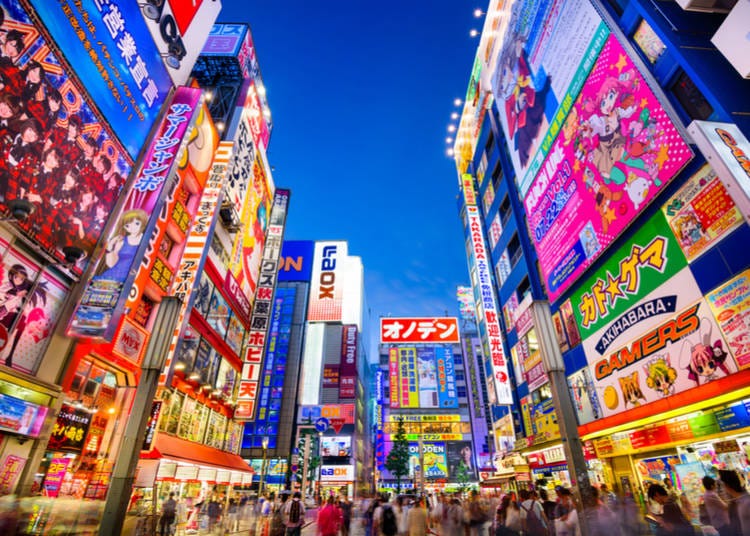
As the global hub of otaku culture, there is an inexplicable sense of wonder about Akihabara shared by self-proclaimed manga nerds and curious outside observers alike. Whether or not you find the prospect of hunting for scale replicas of your favorite anime character thrilling, the fact remains that Akihabara truly has something for everyone. If you are following this guide, you should arrive in Akihabara around 11:00 AM. This is a great window of time, as most stores will be open by this point, but it is still early enough to beat the majority of the crowd. Start your experience at one of the many arcades scattered throughout the neighborhood. Challenge your friends to the seemingly endless array of games , or if you’re on your own, try your hand at winning a plushy new friend from one of the many UFO Catcher machines. Afterward, grab some tapioca tea (the Japanese term for bubble tea) at a nearby maid cafe . These iconic cafes have become a staple in otaku culture and are often recognizable to fans of anime and Japanese media worldwide. Not sure where to find one? Don’t worry. It will find you. Walk for more than 30 seconds in Akihabara , and you are bound to come across girls in maid cosplays encouraging you to visit their cafe . Lastly, no trip to Akihabara is complete without a little souvenir shopping . Affectionately dubbed “the world’s largest electronics district,” if you can’t find what you’re looking for amongst the dense sea of back-alley shops, it very well may not exist. There is a store for just about everything you can imagine here, from appliances, action figures, to vintage video games and beyond. Shop around for the perfect Tokyo souvenir, but set a time limit. It’s easy to lose track of time and spend an entire day browsing these stores. How to Get Here From Shinjuku Gyoen: From Shinjuku -Sanchome station, take the Marunouchi line towards Ikebukuro to Yotsuya. From here, change to the Chuo-Sobu line towards Tsudanuma and get off at Akihabara station. Travel Time: Approximately 30 minutes. How Much Time to Spend Here: It’s easy to get overwhelmed here with how much there is to see and do, but aim to keep your visit under two hours. This should still leave you plenty of time to play a few arcade games , browse some shops, grab a snack, and be on your way to your next destination by 1:00 PM.

- Address Sotokanda, Chiyoda-ku, Tokyo Chuo-dori, 101-0021 View Map
- Nearest Station Akihabara Station (JR Keihin-Tohoku Line / JR Yamanote Line / Tokyo Metro Hibiya Line / Tsukuba Express / JR Sobu Line)
- Phone Number 03-3257-0568
3. Visit Senso-ji Temple - Around 1:30 PM

While it’s not uncommon to think of Tokyo only in regards to its modern aspects, it’s important to note that this city contains a great deal of history as well. One of Tokyo's most visited historical spots is Senso-ji Temple in Asakusa . Built in 645 A.D., it is the oldest temple in the city. Famous for its large red lantern ( chochin in Japanese), five-storied pagoda, and shopping stalls on Nakamise Street; Senso-ji is a rite of passage for any Tokyo visitor. There’s not necessarily a “good time” to get here; it’s almost always crowded, but getting here around lunchtime is in your best interest. With all the shops and food vendors on Nakamise Street, you’ll be able to try a sampling of classic Japanese street foods such as yakisoba, takoyaki , and okonomiyaki . If you’re in the mood for a more substantial sit-down lunch, there are plenty of nearby restaurants to choose from. Asakusa is highly regarded for its soba noodles, which can be found at many local shops.
Once you’ve eaten, it’s time to head into the temple . For the authentic experience, first, stop by the large incense burner outside and fan some of the smoke onto yourself. Incense smoke is believed to have healing powers, so people typically cleanse themselves with it before entering. Next, visit the purification fountain just outside the entrance. There will be several large ladles laid out for you to use. Fill a ladle with water and rinse one hand, then the other. Depending on how strictly you want to adhere to traditional customs, the final step of the purification is to rinse your mouth with the water. However, with Covid-19, currently, this area is often not possible to use. Upon entering the temple , you will find a large box with a slotted wooden top. This is a saisen, or offering box. Toss a coin into the box, press your hands together in front of your chest and pray quietly. Then bow once after you are done praying; you’ve officially completed your traditional Japanese temple visit! That process can be a bit confusing the first couple of times you do it, and understandably so. Just keep an eye on the people around you and do what they’re doing, and you’ll be fine. Afterward, explore the surrounding area for some souvenir shopping. There are many unique gifts to be found along Nakamise street. Be sure to stop and grab a drink at a nearby standing bar as well; a classic Japanese experience. How to Get Here from Akihabara : From Akihabara Station, take the Ginza line and get off at Asakusa station. Travel Time: Approximately 20 minutes. How Much Time to Spend Here: Given the regular crowds, Senso-ji is not an area that can be seen quickly. If stopping for lunch, shopping, etc. as well, plan to spend 3 to 4 hours here. However, don’t feel the need to rush. There is a great deal of culture in this area, and it should be thoroughly enjoyed.

- Address 2-3-1, Asakusa, Taitou-ku, Tokyo, 111-0032 View Map
- Nearest Station Asakusa Station (Tokyo Metro Ginza Line / Toei Asakusa Line / Tobu Isesaki Line (Tobu Skytree Line) / Tsukuba Express) 5 minutes on foot
- Phone Number 03-3842-0181
4. Tokyo Metropolitan Government Building - Around 6:00 PM
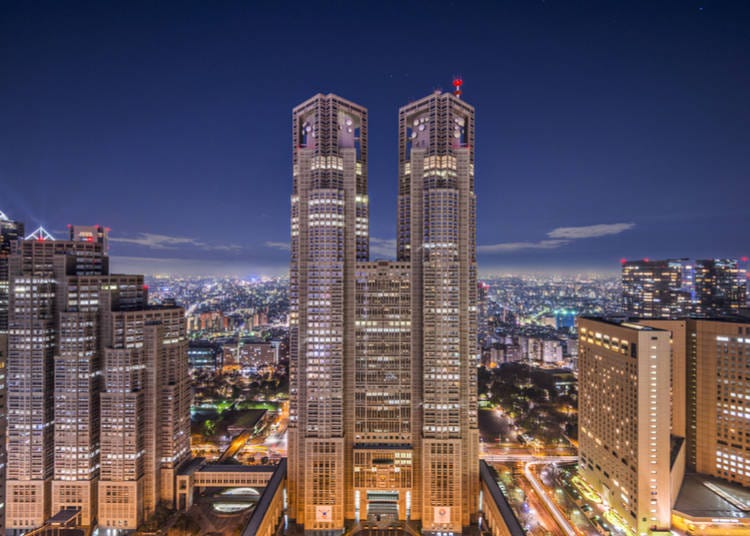
As the sun starts to set, make your way back to Shinjuku for an unbeatable view of the city. At the top of the Tokyo Metropolitan Government Building, there is a 360° observatory deck. While the observation deck at the top of Tokyo SkyTree may give you a view from higher up, the Tokyo Metropolitan Government Building is completely free, and the view is comparable. Be sure to check online for what time the sun will set that day, as it is a view you will not want to miss. There are separate north and south towers, both of which house observatory decks, but the south deck closes at 5:30 P.M. If you are here to watch the sunset, head to the north tower, which is open until 11:00 P.M. Try to arrive a little while before the sun goes down, as, on clear days, you can even spot Mount Fuji in the distance. If you are so inclined, there is also a cocktail bar in the north observatory deck where you can enjoy drinks while overlooking one of the best views of the city. How to Get Here From Senso-ji Temple : From Asakusa Station, take the Ginza line to Akasaka-Mitsuke Station. From here, change to the Marunouchi line towards Ogikubo and get off at Nishi- Shinjuku Station. Travel Time: Approximately 50 minutes. How Much Time to Spend Here: Feel free to take your time here, marveling over the view and taking photos. However, if you are eager to get back out and explore, visiting the observatory should take no more than 30 minutes to 1 hour, depending on if there is a line for the elevator.
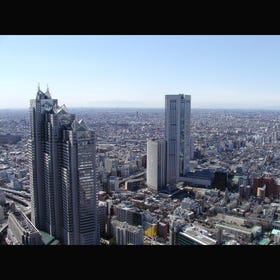
- Address 2-8-1, Nishishinjuku, Shinjuku-ku, Tokyo, 163-8001 View Map
- Nearest Station Tochomae Station (Toei Oedo Line)
- Phone Number 03-3277-2815
5. Explore Shinjuku’s Kabukicho Area - Around 7:00 PM
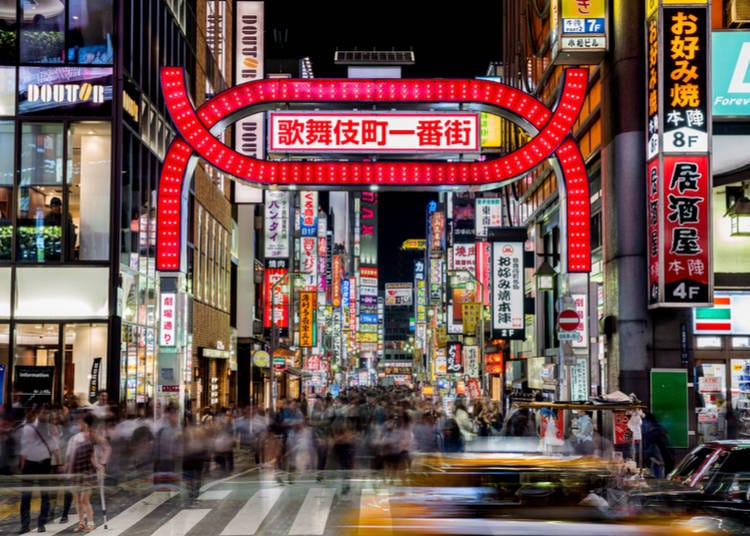
While not exactly the most family-friendly neighborhood in Tokyo, Kabukicho is certainly one of the most iconic . Its streets, densely packed with foot traffic and neon signs as far as the eye can see, is a familiar sight to anyone who has ever searched for pictures of the city online. The area is active all day, but it is best visited at night for the full visual effect. Though it is largely known as Tokyo’s red-light district, the area is also home to an impressive amount of bars , restaurants, shopping, arcades , and more. At the center of Kabukicho is the Toho movie theater , atop which you will find the massive, looming head of the legendary Godzilla. If for nothing else other than this, come to Kabukicho to snap the perfect Tokyo vacation photo . When you’re ready to eat, you’ll find there is no shortage of establishments to choose from. Two popular options with the late-night crowds of Tokyo are yakitori and kushiage. Yakitori translates to “grilled chicken,” and it is typically ordered by the skewer. Nearby, you'll also find kushiage restaurants that serve a variety of fried foods on a stick. For instance, at Kushiya Monogatari, you’ll find everything from vegetables, to cheeses, to fish fried up to crispy perfection and served on a skewer. These are fantastic options to prepare yourself for our next stop. Itadakimasu! How to Get Here From The Tokyo Metropolitan Government Building: From Tochomae station, take the Oedo line to Shinjuku -Nishiguchi station. Alternatively, the walk to Kabukicho only takes roughly 15 minutes. Travel Time: Approximately 10-15 minutes. How Much Time to Spend Here: Between eating, shopping, and taking photos, plan to spend around 3 hours in Kabukicho.

- Address Kabukicho, Shinjuku-ku, Tokyo, 160-0021 View Map
- Nearest Station Shinjuku Station (JR Shonan Shinjuku Line / JR Yamanote Line / JR Chuo Main Line / JR Saikyo Line / Tokyo Metro Marunouchi Line / Toei Shinjuku Line / Toei Oedo Line / Keio Line / Keio New Line / Odakyu Odawara Line)
6. Bar Hop in Shinjuku’s Golden Gai - 10:00 PM
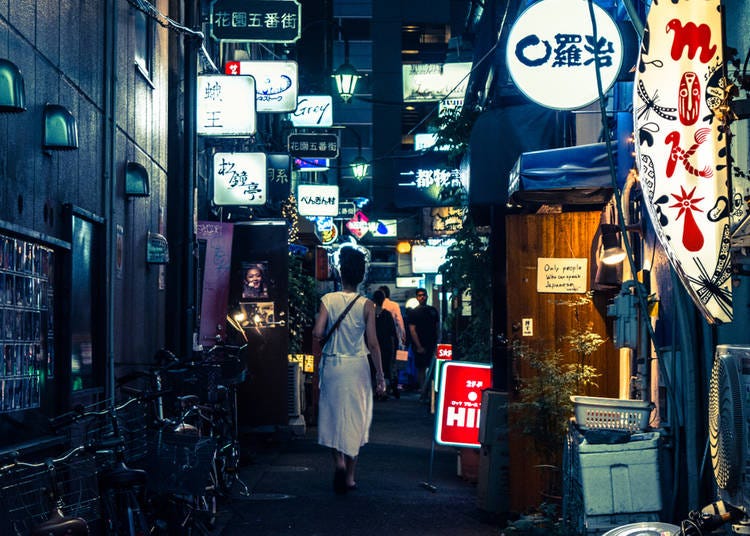
Spend a little time exploring the Tokyo nightlife , and you will quickly come to find that drinking is a big part of Japanese late-night culture. Perhaps there is no better a way to mingle with the locals than by bar -hopping in Golden Gai, a winding maze of eclectic little bars . Behind every doorway is a unique experience. One moment you’re in a tiny dive bar with vinyl records plastered on the walls. The next, you are tucked away in an attic crawl space lit by Christmas lights, cocktail in hand. What really adds to the charm of this place is that most bars contain no more than ten seats at most, so it’s almost impossible not to interact with other patrons. Alcohol plus close quarters equals great new friends in the Tokyo bar scene. However, keep an eye on signs posted outside the bars , as some will have a cover or minimum drink charge to keep seats from being taken by those just there for the scenery. How to Get Here From Kabukicho: Golden Gai is right next door, just a five-minute walk away. How Much Time to Spend Here: That is completely up to you! Bars in Tokyo are open till the sun comes up (and sometimes a bit beyond that as well), so feel free to spend as much time bar -hopping as you like. That being said, there is a big day ahead tomorrow, so you might want to get some sleep.
Day Two in Tokyo
1. tsukiji outer market.
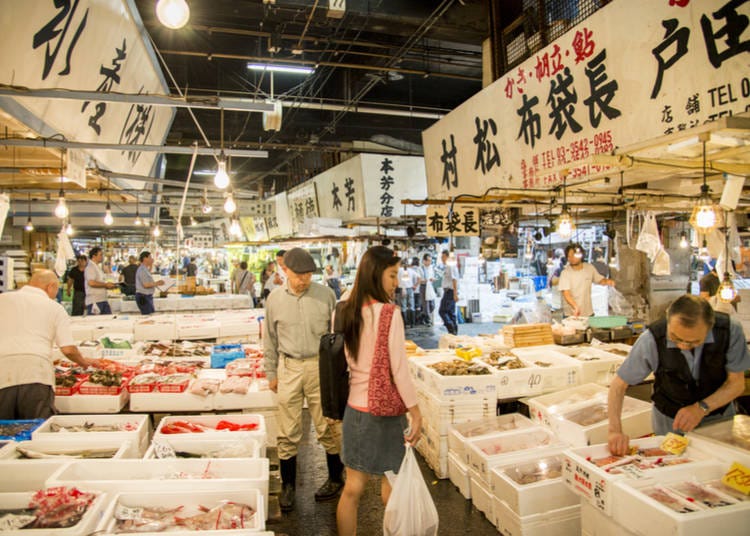
The name may not immediately jump out at you, but the Tsukiji Outer Market is a legendary Tokyo locale that should not be missed by any visitor. While the Tsukiji Fish Market functions were transferred to the current Toyosu Market , there is still lots to see and do in this area. The Outer Market is home to many restaurants that serve up some of the city's freshest seafood at bargain prices. For those looking to eat like the locals, many restaurants open early for you to indulge in a sushi breakfast. One spot, in particular, Sushizanmai, is well-known for being Japan’s first 24-hour sushi restaurant. How Much Time to Spend Here: Plan to arrive by 8:00 AM and spend around 2 to 3 hours if eating breakfast here. Those interested in street photography may want to spend a bit more time at Tsukiji capturing the early morning action.

- Address Amount of 1,000 ridge 1F, 4-16-2, Tsukiji, Chuo-ku, Tokyo, 104-0045 View Map
- Nearest Station Tsukijishijo Station (Toei Oedo Line) 1 minute on foot
- Phone Number 03-3541-9444
2. Relax at Odaiba
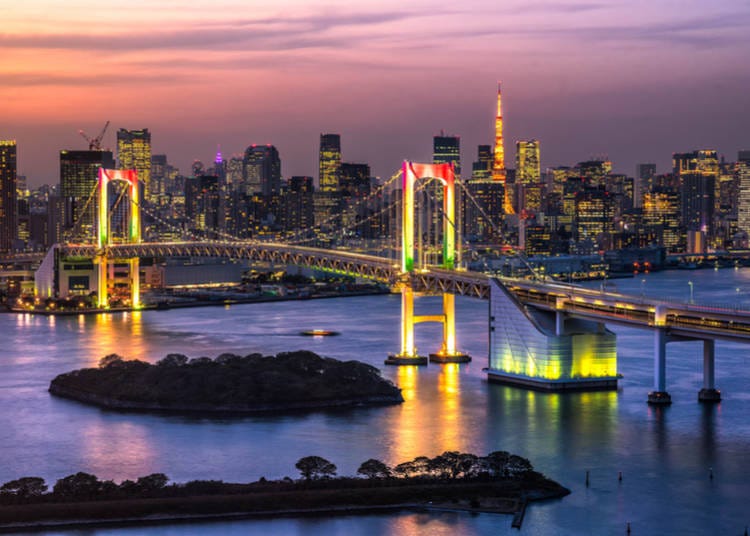
Assuming you started your morning early at the fish market, a leisurely waterfront afternoon will be the perfect thing to ease you into the rest of the day. Located in Tokyo Bay, Odaiba is an artificial island quickly becoming one of Tokyo’s most popular tourist hotspots. With its wide variety of shopping, restaurants and city views, it’s not hard to understand why. It’s best to visit Odaiba in the early afternoon before the large shopping crowds take over. After visiting Tsukiji , you should arrive in Odaiba around 10:00 or 11:00 AM and enjoy lunch at any of the area's shopping centers. How to Get Here from Tsukiji Fish Market: From Tsukijishijo station, take the Oedo line towards Roppongi and get off at Shiodome station. Change to the Yurikamome line towards Toyosu and get off at Daiba station. Travel Time: Approximately 35 minutes. How Much Time to Spend Here: On average, you can plan to spend roughly 3 hours in Odaiba shopping and eating. If you would like to visit the onsen as well, add on at least another 2 hours.
3. Visit Meiji Shrine
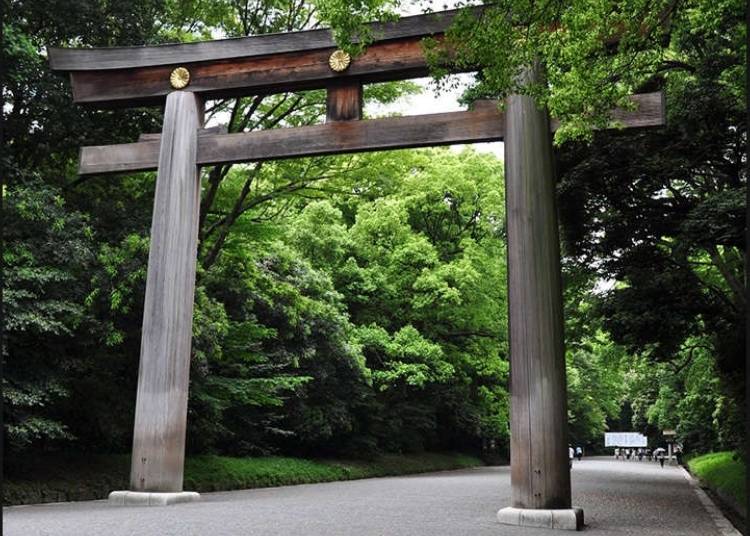
No trip to Tokyo is complete without a trip to Meiji Shrine . Not only is it Tokyo’s most popular shrine , but at 170 acres, it is easily the largest as well. Located in a forested area containing over 120,000 trees, Meiji Shrine is a beautiful green space escape from the neighboring area of Shibuya . While exploring the grounds, be sure to take a moment to appreciate the wall of hand-painted sake barrels, all of which were donated by various sake brewers around Japan as an offering to the shrine ’s deities. Much like at Senso-ji, you will find a purification fountain and offering box in the shrine . However, praying at a shrine is slightly different from at a temple . At Meiji Shrine , you would still throw a coin in the offering box. Then bow twice, deeply. After bowing, clap your hands twice. Should you want to pray, do so after clapping. When you are done, bow once again, just as deeply as before. Depending on the time of year you are visiting, you also have the chance to witness part of a traditional Japanese wedding ceremony. Meiji Shrine is one of the most popular wedding spots in the country, so they are fairly common. Feel free to take pictures, but please be respectful and pay attention to the guards who will guide traffic not to disrupt the ceremony. The shrine is open from sunrise to sunset every day, so late afternoon/early evening is the perfect time to visit. The natural golden hour lighting will add a beautiful ambiance to your vacation photos. How to Get Here From Odaiba : From Tokyo Teleport station, take the Rinkai line to Osaki station. There, take the Yamanote line towards Shibuya and get off at Yoyogi station. Travel Time: Approximately 45 minutes. How Much Time to Spend Here: If you are visiting only the main grounds of Meiji Shrine , 1 hour should be enough time to explore. If you would like to see the additional gardens on site as well, add another 30 minutes to 1 hour.

- Address 1-1, Yoyogikamizonocho, Shibuya-ku, Tokyo, 151-8557 View Map
- Nearest Station Sangubashi Station (Odakyu Odawara Line)
- Phone Number 03-3379-5511
4. Walk Takeshita Street
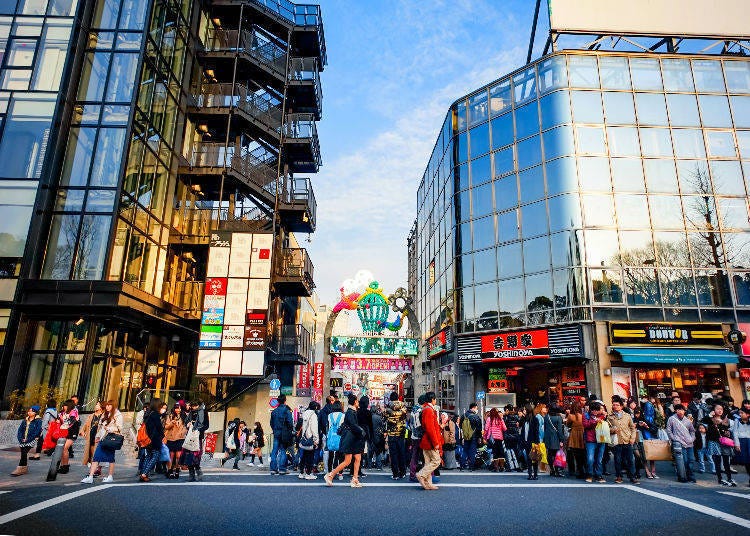
Long known for being the birthplace of kawaii culture in Japan, Harajuku also stands as the hub of avant-garde youth fashion. Along its famous Takeshita Street, you’ll see clothes ranging from cute, to cutting-edge, to downright bizarre. On weekends, it’s not uncommon to see groups of cosplayers out sporting the latest ahead-of-the-times styles. Takeshita street is typically packed with curious onlookers, but the benefit of being stuck in a slow-moving crowd is that it gives you plenty of time to window shop and take photos. Takeshita Street is generally busy throughout the day, but arriving in the early evening will help to keep you a little cooler in the crowds of people. How to Get There From Meiji Shrine : Takeshita Street is just across the street from the entrance to Meiji Shrine . Follow the crowds, and it should lead you there. How Much Time to Spend Here: Even with the throngs of visitors, it does not take long to see Takeshita Street. For simply walking through and people watching, 20 minutes should suffice. If you would like to visit some stores, plan to take 1 to 1.5 hours here.
5. Cross the Shibuya Scramble
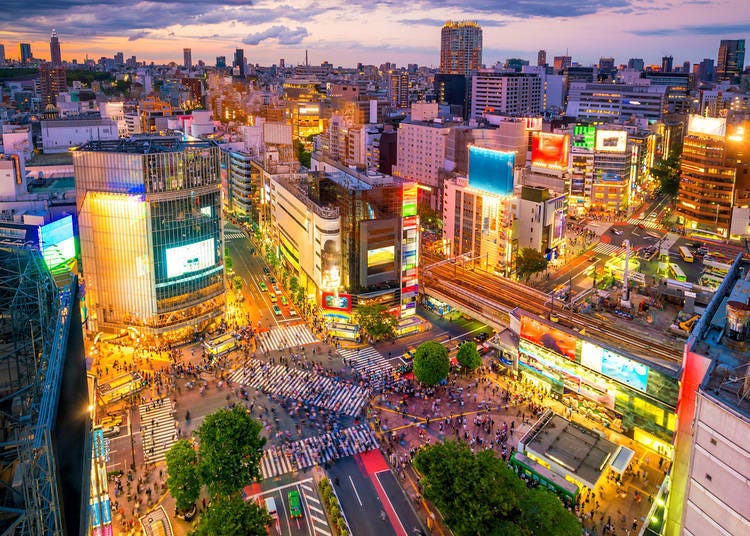
Known as the busiest intersection in the world, Shibuya Crossing more than lives up to its reputation once the sun goes down. Located just outside of the Shibuya Station Hachiko exit, approximately 2,500 pedestrians walk across this intersection with each change of the traffic lights. This repeated mass migration has earned it the nickname of the Shibuya Scramble . To experience the full effect of the scramble, visit in the evening, when the crowds are at their biggest. Before joining the sea of people, stop by the statue of Hachiko, a Japanese Akita dog that became famous for his loyalty to his owner, for luck. Once you’re ready, pick a direction, wait for the crosswalk sign to change, and cement your place in a world record statistic. Afterward, head upstairs to one of the several cafes located in the crossing and enjoy people watching from above. For the best view of the scramble, check out Magnet by Shibuya 109 . There is a 500 yen admission fee, but the spectacular view is well worth the price. How to Get There From Takeshita Street: From Takeshita Street, take the Yamanote line to Shibuya station. Alternatively, after walking through Takeshita Street from the Meiji shrine side entrance, turn right and walk roughly 15 minutes. Travel Time: Approximately 10-15 minutes. How Much Time to Spend Here: As the last stop on your 48 hour Tokyo itinerary, take all the time here you would like! It is not uncommon to see tourists crossing the scramble many times to capture the perfect travel photo. Feel free to do the same. You’ll be in good company.

- Address Dogenzaka, Shibuya-ku, Tokyo bottom, 150-0043 View Map
- Nearest Station Shibuya Station (JR Shonan Shinjuku Line / JR Yamanote Line / JR Saikyo Line / Tokyo Metro Ginza Line / Tokyo Metro Hanzomon Line / Tokyo Metro Fukutoshin Line / Tokyu Toyoko Line / Tokyu Den-en-toshi Line / Keio Inokashira Line) 1 minute on foot
Once the Tokyo sightseeing has come to a close, there is perhaps no better finale than to dine at an authentic izakaya ; an informal Japanese version of a pub . A favorite after-hours stop for droves of Japanese working professionals, izakayas are a great way to unwind after a long day and socialize with the locals over cold drinks and delicious small plate dishes. With a drink in hand, join your neighbors for a hearty “kanpai” to celebrate the end of your Tokyo adventure.
How to get to Tokyo from Narita and Haneda Airports
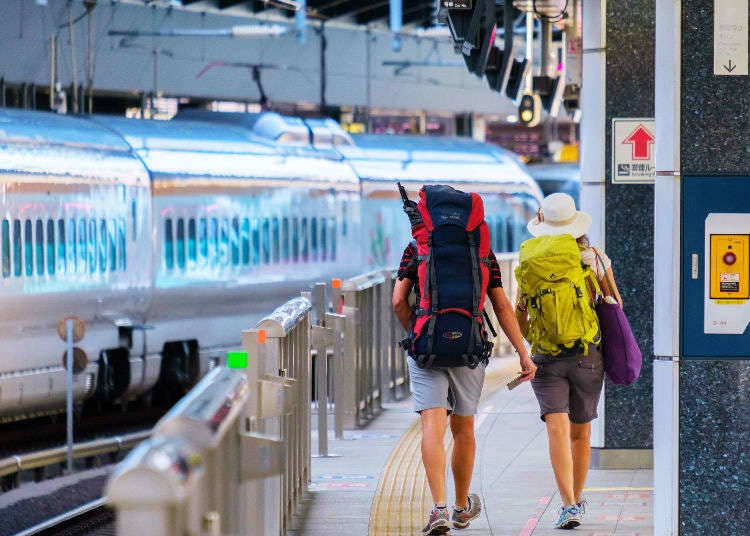
If you have flown into Tokyo from somewhere outside of Japan, you will most likely find yourself in Narita or Haneda airport . There are many options available to ferry you into the city, but the biggest factors to consider are time and money. Whether it’s more important to you to reach the city as quick as possible or within a tight budget, your best options are as follows.
From Narita
Fast: One of the fastest way to get to Tokyo from Narita is via the Narita Express. This express train can get you from the airport to the city in just over an hour for as little as 3,020 yen (about $27 USD). The train stops at several major hubs including Tokyo Station , Shibuya , and Shinjuku ; from which you can easily access all points of the city. You can also buy discounted round trip tickets online starting at 4,000 yen for adults and 2,000 yen for children. The express train departs from Narita for Tokyo roughly every 30 minutes. Cheap: As a less expensive alternative to the Narita Express, take the JR Sobu Line. Though the trip takes slightly longer at approximately 90 minutes one way, it is less than half the price of the express train; costing 1,320 yen. The Sobu Line departs from Narita for Tokyo Station once every hour.
From Haneda
Fast AND Cheap: Coming from Haneda , your best bet in the interest of time and money is the Keikyu Airport Line. Take this train to Shinagawa Station, at which point you can transfer to the Yamanote Line to reach your destination in the city. Based on where you are going, the trip takes about 30-40 minutes and costs roughly 600 yen (about $5.50 USD). Easy: For those who don’t want to bother with changing trains, there is the Limousine Bus. The buses depart from the airport every half hour, with routes servicing many of Tokyo’s major areas. The ticket prices vary based on where you are going, but you can expect to pay between 1,000-1,500 yen. While certainly more convenient, you will have to contend with the added variable of traffic. Depending on the time of day you are traveling, your one hour drive time could easily double.

Where to Stay
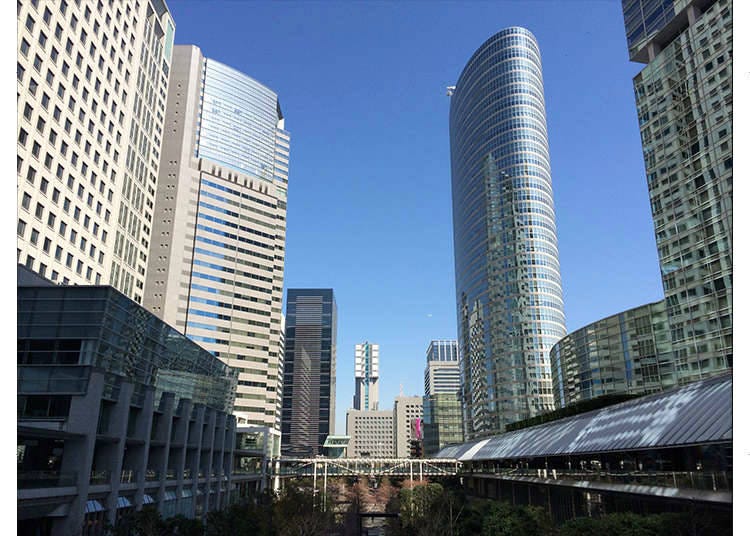
When it comes to deciding on an area to stay in, people are often tempted to choose a location right next to one or two of the major tourist attractions. However, your time could be better spent by choosing a place centrally located along several train lines. By doing so, you’ll be able to reach different parts of the city with relative ease, ultimately allowing you to see and do more during your stay. Several locations fit the bill, but for most situations, Shinjuku or Ueno serve as ideal hubs for traveling throughout Tokyo. While Shinjuku is more central in terms of location, both stations are located along the Yamanote Line, which connects Tokyo’s major metropolitan areas. Both also serve as access points to several other train lines. Of course, these are by no means your only options. There are many areas to choose from when deciding where to stay in Tokyo.
In addition to choosing a location, you should also consider what style of lodging is most appropriate for your stay. Narrowing down your search can prove difficult with countless hotels , hostels, and apartment rentals to choose from. Ultimately, the decision will come down to your own personal preferences and budget, but I would recommend one of Tokyo’s numerous business hotels . The rooms are by no means spacious or luxurious, but for a fraction of the price of a standard hotel home, you’ll have four walls, a bed, and your own private bathroom. After all, with such little time to spend in Tokyo, this room will function mainly as a place to store your baggage and take the occasional nap.

Matt Vachon is a content creator in Tokyo who enjoys exploring off the beaten path locations around Japan. Graduated from the University of Massachusetts before moving to Japan. Since that time, he has created content for numerous tourism focused publications including The Japan National Tourism Organization, Tsunagu Japan, and Tokyo Localized. Holds a bachelor's degree in psychology. He is passionate about filmmaking and has been working on documentaries about Japan. During his downtime, he's often indulging his inner foodie by trying out some of the best hidden gem restaurants in Tokyo.
- Area Tokyo Station Shibuya Shinjuku
- Category Other Sightseeing Downtown Other Contemporary Culture
- How To: Sightseeing
Share this article.

Recommended places for you

Shibuya Crossing

The Imperial Palace
Other Architecture
Tokyo Station

Ueno Zoo (Ueno Zoological Gardens)
Zoos, Aquariums & Botanical Gardens

Tokyo Tower

Senso-ji Temple

Ameyoko Shopping Street
Old Towns (Shitamachi)

Discover Tokyo’s Best-Kept Secret: The Allure of Sento Baths

Tokyo Summer Festivals: Bon Odori, Digital Festivals, and Theme Park Events for August 2024
by: Kaori Kimura

Shibuya Levels Up: Exclusive Food and Experiences at the New Shibuya Sakura Stage (Opened July 25)
by: Miyu Shimada

What to Do in Tokyo in September 2024: Asakusa Samba Carnival, Tokyo Game Show & More Fun Events

Savor the Season: Muscat Grape Afternoon Teas to Try in Tokyo This Fall

Experience the Magic: Mt. Fuji and Lake Kawaguchi Fireworks Festival (August)
Inspiration for Accommodations

Stunning Tokyo Tower View Hotels: Enjoy Spectacular Scenery from Your Private Space

Family-Friendly Hotels with Free Shuttle to Disneyland: Convenient Access for a Magical Stay

Charming Hakone Hotels with Mt. Fuji View: Enjoy Stunning Scenery from Your Private Space

Convenient Tokyo Hotels with Airport Shuttle: Ideal for Families and Heavy Luggage

Convenient Asakusa Hotels with Kitchens: Ideal for Extended Family Visits

Experience Luxury: Hakone's 10 Best Five-Star Accommodations

Enjoy Mt. Fuji Autumn Leaves! Top Hotels Near the Popular Autumn Leaves Corridor

Experience Hakone Fall Foliage from Your Room with Stunning Views
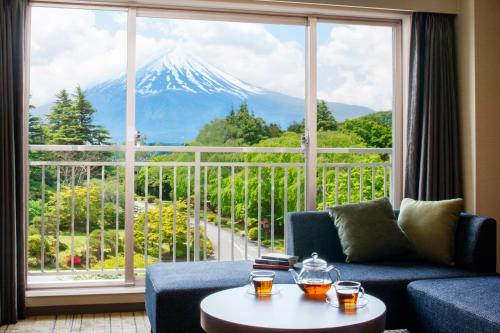
Enjoy Mt. Fuji from the Comfort of Your Room! Recommended Ryokan with Mt. Fuji View

Experience Luxury at Mt. Fuji Resort Hotels! Best Extended Stay Options for Families

16 Secrets About Mt. Fuji, the Symbol of Japan: Even Japanese People Don’t Know That?!

Kichijoji – Explore Tokyo’s Top-Rated Stylish Suburb in Half a Day!

Autumn in Japan 2024: Fall Foliage Forecast & Where to Enjoy the Colorful Leaves (+Tour Info)

Tokyo Station: Then and Now

[MOVIE] Fires, Quakes, and a Whole Lot of Smoke: Experiencing the Ikebukuro Life Safety Learning Center
by: Pamela Drobig

Golden Gai – Tokyo Shinjuku’s Atmospheric Bar Wonderland and the Secrets Behind its Magic
- #best ramen tokyo
- #what to buy in ameyoko
- #what to bring to japan
- #new years in tokyo
- #best izakaya shinjuku
- #things to do tokyo
- #japanese nail trends
- #what to do in odaiba
- #onsen tattoo friendly tokyo
- #best sushi ginza
- #japanese convenience store snacks
- #best yakiniku shibuya
- #japanese fashion culture
- #best japanese soft drinks

- Sensoji Temple
- The Tokyo Skytree
- Lunch at Tsukiji Outer Market
- teamLab Planets
- Shibuya Scramble and Hachiko
- Sunset from the Shibuya Sky
- Dinner at Miyashita Park
- Meiji Jingu Shrine
- Harajuku and Omotesando
- Shopping in Shinjuku
- Shinjuku Gyoen National Garden
- Meeting Godzilla
- A night out in Shinjuku
Tokyo - A Couple of things to Know Before You Go
• While Tokyo is a year-round destination, the best time to visit is either spring or autumn. Find out why in our post on the best time to visit Tokyo here .
• You can save time by buying advanced entry tickets to a lot of Tokyo’s attractions, as well as book guided tours, transfers, and more on sites such as Get Your Guide , Viator and Klook .
Get Your Guide and Viator are both great for booking experiences such as walking tours and sumo training sessions , while Klook has the best range of entry tickets to Tokyo’s major attractions as well as travel passes, including the Japan Rail Pass.
At the end of this post we’ll discuss the best area to stay during your two day trip to Tokyo, as well as how to get around the city.
But for now, let’s get straight in to the best things to see and do in two days in Tokyo.
Two Days in Tokyo - Day 1
Take a stroll around ueno park.
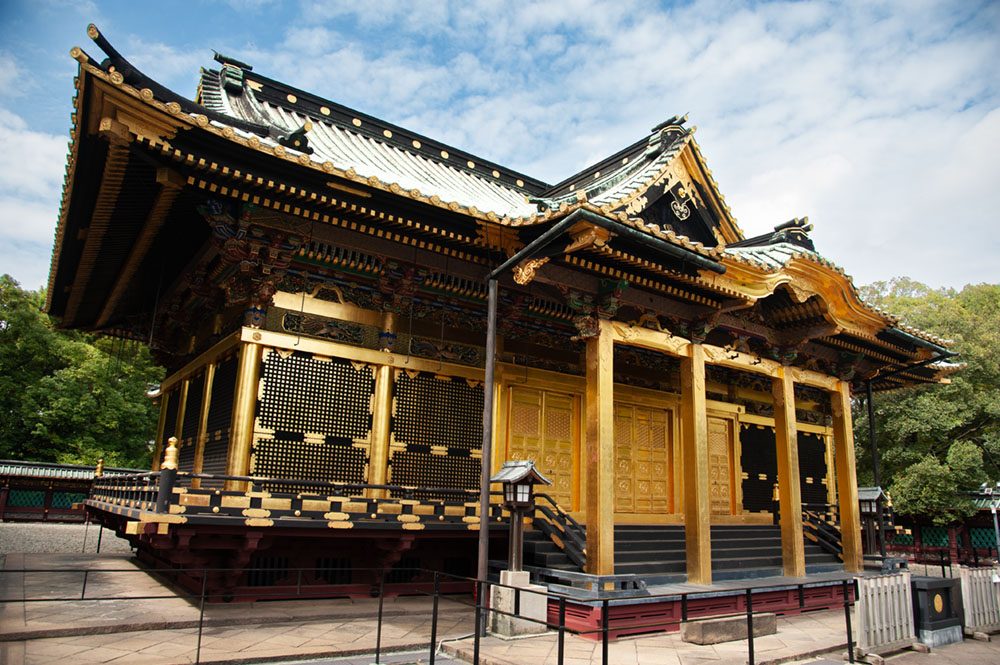
2 Days in Tokyo Itinerary – The Gateway to the “Land of the Rising Sun” in 48 hours!
Bustling downtown streets and calm shrines, cutting-edge high-tech and ancient traditions, the biggest metropolitan space in the world will surely capture you in no-time! Whether this might be the first stopover before exploring the marvelous country of Japan or a short stop on a business trip, there are tons of great activities, sights, and culinary adventures for your to fill your time with! Having only 48 hours in Tokyo, you might easily be declared the busiest traveller ever, but don’t worry for I took a closer look at what you must see in your precious time.
Whether you are a history buff, art lover or a true connoisseur, there will be more than enough opportunities for you to fall in love with this extraordinary city. So, without further ado, please enjoy your time in one of the most adventurous and exciting places I came across in all my travels so far!
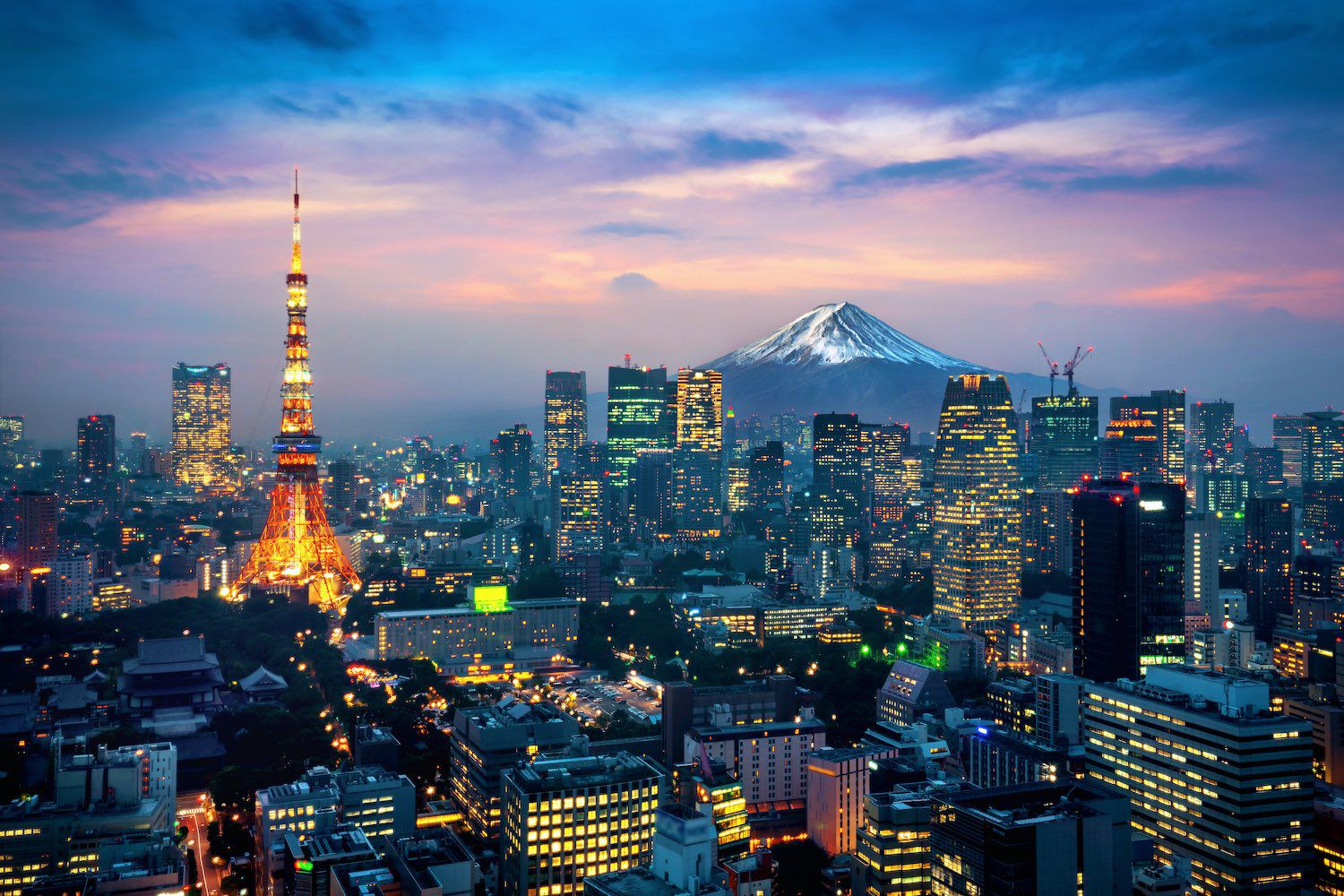
Where to stay for 2 Days in Tokyo
As diverse as the city’s facets are also the possibilities for your stay! Even if you are travelling on a budget, there are still tons of opportunities for staying with the typical Japanese hospitality at incredibly low rates.
Starting with the backpackers and budget travellers among us , there are literally dozens of hostels close to the city centre which will make for incredibly easy access to transportation and the most vibrant places. An especially popular location that will suck you right into the spheres of Japan’s rich tradition is the well-known area of Asakusa. Famous for the grand shrine and its traditional surroundings, few people know that hostels there can be so cheap!
The undoubtedly most comfortable option for your stay will be a hotel or even Ryokan (especially luxurious Japanese-stile hotels) in the vibrant areas of Shinjuku, Shibuya or Roppongi. Offering all the services you could think of and prime access to the best spots and sights of the city, these locations will leave you with no wish left to be fulfilled.
Families visiting this awesome city will surely be overwhelmed by the myriad of high-quality options Airbnb presents them with throughout the entire city. Since many areas in Tokyo never go to sleep, the quieter parts around Ueno with its broad parks and zoo present the best ways to relax after a long day full of sights and create enough distance for you to calm down.
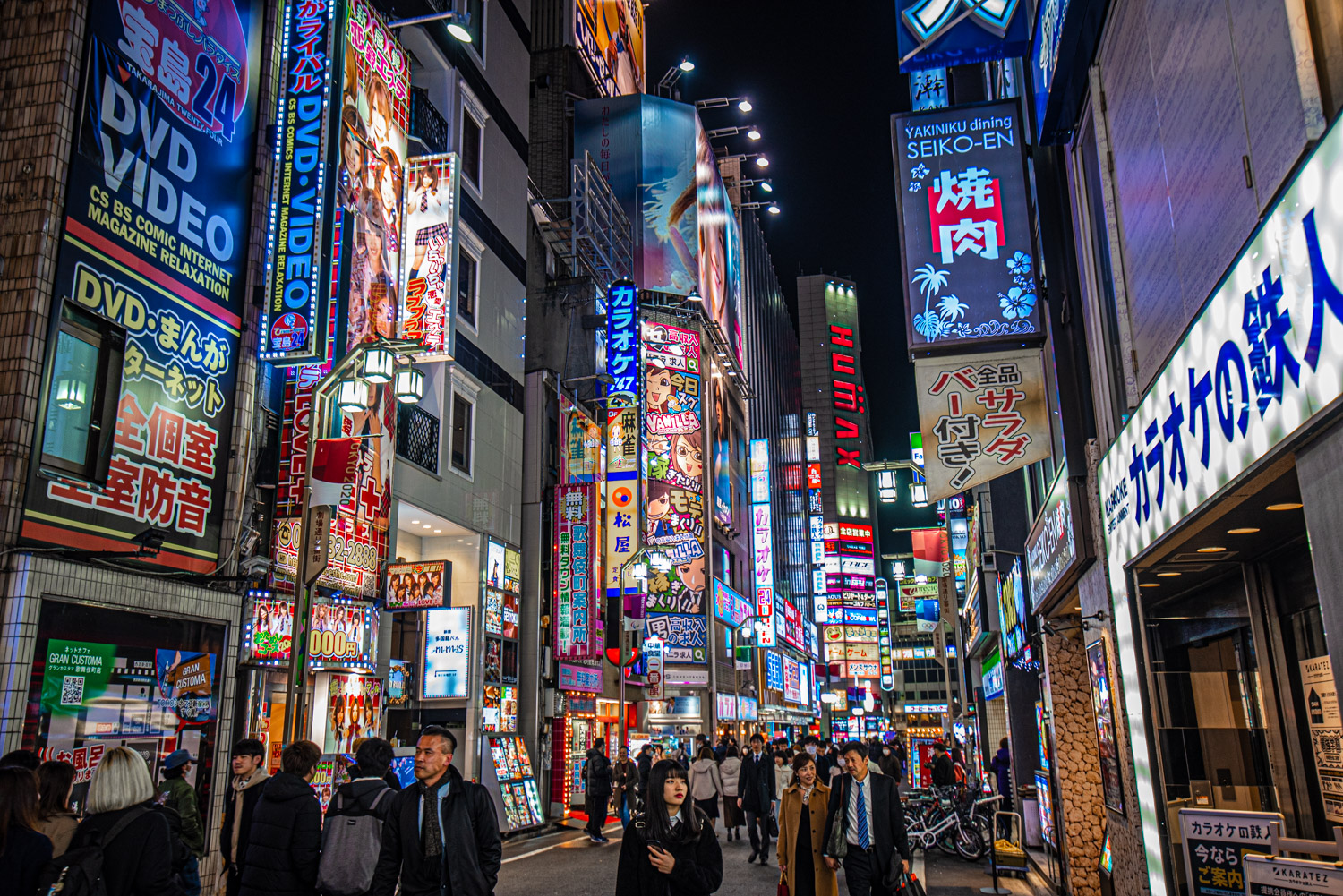
Tokyo Transportation: Quick and Hassle-free
With many million people moving around in a city where parking spots almost equal pure gold, the public transportation in and around Tokyo is superb . Metro lines cross the city and the additional JR (“Japanese Railway”) system reaches even the farthest corners of the prefecture. You can ride the few buses available on a flat rate price which makes them optimal for traveling long distances and simultaneously taking in the city’s great panorama!
The only thing you want to pay attention to for saving some money is to stay within one line or way of transportation if possible. The metro and JR services are not provided by the same company and thus charge you a basic rate and add to the price by distance traveled. Thus switching in between them frequently is definitely nothing for backpackers or budget travelers!
Attention! Whatever you might be up to, avoiding the metro rush hours in the morning and evening around 9 am and 5 pm is crucial for not getting into close contact with the workforce. This is to be understood quite literally since the cars will be jam-packed!
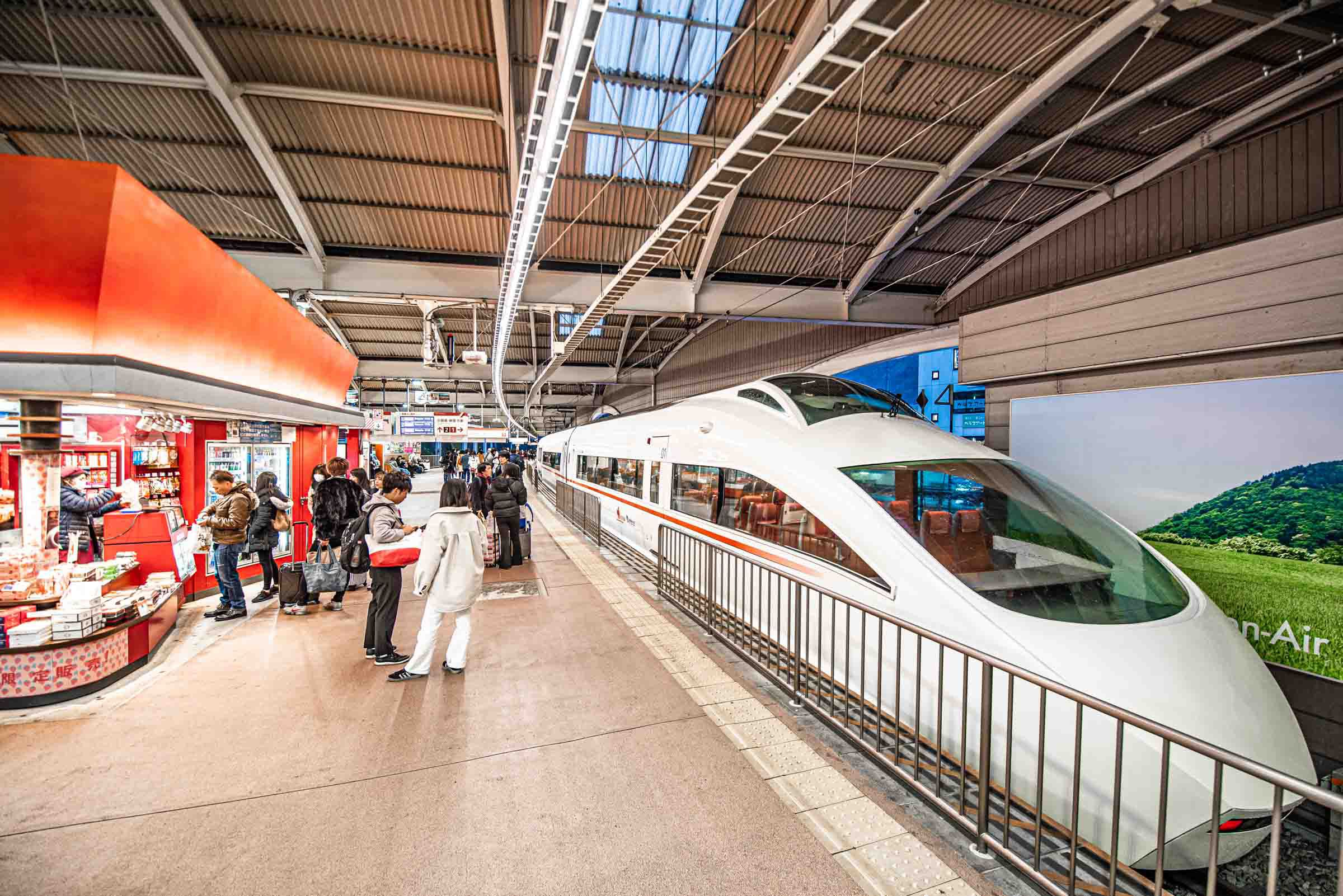
The Best Things to do for my 2 Days in Tokyo itinerary!
Hope you’ve got a nice pair of comfortable walking shoes and lots of energy, because there’s a whole lot of amazing things to do in this city! For each section, I’ve included a fun video to watch for things to do in each destination, so be sure to watch a few of them to get tons of trip inspiration!
Shinjuku and Shibuya
Starting amidst the hustling and bustling in the metropolitan areas of Shibuya and Shinjuku, it is here that you will experience the Tokyo well-known from various media. Vibrant, shining and busy like the world-famous Shibuya crossing where you can feel the rush of thousands walking over a crossroad simultaneously or, in contrast, calm and reverent at the famous Meiji-Jingu Shrine. While watching Tokyo’s barrage of cherry blossoms blooming in spring in the Yoyogi Park, you could almost forget to be in such a metropolitan area at all. Strolling around in between a sea of skyscrapers, you will find the pinnacles of fashion and modern cuisine Tokyo has to offer! For everyone interested in the history of feudal Japan, the outstanding Samurai museum just next to Shinjuku station will give you amazing insights into the lives of those ancient warriors and even allow you to dress up like them and take part in a sword-fighting show!
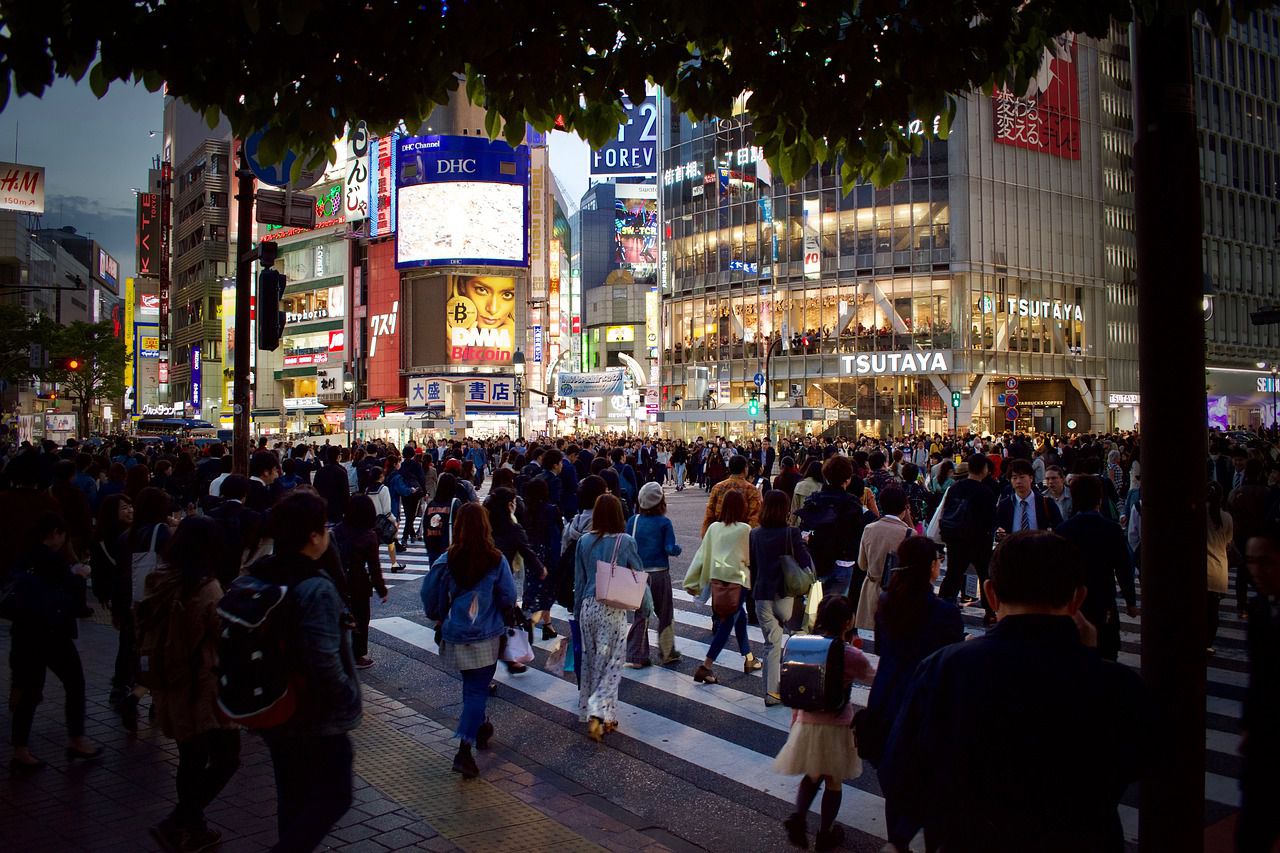
Insider : Watching the Shibuya Scramble from a birds-eye perspective gives this experience the little extra to be unforgettable. There are many adjacent skyscrapers from which’s restaurants and bars you can have a great view, but my favourite is the “Magnet by Shibuya 109” which grants you access to its observation deck for only 500Y!
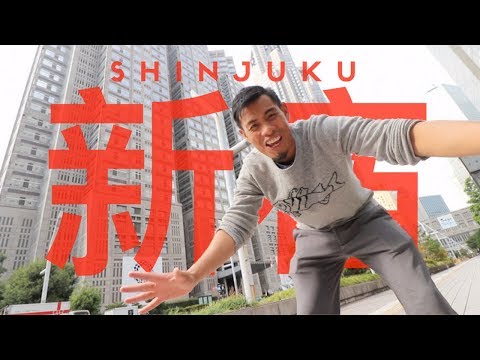
If there is any place in Tokyo that doesn’t need an introduction anymore, Akihabara is most certainly it! Often referred to as “Otaku/Tech heaven” or “geek paradise”, this ward features everything an aspiring or hopelessly lost nerd or computer freak can wish for. Almost every shop features a variety of goods that range from ancient treasures to the newest cutting-edge technology. Despite its huge focus on gaming, anime, manga, and the corresponding fan articles, one can also find the latest hardware for photography and an innumerable variety of household electronics. Besides its great shopping opportunities, Akihabara offers many themed cafés of various fandoms, but also the unique experiences of maid and animal cafés. And for all those who can’t easily lose themselves in this strange world, just walking through those streets at night and gazing at the myriad of lights will amaze you for sure!
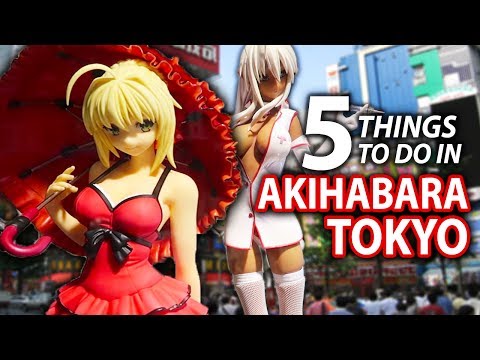
Roppongi Hills
Being amongst the crème de la crème of Tokyo’s luxurious areas, Roppongi will take you out of the common vibe of the city for sure! Walking around the villas and visiting the impressive Roppongi Hills will offer you more than enough to see since the latter consist of nothing less than a cinema, an art gallery, many great food shops which take e.g. the art of making crepe to another level and hundreds of shops for getting you into the latest fashion. With its observation deck on the higher levels, the Roppongi Hills offer a spectacular view over the western downtown area of Tokyo and give you a unique perspective on sights like the Tokyo Tower. The event calendar is always worth checking too, for it is not uncommon for musicians to perform or craftsmen to exhibit their art on the grounds!
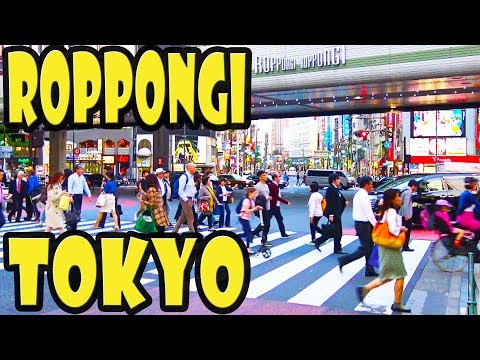
Better known as the heart of Tokyo, this area serves as a hub of art, science, and tradition of the city. The main attraction being the Imperial Palace and its surrounding gardens, the area is perfect for a short stroll should the stressful side of Tokyo get the upper hand during your explorations. For all of you who wish to catch a glimpse into the imperial palace, there are daily tours in English around noon for which you can reserve a spot here: https://sankan.kunaicho.go.jp/english/guide/koukyo.html
Just a stonecast away is the National Museum for Modern Art and the Science Museum whereas especially the latter is a blast for children due to its highly interactive nature! Last but not least, the Yasukuni Shrine in the northwest of the area is one of the most famous of the whole country and worships the souls of those Japanese who died in the wars. Its Torii gate is one of the tallest in all of Japan and surely clarifies the shrines meaning to the Japanese people and culture when you walk through it in awe.
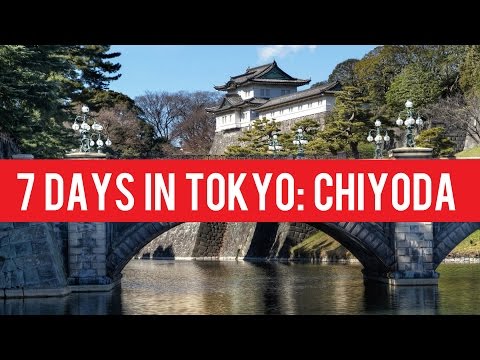
Perhaps the quietest area on this list, Ueno turns out to be a great place for families to enjoy their visit to Japan’s capital! The zoo makes for a wonderful trip to enchant adults and children alike and even more so with the great illuminations held regularly in Ueno Park. Winter and spring are especially known for displaying intriguing light shows for the snow or petal laden branches, whereas the colourful foliage fascinates hundreds of visitors in autumn. Just a short walk up north lies the popular old-town area of Yanaka Ginza in which you can explore a neighbourhood characterized by uncountable small family businesses in between ancient shrines and temple. Since its famous shopping street is entirely reserved for pedestrians, this area stunningly conserves the vibes of a “local” Tokyo!
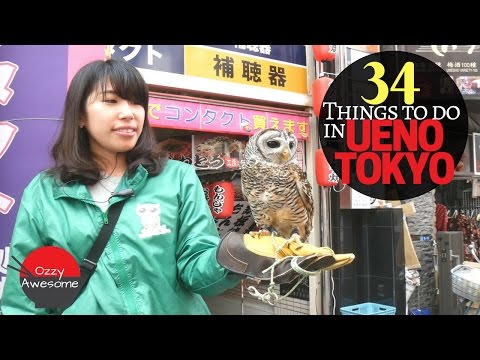
Asakusa and the Skytree
Well-known for its great shrine, the Asakusa ward in the east of Tokyo offers you a unique nightlife, changing from bright advertisements to warm-lit back alleys by the mere crossing of two streets. While you can enjoy countless popular restaurants framing the main streets, the actual places to go are hidden in the alleyways surrounding the impressive Asakusa shrine. Walking towards the shrine from the main path, you will find a fascinating hallway of food stalls, souvenir shops and vendors of traditional Japanese sweets, so come on an empty stomach!
Only a short walk over the river to the east of the shrine will reveal Asahi’s popular beer headquarters on the riverbank, where you surely won’t miss any taste or quality upon joining for a quick drink! Just a little farther and one of Tokyo’s greatest hallmarks, the Skytree with its shopping facilities will be yours to explore. Having the arguably best view over this metropolis, a meal in the clouds and a wonderful shop ‘til you drop experience will turn your day to gold!
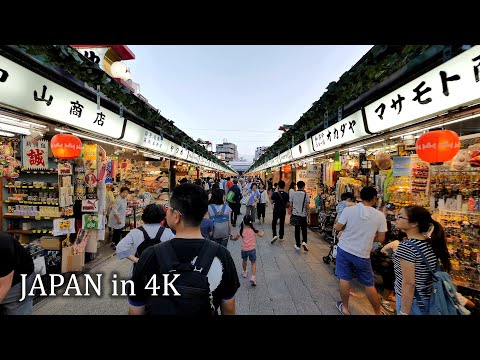
Having to label a ward in Tokyo which is supreme for recreation, shopping, sightseeing AND unique experiences, I would say Odaiba has it all. Perhaps just because these islands in the bay of Tokyo were built for exactly this purpose! Easily reachable by train, Odaiba offers everything a good trip needs. Why not starting in the VenusFort, Japan’s interpretation of European art and architecture, and make an unforgettable memory with the high-tech art of teamLab Borderless? A short walk will bring you to a gigantic statue of one of Japan’s most favoured superheroes, Gundam, where you can enjoy its fascinating transformation as part of a light show. One of the highest praised science museums in all of Japan, the Miraikan, lies just a stone-cast away from your next big destination: the famous Oedo-Onsen. Leaving this island offers you great possibilities as well, right after you took a look at the miniature of the statue of liberty in the north of the island of course! Either jump on a ferry to get right back into the city and enjoy a delicious tour around the Tsukiji fish market close to the ports or walk over the Rainbow bridge. The latter is named for its rainbow-like illumination in December and guarantees you some unique pictures of Tokyo bay!
Pro Tip : When visiting in summer, you should watch out for the numerous public fireworks held around this area and especially the Rainbow bridge. Watching the sky light up in the most intricate ways will make your visit unforgettable!

Tokyo’s culinary wonders
Sushi – Starting with one of the most iconic Japanese dishes, Tokyo is the place to enjoy a good tray of Sushi due to its high quality! Restaurants have premium access to the best vendors for rice and fresh seafood, so this is nothing to miss out on! A great place for the freshest sushi is the Tsukiji fish market where the daily deliveries are prepared freshly for the customers. Another popular way of enjoying Sushi is in a conveyer belt restaurant which you can find in great numbers downtown.
Monjayaki – A savoury pancake mixture out of flour, eggs, cabbage and meat, seafood and vegetables to the liking of the restaurant, this special dish from Tokyo is prepared right in front of you on a large iron plate. An interesting answer to Osaka’s and Hiroshima’s Okonomiyaki which grew to big popularity, giving you a lot of places to choose from in your culinary journey!
8 type ice cream – For every one of you with a special sweet tooth, let’s finish with the king of all ice creams. This special combination of eight different flavours stacked on top of one waffle is unique to “Daily Chico’s” in the basement of the popular shopping mall “Nakano Broadway”. Besides visiting the arcades and stores, many people just go there to enjoy this incredible ice cream. But please prepare for the subsequent stomach ache after trying to bend this monster on your own. You have been warned!
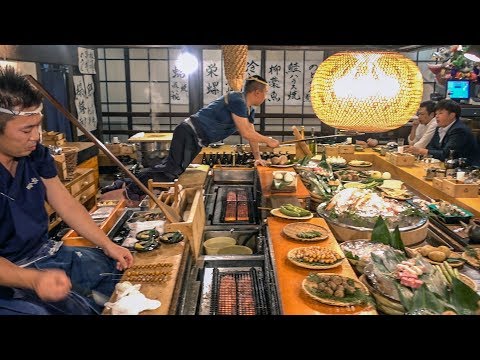
Tokyo Travel Tips
- Discovering Tokyo can be easily done with the regular transportation services of the metro and JR lines, but for everyone who seeks a unique way onto the streets, the cosplay option of a Mario Cart tour is a must-try! Dress yourself up as your favourite character and cruise through the evening or night, discovering the city’s streets while being cheered on from locals and other tourists alike. Alternatively, for the sake of experiencing the fascinating contrasts in Tokyo’s nature, there is nothing better than just stepping outside and walking in the direction of the next attraction. It is not rare to find little shrines nestled in between five-story buildings and there are so many more details and secrets to be found!
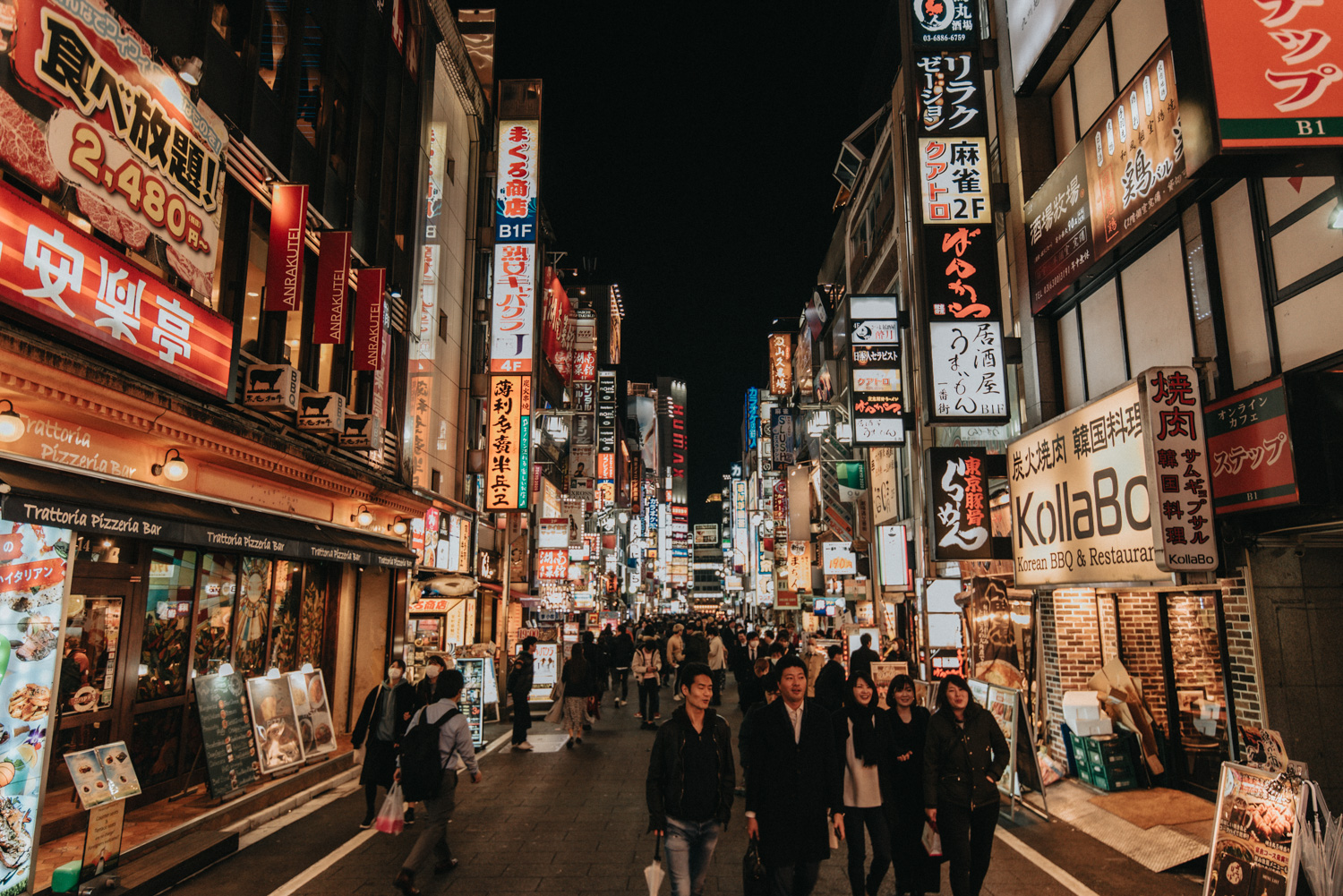
- With so many great destinations outside of the city centre or in the adjacent provinces, the “Greater Tokyo Pass” comes in handy when jumping all around the Kanto area. It covers 3 days of transportation all around the region and lets you explore the many wonders outside of Tokyo which lay hidden, waiting for you to explore them. You can sign up for your “Greater Tokyo Pass” here: https://greater-tokyo-pass.jp/en/
- Although I outlined it briefly already, it is crucial to know when you want to visit this versatile city. While a gentle pink and comfortable temperatures will be present during mid to late spring, it can get incredibly hot during summer when most of the great public fireworks are held. Autumn offers pleasant temperatures again while many people gather to watch the golden and crimson leaves of the autumn foliage. Winter gives way for some of the best illuminations across Japan and stays comparatively mild given Tokyo’s position on the east coast.
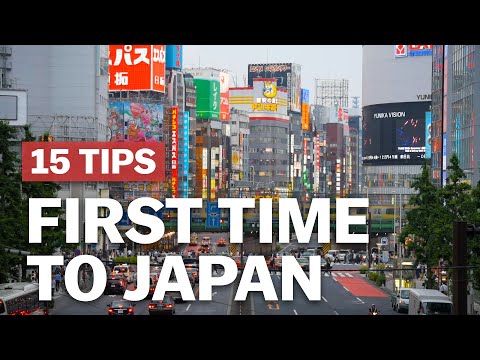
Am I Missing Anything From My Tokyo 2-Day Itinerary?
Thank you so much for reading my itinerary for your unforgettable visit to Japan’s capital! If you liked this, I am pretty sure you will love the exquisite travel advice I prepared for you in the articles below – see you around!
If you think I’ve missed anything crucial about this fascinating city, I’d love to
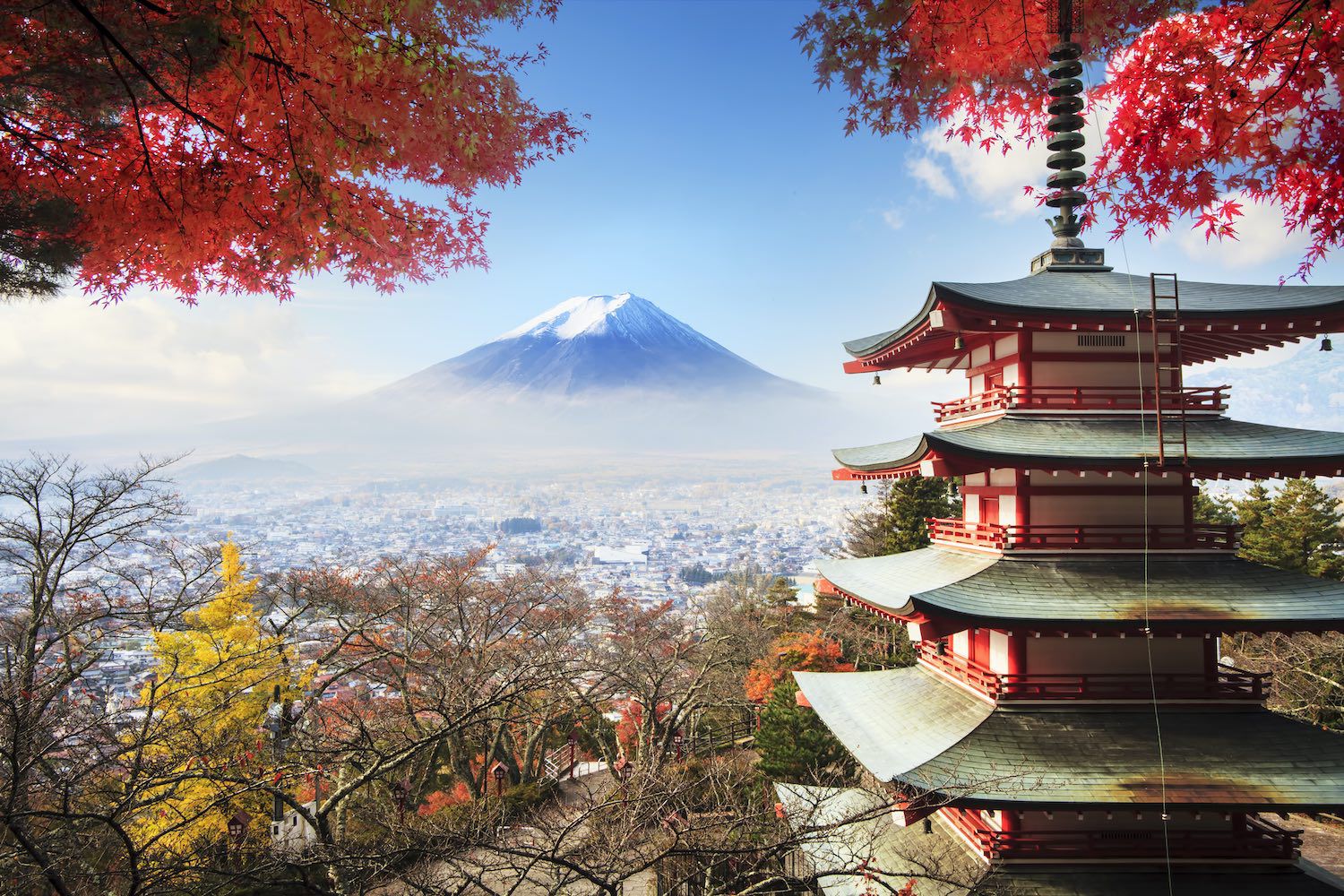
Planning a trip to Japan?
I just recently returned from Japan, and I’m already dying to go back for another round! I’ve got tons more helpful articles about unique destination, city guides, music festivals, and lots more!
- The 18 Best Airbnbs in Japan | City, Sea & Mt Fuji
- The 68 Best Quotes About Japan
- The 17 Best Things To Do In Hakone, Japan | The Best Day Trip From Tokyo
- 16 Amazing Japan “Off the Beaten Path” Destinations & Hidden Gems
- The 68 BEST Quotes About Japan | Unique & Fun Japan Quotes
- The 18 Best Things to do in the Oita Prefecture, Japan
- Sado Island, Japan | 21 Amazing Things To Do on The Island of Exile & Gold
- The 18 Coolest & Best Airbnbs in Tokyo, Japan
- How to Say Thank You in Different Languages (German, Japanese, Arabic & more)
- Top 30 Music Festivals in Japan To Experience This Year
- 70+ Amazing Hiking Quotes To Inspire Your Trek
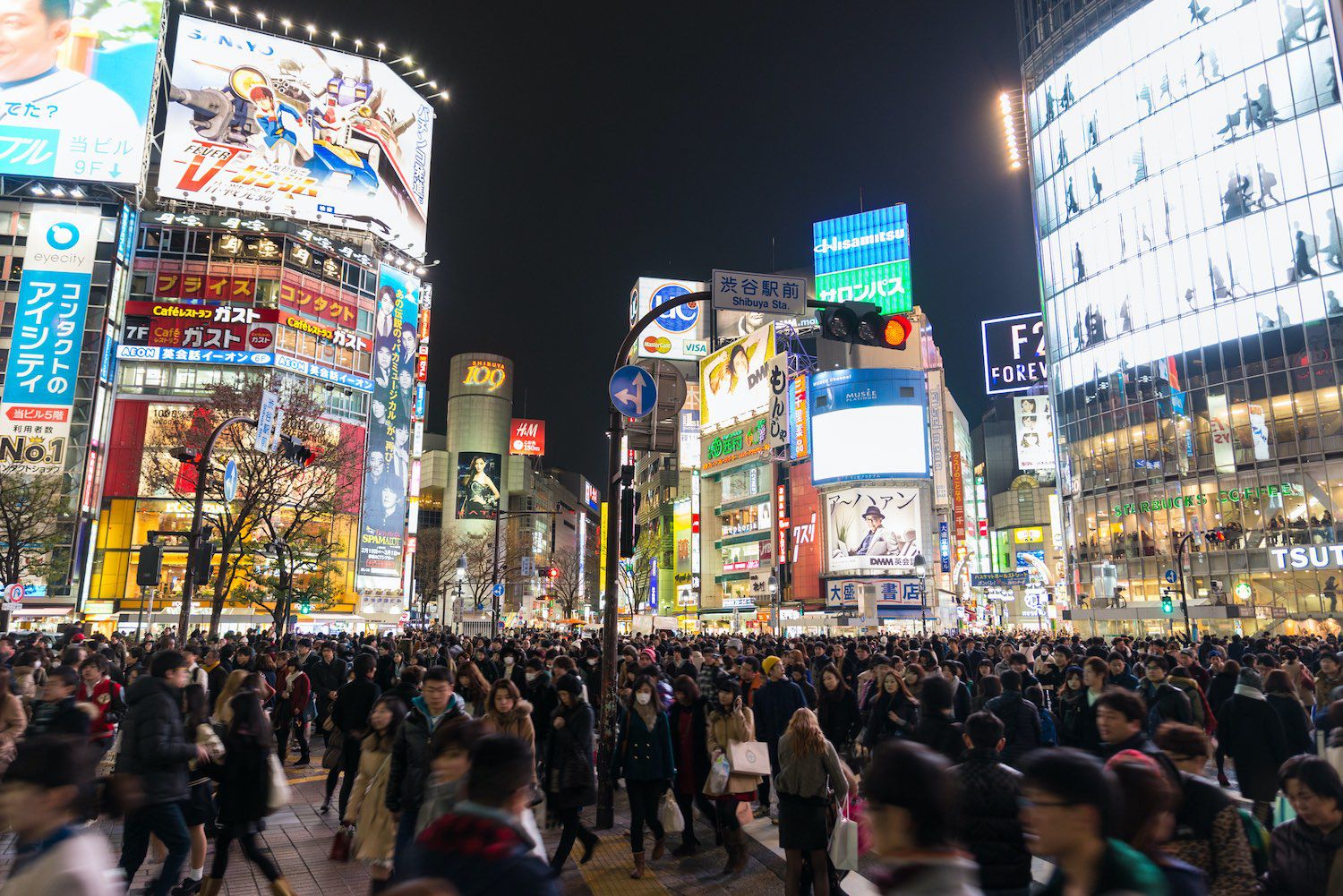
Thanks for reading my 2 Days in Tokyo Itinerary
Share this itinerary with your japan travel crew, leave a reply, leave a reply cancel reply.
Your email address will not be published. Required fields are marked *
Save my name, email, and website in this browser for the next time I comment.
Photography Gear
Work With Me
Privacy Policy
Destinations
Music Festivals
Travel Itineraries
Inspiration
Travel Gifts
Southeast Asia


Two Days In Tokyo, A Detailed Itinerary
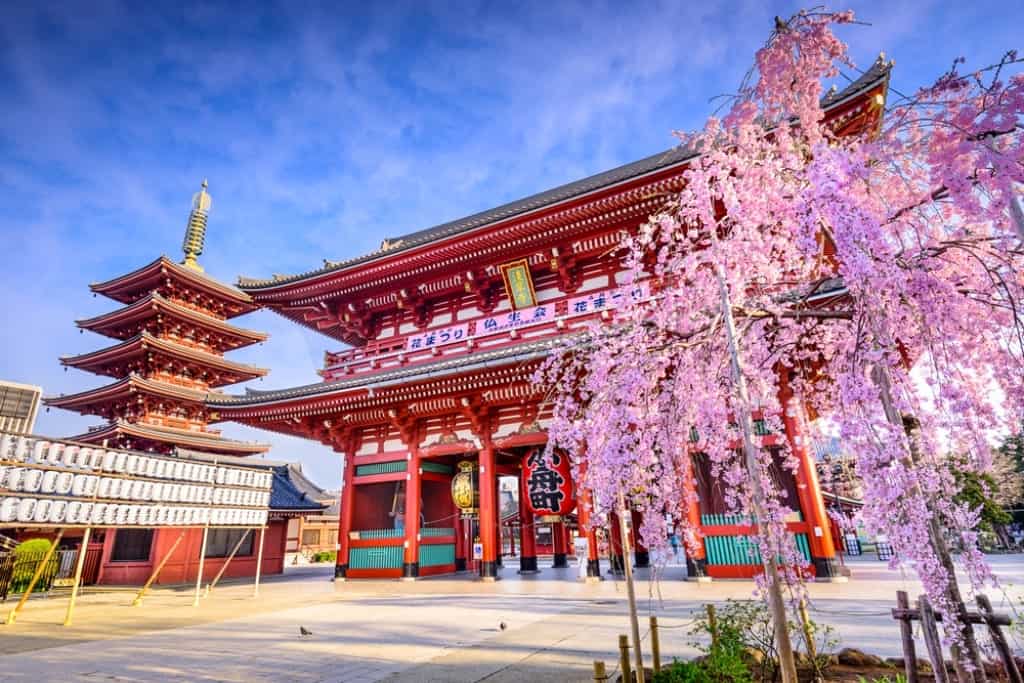
Japan is a one-of-a-kind travel destination, there’s no place quite like it. And Tokyo is no exception. Filled with ultra-modern skyscrapers and the latest tech, along with ancient shrines and temples, Tokyo has it all and is a must in any Japan itinerary.
Even though you could easily explore Tokyo for weeks on end, you probably don’t have that much time. Two days in a city as large as Tokyo may not seem like enough, but you can easily tick off some of the best things to do . It makes for a great introduction to one of the most unique cities in the world. Let’s take a look.
This is a guest post by Nele of The Navigatio .
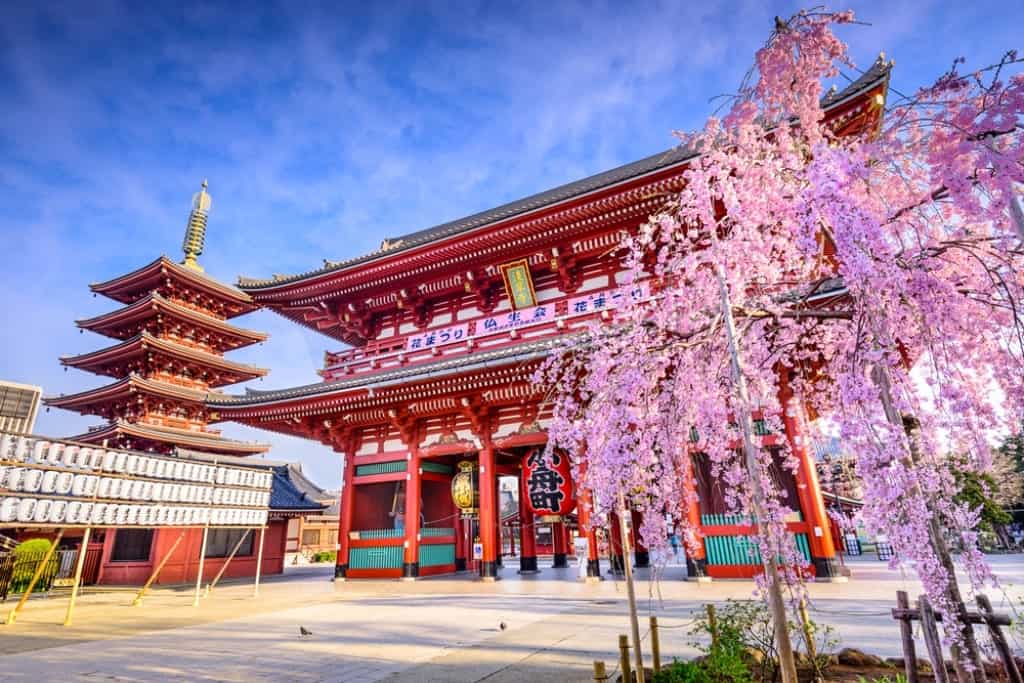
Table of Contents
Two Days In Tokyo: Where To Stay
Budget: If you’re wondering where to stay in Tokyo on a budget, you can’t go wrong with Hotel Sunroute Asakusa . It’s located within walking distance from Asakusa train station, close to the main sights, and gives you great value for money.
Mid-range: Hotel Gracery Shinjuku is also known as the Godzilla Hotel, as a statue of the creature proudly stands on top of the building. You can even book a Godzilla-themed room, but even the regular rooms are a great pick!
Luxury: If you want the best of the best, you may want to consider staying at Prince Park Tower Tokyo . With views of Tokyo Tower and beautiful, spacious rooms, it’s one of the best in the city.
How To Spend Two Days In Tokyo, A Perfect Itinerary
Tokyo in 2 days: day one, walk the shibuya crossing.
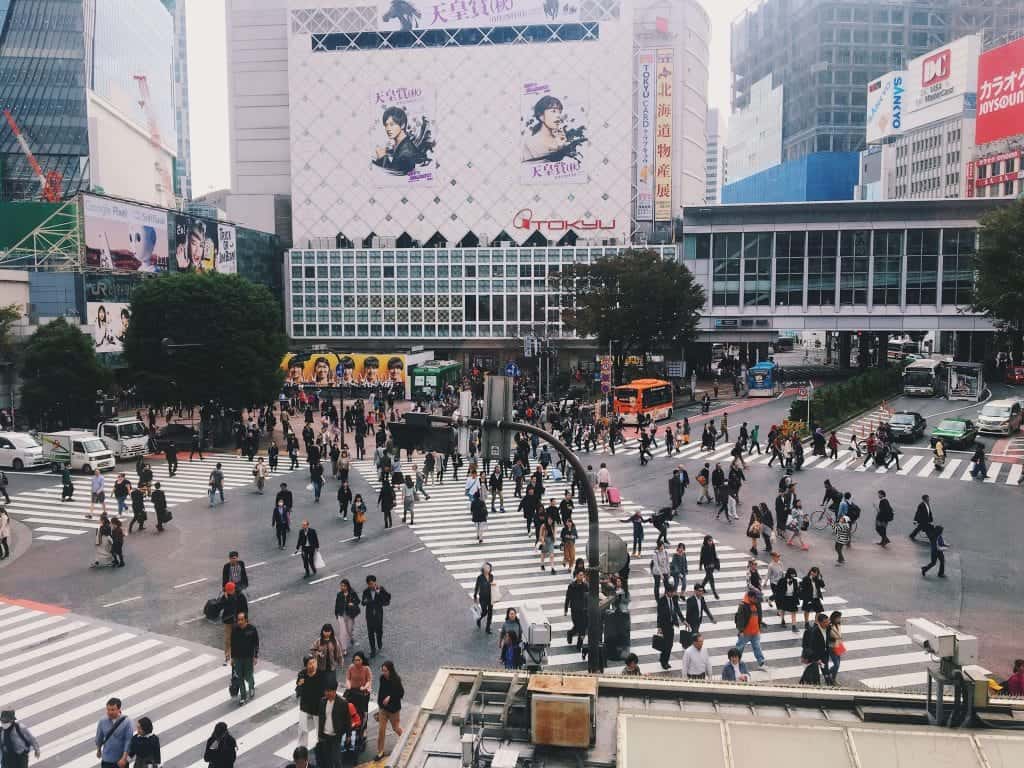
What better place to start your two days in Tokyo than the famous Shibuya Crossing? If you’ve come across pictures of Tokyo, chances are you’ve already seen this crazy busy street. Shibuya Crossing is the busiest crossing in the world!
While you’re in the area, make sure to stop by the Hachiko Statue, located just outside of the train station. The story of the dog is quite famous; he waited outside the station for years after his owner’s death. A truly loyal companion!
After walking the crossing, you can stop at Starbucks for an awesome view. There are seats available on the first floor, where you can watch people walk the crossing themselves; a great photo opportunity!
Shop in Harajuku
Harajuku is only one subway stop (or 15-minute walk) from Shibuya, and it’s a truly unique area of Tokyo. You may have heard of Harajuku prior to learning it is an area in Tokyo. That’s because it’s also the name of a fashion style that was born here. Harajuku fashion is a very over-the-top style that goes against the norm of fitting in.
In Harajuku, you can find tons of independent boutiques selling clothes in this style, along with other awesome shops that are worth looking through. Mainly focus on Takeshita Street and Omotesando Avenue, that’s where most of the shops are located.
Visit Meiji Shrine
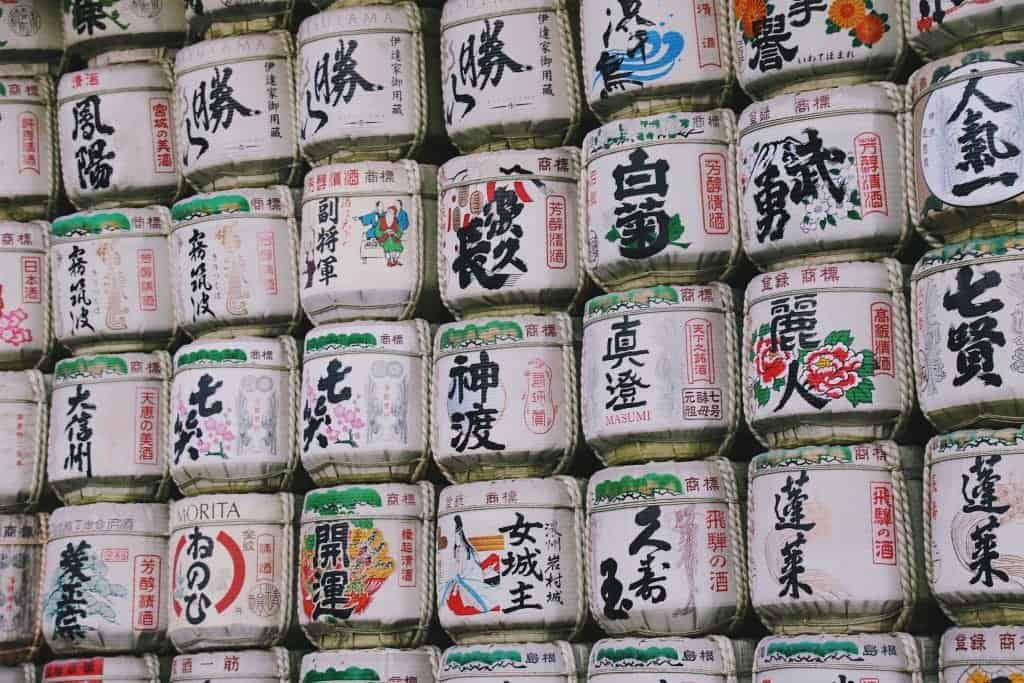
When you’re done shopping, head back over to Harajuku Station. On the other side of the station, you can find a huge park. The Meiji Shrine is inside this park.
Japan is a land of big contrasts, and Tokyo embodies that perfectly. You’ve already experienced the organized chaos of Shibuya Crossing and Harajuku’s shopping streets, but only a few shorts minutes away, you can walk through a peaceful forest and see one of the best shrines in Tokyo.
It takes about 20-30 minutes to walk from the huge torii gate at the entrance to the actual shrine. Along the way, you’ll find smaller shrines and the colorful famous sake barrels. Once at the inner shrine, you may see some of the Ema plagues (wooden plaques). For 500 yen, you can buy one and write down a wish. Who knows, it may come true ;).
Drink Sake In Omoide Yokocho
In the evening, head over to Shinjuku. It’s only one subway stop from Harajuku station or a 15-minute walk. There are tons of eateries to explore in Shinjuku, along with many bars and arcades.
But one place that should be on your evening itinerary is Omoide Yokocho (Memory Lane). This narrow, but very atmospheric alleyway is filled with small and independent bars and restaurants. Most of them only have a few seats! The smell of freshly grilled yakitori will welcome you, along with the smell of sake.
It’s the perfect place to try some sake for yourself, along with some grilled chicken skewers. What better way to end your first day in Tokyo?
Tokyo in 2 Days: Day Two
Watch kabuki in ginza.
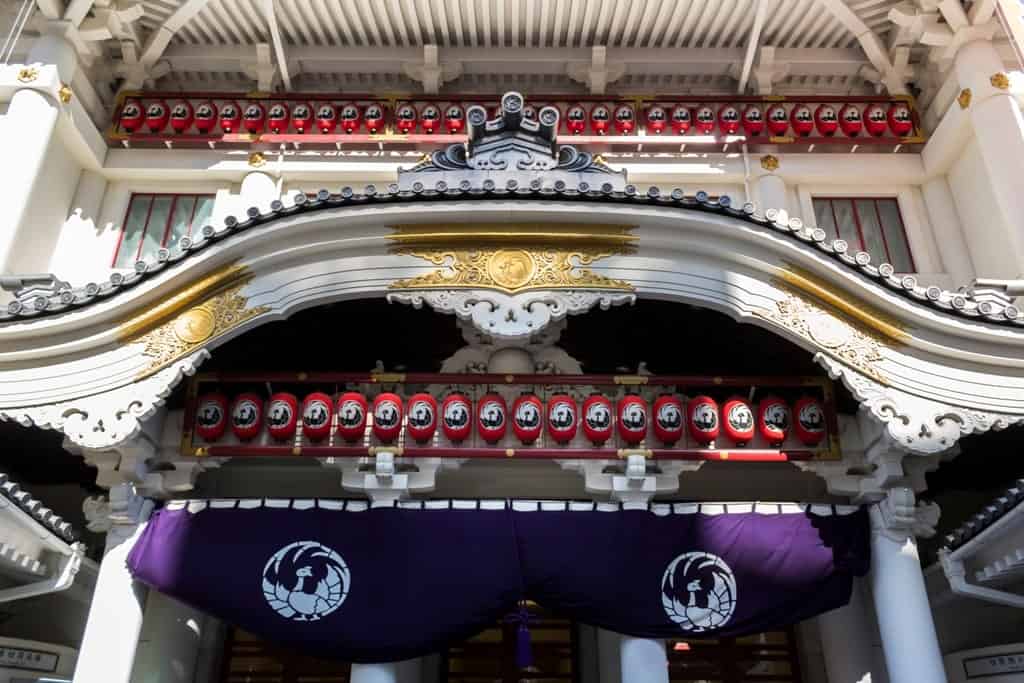
Japan has a very unique culture, and you probably want to soak as much of it up during your two days in Tokyo. Kabuki theatre is a great place to start!
Japanese theatre is very different from what westerners are used to, but it makes for an awesome experience. And luckily, it’s not expensive to watch either! It only costs 1000-2000 yen for a single-act show (hitomaku-mi). These last about 1-2 hours.
Before (or after, depending on when you’re watching the show), you can explore Ginza a bit more. This upmarket area is perfect for (window) shopping!
Visit Senso-ji Shrine In Asakusa
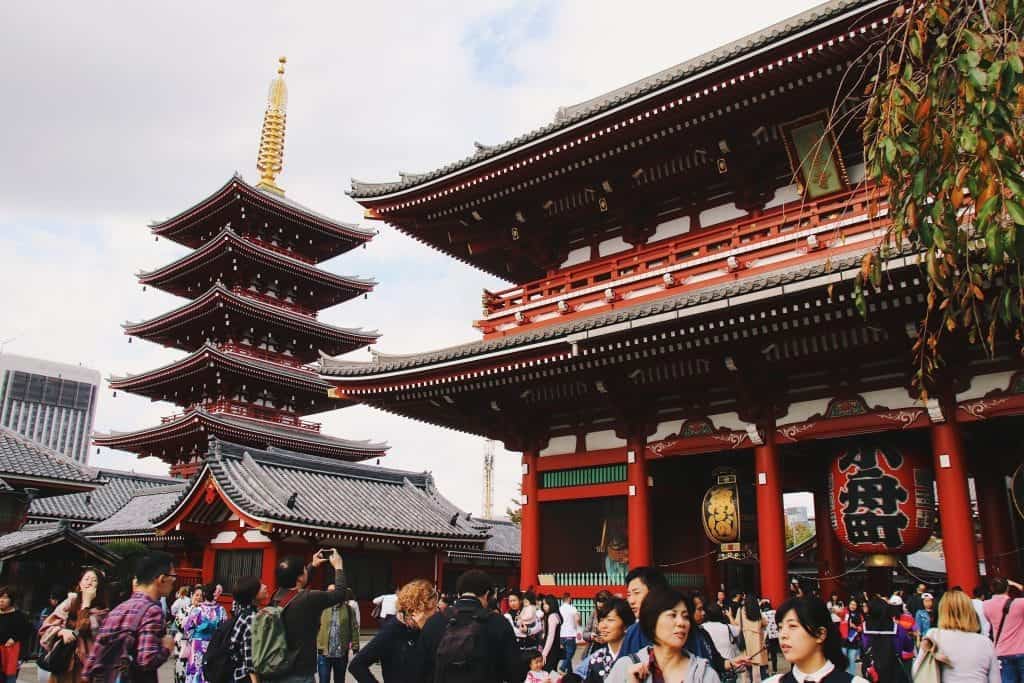
After visiting Ginza, head over to Asakusa. This is a more traditional area in Tokyo and home to the Senso-ji Shrine. Senso-ji was built in the year 645, and the oldest shrine in the city. It is open to visitors 24/7, but during the day it gets quite busy!
And it’s no surprise why; the temple and the temple grounds are stunning. At the main temple, you can also take part in O-mikuji, a Japanese form of fortune-telling. It only costs 100 yen, and you can do it by yourself.
Climb The Tokyo Sky Tree
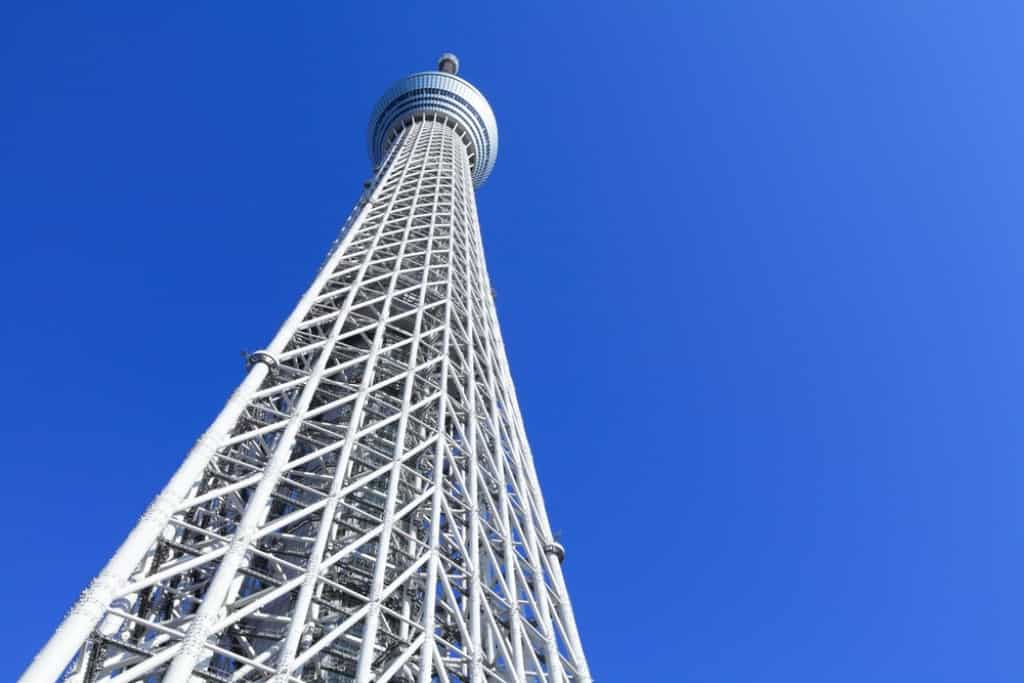
The Tokyo Sky Tree is the tallest tower in the world, at 634. On top of that, it’s the second tallest building globally, after Burj Khalifa. There are some shops, a cafe, and a restaurant inside the tower – all with stunning views of the city.
On a clear day, you can even see Mount Fuji in the background. It’s by far the best view you can find in Tokyo, and 100% worth your time.
Practical Information For Your 2 Day Tokyo Itinerary
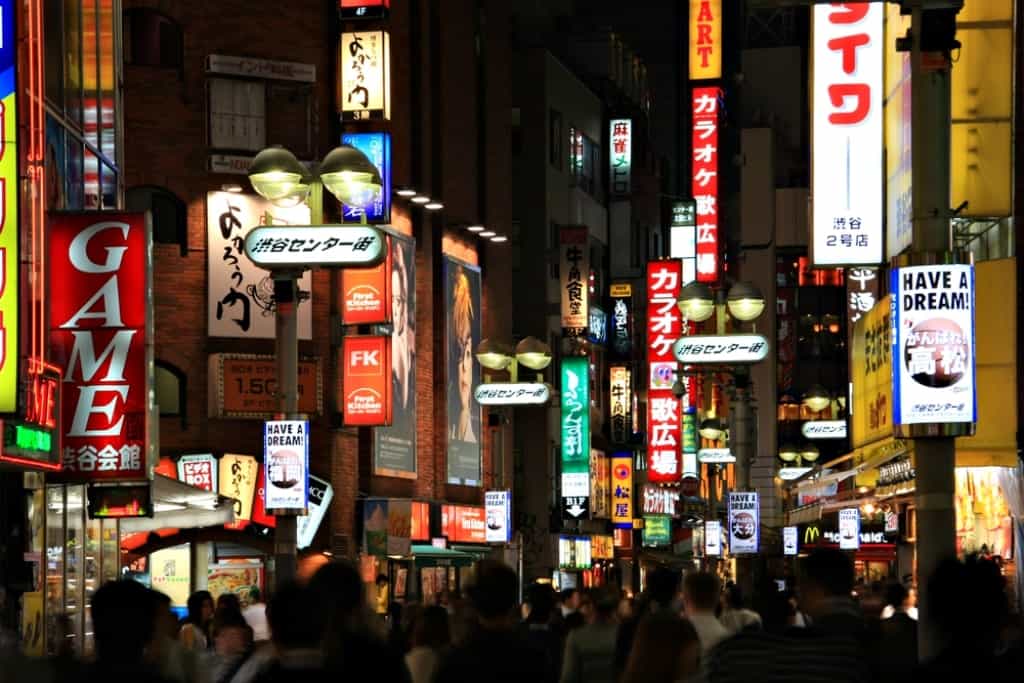
When Is The Best Time To Visit Tokyo?
The best times to visit Tokyo are between March-May or October-November. If you’re planning to see some cherry blossoms, March and April are your best bet. But keep in mind that these are also very busy months – many tourists come to Japan for the sakura. October and November are much quieter (and cheaper) and you’ll get to enjoy the beautiful autumn foliage.
How Do You Get From The Airport To The City Centre?
Tokyo has two airports: Haneda and Narita. Most international flights will arrive at Haneda, however.
From Haneda airport, it’s very easy to get into the city. The cheapest option is to buy a Suica Card at the train station and take the Keikyu Line to Shinagawa Station, then change to the Yamanote Line to Tokyo Central. This should only take around 30 minutes and cost a few hundred yen. Alternatively, you can a taxi, but they are much more expensive.
From Narita airport, you can take the JR Narita Express to get to the city. This costs around 3000 yen and takes an hour. If you want a cheaper option, you can use the JR Sobu Line, which takes an hour and a half but costs you half as much.
How To Get Around The City
Even though Tokyo is incredibly big, the public transport is fantastic. And best of all; you don’t have to speak/read Japanese to use it. There are many English signs, and you can also use the Hyperdia app to navigate through the different subway/train lines. It’s best to get a Suica card when arriving in Tokyo, which is an electronic pass that you can top up with money. You simply scan in and out at the stations, and the machines will automatically take the correct change from your card. Super simple!
Bio: At the age of 18, Nele moved from her hometown in the Netherlands to Manchester, UK. She now works as a freelance SEO editor/writer and runs a travel blog. On her site, The Navigatio, she shares mid-range itineraries for the best city breaks and trips to Japan.
Sharing is caring!
2 Days in Tokyo: The Perfect Itinerary
Most people dream of visiting Japan. The food, the culture, the people – you can’t help but be drawn to the island nation. Add onto that the upcoming 2019 World Rugby Cup and the 2020 Olympics, and the wanderlust is real. Visiting Japan is a trip of a lifetime, and Tokyo is the place to get a feel for it all. As the capital city of Japan and hottest destination for inbound travelers, Tokyo has everything. But what if you don’t have much time? Take a look at this 2 days in Tokyo itinerary that showcases the highlights of the city. Here’s your guide to seeing Tokyo in a weekend.
Note: This itinerary is optimized to be as efficient as possible. You don’t need to visit everything in order, however, it is most convenient if you do.
2-Day Tokyo Itinerary
Day 1: meiji shrine, yoyogi koen, takeshita dori, shibuya crossing.

Day 1 in Tokyo explores the west side of the city, specifically the super popular areas of Harajuku and Shibuya. The closest stations to Harajuku are the JR Harajuku Station on the JR Yamanote Line and Meiji-Jingu-Mae Station on the Chiyoda and Fukutoshin Subway Lines. Meanwhile, the closest station to Shibuya is Shibuya Station on the JR Yamanote Line, the Keio Inokashira Line, the Saikyo Line, the Shonan Shinjuku Line, and the Narita Express as well as the Ginza, Hanzomon, and Fukutoshin Subway Lines.
Meiji Shrine
Start your trip off with a visit to one of Tokyo’s biggest and most highly regarded Shinto shrines. Meiji Shrine, or Meiji Jingu (明治神宮), was constructed in the early 1900s and is dedicated to the deified spirits of Emperor Meiji and Empress Shoken. It’s one of Japan’s most popular shrines with over 3 million people visiting around New Years each year, and it’s not uncommon to see a traditional Shinto wedding while here.
Yoyogi Koen
Just next door is a park called Yoyogi Koen (代々木公園). Before becoming a city park, the grounds were home to the 1964 Olympic Village. Today, Yoyogi Park is one of Tokyo’s largest parks and features plenty of space to relax and enjoy your surroundings. The park has ponds and trees, making it a popular spot for cherry blossom viewing in late March and fall leaf-viewing in late November. Know that during these times, the park is extremely crowded. While during the summer, Yoyogi Koen hosts weekend festivals.
Takeshita Dori
Across the road from both Meiji Jingu and Yoyogi Park is the infamous Takeshita Street (Takeshita Dori 竹下通り). This small pedestrian alleyway is the center of youth fashion and subcultures. Here, you’ll find shops, boutiques, and cafes with the latest Japanese trends. The street is extremely busy after 3:30 p.m. during the week and all day on weekends.
Shibuya Crossing
Afterwards, make your way to Shibuya by train or on foot. Just outside of Shibuya Station is Shibuya Crossing (渋谷スクランブル交差点), where you can experience the Japanese crowds and see for yourself the world’s busiest street crossing. Featured in various films including Academy Award-winning movie “ Lost in Translation “, about a million people cross this intersection every day.
Day 2: Tsukiji Fish Market, Sensoji, Akihabara

Day 2 covers the west side of Tokyo and starts early. Sensoji is closest to Asakusa Station on the Tobu Skytree Line and the Asakusa and Ginza Subway Lines, while the closest station to Akihabara is Akihabara Station on the JR Yamanote Line, the Keihin-Tohoku Line, the Chuo-Sobu Line, the Hibiya Subway Line and the Tsukuba Express.
Tsukiji Fish Market
Wake up before the sun rises and make your way to the Tsukiji Fish Market (築地市 ). If you want to see as much of Tokyo as possible, you could even pull an all-nighter to check out Tokyo’s club and bar scene before making your way over to Tsukiji for breakfast. This wholesale market is one of the largest fish markets in the world and handles over 2,000 products each day. You can see the auction before grabbing some fresh fish for breakfast at one of the nearby restaurants. Tickets to see the live auction are first-come, first-serve and go on sale at 5:00 a.m. every morning so make sure to get there early.
Then, get a taste of Buddhist culture at Sensoji (浅草寺). The flashy red structure was completed in 645 and is Tokyo’s oldest temple. Enter through the main gate called Kaminarimon Gate and check out the traditional-style shop stalls on Nakamise Dori. Here, you can find plenty of great souvenir items like fans, chopsticks, local snacks, and more! Finally you arrive at the main hall and a five-story pagoda. Sensoji is one of the city’s most popular temples and is the location of the lively Sanja Matsuri in May.
Check out Japanese tech and otaku culture in Tokyo’s electric town, Akihabara (秋葉原). Akihabara is the central hub for anime, manga, games, and electronics. In this neighborhood are an endless number of buildings selling everything from plug adapters and iPhone chargers to the rarest anime collectibles. Those who are visiting the area will be able to purchase all manner of goods, from books to movies, all in the manga and anime styles, as is the craze in Japan. The West is also deeply in love with Japanese culture and media, even the more niche side of it, with anime poster prints gracing many walls in the houses of those who are big fans of all things anime. Those not lucky enough to be able to visit Akihabara for themselves may have to do their shopping for memorabilia over the internet. For example, there are sites out there where you can get hold of an Anime Dakimakura Pillow , should you so wish. This is not an uncommon item for male fans of the genre to purchase as it connects them with their favorite characters on a more physical level. Some even enjoy the companionship that they offer.
What to Know Before You Go

Planning your first trip to Japan can be quite daunting. Find out what to expect and check out these 11 things to know about life in Tokyo, Japan . To navigate the city, pick up a Suica or Pasmo charge card to use on trains and buses or, if traveling to other cities in Japan, consider purchasing a JR Rail Pass before you leave your home country.
Where to Stay in Tokyo

Tokyo has a variety of accommodations to suit all budgets. Below are some examples. Thinking about staying in an Airbnb? Here’s what you need to know about Airbnb in Japan before you book.
If you’re on a budget, try a business hotel like APA Hotel or Tokyu Rei Hotels or even capsule hotels like the Bay Hotel . Staying in one of the hostels in Tokyo is another option. The new Book and Bed hostel in Ikebukuro is a heaven for story lovers.
For a bit more money, get more space and privacy in one of the mid-range hotels. Some popular options include the Hotel Monterey , the Mitsui Garden Hotel , and Hotel New Otani .
Those who enjoy indulging in grand accommodations will love Tokyo. The city has plenty of high-end options to choose from – the Park Hyatt , the Palace Hotel , the Conrad , The Andaz , and more!
Delilah is a Tokyo-based expat and freelance content creator. When she’s not working, Delilah loves spending time with her partner and sharing their food, travel, luxury, and expat life adventures on her blog (fleurdelilah.com). Make sure to follow her for more on social media @fleurdelilah.
Want to explore the more of Japan from Tokyo? Check out 5 Amazing Day Trips from Tokyo You Shouldn’t Miss .

Disclaimer: This article contains affiliate links. This means that if you make a booking after clicking on these links, I may earn a small commission (at no additional cost to you). The Savvy Globetrotter travel blog is a participant in the Amazon Services LLC Associates Program, an affiliate advertising program designed to provide a means for me to earn fees by linking to Amazon.com and affiliated sites.
Related Posts

savvyglobetrotter
Dang, I would love to visit Tokyo and this gives me some ideas what to do.
With the Tsujiki Fish Market moved now, what would you do in place of this?
Leave a Reply Cancel reply
Your email address will not be published. Required fields are marked *

Currently you have JavaScript disabled. In order to post comments, please make sure JavaScript and Cookies are enabled, and reload the page. Click here for instructions on how to enable JavaScript in your browser.
This site uses Akismet to reduce spam. Learn how your comment data is processed .

2 Day Tokyo Itinerary: Everything You Need to Know
Are you short on time but want to experience Tokyo to the fullest? This 2 day Tokyo itinerary is for you!
Welcome to Tokyo, Japan ‘s amazing capital! It’s a city where old meets new in the most breathtaking ways. Only in Tokyo can you walk past ancient Buddhist temples one minute and look up at huge, bright skyscrapers while crossing the busiest crossing in the world the next.
Planning a 2 day Tokyo trip?
If you’re putting together a 2 day Tokyo itinerary, we’re here to help with the top tours, hotels, and everything else you need.
Top Hotels to Stay in Tokyo:
- Hotel Villa Fontaine Roppongi (Cute hotel in Roppongi)
- Hotel Ryumeikan Tokyo (mid-range Tokyo Station)
- Hotel Century Southern Tower (Shibuya Ward- A FAV!)
Best experiences and tours:
- West-Side Cycling and Food Tour with Guide
- Tsukiji Outer Market Food and Drink Walking Tour
- Tea Ceremony Class at a Traditional Tea Room
- Sumo Experience and Chanko Nabe Lunch
Thank you for supporting us by using the links to shop in our articles! We receive a small commission (at no extra cost to you) to continue creating helpful, free content. As an Amazon Associate, we earn from qualifying purchases on Amazon and other retailers featured on the blog.
Tokyo is full of surprises – from tasting the best sushi ever to seeing Akihabara’s fun, anime-filled streets.
With attractions in Tokyo catering to every interest, you’re about to go on an adventure as diverse as the city itself.

From the Nakamise shopping experience, the fresh flavors of the Tsukiji Fish Market, and the tranquility in the Japanese gardens of Ueno Park—the capital of Japan is ready to be discovered.
You might think two days in Tokyo isn’t enough, but we’ve got you covered! We’ve put together a special two-day in Tokyo itinerary that shows off some of the best spots in the city.
Best Time to Visit Tokyo for a 2-Day Trip
Renting a bike for personalized tours, 1. marvel at sensoji temple in asakusa, 2. stroll through ueno park and visit the tokyo national museum, 3. savor lunch at tsukiji outer market, 4. experience the future at teamlab planets, 5. witness the bustle at shibuya crossing, 6. sunset views from shibuya sky observation deck, 7. dinner and drinks in shibuya’s energetic alleys, 8. serenity at meiji jingu shrine and yoyogi park, 9. harajuku’s trendsetting takeshita street, 10. shopping and sightseeing in omotesando, 11. the urban retreat of shinjuku gyoen national garden, 12. a coffee break with godzilla in shinjuku, 13. the nightlife of golden gai and omoide yokocho, 14. participate in a tea ceremony, 15. visit the ghibli museum for an animated adventure, 16. take a sumo wrestling practice tour, 17. join a local cooking class for culinary skills, 18. see the sights from tokyo skytree, 19. stroll through inokashira park, 20.evening dinner cruise on tokyo bay, budgeting for your 2-day tokyo excursion, essential tips for efficient itinerary planning, travel insurance considerations, is two days in tokyo enough time, key takeaways from a 2-day tokyo itinerary, how can i make the most of my limited time in tokyo, what are the best transportation options for getting around tokyo in 2 days, are there any tips for navigating the language and cultural differences while exploring tokyo, what are some off-the-beaten-path attractions or hidden gems that can be included in a 2-day tokyo itinerary, is it feasible to visit multiple neighborhoods or districts within a 2-day timeframe in tokyo, planning your 2 day tokyo itinerary.
The best way to enjoy your time in Tokyo is to make sure you’re prepared for your adventure.
Here is everything you need to know to – from mastering the transport system to choosing the perfect base for exploration, we’ve got the insider tips to make your 2 day Tokyo itinerary foray into the city’s wonders as seamless as it is sensational.
Remember that Tokyo is a huge city, and you won’t be able to see everything in 2 days, so plan your time accordingly so you can visit places that are close to each other and that you enjoy.
Timing is key for any trip, especially when you have just 48 hours to capture the essence of a city.
For a 2-day Tokyo trip, the sweet spots are spring or autumn, when the weather is mild, the skies are clear, and you can attend the iconic tuna auctions or appreciate the Edo-Tokyo Museum without the extremes of summer heat or winter chill.

Cherry blossoms and fall foliage add unforgettable backdrops to Tokyo adventures.
That said, the best time to visit Tokyo largely depends on what you want to experience, but generally, the most popular times are spring and fall.
- Spring (March to May): The famous cherry blossoms bloom around late March to early April. The weather is pleasantly warm, and the city is beautifully adorned with pink and white blossoms. It’s a great time for outdoor activities and festivals. However, it’s also one of the busiest tourist seasons, so expect larger crowds and higher prices.
- Fall (September to November): The weather is cool and comfortable, perfect for exploring the city. Autumn colors in Tokyo are stunning, with vibrant reds and yellows in the parks and gardens. It’s less crowded compared to spring, offering a more relaxed atmosphere.
- Summer (June to August) : Tokyo can be quite hot and humid, with the added possibility of the rainy season in June and July.
- Winter (December to February) : Tokyo is cold but usually not extreme, and you’ll find the city less crowded with tourists, which could make for a more peaceful visit, although some outdoor activities might be limited.
Each season in Tokyo offers its own unique charm, so the best time for you might also depend on the specific experiences or festivals you’re interested in.

How to get around on your 2 day Tokyo itinerary
Navigating Tokyo’s complex transportation system, including subway lines, trains, and buses, may initially seem overwhelming. But don’t worry! It’s not as complicated as it looks if you pay attention and get help (Google Translate is your friend)!
Suica and Pasmo IC Cards: Your Ticket to Convenience
One thing that will make your two-day Tokyo itinerary planning less stressful is getting Suica and Pasmo IC cards.
These rechargeable smart cards are your keys to the city, offering a tap-and-go experience on trains, subways, and buses. They save you from fumbling with ticket machines and coins; you can even use them to purchase at convenience stores and vending machines.
Buy Pasmo at subway/bus stations in Tokyo or at Narita/Haneda airport train stations .
Navigating Trains, Subways, and Buses
The extensive JR Yamanote and subway lines network connects all major areas of interest. These trains are punctual, reliable, and the most efficient way to traverse the city. For an authentic Tokyo experience, hop on a bus and watch the city scenes unfold through the window.
And don’t worry about getting lost; ticket machines offer English instructions and are your gateway to Tokyo’s vast, visitor-friendly transportation system.

For a touch of freedom and a dash of adventure, renting a bike in Tokyo lets you explore Traditional and Modern Tokyo at your own pace. It’s the perfect way to weave through the city’s backstreets, discover hidden gems, and feel its fiery energy up close.
Whether pedaling through the historic streets or cruising by the latest architectural wonders, biking offers a personalized tour entirely your own.
⭐ RECOMMENDED EXPERIENCE
- West-Side Cycling and Food Tour with Guide : This cycling and food tour of Tokyo’s west side with a knowledgeable guide, exploring the neighborhoods and savoring a delectable array of local culinary delights.
Day 1: Immersing in Tokyo’s Vibrancy
The first day of your 2 day Tokyo itinerary is a deep dive into the city’s main core. We’ll navigate through iconic districts, each brimming with its unique charm and energy. Experience the electric life of Tokyo, from serene shrines to bustling shopping streets.
Morning Explorations
Start your first morning in Tokyo with the history and culture of Asakusa. Wander through Kaminarimon Gate into the district, leading down the lively Nakamise Street, a treasure trove of artisan shops and street food delights. Head over to Senso-ji Temple, a cornerstone of Buddhist tradition.

In order to avoid the crowds, we suggest getting to one of Tokyo’s sacred sites, Sensoji Temple, really early in the morning. This ancient Buddhist temple, established in 645 AD, is a favorite among travelers looking to offer prayers and definitely worth a visit.
Opening hours vary, but if you want to explore and take photos, aim to get there between 6:00 and 6:30 a.m.
Spend the rest of the morning exploring the shops around the area before heading to the spot.

Next, stroll through Ueno Park, a little piece of peace and quiet paradise. Highly recommend this during cherry blossom season.
History lovers, be sure to stop by the Tokyo National Museum. With its vast collection of art and artifacts, it’s an excellent way to gain insight into the rich tapestry of Japan’s history, art, and culture.

Foodies, head straight to Tsukiji Outer Market, a lively food haven for fresh sushi and sashimi.
You’ll find scents of grilled seafood among the lively calls of vendors to try traditional Japanese omelets and other culinary delights.
This market is a must-visit destination for any food lover.
Note : The tuna auction has moved to new Toyosu Market in October 2018 so there’s no reason to get there early.
Here are five recommended places to eat at Tsukiji Fish Market, each offering a unique taste of Tokyo’s seafood:
- Sushi Dai: A popular sushi spot known for fresh, high-quality seafood. The wait might be long, but it’s worth it for the affordable and delicious sushi options.
- Tempura Kurokawa: This place offers a cozy atmosphere and specializes in tempura. Their Kakiage Tendon, featuring shrimp and scallops, is a must-try.
- Tsukiji Yabu Soba: Known for its crispy seafood tempura and sashima served alongside fresh soba noodles. Their Tsukiji Oroshi Soba is a favorite.
- Uokame: Specializes in Japanese and French-style cuisine made with fresh seafood. Try uxurious dishes like Roasted Lobster and Bouillabaisse at reasonable prices.
- Tonkatsu Yachiyo: For those looking for something other than seafood, this place serves up delicious tonkatsu (breaded and fried pork cutlet).
⭐ RECOMMENDED ACTIVITY
- Tsukiji Outer Market Food and Drink Walking Tour : A fun food and drink walking tour throughTsukiji Fish Market, where you can try an variety of fresh seafood and experience the bustling energy of this iconic culinary destination.
Each of these establishments offers a unique dining experience, showcasing the variety and quality of food available at Tsukiji Fish Market.

Post-lunch, you’re ready for an immersive digital art experience at teamLab Planets Tokyo. Interactive art installations respond to your movements, enveloping visitors in a symphony of light, sound, and virtual waves, making you a part of the art itself.
It’s a magical experience that challenges our perceptions and inspires us to think about the future of art and technology.
⭐ Get your TeamLab Planets tickets here as they tend to sell out.
There’s no better place to feel Tokyo’s pulse than at Shibuya Crossing, right outside the train station. Stand for a moment in awe as a sea of pedestrians floods the intersection.
At Shibuya Crossing, there are several activities to enjoy:
- Photography: Capture the bustling scene from various angles. Popular spots for photos include the second story of the Starbucks in Tsutaya building or the Shibuya Sky observation deck.
- Shopping: The area around the crossing is filled with shops and department stores like Shibuya 109 and Tower Records Shibuya.
- Nightlife: The area is also known for its nightlife, with a ton of bars and clubs.
- Hachiko Statue: Visit the statue of Hachiko, the loyal dog, a famous meeting spot located near the crossing.

As the sun dips, head over to the Shibuya Sky, an observation deck that offers a breathtaking panorama of the sprawling cityscape. The sunset in Tokyo fills the city with warm golden light, and we watch as day turns into night. The view from up here is probably one of our favorites.
Duck into cozy izakayas in one of alleys of Shibuya for skewers grilled to perfection and drink to match. This is probably one of the best ways to end your first day in Tokyo.
Bonus: While not officially part of this two-day Tokyo itinerary, we recommend popping into any drug store to stock up on skincare essentials if you have time before heading back to your hotel. Our skin got really dry, and Asian moisturizers are some of the most affordable and best on the market.
Day 2: Discovering Tradition and Modernity
Our second day of your 2 day Tokyo itinerary is a beautiful blend of Tokyo’s past and present. Start in the heart of Tokyo, exploring iconic landmarks and the seamless integration of centuries-old customs with today’s fast-paced lifestyle.
Whether admiring the craftsmanship of ancient temples or browsing the latest fashions in bustling shopping districts, Tokyo’s duality is a genuine treat.

Make your way to the tranquil Meiji Shrine (a short walk from Harajuku Station), nestled in a lush forest that feels worlds away from the city’s bustle and cleanse at the temizuya before approaching the shrine.
Afterward, wander into the adjoining Yoyogi Park, a sprawling green space where we can enjoy a stroll to catch your breath.
Ready for a change of pace? Dive into the colorful chaos of Takeshita Street in Harajuku.
Browse eclectic boutiques, snack on delicious crepes, and admire the locals’ creative costumes. It’s a treat for the eyes and a testament to Tokyo’s undying spirit of innovation and self-expression.
Next head over to Omotesando, a stylish avenue that’s a shopper’s paradise. The architecture here is as much a draw as the fashion, with each building showcasing cutting-edge design. Between the upscale boutiques and trendy cafés, Omotesando offers a slice of Tokyo’s chic culture that’s hard to resist.
Right in the middle of the busy city, Shinjuku Gyoen National Garden is a peaceful escape. This garden is special, especially when the cherry blossoms bloom in spring, and everything turns pink. It has big, open lawns and quiet ponds perfect for relaxing and enjoying nature. This place makes you feel calm and shows how Tokyo mixes its modern city life with old, beautiful traditions.

Among the tourist attractions in Shinjuku, nothing beats sipping coffee while gazing at the iconic figure of Godzilla towering above.
Tuck away in one of the many themed cafes and enjoy a unique break that combines their caffeine fix with a touch of movie magic. After your coffee ( we love Blue Bottle Coffee Shinjuku Cafe), you can continue exploring the lively bars and restaurants in the district.

As night falls, the narrow alleys of Golden Gai come alive, perfect for exploring its intimate pubs. Each bar, with its unique decor and atmosphere, invites you to experience Tokyo’s nightlife at its most authentic.
Located nearby, Omoide Yokocho provides a nostalgic experience with its yakitori stalls and old-fashioned pubs, making it a perfect way to end an adventurous day.
Other Things to Add to Your 2 day Tokyo Itinerary
The 2 day Tokyo itinerary above should be used as a base for what activities you want to do, but it’s easy to swap out things (i.e., park visits in case the weather isn’t the best) with a few cultural activities below.
Cultural Encounters
Your exploration of Tokyo is not just about sightseeing; it’s about immersing yourselves in Japanese culture. Engage with local traditions, participate in centuries-old rituals, and leave with a profound appreciation for the customs that shape this fascinating city.
In the heart of the bustling city lies an oasis of calm where we partake in a timeless Japanese tradition: the tea ceremony.
This ritual is more than just drinking tea; it’s a choreographed art that teaches us the importance of mindfulness and respect in Japanese culture. Each gesture and sip is a step closer to understanding the soul of Japan.
⭐ RECOMMENDED EXPERIENCES
- Tea Ceremony Class at a Traditional Tea Room : Immerse yourself in the time-honored tradition of a Japanese tea ceremony at a traditional tea room in Tokyo.
- Practicing Zen with a Japanese Tea Ceremony : Experience the art of the Japanese tea ceremony with a workshop in the traditional tea-making process.
For fans of whimsy and wonder, the Ghibli Museum is a portal to a world crafted by the imagination of Hayao Miyazaki.
Here, wander through enchanting exhibits, relive your favorite animated tales, and even discover new ones. This magical museum is a testament to the creativity and charm of Tokyo’s artistic landscape.

Unique Tokyo Activities
Beyond the usual tourist paths, Tokyo offers a plethora of unique activities that allow you to connect with the city on a personal level. Whether it’s through creative endeavors, active adventures, or simply soaking in the local ambiance, there’s always something special waiting to be experienced.
Step into the world of sumo wrestling with a practice tour that offers an up-close look at Japan’s national sport. Witness the rigorous training and dedication of the sumo wrestlers, gaining insight into a sport that is steeped in tradition and discipline. It’s a rare glimpse into an integral part of Japanese heritage that few get to see.
⭐ RECOMMENDED SUMO EXPERIENCE
- Sumo Experience an d Chanko Nabe Lunch : This unique Tokyo sumo experience, followed by a traditional chanko nabe lunch, offers an exclusive glimpse into the revered traditions and cuisine of Japan’s iconic sumo wrestlers.
Diving into Japanese culture through its cuisine is an adventure on its own. Joining a local cooking class not only equips us with culinary skills but also gives us a deeper understanding of the seasonal and meticulous nature of Japanese dishes.

It’s an intimate journey through taste and tradition, where we’re likely to leave with a new-found appreciation for sushi rolling, the precision in crafting a perfect bowl of ramen or a cute bento box.
- Make a Character Bento Box: Learn the art of crafting a bento box with adorable character designs , where you can showcase your creativity and culinary skills while embracing the kawaii culture of Japan.
- Sushi Making Class : Master the art of crafting this iconic Japanese delicacy under the guidance of a skilled chef, ensuring an authentic and hands-on culinary experience.
Located in the Sumida City Ward near Asakusa, is an iconic landmark and the tallest structure in Japan at 634 meters. It features two observation decks at heights of 350 and 450 meters, offering spectacular views of Tokyo.

The lower Tembo Deck has three levels with panoramic views, a souvenir shop, and a restaurant, while the higher Tembo Galleria offers a unique skywalk experience. Tokyo Skytree also includes a large shopping complex and an aquarium at its base.
It’s easily accessible by public transport and is open daily from 10:00 AM to 8:00 PM.
SUGGESTED ACTIVITY
- Skytree Skip-the-Line Entry Ticket : Discover unbeatable views of Tokyo from the Tembo Observation Deck of the Tokyo Skytree tower with this admission ticket.
2 Day Tokyo Itineray: Romantic Activities for Couples
Exploring Tokyo with your significant other is an experience filled with moments of awe and romance. The city’s blend of ultramodern and the traditional creates a perfect backdrop for creating memories.
From cozying up in quaint cafes to witnessing the neon-lit skyline, every corner of Tokyo offers a new chapter in Your love story.

There’s something truly magical about walking hand-in-hand under the pink canopy of cherry blossoms at Inokashira Park. The park transforms into a picturesque scene of natural beauty in March and April.
Rent a boat to drift gently across the pond or unwind at one of the cute cafes nearby. It’s a romantic retreat right in the heart of the bustling city.

If possible add an evening dinner cruise on Tokyo Bay to your 2 day Tokyo itinerary, as it is a must-do for couples looking for a romantic experience.
Imagine sailing on a traditional Yakatabune houseboat, with the dazzling city lights reflecting on the water around you. As the boat gently cruises along, a delicious traditional Japanese meal is served, adding to the charm of the experience.
This setting creates an unforgettable, enchanting atmosphere, ideal for a romantic evening in the heart of the city.

Where to Stay for Two Days in Tokyo
Choosing the right accommodation is important for maximizing your Tokyo experience because Tokyo is a huge city. Proximity to public transport is a godsend, allowing you to explore the city more easily.
Tokyo’s hotels range from ultra-modern to charmingly traditional, all known for their cleanliness and hospitality.
Check rates and availability for our favorite hotels here.
Best Areas to Stay in Tokyo
When it comes to strategically planning your stay, location is everything. These areas have easy access to iconic sites and seamless connections via public transport.
- Recommended Mid-Range Hotel: Hotel Century Southern Tower
- Recommended Luxury Hotel : MO, Tokyo
- Recommended Mid-Range Hotel : Hotel Villa Fontaine Roppongi
- Recommended Boutique Hotel : Roppongi Hotel S
- Recommended Mid-Range Hotel: Hotel Ryumeikan Tokyo
- Recommended Boutique Hotel: Four Seasons Hotel at Marunouchi
- Recommended Budget Hotel: Smile Hotel Nihonbashi Mitsukoshimae
- Asakusa: Offers a traditional experience with temples and cultural sites (older but cheaper)
- Ginza: Known for luxury shopping and fine dining.
- Nihombashi, Shinagawa, Hamamatsucho and Shiodome are also great areas to stay as a secondary option.
A well-placed hotel means less time commuting and more time in Tokyo’s sights, sounds, and tastes.
Things to note:
- Stay away from anything advertised as “Adult-only”.

Managing your finances is key to a stress-free Tokyo trip. From sumptuous dining to souvenir shopping, setting a budget helps you enjoy all Tokyo offers without breaking the bank.
Remember that while some experiences are priceless, others can be enjoyed for a few yen. Plan wisely and spend thoughtfully (and budget for all your skincare needs accordingly)!
To make the most of your Tokyo itinerary, a few insider tips can go a long way.
- Carry cash for convenient transactions, especially in smaller shops/restaurants.
- Skip the costly taxis and embrace the city’s comprehensive public transport.
- And while free Wi-Fi is almost everywhere having a eSIM is a great idea.
- Learn a few Japanese phrases like “please” (kudasai) and “thank you” (arigatou).
- Dining out is a delight with affordable and delicious options at every turn.
- Time your travels to avoid rush hour ensures a smoother journey through the city.
- Wear comfortable shoes as you’ll be doing a ton of walking.
No Tokyo itinerary is complete without considering travel insurance. Travel insurance offers peace of mind throughout our journey from unexpected delays to unforeseen medical needs.
Important : Travel insurance protects your trip against unforeseen events such as trip cancellations, medical emergencies, and lost baggage. It provides peace of mind and financial protection, ensuring you can fully enjoy your travels without worrying about the unexpected.
We recommend VisitorCoverage for both trip and visitor coverage.
Must-Try Culinary Experiences
For foodies, Tokyo is a playground of flavors, and Shinjuku Station is the gateway to some of the city’s most tantalizing treats.
From the sizzling skewers of Omoide Yokocho to the diverse offerings of Golden Gai, each bite is a new discovery. Whether you’re indulging in street food or dining in style, every meal is an adventure waiting to happen.

Decadent Dining and Drinking Spots
In the evenings, Tokyo’s neighborhoods buzz with activity, especially where people go to eat and drink. The city’s alleys become exciting spots filled with small izakayas (Japanese pubs) and restaurants, popular places where locals hang out to unwind.
The food is tasty and goes well with a ton of drinks like sake or beer. It’s a great way to experience Tokyo’s lively dining culture and enjoy delicious food and drinks.
Tokyo has several neighborhoods known for their great izakayas (Japanese pubs):
- Shinjuku: This area, especially Omoide Yokocho and Golden Gai, is famous for its many small izakayas in narrow lanes. They offer a wide range of food and drinks.
- Shibuya: A busy area with a fun vibe, Shibuya has a mix of traditional and modern izakayas, perfect for late-night dining.
- Ebisu: Slightly more upscale, Ebisu features a variety of izakayas, from casual to fancy.
- Asakusa: For a traditional experience, Asakusa’s izakayas are older and offer classic Japanese pub food.
- Roppongi: Known for its nightlife, Roppongi has izakayas popular among both locals and foreigners.
- Kichijoji: A bit further from central Tokyo, Kichijoji has a neighborhood feel with izakayas near Inokashira Park.
Each neighborhood offers a different izakaya experience, from traditional to modern.
Try Traditional Japanese Breakfast Options
Begin your day with a traditional Japanese breakfast near Sensoji Temple in Asakusa. Imagine starting the morning with a nourishing meal of grilled fish, miso soup, rice, and pickles.
The flavors are subtle and refined, reflecting Japan’s culinary heritage.
It’s an authentic way to fuel up before exploring the historic streets around the temple.
Finding a traditional Japanese breakfast near Senso-ji Temple in Asakusa is a delightful experience. In this historic area of Tokyo, there are several options where you can enjoy a classic Japanese morning meal.
Here are a few places you might consider:
- Kaminarimon Tendon Tenya: Near the Kaminarimon Gate, this place is known for tempura rice bowls, but they also serve traditional breakfast options.
- Iriyama Senbei: For a more casual breakfast, try this senbei (rice cracker) shop which also offers simple traditional breakfast options. It’s a unique and more snack-like approach to breakfast.
- Cafes and Smaller Eateries: Additionally, there are several small cafes and eateries around Senso-ji Temple that offer Japanese-style breakfasts.
Two days in Tokyo is a compelling teaser of what the city offers. While you can’t possibly uncover all its secrets quickly, you get a quick glimpse of the city’s charm. Each moment has been a discovery, each sight a revelation.
Tokyo in 2 days is just the beginning of a longer love affair with this city, inviting you to return and delve deeper into its endless layers.
The key to unlocking Tokyo in 2 days is to embrace its pace. Trying to cramp all the activities above will leave you burnt out, and you won’t enjoy your time.
Accept that you’ll have to leave some things for next time, and pick and choose things that make the most sense for your interests and time.
To make the most of your 2-day visit to Tokyo, prioritize visiting iconic landmarks such as the Senso-ji Temple in Asakusa, the bustling Shibuya Crossing, and the serene Meiji Shrine. Consider exploring the neighborhoods of Harajuku and Shinjuku, and sampling local cuisine at traditional izakayas or modern eateries.
The best transportation options for getting around Tokyo in 2 days include utilizing the efficient subway system, which provides convenient access to major attractions. Consider purchasing a prepaid IC card for seamless travel, and be sure to explore on foot to fully immerse yourself in the city’s unique atmosphere.
Navigating the language and cultural differences in Tokyo can be made easier by learning a few basic Japanese phrases and customs, such as bowing as a sign of respect. Many locals appreciate simple attempts at speaking Japanese, and using translation apps or phrasebooks can also be helpful in communication.
While exploring Tokyo, consider including off-the-beaten-path attractions such as Yanaka Ginza, a charming traditional shopping street, or the tranquil Hamarikyu Gardens for a serene escape from the bustling city.
It is feasible to visit multiple neighborhoods or districts within a 2-day timeframe in Tokyo by strategically planning your itinerary and utilizing efficient transportation. Consider grouping nearby attractions together and prioritizing must-see locations to make the most of your time in each area.
Wrapping up your 2-day Tokyo itinerary, we’ve explored ancient temples, indulged in delicious cuisine, and experienced the city’s culture.

Marissa is a scientist, sports lover, traveler, tech executive, and baked goods enthusiast. Currently based between Toronto, NYC, and LA, she calls all three places home throughout the year. She has lived in seven countries and explored countless more as a long-term visitor. You can find her work on Darling Escapes and around the web.
Leave a Reply Cancel reply
Your email address will not be published. Required fields are marked *

Tokyo 2 Day Itinerary – A Complete Guide With Tips
Here’s how you spend two days in Tokyo without missing a thing!
Out 2 day Itinerary has all the must-see spots, but we’ll also tell you where to stay, how to get around, and where to eat.
Let’s face it, you can’t have a complete guide without some good, cheap eats.
Our first time in Tokyo was an absolute blast and we’ve put together this guide based on our own experience so that other travelers can get the best of this awesome destination as well!
What’s included in this itinerary:
- Shibuya Crossing Scramble
- Hachiko Dog Statue
- Meiji Shrine
- Tokyo Skytree
- Robot Restaurant
1. Day One In Tokyo – Visit Shibuya Crossing – See The Scramble
We just had to head over to the “ Busiest Intersection In The World ” on our first day in Japan. This intersection is almost “fun” to cross in a way.
I know it’s not exactly an amusement park ride or anything like that but just to be a part of the mass that goes in multiple directions across the enormous interaction should be a bucket-list item!
We must have crossed it almost ten times just for fun (and for trying to capture that amazing Instagram shot!).
The swirling sea of people around you, along with the towering buildings with bright, moving lights, creates a surreal atmosphere that almost makes you feel like you’re floating!
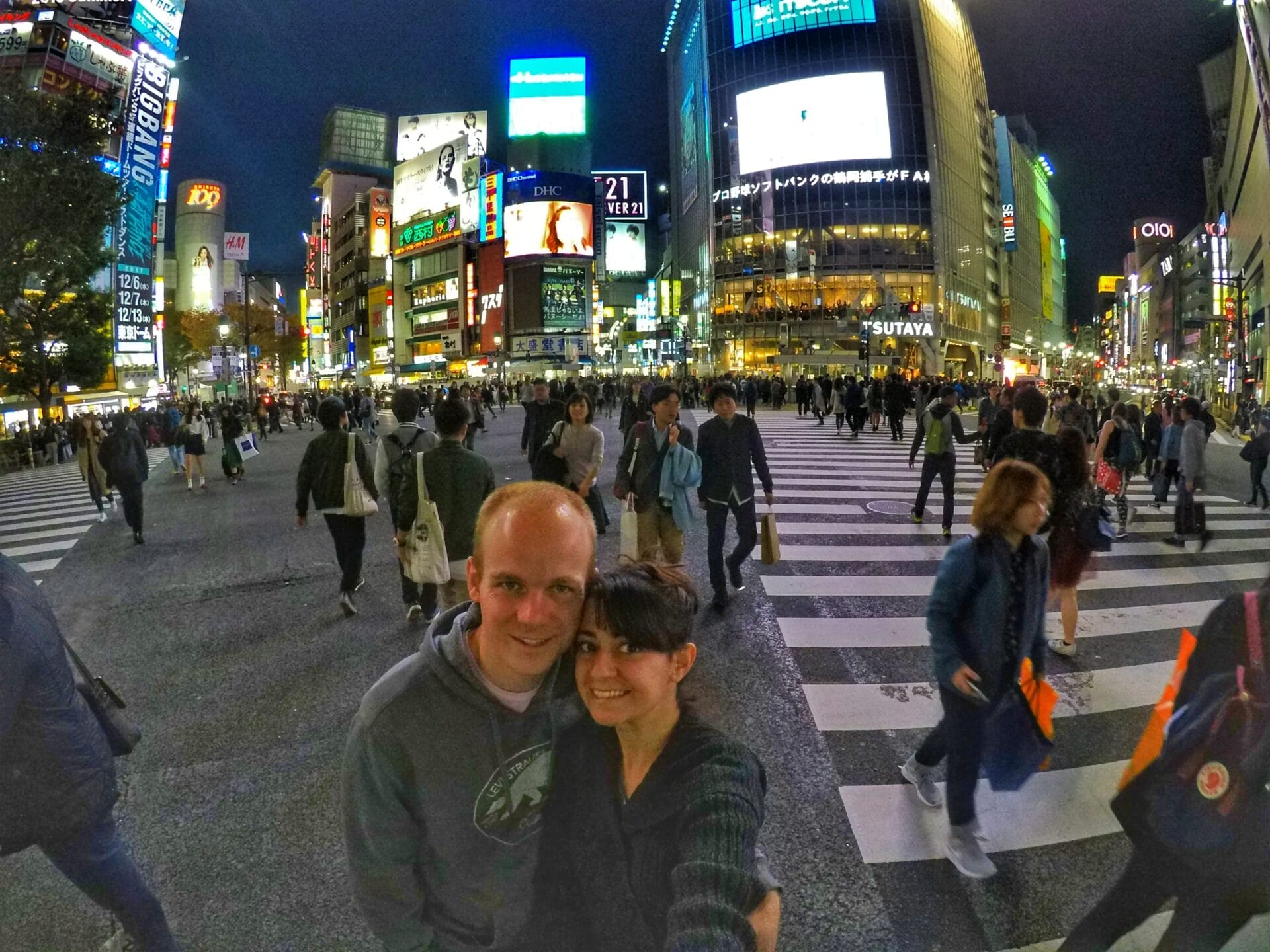
Pro-Traveler Tip : You can get mesmerized by watching people cross from the Starbucks across the street. Get to the Starbucks early to find a good window seat.
It gets very busy and seats by window fill up. We waited about 15 minutes to get a seat so that we could get some photos and pictures from this “viewpoint.”
There is also a good viewpoint from the glass level above the street at the train station if you want another option.
Having one of these pocket wifi routers was super helpful on our trip!

2. Day One In Tokyo – Hachiko Dog Statue
The gathering place where the Hachiko Dog Statue is located is another great place to check out on your first day in Tokyo.
This statue dedicated to the loyalty of a professor’s pet has a very heartfelt story behind it, but it also provides a fantastic opportunity for witnessing some great street performances.
Makes sure to set aside some time to people watch here and learn the story of Hachiko .

3. Day One In Tokyo – Center Gai – Shopping, Food, and More
Perhaps the “Center of Shibuya,” Center Gai is a youthful pedestrian street that is lively 24/7.
Here, you can find trendy fashion stores, nightclubs, fast food restaurants, bars and an almost dizzying stream of music and lights from all around.
We loved walking around and being a part of the stimulating vibe!

4. Day Two In Tokyo – Yoyogi Park and Meiji Shrine
On our second day in Tokyo, we had a mix of nature and urban exploration planned along with some good old fashion wacky Japanese fun!
You may think that Japan is expensive, but we were surprised to realize that things were realistically priced and for a big city it wasn’t ridiculously overpriced for travelers.
For instance, we decided to ride Uber from our AirBnB apartment in Shibuya to Yoyogi Park near Hirajuku Station and the cost was about $10 USD.
You could definitely get there much cheaper on the train, but it’s good to know that an Uber ride is an option.
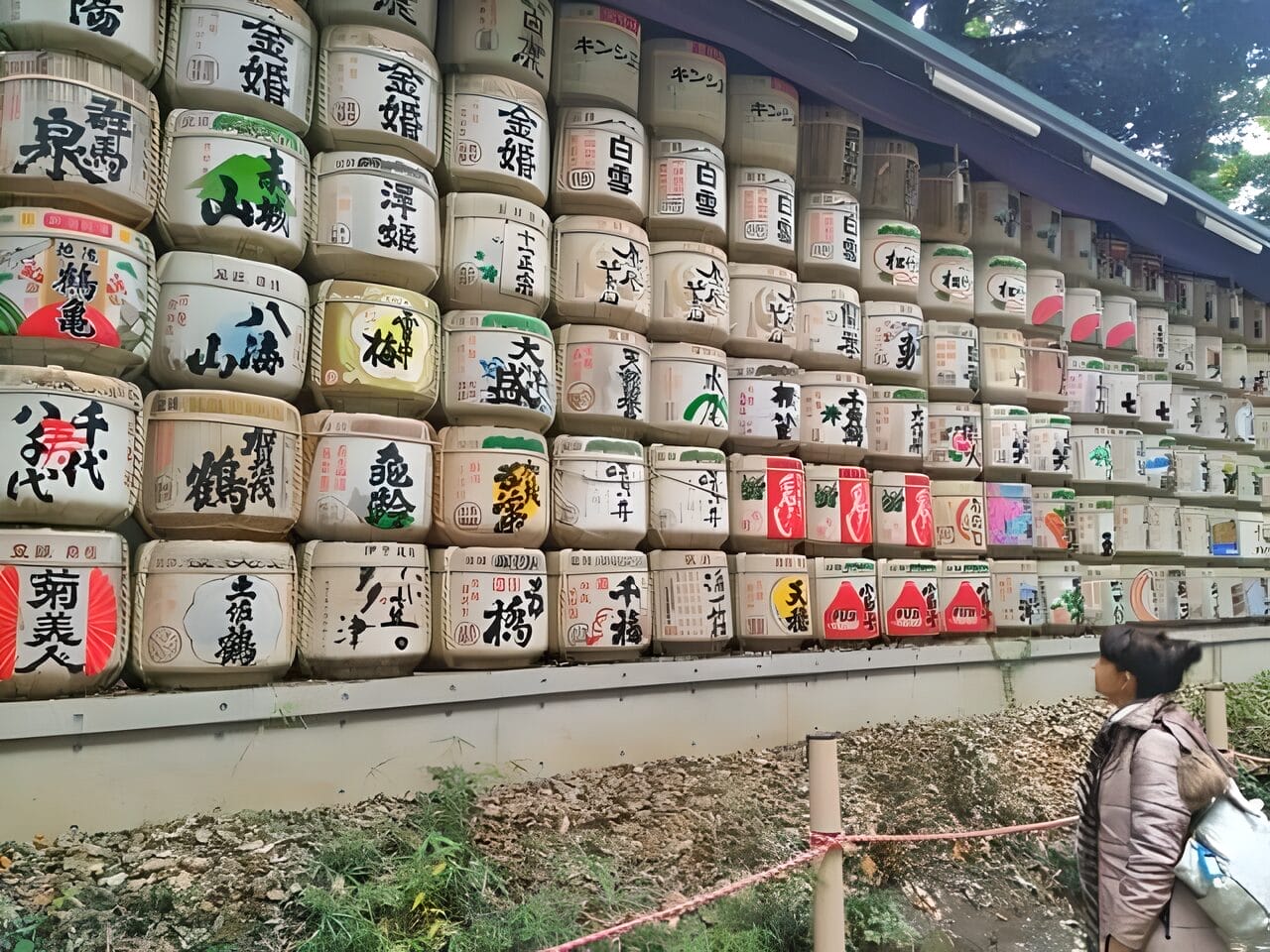
Yoyogi Park is free to enter as well as the Meiji Shrine , which located inside the park. It’s amazing how a beautifully lush and peaceful park exists right in the middle of a big urban city.
There are cool displays along the pathway that leads to the Meiji Shrine.
An interesting one was rows of sake barrels arranged on top of one another in a wall formation on one side of the path and mirrored on the other side the same display with wine barrels.
Further down the pathway, we found a bonsai tree exhibit beautifully arranged in miniature gardens along with other flowers and plants.
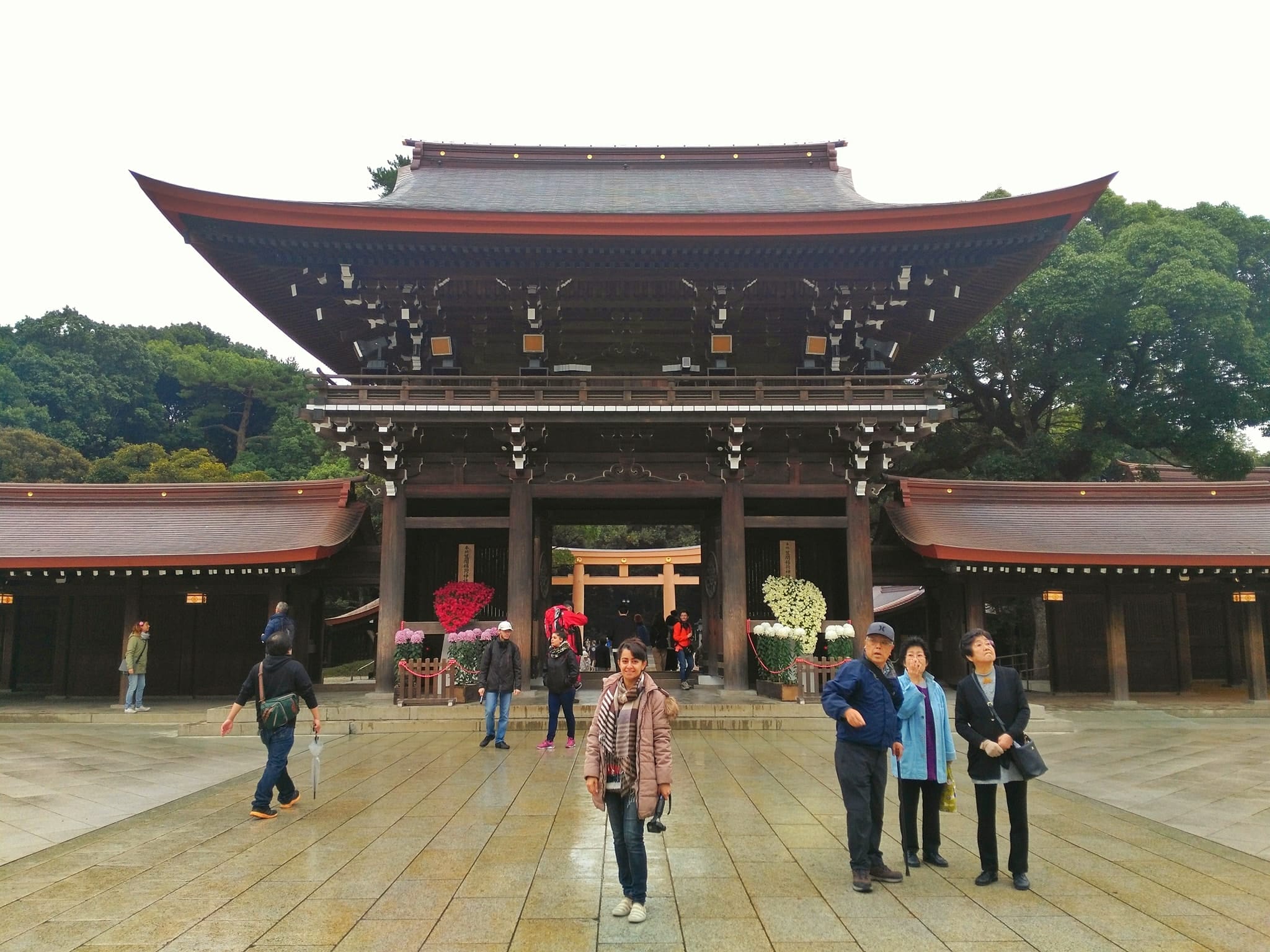
Walking around Meiji Shrine and experiencing the tranquility felt a bit like our visits to the many temples in Thailand.
I would say that a major difference, in my opinion, was the simplicity and minimalist factor with the Japanese shrines.
One of the “traditions” that we have started since we visit shrines and temples wherever we can find them, is making a wish and hanging it up in the designated area within these holy places.
Of course, we purchased (5000¥) one of the bamboo plaques that are for sale at the Meiji Shrine, wrote down our wishes and what we are grateful for and hung it up on the tree along with thousands of others that were also hung there.

What can you do nearby? Go to an owl cafe .
5. Day Two In Tokyo – Tokyo Skytree
After own serene morning at Meiji Shrine and Yoyogi Park we zipped over to catch the sunset from Tokyo Skytree.
Check out our lunch recommendation in the section below (within walking distance to Yoyogi Park).
How did we get to the Tokyo Skytree from Harajuku?
We took the train from Yoyogi park (240¥ each) with one change at the second station.
It was about half an hour train ride so we skipped going to the owl or cat cafe (though I really wanted to go!).

The Tokyo Skytree is quite an impressive tower. We highly recommend catching the views from the very top, especially if you can get there in time to see everything during daylight and the transition to nightfall.
You can just pay for the ticket to take you to level 350 (it takes 30 seconds to get there on the elevator!) if you have a strict budget, but pay the little extra to go to level 450, if you can.
Here’s the deal : It’s a lot less crowded on the higher floor. The views are not going to be drastically different, but hey, we wanted to go to the top!!!
The little shop at the Tokyo Skytree is a good place to get souvenirs. I got postcard here but had to get the stamp at Family Mart (local convenience store chain).
6. Day Two In Tokyo – Robot Restaurant
Have you heard of this wacky restaurant? Well, it’s definitely an experience to be had in Tokyo . Make sure to fit this into your 2 day itinerary, otherwise, you’d be missing out.

Pro Traveler Tip: You must reserve your tickets in advance, or you may not get a seat! You have the option to get food as well when you are buying your tickets online, but if you don’t get food, you will have plenty of opportunity during the show to get snacks and drinks.
They have a few concession breaks if you happen to get hungry or thirsty. This is also a good time to use the facilities!
The waiting room experience itself is pretty interesting. You have to show up about 45 minutes before your show time, but don’t worry about getting bored while you wait.
As you make your way into the waiting room, you’ll feel like you are entering some kind of “fun-house.”
Mirrors and colorful walls line the staircase and lead you to an even more bright and ornate lounge.
You’ll be able to grab some drinks here and just enjoy this glamorous lounge before the show begins.

The robot show is something that I just don’t know how to explain. But I’ll tell you this: It will be loud. It will be colorful. It will be sensational!
7. Day Two In Tokyo – Go Kart Around The City
I was really hoping to try this activity out while in Tokyo. I mean, you get to see the city from a whole different perspective!
Not only are you zipping around in a go-kart , but you get to dress up like some pretty famous video game characters!
If we had an extra day, we would have been able to have some fun riding the karts around Tokyo. Oh well, now we have a reason to get back there again soon!
8. Day Two In Tokyo – End The Night With Some Bar Hopping
Take a 5-minute walk to Golden Gai and check out these tiny bars in narrow alleys.
Some only fit about 6 people at a time! Keep in mind that some bars have a cover charge and some are for locals only.
Most will have a sign welcoming visitors and letting you know of a minimum spend amount or cover charge.
If that’s not your scene, head over to Piss Alley .

When we got there we realized that we should have probably eaten our dinner there.
The tiny “hole-in-the-wall” eateries were spilling over into the alleys with people enjoying, what looked and smelled absolutely delectable, even at the late night hour.
So what did we do?
Someone had recommended having drinks at Albatross, saying that it was like “walking into a dollhouse.”
This was exactly how it felt as we squeezed past the people sitting at the bar and up the narrow staircase to a tinier room upstairs.
We had some great sake here and loved experiencing how some Tokyo-ites enjoy a night out with friends.

Sadly, we never made it to the Tsukiji Fish Market.
Just out of pure laziness!
But if you are an early riser, you could definitely fit it into this itinerary. Or better yet, book this tour for the ultimate foodie experience!
How To Get To Tokyo From Narita Airport
We traveled from Chiang Mai, Thailand , to Tokyo Japan which included a long layover in Bangkok.
Though it was a very long, overnight, travel experience, all went as smoothly as one could want. It’s always nice when flights don’t get canceled and everything works out.
Needless to say, we arrived at Narita Internationale Airport very tired, but in good spirits.
In retrospect, we should have probably flown into Haneda Airport as it is closer to Tokyo.
Nevertheless, we were able to take the Narita Express (N’EX) straight to Shibuya where our AirBnb booking was located.
The NEX ticket was ¥4000 Japanese Yen (about $35 USD) per person.
This is the roundtrip (one hour and forty minute ride each way) ticket cost and a very good value considering taxis can cost around $200 USD!
You just have to make sure that you keep your ticket for your return to the airport.
It’s also important to remember you have the ticket so that you don’t end up purchasing another one on your way back (Yeah, we did that…ooops!!).
I would recommend getting the regular ticket as opposed to the upgraded seats.
The regular seating is very comfortable and spacious so I can’t imagine many people would need more space than that.

Pro-Traveler Tip: Pay attention to which car you are supposed to sit in (indicated on your ticket) to make sure you’re going to correct destination. Sit in reserved seating section because cars separate and go in different directions at Tokyo Station.
Where To Stay In Tokyo
The moment I started looking into making our travel plans for Japan, I started seeing suggestions to stay in Shibuya area.
This turned out to be a very good and accurate recommendation.
Shibuya is very centrally located and makes it easy to get around to the different parts of Tokyo that you’ll want to see.
I would certainly echo this tip and say that it made our experience in Tokyo much more convenient than had we stayed elsewhere.
Our AirBnB was a 4-minute walk from Shibuya station (west exit).
Though the apartment is located very close to the train station (and very busy and crowded area) it was a bit tucked away in a quiet location.
We love staying at AirBnBs much more than hotels because they tend to give a more authentic stay experience.
This particular studio apartment was even decorated in a more traditional Japanese style with futons on the floor for sleeping! It was a very tiny apartment (as expected in a big city like Tokyo).
The bathroom was like an airplane lavatory and the kitchen area was in a closet! We loved it!
Good Places To Eat In Tokyo – 2 Day Itinerary Foods To Try

- Lunch at Kiraku – Shibuya local Ramen (2 bowls $12) very authentic, small, no English menu!
- Dinner at Uogashi Nihn-Ichi – Shinjuku standing sushi bar ($18 for platter 2 handrolls, green tea, miso)
- Where to go for lunch in Harajuku : Kyushu Jangara Ramen (funky place)
- Where to eat dinner in Shibuya : Genki Sushi Co. – Conveyor belt Sushi, nearby in Shinjuku (3900 yen)

You should also check out this article we wrote: Planning Your First Japan Trip

Taiss Nowrouzi
Taiss Nowrouzi is a writer, photographer, and social media influencer with a passion for dance on the side. Taiss has a Bachelor’s degree in Marketing from San Diego State University. After over a decade in the hotel business, including five years in the management, she left the corporate world to pursue a life of a digital nomad.
Family Travel Planning Resources
✈️ Peace of Mind on Your Adventures
We never leave home without SafetyWing travel insurance. It’s comprehensive, affordable, and a total lifesaver for unexpected situations!
🏨 Scoring the Best Deals
We’re all about comparing prices on Booking.com or Agoda.com (when traveling to Asia). That way, we always snag the perfect hotel or vacation rental for our crew, without breaking the bank!
🌍 Activities for Everyone
Viator is our go-to for discovering awesome activities everyone will love. They have something for every interest and age, so no one’s left out!
🎒 Our Must-Have Travel Essentials
Check out our Amazon Influencer Store for our tried-and-true travel essentials. These are the goodies we always bring along to make our trips comfy and enjoyable.
💰 Managing Finances While Globetrotting
Wise is our secret weapon for easy currency exchange and international transfers. It’s super convenient, secure, and always has great rates!
So fun and so different than my experiences in Tokyo. First time I was with a Japanese family and my 5 year old. Second time, our Japanese hosts set the itinerary and it was fantastic. I would’ve loved to have more time to see the Robot Cafe and Piss Alley but still as Tokyo is one of the most fascinating places in the world, I’m grateful. I was with California fishermen so we got into Tsukiji for the early morning auction! Incredible. Love Japan.
That’s so great that you experienced the fish market! I hope we can go back and get o that next time!
I am so interested in the shrines of Tokyo. The bamboo plaque thing sounds so interesting. I too want to write a wish and thank you note and hang it there. Thanks for the tip to get the best Shibuya Crossing. Robot restaurant surprised me. They really know how to keep a tourist busy. ????
Yes, they do! The shrines are very unique and lovely places to reflect!
This sounds like an awesome itinerary for Tokyo! Though I’ve been there twice, I’ve only done a couple of the things on your list. I would love to get into the scramble at Shibuya crossing, drink and eat in those mini bars and restaurants near Golden Gai, and go to the robot restaurant. And of course eat a ton of tasty food too. :) Thanks for your recommendations!
We really loved Tokyo and hope to go back. Glad to hear that our guide inspires you to experience more next time you visit! The food is so good!
Hey! I am planning to visit Japan in 2018 and I find your guide very helpful. It feels like one can catch a lot over two days in Tokyo! By the way, I will follow your insider tip and go to Starbucks,too!
The efficiency in Japan is amazing and helpful in getting to see everything. I hope the Starbucks isn’t too crowded when you go. Enjoy your time! It’s a fantastic place that I miss very much!
This is definitely a packed itinerary. I think the thing that would love to explore the most are Yoyogi Park and Meiji Shrine – I studied cultural anthropology and Eastern Religion in college, so that’s right up my alley. Then the Robot Museum would be my next choice. Because, what the heck? Haha!
What an interesting topic of study! I think you will love the shrine for sure!
Tokyo is one of my favorite cities! There is so much to see and do there and the energy is just so amazing. Thanks for sharing some great suggestions—we will have to check some of these out on our next trip to Japan. We didn’t get a chance to see the dog statue or Tokyo Skytree, but we loved Meiji Shrine, Robot Restaurant and Shibuya Crossing! We didn’t make it to Tsukiji Fish Market either—would be fun to see that next time too!
The dog statue is not really as interesting as the story behind it so check it out next time!
hi there, thanks for your post. A very good read. Can i ask you few things? I live in New Zealand and planning to take my family (wife and 2 year daughter), my parents, brother’s family (2 adults + 12 year old and 6 months old).
We are vegetarians and don’t eat meat/egg/fish etc.
1. Can you suggest that your itinerary still suits us? Is there anything that you would like to cut or add having this sort of target audience.
2. Do restaurant owners/workers understand little english or not? 3. What is the best way to get internet working there so that we can use google maps or some sort of directions. 4. Is it good to rent a car or public transport is good. I am just conscious that hiring will go very expensive due to large family (almost 7 adults + 2 babies).
Thanks, Lucky
Hi Lucky! Thanks for reaching out to us! I will try my best to give you some good answers below:
1. Since you have a couple of babies with you, maybe the Golden Gai and Piss Alley would not be appropriate for visiting with them (maybe try taking turns watching the babies and visit in shifts?). The robot restaurant may also be a bit too much for the little ones. You could keep everything else in this itinerary. I’m sorry I don’t have any restaurant suggestions for good vegetarian dishes, but I’m sure you can always order noodle and rice dishes without meat!
2. Yes, we had good experience in communicating with the people in restaurants and shops (with some hand signals, simple phrases and lots of smiles). They usually greeted us in Japanese (and we tried our best to respond) and they are extremely polite and helpful people so when we asked questions or requested something in English they tried their best to understand and accommodate us!
3. You will certainly want to get an Unlimited Pocket WiFi Router. You can rent one at the airport upon arrival or click the link we provide towards the beginning of this article (it’s a box with a red arrow on the left of it). We rented one and it was very helpful during our time there. You just have to make sure you have it charged and ready for the day! Alternatively, you can get a sim card when you get there if you have an “unlocked phone”
4. I would recommend against renting a car because parking may be an issue (probably even more expensive). The public transportation is really great. Try to take trains everywhere. They are VERY convenient and easy to navigate. If you need to take taxi, it will not be too expensive and will be less headache than having to deal with a car in a big city like Tokyo.
I hope that helps with your trip planning! Let me know if I can answer anything else for you! Have a great time in Tokyo!
Leave a Reply Cancel reply
Your email address will not be published. Required fields are marked *
Save my name, email, and website in this browser for the next time I comment.
Exploring Tokyo in 2 Days – Suggested Itinerary
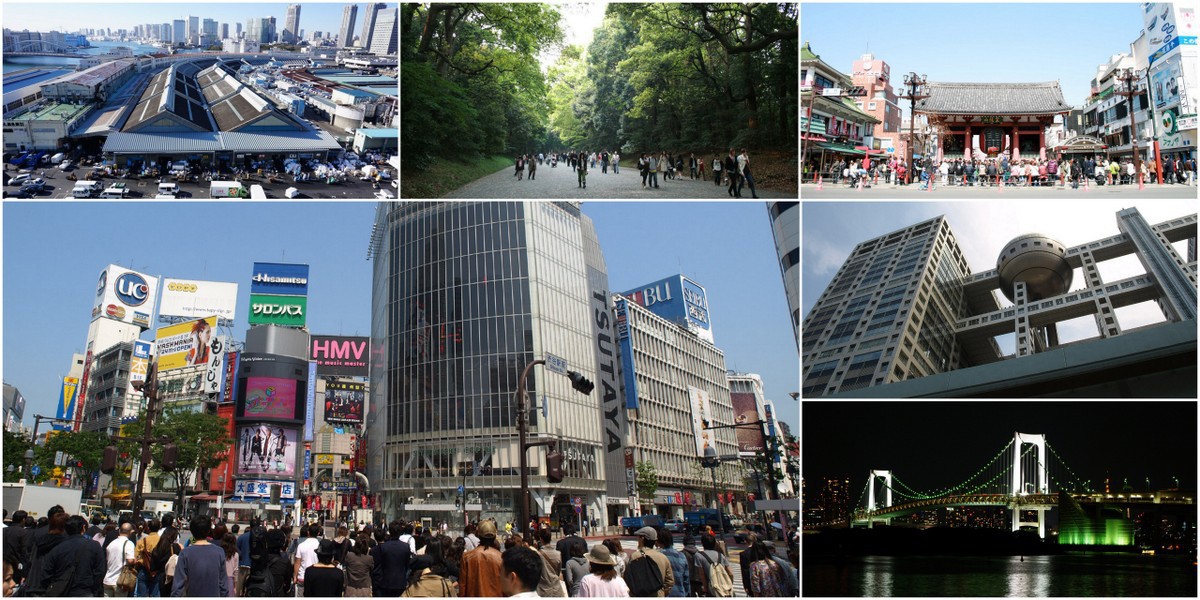
There are many places to see in Tokyo and you might feel a little lost as to where to start your trip. So we compiled a two-day-itinerary for exploring the different areas in Tokyo. With this itinerary we covered the most of the must-visit places for first-time travellers to Japan. Including cultural hotpots, hidden gems, stunning scenery and much more. Let’s go!
10am : Shibuya crossing
11am : omotesando, 1pm : harajuku & meiji shrine, 3pm : shinjuku, 5pm : watch the show at the robot restaurant, 7pm : dinner at an izakaya, 9am : enjoy a sushi breakfast at tsukiji market, 11am : hamarikyu garden, 12.30pm : tokyo station , 1pm : asakusa, 3pm : odaiba, day 1: west side of tokyo.
Have you ever seen the picture of Shibuya crossing? It is (one of) the most famous crossing in the world. About half a million people cross here every day and during peak time 2,500 people cross at the same time! You can walk across and see the view of the crossing from one of the many buildings with a view on it. The Starbucks is one of the most popular places to get a nice view of the crossing while enjoying a coffee. Shibuya crossing is also famous as a location for the movie Lost in Translation. In fact, the crossing is featured in many movies. Maybe you will be part of a movie too!
Would you prefer to have a local guide show you around in Tokyo? Have a look at our private tour options!
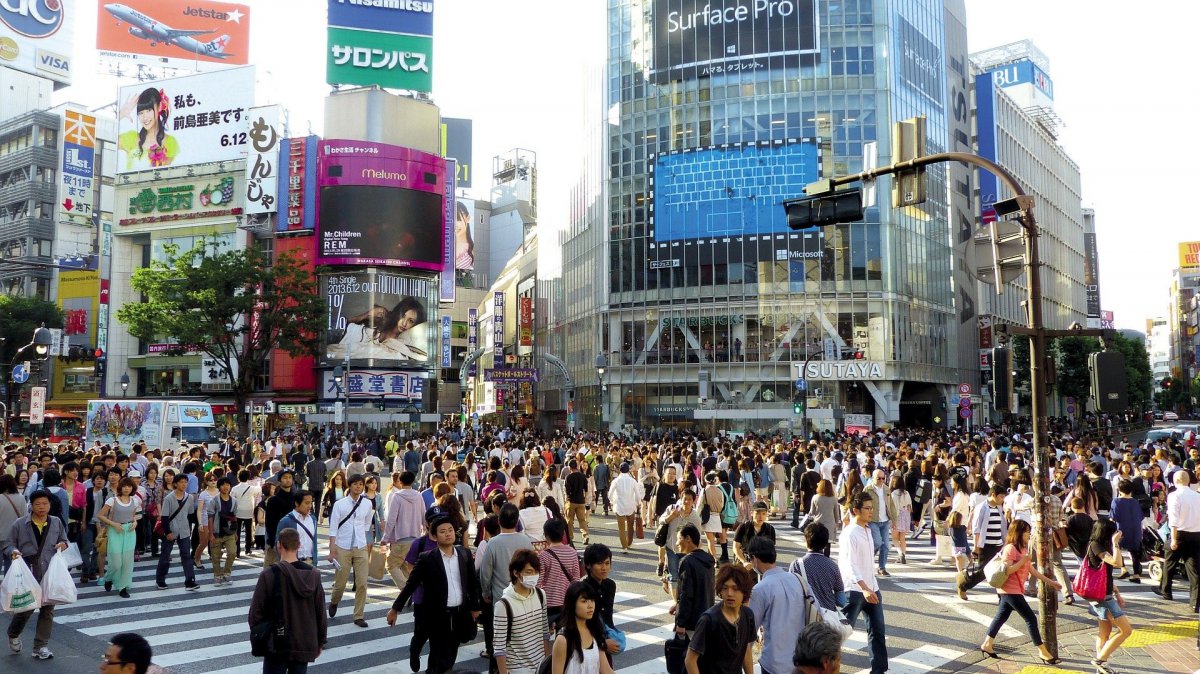
From Shibuya make your way up to Omotesando. You can either take the Ginza or Hanzomon line for 1 stop or walk for about 20 minutes.
Omotesando is known as one of the foremost ‘architectural showcase’ streets in the world, featuring a multitude of fashion flagship stores within a short distance of each other. Omotesando was originally designed as the front approach to the Meiji shrine. Now it is nicknamed as “Avenue des Champs-Elysées Tokyo”. The street is lined with high end boutiques such as Luis Vuiton and Chanel. If you are interested in art museums, don’t forgot to visit Nezu museum , a famous art museum in Japan.
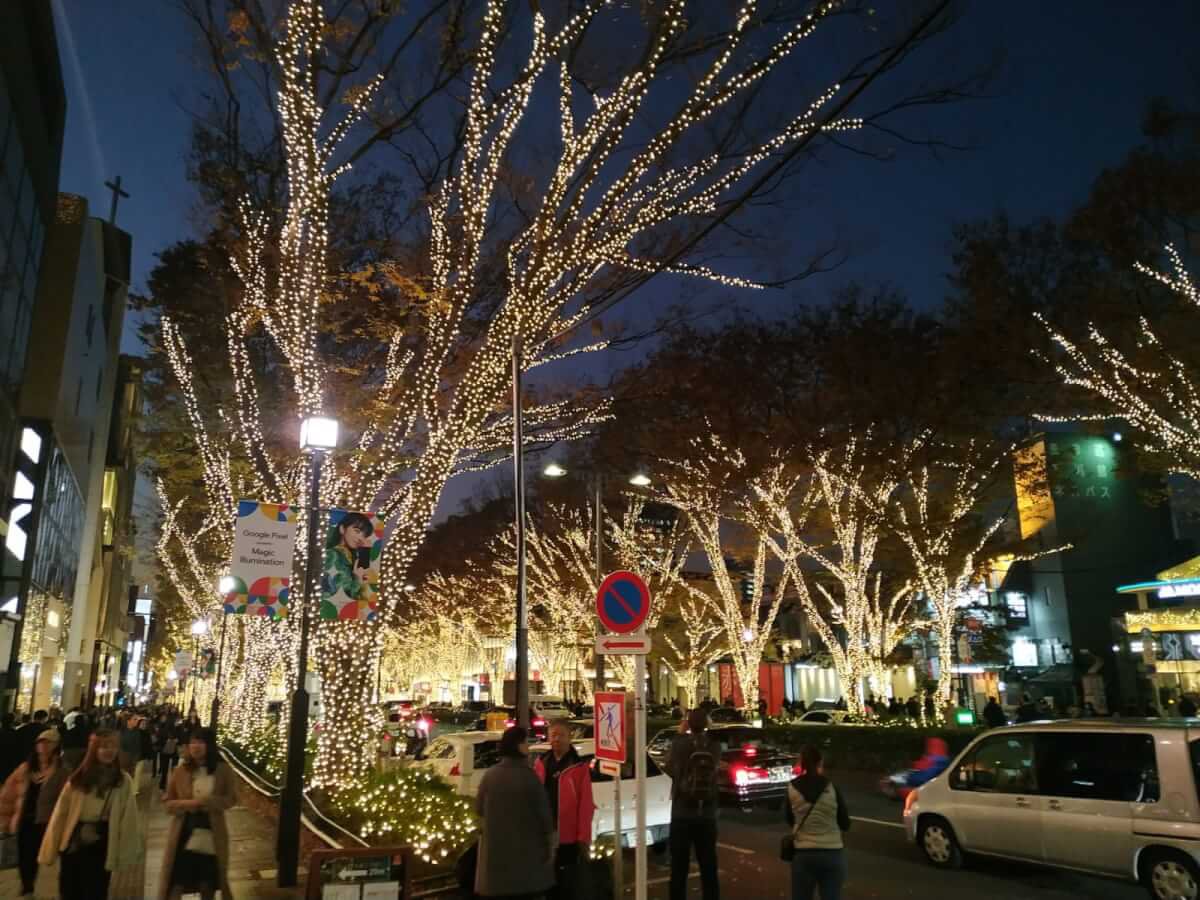
Walk down Omotesando Avenue lined with Zelkova trees, decorated beautifully with Christmas lights in december, but also do not forgot al the nice back alleys located in the neighbourhood. There are several cute coffee shops and (local) designer stores to be found in this area. South of Omotesando Avenue you can find cat street , a hip area with many shops, that not accessible for cars. Continue east until you reach Yoyogi Park and Meiji Shrine.
Harajuku is known as the center of Japanese ‘Kawaii’ (Japanese for cute) culture and fashion. Here you can find many shops selling the Harajuku girls fashion, thrift shops selling Western clothing, art galleries and much more. Spend some time walking down the streets and don’t forgot the back alleys, you will be surprised what you can find there too!
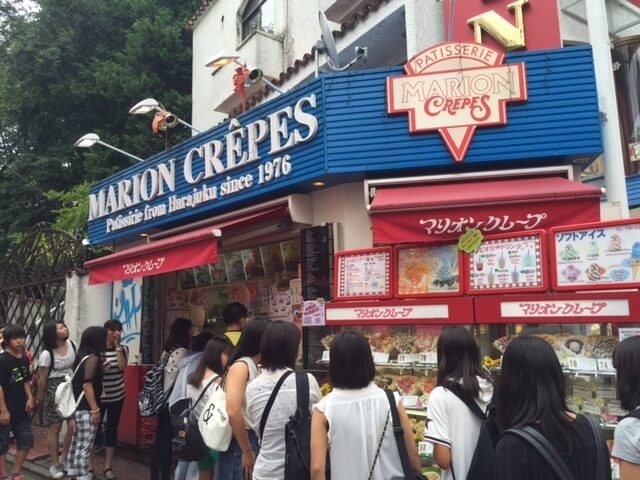
Across the trains tracks, next to Yoyogi park, the famous Meiji shrine can be visited. Enjoy the interesting contrast of this quiet place in the middle of the worlds largest city and sacred atmosphere in Meiji shrine. In the weekend, you can some witness Japanese style wedding ceremony at the shrine!
When the sun is out, you will see many people enjoying the nice weather while doing sports, reading a book on a blanket or hanging in the park with friends!
If you are looking for some spots in and around Tokyo where you can enjoy nature , please read our blog 10 nature spots in Tokyo !
Shinjuku is known as large entertainment, business and shopping area. Shinjuku station is the world’s busiest station, with about 3.5 million passengers transiting here every day. The station also has some 200 exits, a real maze!
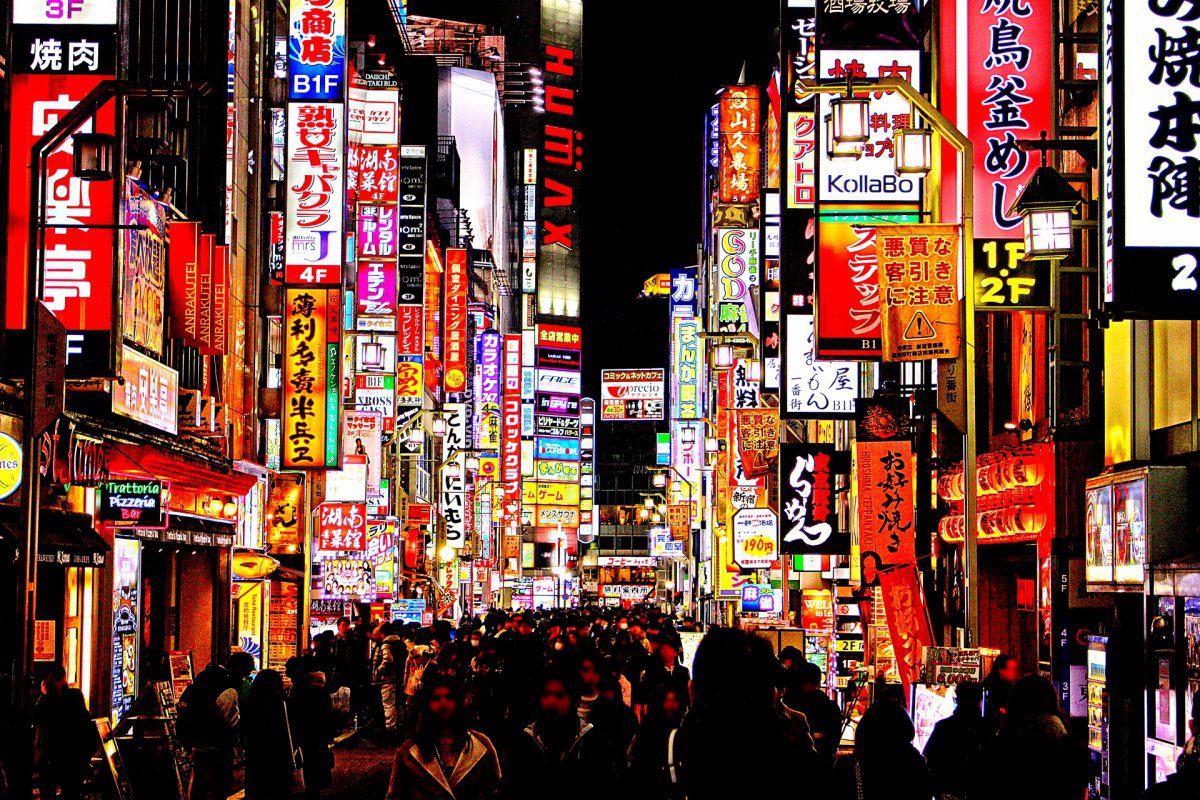
In this district you can also find the famous Golden Gai , a large collection of (really) small bars and restaurants in different alleys. Another to go to place it Shinjuku Gyoen park located at eastern part of Shinjuku station. The park is famous for its Japanese and English gardens.
When you would like to see Tokyo at great height, we recommend you visit the Tokyo Metropolitan Government. You can access the observation deck on the 45th floors, from which you can see as far as Mt. Fuji on sunny days.
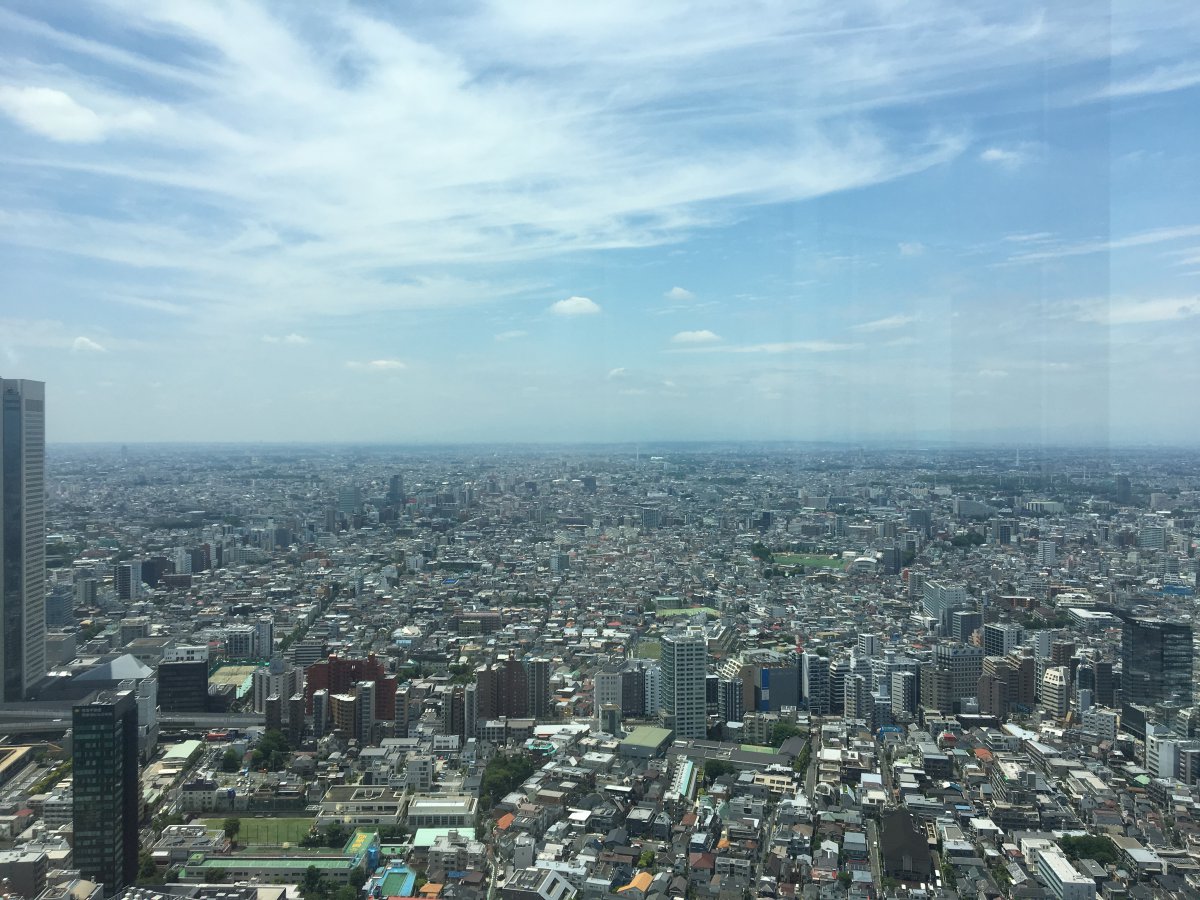
Robot Restaurant is very famous entertainment show for foreign tourists. Even though the name of this place is Robot Restaurant , it really is more one spectacular show. It is definitely something you have never experienced before. High-tech laser displays, multi-coloured lights, flash dancers, glittering robots make for a crazy (good) night out. As the name implies it is a restaurants thus you can have dinner there, but our recommendation is you watch the show and have dinner elsewhere.
Get your discounted tickets for Robot Restaurant through us

What type of Japanese food comes to your mind? Tempura, Ramen, Yakitori… There are so many different local things to try! We recommend you visit a local izakaya and immerse yourself in the Japanese culture in the bustling area of Kabukicho. Or when you want to enjoy Japanese food and night as local, join our bar hopping tour!
Discover Shinjuku with out Bar Hopping tour!
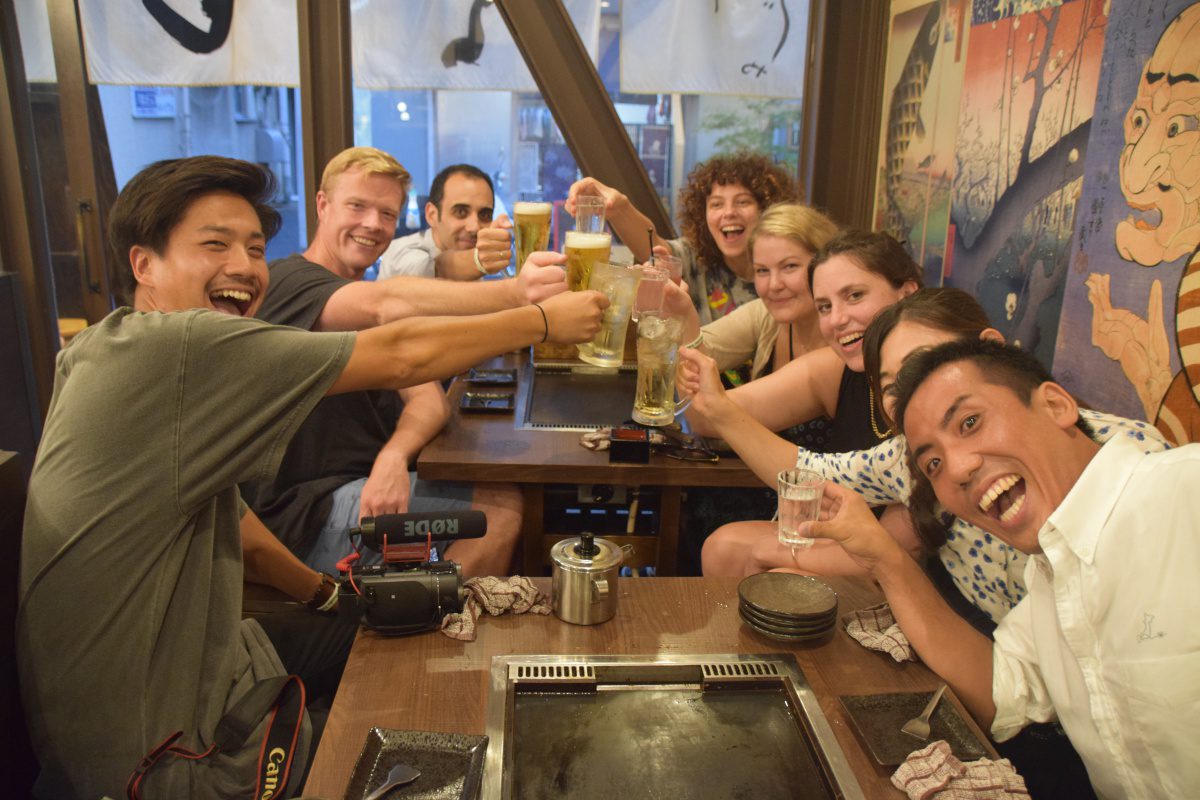
Day 2: EAST SIDE OF TOKYO
Start your day early at Tsukiji fish market, also known as The Kitchen of Tokyo . In 2018, a large part of the market (the inner market, or the wholesale market), was relocated to Toyosu. But presently, the outer market can still be visited. Tsukiji Market is one of the biggest fish markets in Japan. But it is not only a fish market, you can also buy fresh vegetables, Japanese sweets and some kitchen equipments here. There are about 400 stores in the outer market and you will see many interesting ingredients and food while walking around. Learn about Japanese cuisine while walking in the narrow streets of Tsukiji Market with a local guide. For more information, check the link below!
Tip: As the fish is delivered fresh daily from Toyosu Market, it is one of the best places to enjoy some sushi!
Join our food tour at Tsukiji Market to learn more about market and taste the products!
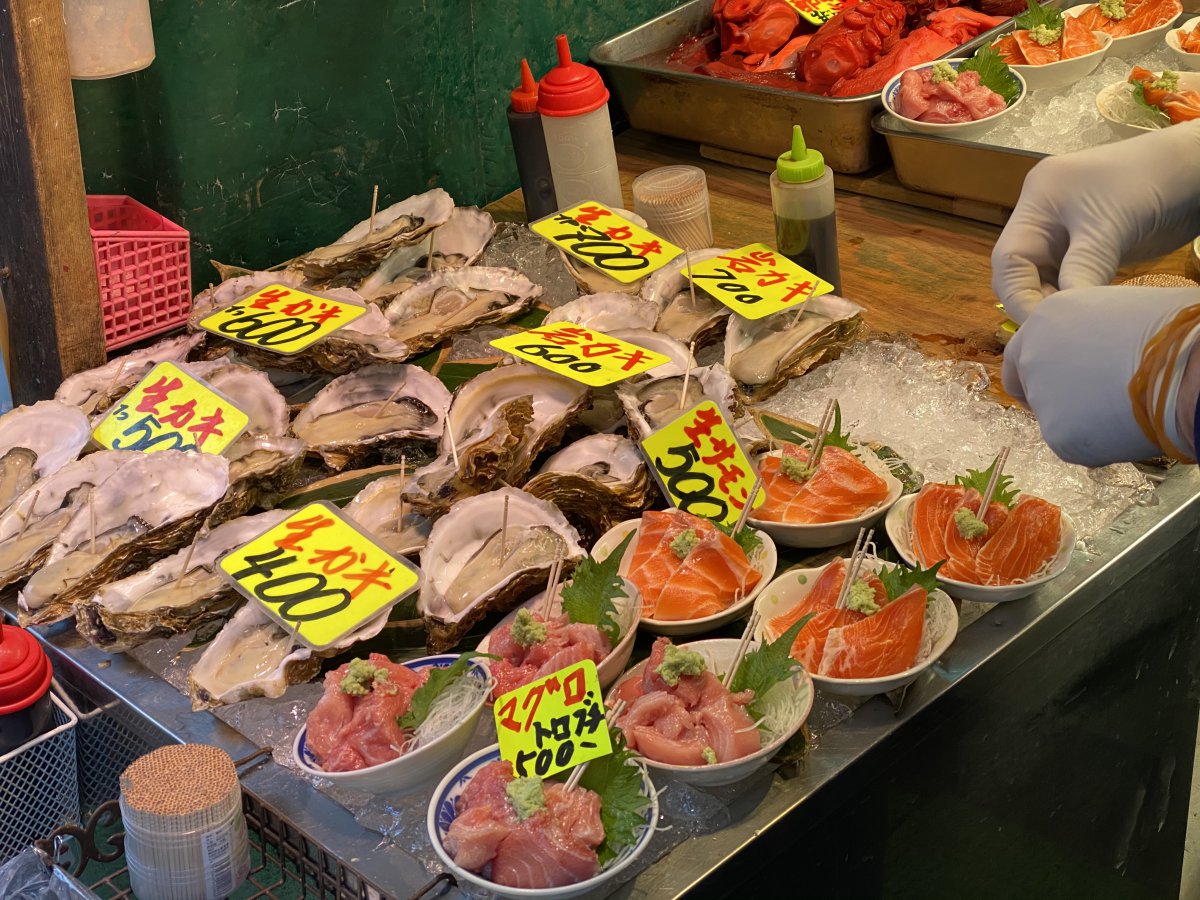
In Tokyo is a real concrete jungle, but when you know where to go, you can also find beautiful, peaceful green parks and gardens. One of these places is Hamarikyu Garden, one of the most famous gardens of Tokyo. The gardens are located next to Tsukiji market, hence its great to combine a visit to these places. In the garden, follow the signs for Fujimiyama Hill . The ‘top’ of the hills provides a great view of Tokyo where the contrast between present and old days is portrayed in an awesome way!

Tokyo station is one of the most impressive stations in Japan. Its architecture, which is red-brick style, is really historical, magnificent and beautiful. In the area around the station you can spot similar buildings, with the same architectural style. The Marunouchi area is known as a business district, with many skyscrapers that offer a large variety of shops and restaurants on their lower floors.
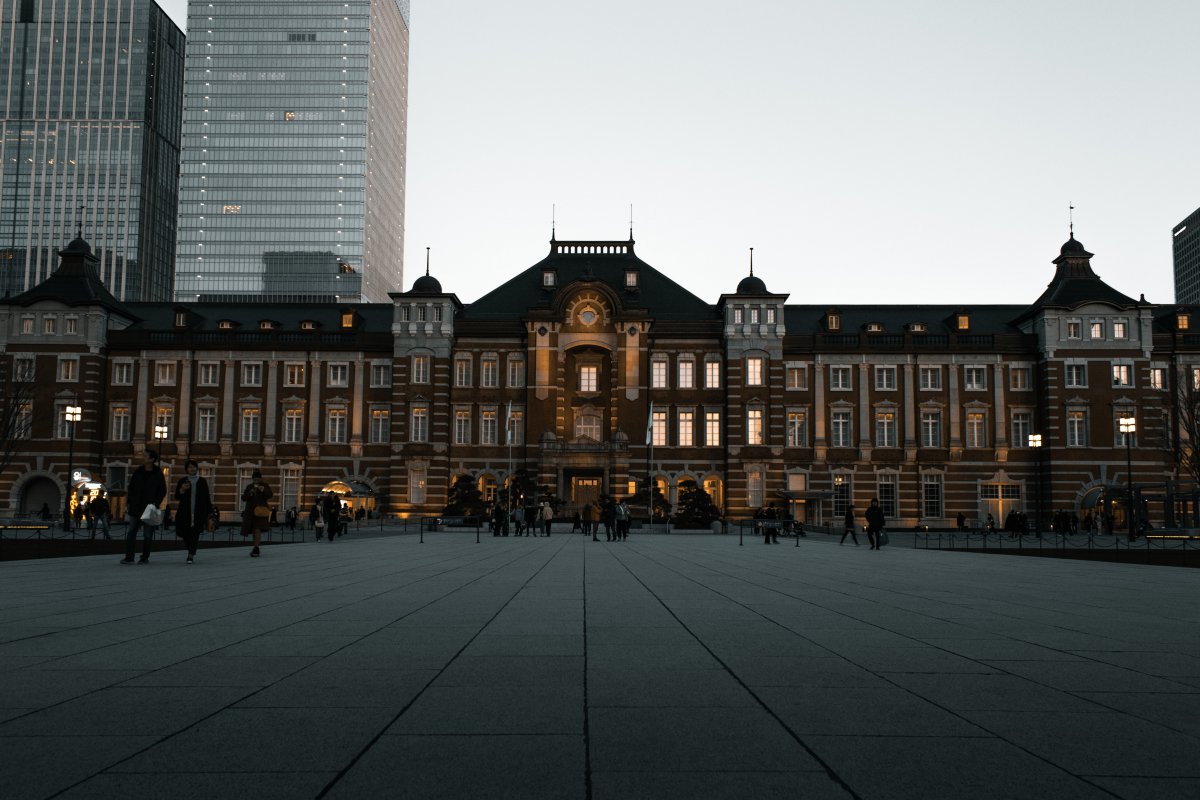
In the weeks before Christmas, the decorative lights lit up the area stunningly, giving the area a special festive atmosphere!
Asakusa is another famous sight seeing spot in Tokyo. Asakusa (浅草) is the center of Tokyo’s shitamachi (old town), where an atmosphere of the Tokyo of past decades survives. Asakusa was developed around the Sensoji temple, Tokyo’s oldest temple which was founded by legend in 628. The temple ground is always jam-packed with both Japanese and non-Japanese tourists. We recommend you get your fortune by buying an Omikuji (fortune telling paper) for ¥100. This is a part of fun! Also, stroll down the main streets of Asakusa and try some of the many traditional snacks.
Read more about this area at our blog 1 day itinerary in Asakusa .
From Asakusa you can take a boat to Odaiba, located Tokyo bay area, honestly it feels like time travelling. The difference between Asakusa (old town) and Odaiba (modern) is clearly visible! Odaiba is also a very famous dating spots for Japanese youngsters. You can enjoy the romantic twinkling views of Tokyo from the island, one of the best views of Tokyo, especially at night. There are several shopping complexes where you can enjoy shopping and dining. Read all about Odaiba in our blog Escape to Odaiba .

This itinerary covers the different faces of Tokyo, showing you nature and culture, historical places and modern architecture, hidden gems and the most popular tourist spots. When you are interested in learning more about the history, culture and fun facts of Tokyo, consider joining a guided tour. We offer many different tours and can also customise your trip to enjoy both modern cityscape and nature in Tokyo in one day.
Check out our tours at Japan Wonder Travel
Let us know in the comments or tag us on instagram @Japan_wonder_travel to get featured!
Happy travelling!
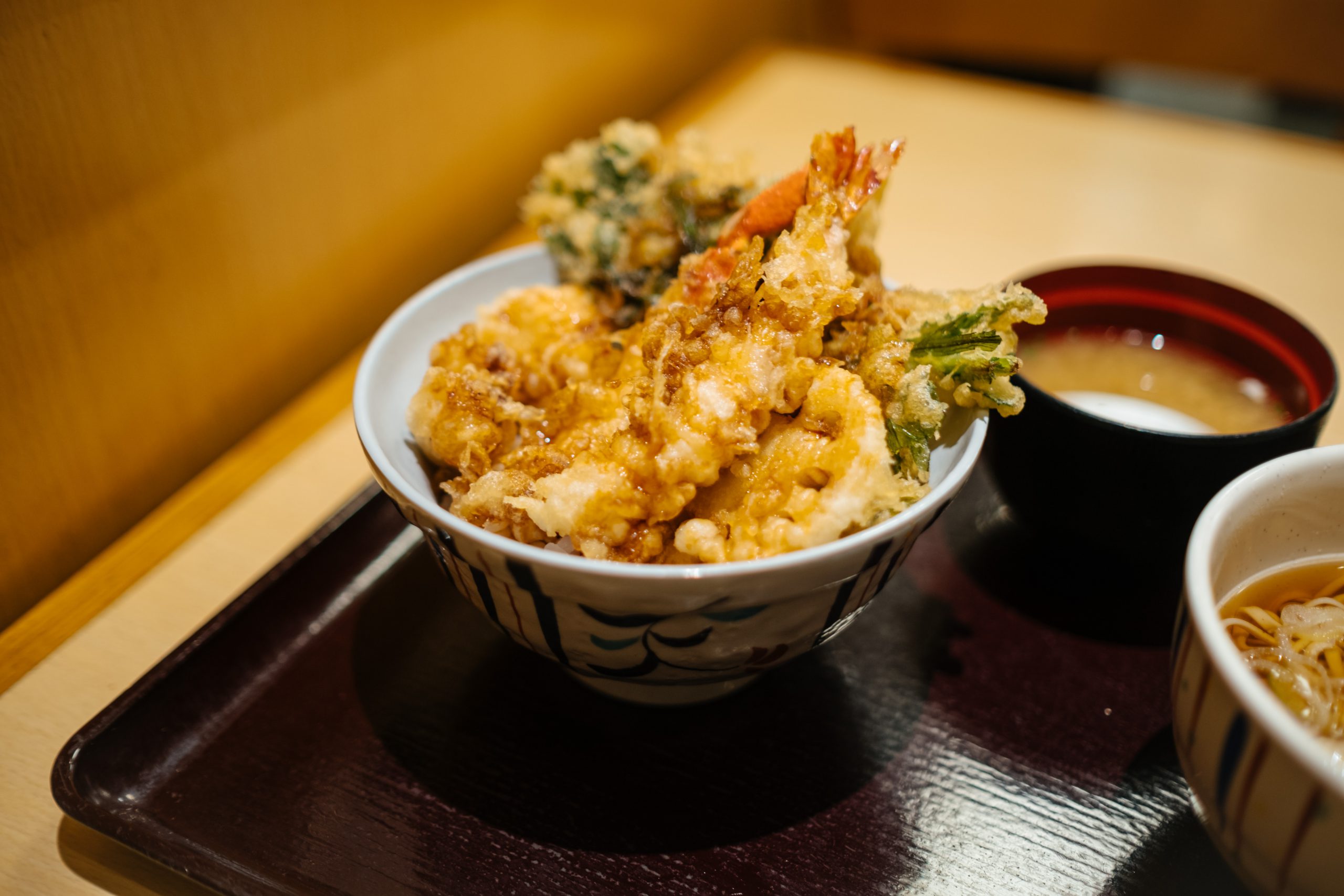
A very nice post! Just a tip concerning many of the parks, like Hamarikyu Garden. As well as buying your ticket, you need to present another numbered ticket at the gate these days. You can get those online from the park’s website. You can make the reservation in English, and it is easy to do. They don’t cost anything, but it’s a loop you need to jump through.
- Popular destinations
- Hidden places in Japan
- Tours and workshop
- Food and drink in Japan
- Itinerary in Japan
- Places to visit in Tokyo
- Food and drink in Tokyo
- Seasonal events
- Tours & workshops
- Tokyo This Week
- Day trip from Tokyo
- Itinerary in Tokyo
- Places to visit in Kyoto
- Food and drink in Kyoto
- Itinerary in Kyoto
- Day trip from Kyoto
- Travel tips
- Accommodation
- Cultural tips
- Transportation
- Tokyo Tours
- Kyoto Tours
- Kimono Rental
- Fukushima Tours
- Mount Fuji Tours
- Tour Package
- Travel Concierge Service
- Media Kit(English/日本語)

Jea Wanders
A Travel & Food Blog by Jec & Dea
Tokyo Itinerary | DIY Tour for 2 Days

As first-time visitors to Japan, we made sure to spend some time exploring its amazing capital city, Tokyo. We wanted to experience what it feels like to be in the world’s most populous metropolis and dive into its wonders. This DIY Tokyo itinerary is not the most perfect one there is, but through it, we experienced the city’s traditional side and modern atmosphere while immersing in the sceneries for at least a couple of days.
From the culture-rich districts of Asakusa to the high rises and busy modern streets of Shibuya. From the hippest and very trendy Akihabara to the old-fashioned setting and vibrant gardens of the Imperial Palace. These are just among the amazing experiences we had on this tour that I want to share with you. The places listed in this itinerary are within relatively short train rides from each other, thus, easy to DIY.

You can also watch our Tokyo City Tour!
Tokyo DIY Itinerary
Our Tokyo itinerary started from night 3 through day 5 of our Japan trip.
Here’s a table containing the list of places covered per day.
Upon getting back to Tokyo from our Mt. Fuji day trip, we did a quick night stroll around Akihabara. It is not considered the electronic capital of Japan for nothing. Akihabara is densely packed with electronics retailers ranging from tiny stalls to huge department stores where geeks and tech enthusiasts can score electronic items for competitive prices. But it’s not just about electronics and all sorts of gadgets. This is also a haven for fans of anime, Japanese pop culture, and gastronomic food experiences.
We had no plans for shopping or dining but it was a great night just walking around and observing the urban scenes of Akihabara. It’s nice to see that despite being highly urbanized and crowded, orderliness was still evident. The area doesn’t look and feel polluted, that’s why we still had a pleasurable leisurely walk.

ASAKUSA (with Kimono Experience)
When we think about Tokyo, what instantly comes to mind is a modern bustling city powered by advanced technologies. But Tokyo isn’t all about that. Head to Asakusa and you will witness old Tokyo vibes without going out of the city.
This is where you will find the oldest temple in Tokyo, the Sensoji Temple. And the 250-meter path going to the temple is called Nakamise Street. It is the oldest shopping street in Asakusa which is lined with traditional craft shops and food stalls on both sides.
And is there a better way to explore Asakusa than to walk around donning a kimono? Surely, this became one of our most memorable experiences in this Tokyo itinerary! We spent the entire morning of day 4 exploring Asakusa like a traditional Japanese local!

You can read more about our kimono-wearing experience in Asakusa here .
Asakusa is also a notable location for fans of the anime series Demon Slayer. This is where Tanjiro finally found Muzan. Although it may look a little different because it was the old appearance of the place that was featured in the series. Asakusa was mostly destroyed during the Great Kanto Earthquake and was rebuilt.
SHIBUYA SKY
After the cultural trip to Asakusa, we then headed to Shibuya like we were transported from an ancient location to a new-fashioned district. SHIBUYA SKY is a 360° open-air observation deck, a perfect place to have a bird’s eye view of the city. It is located at the highest level of the Shibuya Scramble Square skyscraper.
There are lounges where you can relax while admiring the views, and an indoor museum and cafe as well. It’s also a great spot to see the famous Shibuya crossing scramble!
We booked our tickets via Klook. It’s nice that there’s no need to change into actual tickets. All we needed to do was to go straight to the site and scan our QR codes at the entrance. We booked here: SHIBUYA SKY Ticket

SHIBUYA CROSSING
Any Tokyo itinerary wouldn’t be complete without seeing the famous Shibuya Scramble Crossing. It is a popular pedestrian scramble located in front of the Shibuya Station Hachiko Exit. Here, pedestrian is the priority. Vehicles in all directions should stop to allow pedestrians from the entire intersection to cross over.
It was a nice experience to watch people go across the street like tiny little ants (from Shibuya Sky Observation). And of course, to actually set our foot on the road to cross over and blend in with the local Japanese employees and tourists!
You’d appreciate the place even more if you’re a fan of the Alice in Borderland series because this is one of their most notable shooting locations. You will surely wish that you won’t suddenly see any fireworks in the sky!

HACHIKO MEMORIAL STATUE
Just a few meters walk from the Shibuya Scramble Crossing is the Hachiko Square where the Hachiko Memorial Statue is located. For sure, many of us already know the story about Hachiko. Hachiko is a famous Japanese Akita dog who faithfully waited for his deceased owner to return for more than 9 years until his death. The bronze statue was put up in honor of Hachiko’s unwavering loyalty to his owner, Hidesaburō Ueno.
This eventually became a well-known landmark and the whole of Hachiko Square has been a popular meeting place and rendezvous point for everyone, locals and tourists alike.

ICHIRAN RAMEN
After a tiring (but amusing) day, it’s time for a bowl of good Japanese ramen. From Hachiko Square, we walked back to Shibuya Crossing, crossed over the road, and walked for about 5 minutes to Ichiran Shibuya (beside a Family Mart). Unfortunately, the restaurant was full when we arrived. The staff suggested we transfer to another branch which is another 5-minute walk from there. Thankfully, there were available slots!
Ichiran Ramen is a popular Japanese ramen chain restaurant well-known for its rich tonkotsu broth. Their ramen is a big hit especially since you can personalize it according to your preferences.
Ordering your food is pretty easy and convenient:
- From the vending machine, pick your ramen base and any add-ons like chashu, egg, seaweed, drinks, etc. Then get your tickets from the vending machine.
- The staff will check which booths are available and will guide you to where it’s located. Note that the booths have dividers to give each diner privacy and help focus on the food (mindful eating). But if you have companion/s, don’t worry as the dividers can also be folded so you can still chat while you enjoy your hearty Ichiran Ramen.
- You’ll be given an order form to personalize your ramen. The soup stock, richness, and garlic can be adjusted from light, medium, or strong/extra rich. For the noodle texture, you can choose if you want extra firm, firm, medium, soft, or extra soft. There are more other options in the order form like the noodle refill, toppings, and drinks. Once you’re done filling it out, just press the button on your table to notify the staff to take your order form.
- Wait for your ramen to be served at your booth. You can drink water from your booth’s own tap while you wait.
- Enjoy your personalized delicious ramen!

IMPERIAL PALACE
Another must-visit place in Tokyo is the Imperial Palace Gardens. This is a great spot not only for those with an interest in Japanese history but also for people who like beautiful gardens. During our visit, we even witnessed an array of plum blossoms!
The gardens are open to the public although the Imperial Palace itself is off-limits. You can take a peek at the palace from the outer gardens and from the double Nijubashi Bridge. The place is very expansive so better wear your most comfy shoes and be prepared for a lot of walking!

After the tiresome walking tour, we headed to our next destination which is the Tokyo Tower. We boarded a subway and got off at Kamiyacho Station.
But before walking to the Tokyo Tower, we first had our lunch at Tonkatsu Maruya Kamiyachoten located at the Kamiyacho Station. This is where I had the best and tastiest ebi tempura so far!
TOKYO TOWER
Among the most iconic landmarks in Tokyo, the Tokyo Tower, is a communications and observation tower in the Minato District. The Tokyo Tower stands at 333 meters high, is the world’s tallest self-supported steel tower, and is even taller (by 3 meters) than its model, the Eiffel Tower. It was the country’s tallest structure until 2012 when the Tokyo Skytree surpassed its height. Apart from being a popular tourist spot, the Tokyo Tower also serves as a broadcast antenna.
It also has an observatory deck where you can have a nice overlooking view of the city. In our case, we already had this kind of activity at the Shibuya Sky so we’re happy just taking photos of the tower. We tried to go to the “secret photo spot” but we discovered that it’s not secret anymore and we did not have enough time to wait in the long queue.

After this, we went back to Akihabara for a last-minute souvenir shopping at Don Quijote.
How did we get around Tokyo?
We simply booked a Tokyo Subway Ticket from Klook. The ticket is for unlimited access to the Tokyo Subway for 3 days. For us, it’s the cheapest and most convenient way to get around the city because you don’t need to purchase individual tickets for each ride. And you don’t need to buy an IC card that also needs to be topped up with load. I personally did a computation for both options and I found out that the Tokyo Subway Ticket is the cheapest.
You can also choose from 24-hour, 48-hour, and 72-hour tickets. Perfect for any Tokyo City itinerary!
I purchased our tickets here: Tokyo Subway Ticket – Unlimited
To know which subway station you should take, Google Maps is still the best tool. As long as you have your Google Maps with you, you will surely be able to get to your destination.
And of course, you will need an internet connection for it. A pocket wifi is a must-have especially if you have companions as each pocket wifi can hold a maximum of 5 devices.
You can purchase yours here: Unlimited 4G LTE WiFi
Tokyo Itinerary: Final Thoughts
As I have mentioned earlier, this DIY Tokyo Itinerary is not the most perfect one there is, but we enjoyed this amazing city even in a short period of time. The greatest thing about this is that we experienced both the old and new Tokyo given the limited time and budget.
If we ever find ourselves exploring Tokyo again in the future, we will cover other notable places such as the Meiji Jingu, Shinjuku, Ueno, and more!
We deeply appreciate the orderliness and cleanliness of the city. It’s amazing that there were no trashes anywhere eventhough there are no trash bins around. The food is evidently clean, even from street food stalls. I never experienced abdominal discomfort eventhough I drank a tap water.
You won’t help but realize that Japanese honesty and integrity is really something we should all be imitating.
- Japan DIY Itinerary and Expenses 5D5N
- Mt. Fuji DIY Day Trip
- Tokyo DIY City Tour for 2 Days
- Nikko Day Trip
- Karuizawa Prince Snow Resort Day Trip
Hi there! Some of the links in this website are affiliate links. This means I will earn a commission if you decide to book through my links, at no additional cost to you. This helps me to continue sharing useful guides and stories on this blog. Thank you for your support! . Ready to travel? Find great accommodation deals in Agoda , destination activities via Klook , and easy transportation options via 12Go Asia ! .
SHARE THIS! 😊

- Share on Tumblr
About Author
Hi, I'm Dea! A traveler who loves good food and an electronics engineer based in PH. I like creating itineraries and daydreaming about the places. As weird as it might sound, I find the planning part as enjoyable as the trip itself. I love sunsets, beaches, and staycation trips. And I'm a worshipper of God—the source of my everything! I once wandered aimlessly in life, until Jesus found me! Now, I just wander around wonderful places as I marvel at His creation ❤️
You might also enjoy:

Isla Frontera de Pacifica Resort | Dingalan’s Next Top Attraction

Karuizawa | A Winter Dreamland in Nagano, Japan

The Gingerbread House in Alfonso, Cavite

Moalboal Day Tour | Sardines Run, Pawikan Chasing, and White Beach Basdako
I'd love to hear your thoughts 😊.
- Default Comments (1)
- Facebook Comments
Nice itinerary, you covered much. Haven’t been to Shibuya Sky nor Ichiran Ramen and your post inspires me to check them out when in Tokyo.
Comments Cancel reply
This site uses Akismet to reduce spam. Learn how your comment data is processed .
Be the first one to get our latest travel secrets and discoveries when you subscribe via email! Don't worry, we hate spam too! 😊
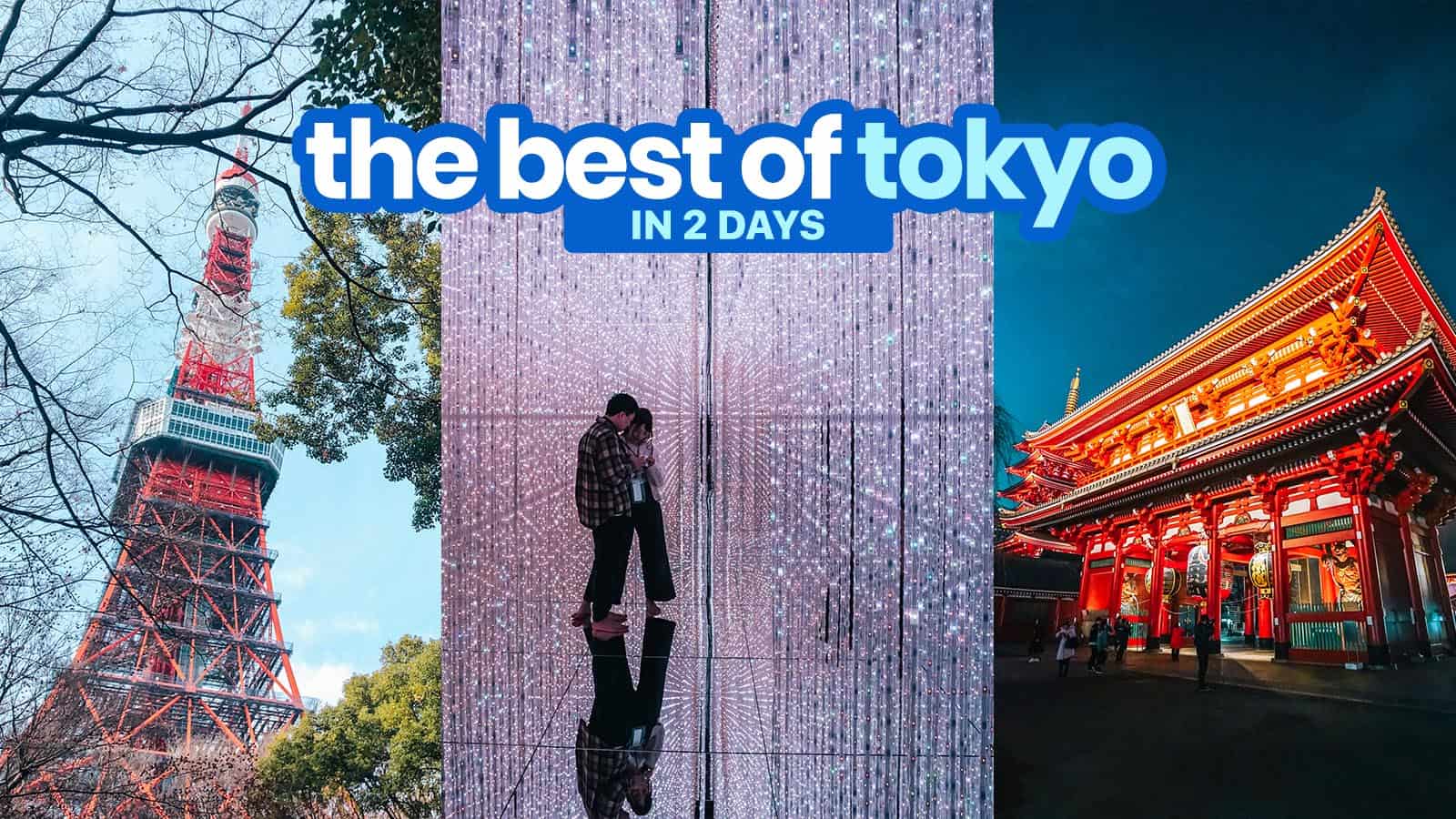
THE BEST OF TOKYO IN 2 DAYS: Sample Itinerary and Budget

To say that Tokyo is vast would be a major understatement. The Japanese capital is one of the largest in the world both by land area and population, something that becomes evident pretty overwhelmingly when you see it from above. From the observation deck of the Tokyo SkyTree, the city appears to be sprawling, stretching its concrete arms to the horizon in all directions. We’ve visited multiple times before, and yet there are still so many parts of the city that we have yet to explore.
Thankfully, Tokyo is also home to one of the world’s most expansive and most impressive subway networks, operating in true Japanese fashion: efficient, organized, and on time. No matter how huge or how intricate Tokyo is, getting around doesn’t need to be stressful. As long as there’s a train station close to your destination — and there usually is — it’s never really that far.
WHAT'S COVERED IN THIS GUIDE?
Understanding Tokyo’s Subway System
Tokyo’s extensive train system is controlled by over a dozen operators, but in this itinerary, we will only be using the subway lines and the tram line which is very rare in the city. The subway lines are operated by Toei Transportation and Tokyo Metro. Although separate entities, these two work in great synergy. Each of them operate multiple lines that are so connected to each other, it’s amazing how the Japanese make it work and they do it like clockwork. Often, you don’t need to exit the gates and buy new tickets even if you switch from Toei Subway line to Tokyo Metro line. (There are cases when you do, though.) Subway lines are marked with an assigned letter in a color-coded circle. For example, the Toei Oedo Line’s mark is an E in a magenta circle, while the Toei Asakusa Line’s mark is a the letter A in a rose pink circle. Remember these marks and the companies’ logos because this is how you’ll find them.
We’ve just arrived from another Tokyo trip, but this time, we challenged ourselves if we would be able to see in two days the city’s key attractions including the usual crowd favorites and those off the beaten path using only the subway and the tram. After the trip, we were able to come up with this 2-day itinerary, which is perfect for first-timers who wish to see the best that the city has to offer but in a limited time. If you’re staying for more days, you can also use this as part of a bigger itinerary.
By the way, if you prefer a visual guide, we also have a video version of this post! Check it out below:
For the first day’s itinerary, you will be using the Toei Oedo Line a lot. This subway line is particularly useful for visitors because it connects many of the most popular tourist spots in Tokyo including the Tokyo Tower, Shinjuku, Yoyogi, and Roppongi. But of course, we’ll also use other subway lines.
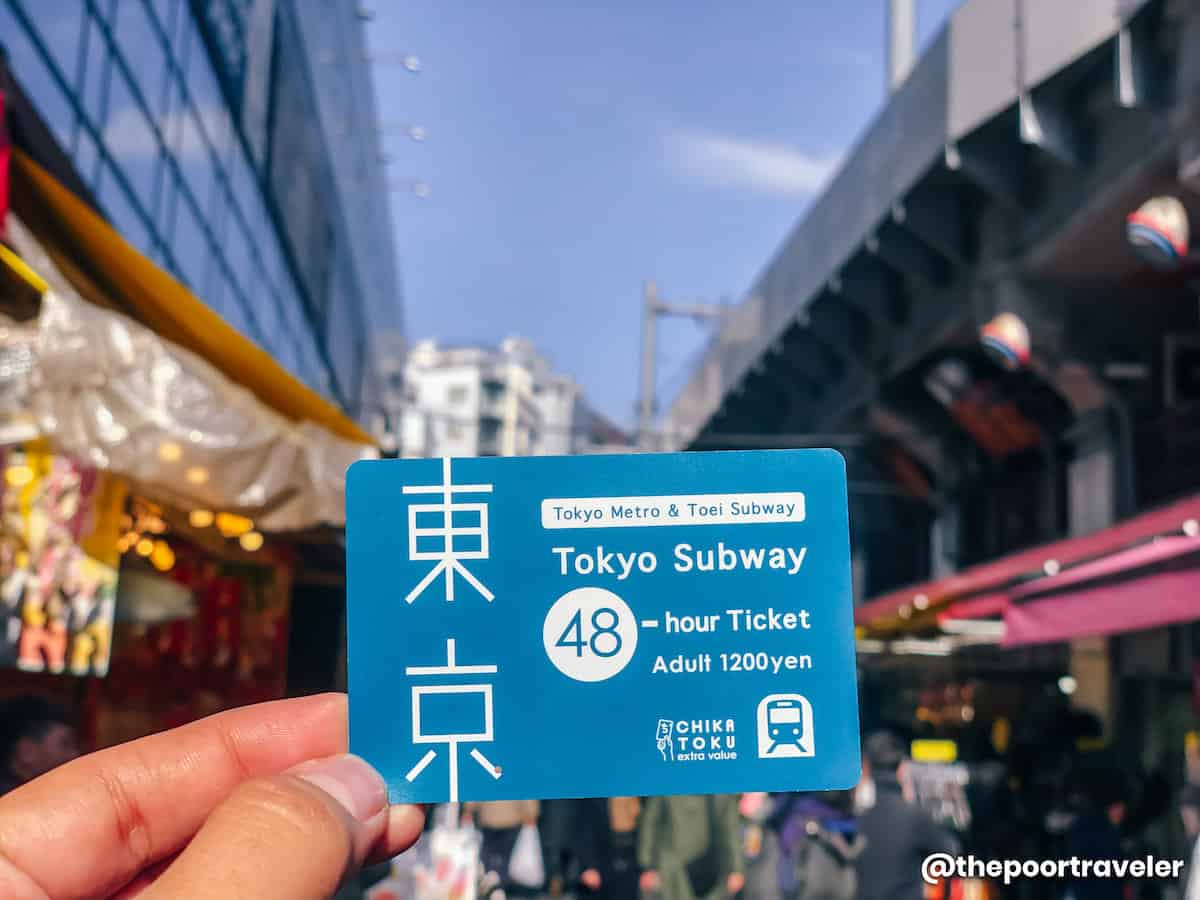
For the next two days, it’s a wonderful idea to have a Tokyo Subway Ticket. This pass grants you unlimited access to both Toei Subway lines and Tokyo Metro lines. It’s available in 24-hour, 48-hour, and 72-hour variants. Here are the prices:
- 24 hours: Adult: ¥800, Child: ¥400
- 48 hours: Adult: ¥1,200, Child: ¥600
- 72 hours: Adult: ¥1,500, Child: ¥750
It’s available at Haneda Airport, Narita Airport, and select hotels, Bic Camera branches, and Tourist Information Centers (more about that later) all around Tokyo. You can also purchase online via Klook. You will need to present your passport because it’s available only for tourists.
The great thing about the Tokyo Subway Ticket is: You don’t need to fall in line to buy a ticket each time you’re taking the subway. So not only do you save money, you also save a lot of time! Very convenient. Because this is a 2-day itinerary, we’ll be using the 48-hour ticket.
Stop 1: Ueno-okachimachi Tourist Information Center
Nearest Subway Station: Ueno-okachimachi (Toei Oedo Line)
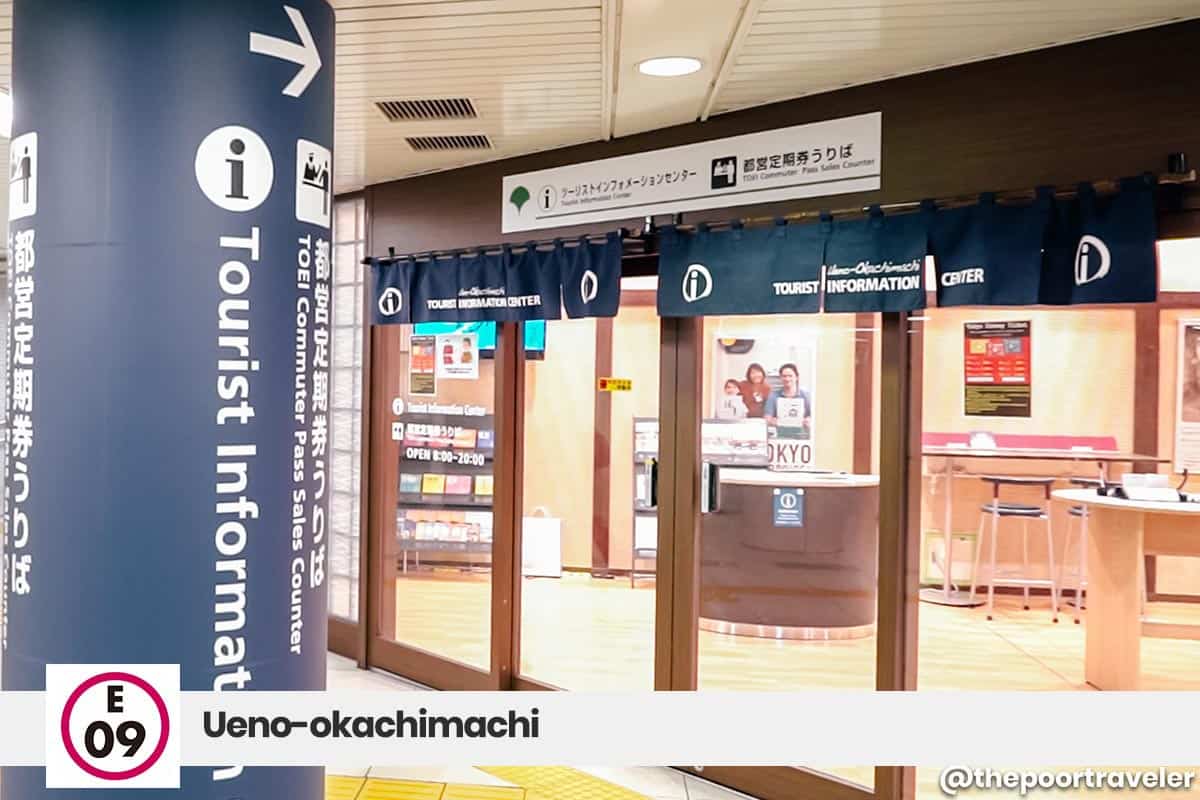
Before you get the party started, it’s always a good idea to start your day with a stop at the Information Center. With the number of visitors increasing as the 2020 Tokyo Olympics and Paralympics approaches, Toei Transportation created tourist information centers to provide travel information to visitors. One of them is the Ueno-okachimachi Tourist Information Center.
Grab some brochures and if you have questions, just ask away, because the staff here speak English, and even Chinese. They can help you with directions or recommendations on where to go.
If you weren’t able to purchase a Tokyo Subway Ticket at the airport or before the trip, you can also get one here.
Stop 2: Ameyoko
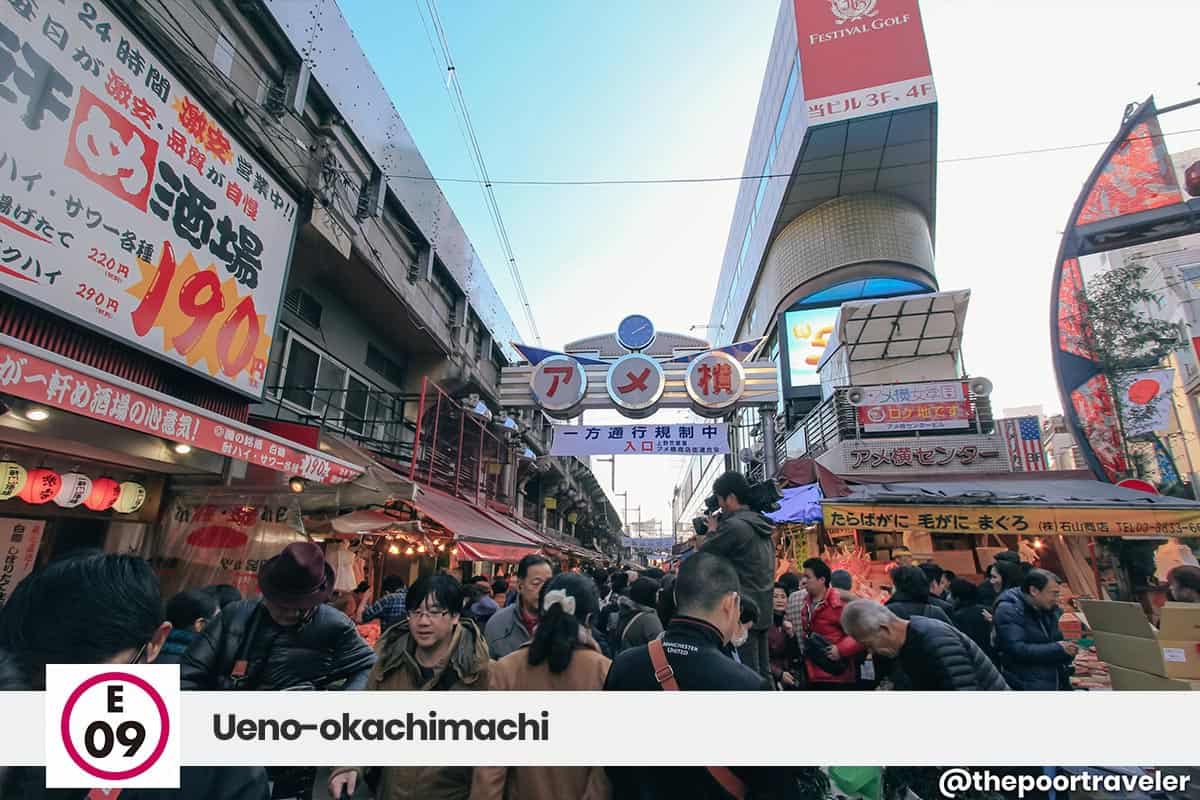
Instead of boarding the train right away, make your way on foot to Ameyoko, which is located just around the corner.
Ameyoko is a market street where you can shop for almost anything you can think of. A wide variety of products are sold here: bags, clothes, shoes, accessories, spices, fish. Don’t be surprised if you see barkers announcing discounts while standing on a chair amidst a sea of humanity. The street is also flanked with some eateries where you can have a quick meal.
When you’re done, walk back to the Ueno-okachimachi Station, take the Toei Oedo Line to Kasuga, and transfer to Toei Mita Line to Onarimon Station.
Stop 3: Tokyo Tower
Nearest Subway Stations: Onarimon Station (Toei Mita Line), Akabanebashi (Toei Oedo Line) Tokyo Tower Operating Hours: Daily, 9am-11pm
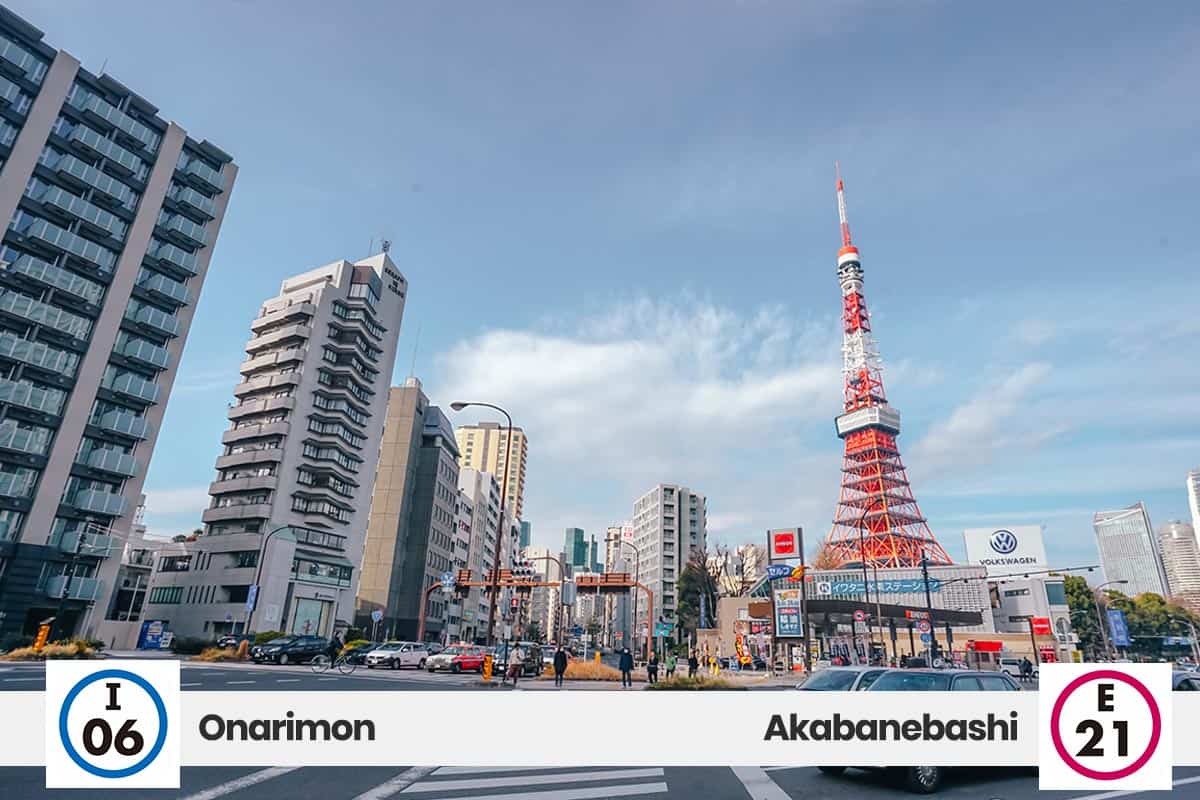
Emerging from the Onarimon Station, you’ll be greeted by the Zojoji Temple, the center of Chinzei Buddhism in the Kanto Region. This makes the stroll to the Tokyo Tower from the station a quiet and pleasant one. If you have more time, you can make a quick stop here too. But even from here, the commanding presence of the Tokyo Tower cannot be ignored, as it stands over the site.
At almost 333 meters, the Tokyo Tower is the second tallest structure in Japan, next only to Tokyo Sky Tree. It is a communications tower that was built in 1958 and was inspired by the Eiffel Tower in Paris. Today, tourists are welcome to climb to the top observatory to enjoy magnificent views of the city. Admission Fees to the observation decks are ¥900 yen (main deck) and ¥2800 (both decks). However, because we will be visiting two more observation decks this trip, you may skip climbing and just admire the tower from below, which is FREE.
Although you came from Onarimon Station, we’re using the Akabanebashi Station to get to our next destination. At Akabanebashi Station, take the Toei Oedo Line to Shiodome Station.
Stop 4: Hamarikyu Gardens
Nearest Subway Station: Shiodome (Toei Oedo Line) Entrance Fee: ¥300 Hours open: 9:00am to 5:00pm, Daily (except December 29-January 1)
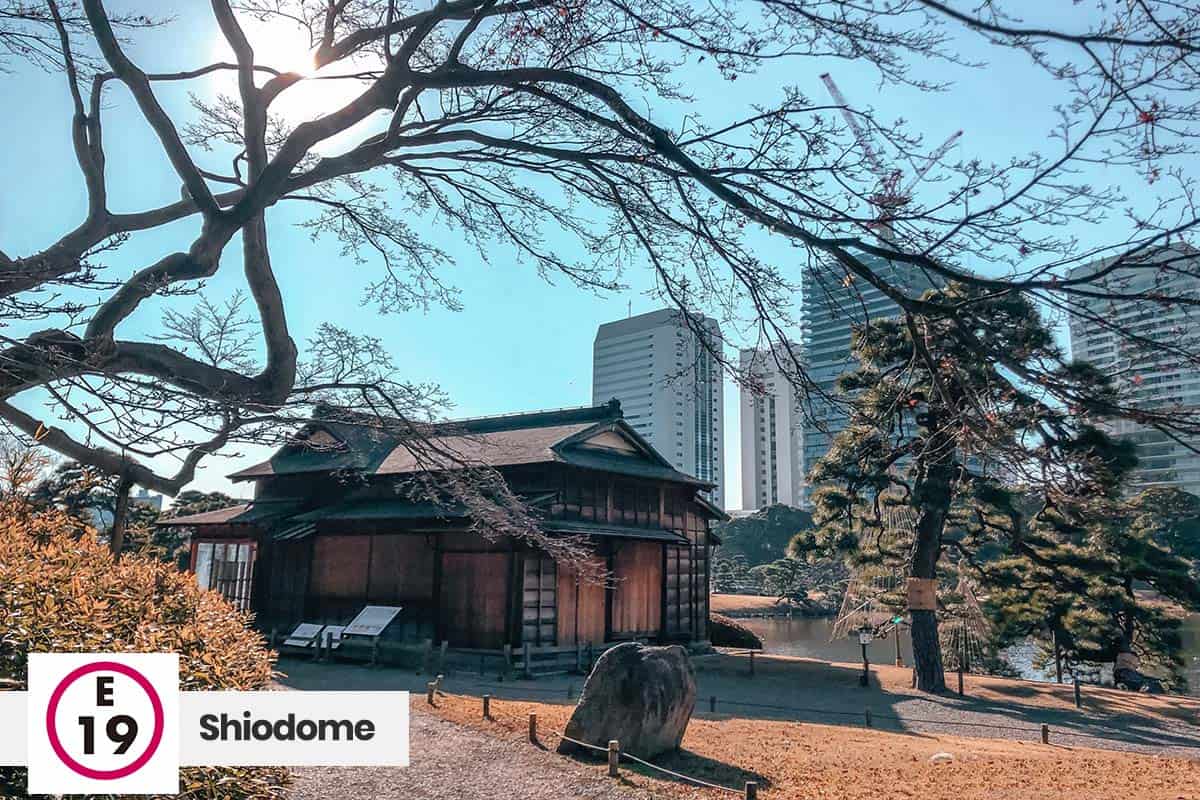
Tokyo’s map is shaded by several parks and gardens, but the most famous ones can get too crowded especially in peak season. This is why Hamarikyu Gardens was so appealing to us: it remains the pocket of peace that it has always been, even in the middle of the bustling metropolis.
Facing Tokyo Bay, Hamarikyu Gardens used to be where the villa of the Tokugawa clan stood back in the day. Today, it is a landscaped public garden adorned by trees surrounding a few ponds. At the center of the largest pond stands a teahouse, where you can enjoy Japanese tea and sweets. You can also admire plum blossoms if you visit in late February and cherry blossoms in late March or early April.
After a moment of peace here at the gardens, it’s time for lunch! Our next stop is just a short walk away!
Stop 5: Tsukiji Market
Nearest Subway Station: Tsukijishijo (Toei Oedo Line)
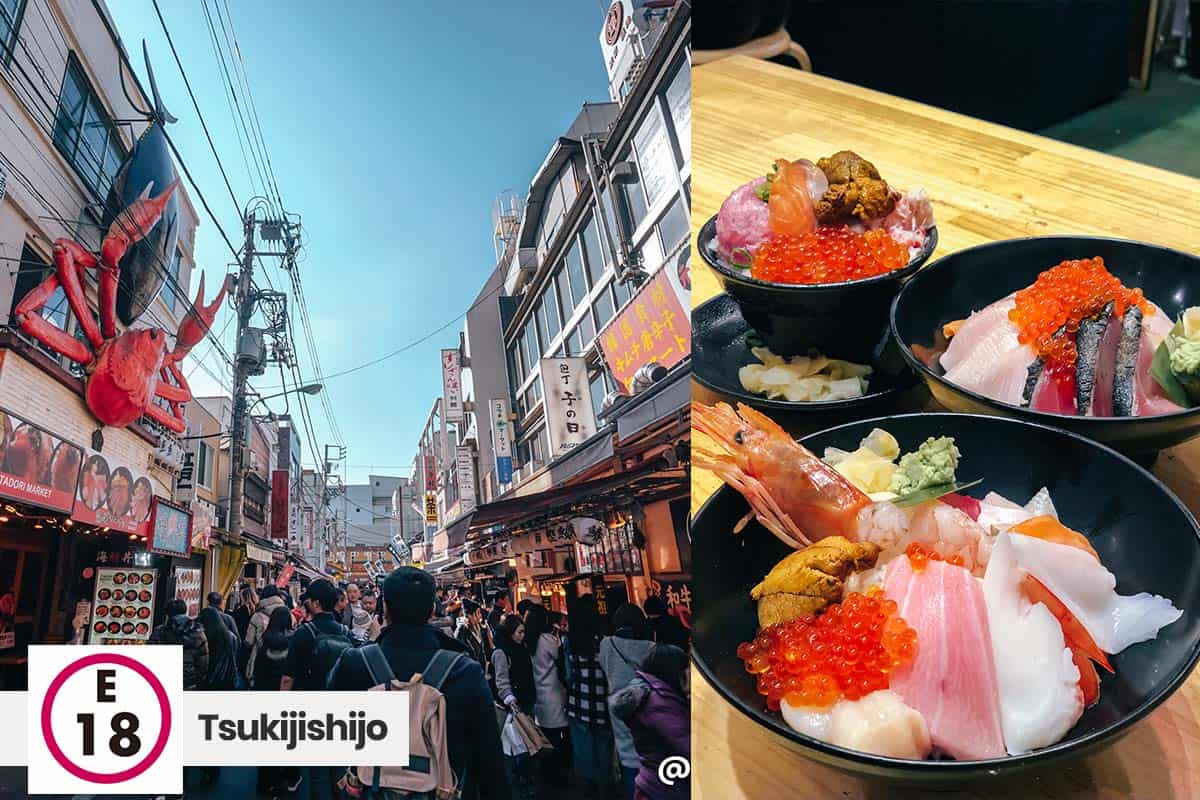
Until 2018, the inner section of the Tsukiji Market was where Tokyo’s famous fish auction happens. It was the largest seafood market in the city. The main inner operation has since been moved to Toyosu, but the outer market remains alive and kicking. Several seafood restaurants and sushi bars continue to draw tourists from all over the world.
This is also your lunch stop for today. You can pick any place that you like. On our last trip, we decided to try Tsukiji Itadori Market, a seafood restaurant that is well-known for their kaisendon, a bowl of rice topped with assorted sashimi. There are over 15 bowls to choose from, including seared options if you’re not a fan of raw fish. The three best-sellers are the kaisen-don (Bowl 1, ¥1480), jo kaisen-don (bowl 2), and gouka itadori don.
I decided to order Jo kaisen-don, which is a more premium version of their signature kaisen-don. The bowl included slices of medium fatty tuna, salmon, and octopus among others. But the main reason I chose this was the uni (sea urchin). Among other toppings were salmon roe, scallop, and a beautiful shrimp at the very center.
Vins was more adventurous and let the chef decide the pieces on his bowl when he ordered Omakase sanchoku-don (Bowl 5). Omakase means “to leave it up to you,” and sanchoku means “straight from the source.” He was pretty delighted with the outcome.
After a satisfying meal, we explored the rest of the outer market to check out what else we could enjoy as we made our way to Tsukijishijo Station. From there, we took the Toei Oedo Line to Tsukishima and switched to Tokyo Metro Yurakucho Line to Toyosu.
Stop 6: teamLab Planets
Nearest Subway Station: Toyosu (Tokyo Metro Yurakucho Line) Admission fee: ¥2700 weekdays, ¥3200 weekends and holidays
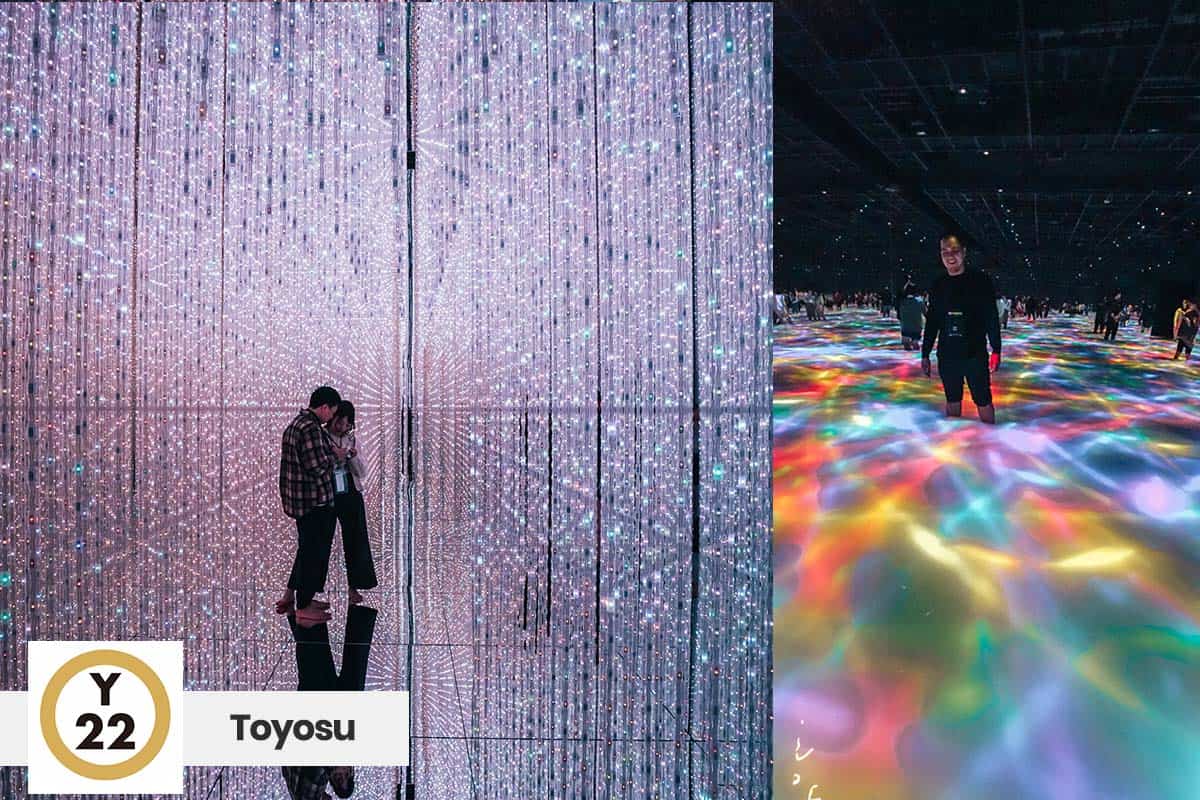
We’ve always wanted to experience teamLab since we first chanced upon a viral video on Facebook. Like the other incarnations, teamLab Planets is a digital art museum that tickles your senses. It’s body immersive so you can actually interact with the installations. Not to be confused with teamLab Borderless (which has more zones), teamLab Planets has only seven sections spanning over 10,000 square meters, which means more space to move around. We were quite surprised, too. We expected to see a room full of visitors, but it wasn’t as crowded as I imagined.
One thing you need to know about teamLab Planets is that you will have to take off your shoes before entering because you will be wading in warm water at the very beginning and it gets knee-deep in some areas. Wear something knee-length or at least something you can roll up to the knees. The walls and even floors are made of mirrors, so make sure you don’t wear short skirts.
But all these little preparations are worth it. The exhibits are so amazing, I had to hold my jaws to keep them from falling.
After being treated to the sensory treat that was teamLab Planets, trace your steps back to Tsukishima Station and switch to Toei Oedo Line to Tochomae Station.
Stop 7: Tokyo Metropolitan Government Building
Nearest Subway Station: Tocho-mae (Toei Oedo Line) Hours open: North Observatory, 9:30am-11pm; South Observatory, temporarily closed for renovations until spring 2019, otherwise it’s open from 9:30am-5:30pm. Closed: 2nd and 4th Monday of the month, and December 29-January 3 Admission Fee: FREE
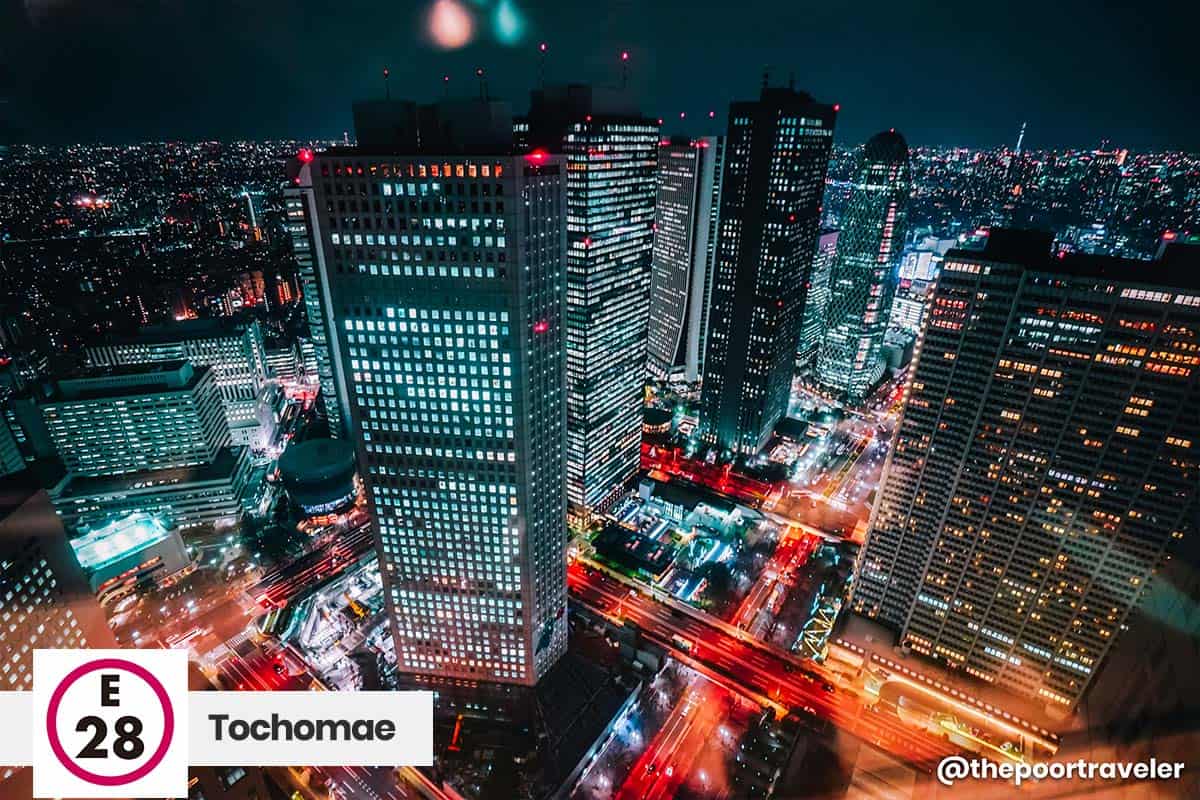
No, we’re not here to do an errand. The Tokyo Metropolitan Government Building has FREE observation decks that allow some of the best vistas of the city. Because it’s free and there are only two elevators, expect to fall in line a bit, but the wait is worth it. From here you can see the Tokyo Tower and the Tokyo SkyTree! You can even see Mt. Fuji on a clear day.
If you can make it before sunset, that would be super because you’ll get to enjoy the view in daytime, at twilight, and at night!
Stop 8: Ninja Shinjuku
Nearest Subway Stations: Tocho-mae, Shinjuku-nishiguchi (Toei Oedo Line), Shinjuku (Toei Shinjuku Line)
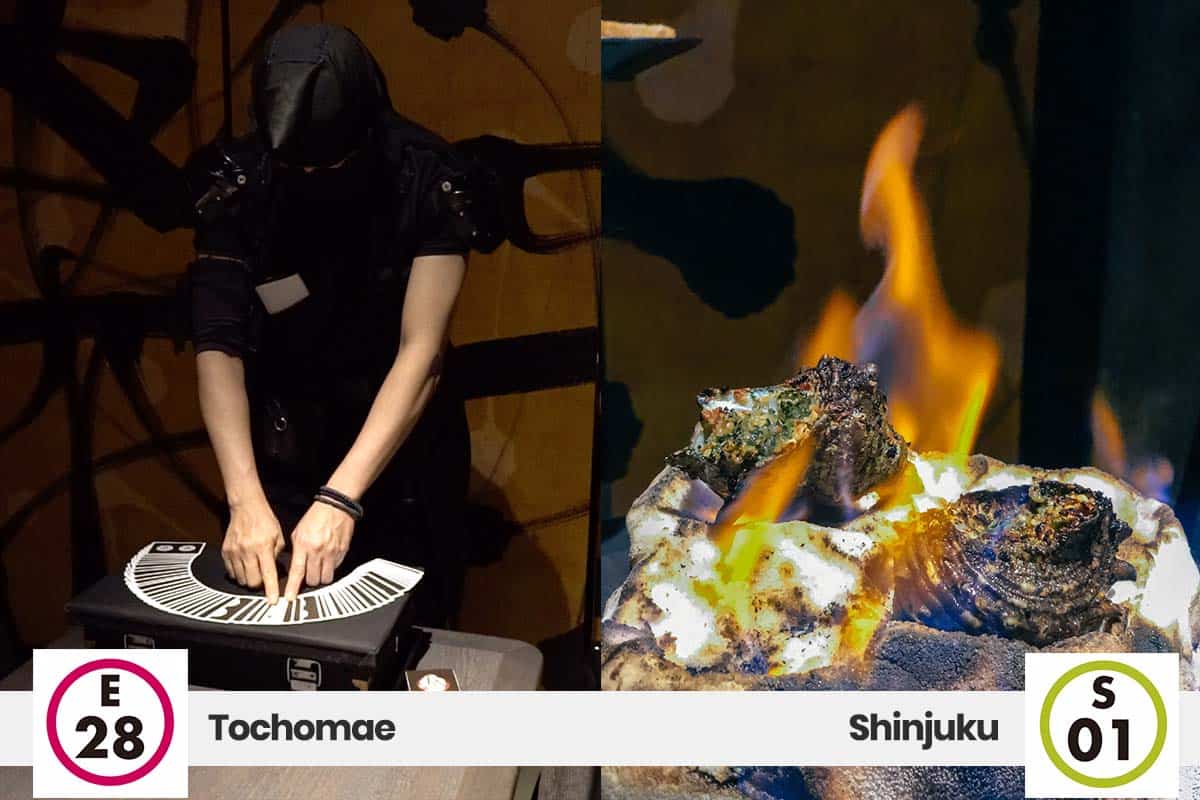
Dinner time! Tokyo has some of the most eccentric and sometimes downright strange dining places like maid cafés and robot restaurants. This time, though, we were able to try a restaurant run by ninjas!
Ninja Shinjuku is one of the many ninja-themed restaurants across the city. As expected, there were a lot of tricks as the food was served. The meal also ended with a wildly entertaining and impressive “magic” show that showed off the ninja master’s sleight-of-hand skills. But the most surprising part of the evening was the food: it was surprisingly good. You see, most entertainment restaurants deliver the goods as far as entertainment is concerned, but falls short when it comes to the food. But each serving throughout our 6-course meal was delicious, from the amuse-bouche down to the dessert. All the smoke and mirrors were just a bonus for me.
A typical meal costs ¥4000. If that’s over your budget, you can choose another restaurant in Shinjuku area. You’ll never run out of options here!
With that, DAY 1 comes to a close. From here, you can travel back to your hotel. If you’re staying near Ueno-okachimachi, you can simply take the Toei Oedo Line again. If your hotel is closer to a Toei Shinjuku Line Station, you may also walk to Shinjuku Station instead.
For the second day, we decided to combine off-the-beaten-track attractions with the usual favorites. In the morning, you will be exploring the quiet and historical district of Arakawa City and Kita City.
Arakawa City and Kita City are located in the northeastern part. These areas are not as famous as Shibuya or Shinjuku, but still welcoming to tourists and harbor some of city’s best kept secrets, connected by the Tokyo Sakura Tram (Toden Arakawa Line).
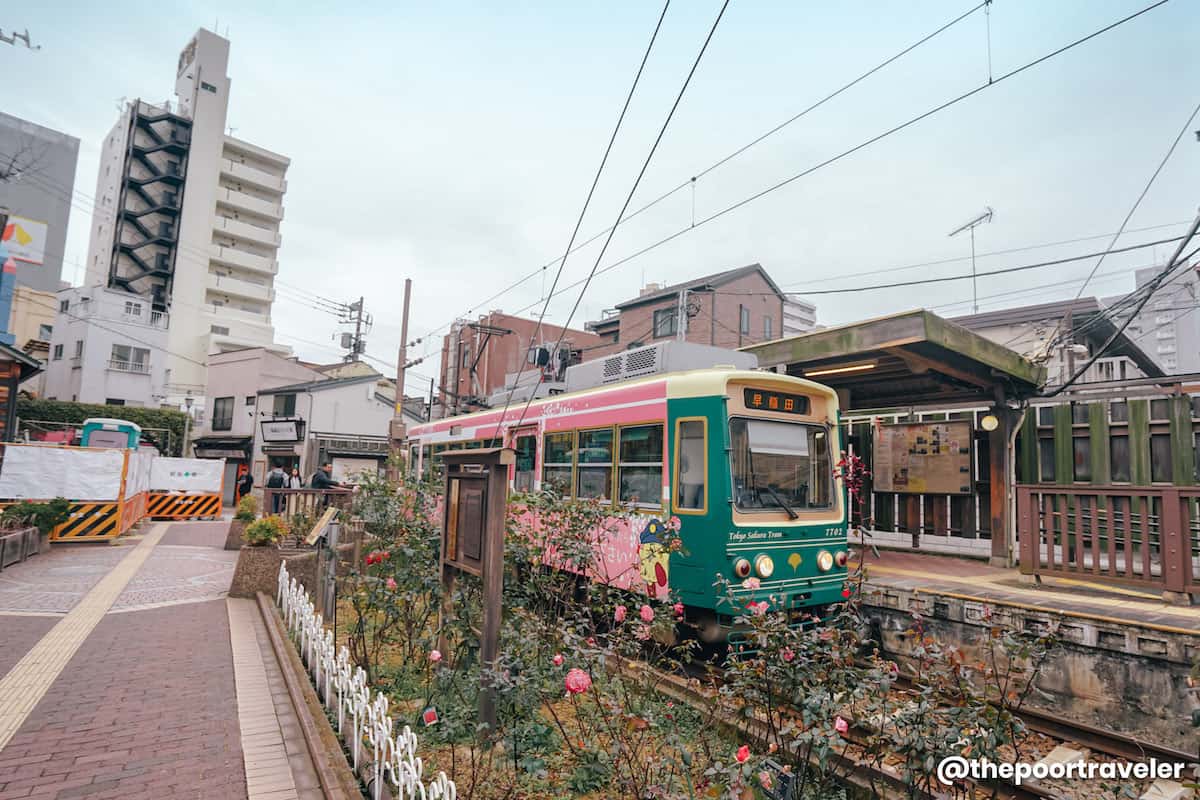
To save time and money, purchase a Toden One-day Pass, which will give you unlimited access to the Tokyo Sakura Tram the entire day. The staff will be scratching off a date on the back of the pass, which indicates its validity period.
In the afternoon, you’ll be diving back into the futuristic side by visiting a couple of modern attractions before ending the day at one of the most visited sites in the city. You will need to use the Tokyo Subway Ticket again.
Stop 1: Toei Transportation Information Center
Nearest subway station: Minowa (Tokyo Metro Hibiya Line) Nearest tram station: Minowabashi (Tokyo Sakura Tram)
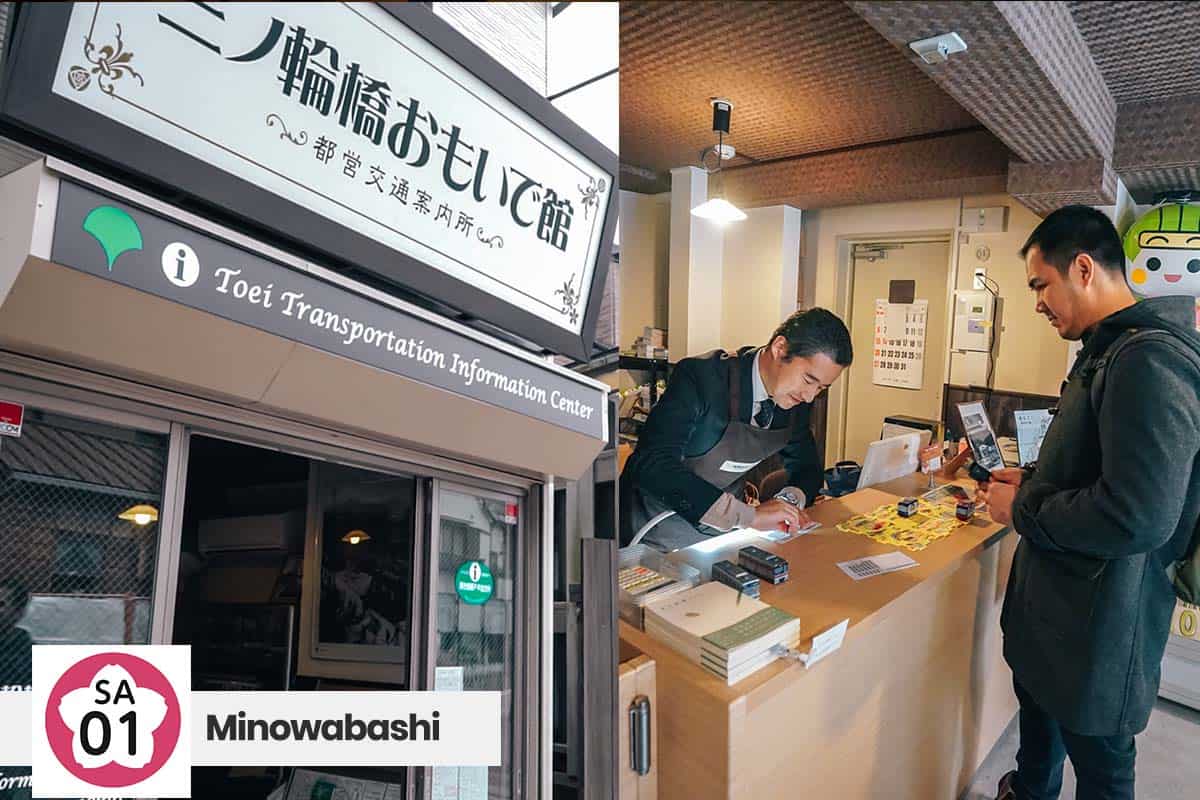
As mentioned earlier, it’s always great to start the day at an information center just in case you have questions or need assistance. If your hotel is located in Ueno or elsewhere along any subway line, make your way to Minowa Station. From here, the Tokyo Sakura Tram is just a short walk from there.
The Toei Transportation Information Center stands at the very beginning of the Tokyo Sakura Tram line. The center also serves as a mini-museum, where you can learn heaps about the past and present of Toei Transportation. You can also find some railway souvenirs here. Most importantly, you can purchase your Toden One-day Pass here, so you can use the tram much more conveniently.
Stop 2: Joyful Minowa Shopping Street
Nearest tram station: Minowabashi
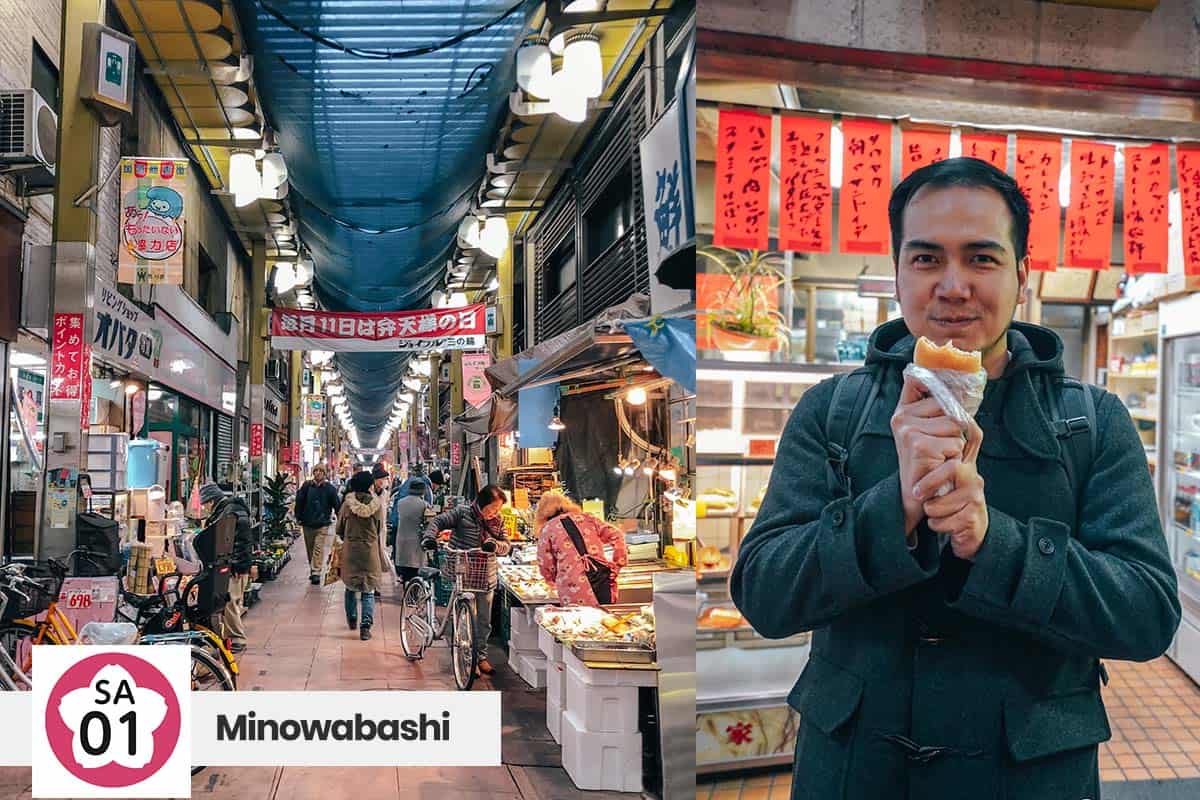
Before you get too excited hopping onto the Tokyo Sakura Tram, drop by Joyful Minowa Shopping Street, which is just a block away. Unlike most shopping arcades in Tokyo, Joyful Minowa is far from crowded. Most of the people you’ll see here are locals going about their day-to-day lives.
If you haven’t had breakfast yet or craving some snacks, find a little bakery called Omura, the locals’ go-to place for pastries. Try their “kuroke” sandwich which is a sort of potato pancake in a bun, which costs only ¥150.
Once done, trace your steps back to Minowabashi Station and wait for the next tram (streetcar). Trams work a bit differently from subways or trains. It’s much shorter and slower, and normally you pay right before you board. But with a Toden One-day Pass, you can just show your pass, the scratched off side, to the driver.
Stop 3: Ramen 1/20 (Ramen Nijubunnoichi)
Nearest tram station: Higashi-ogu-sanchome
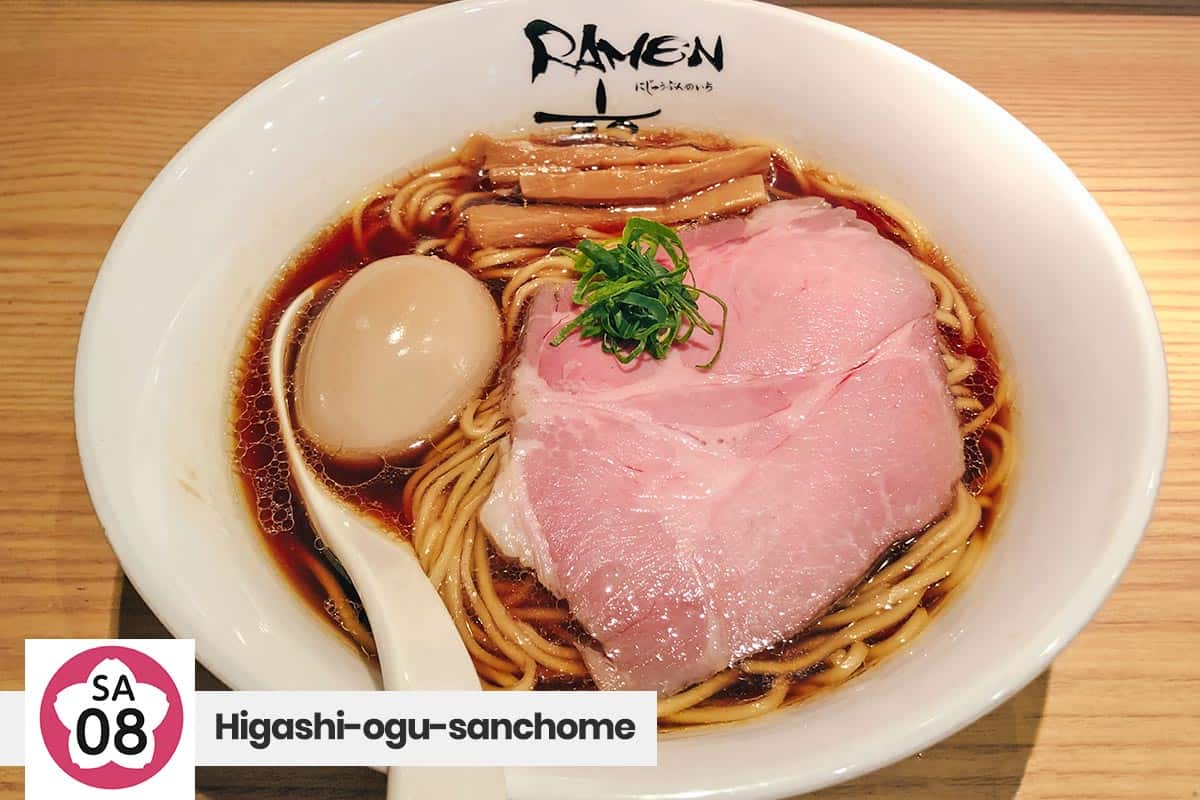
A trip to Japan isn’t complete without a ramen experience! If you’re the type whose Japan dreams involve this immaculate noodle soup, you’re in for a treat. Ramen 1/20 is one of Tokyo’s best and has been featured on the Michelin Guide a couple of times. Vins ordered a bowl of their specialty, shio (salt) ramen, with mellow and subtle chicken-stock broth that is almost guilt-free. I had the shoyu variety, which although has bolder flavor still felt smooth and light. Each serving was plated cleanly but meticulously — a whole ajitama resting on the spoon and a slice of pink chashu. It’s definitely one of the best bowls I’ve had in Tokyo.
Stop 4: Asukayama Park
Nearest tram station: Oji-ekimae
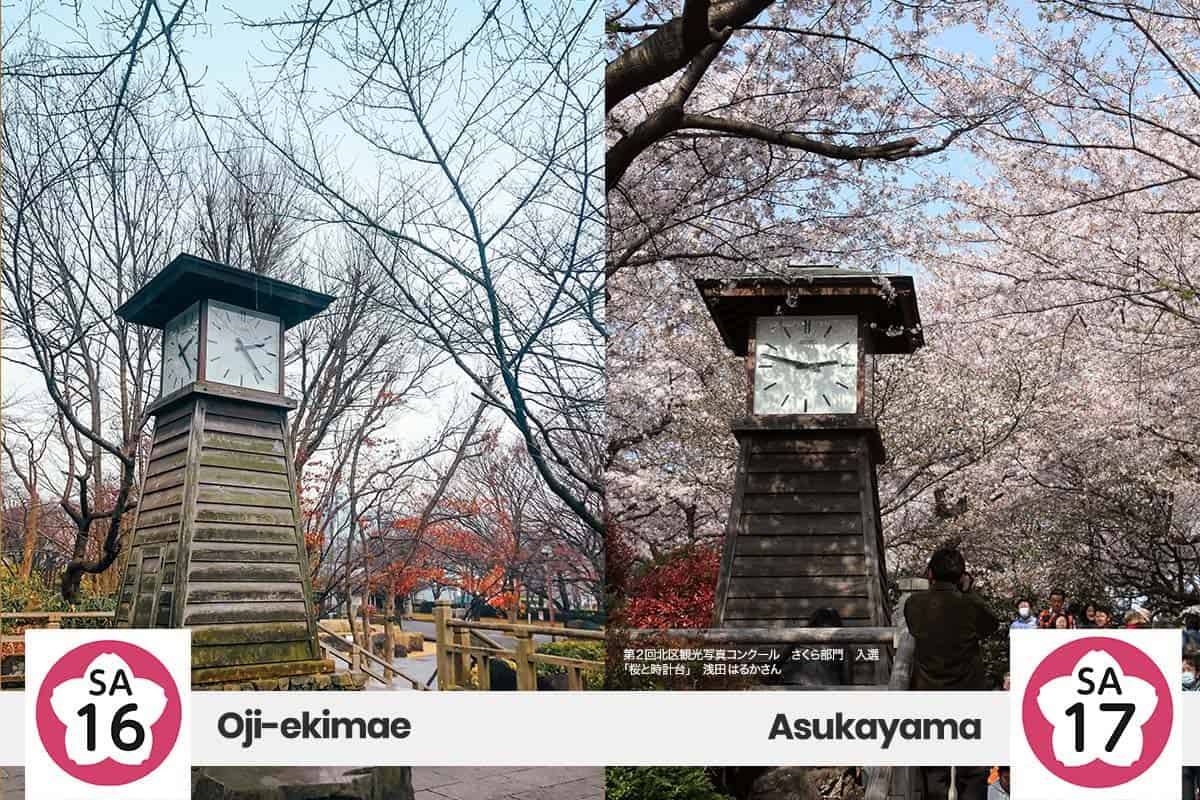
Coming from Oji-ekimae Station, make your way on foot to the monorail entrance station and take the monorail to the park.
In 1873, the Daijō-kan established a number of parks in Tokyo. Among them are Ueno Park, Asakusa Park, and Asukayama Park. While others have become crowd-favorites, Asukayama Park remain an oasis of calm in the middle of the city. During our visit, there was no one else in the park. We had it all to ourselves. You’ll also find a couple of well-preserved trains inside the park, just next to a children’s playground. It also has three museums: the Paper Museum, Asukayama Museum, and Shibusawa Memorial Museum.
We visited in the middle of winter, so there wasn’t much color. But in spring, the park transforms into an unforgettable sakura destination. The park is covered with cherry trees, planted in the 18th century. If you’re visiting in late March or early April, instead of going to the crowded Ueno Park, come to Asukayama Park instead and enjoy the cherry blossoms better.
If you take the south exit, you’ll easily find the Asukayama Station. Head to it and wait for the tram that will take you back to Oji-ekimae Station.
Stop 5: Oji Inari Shrine
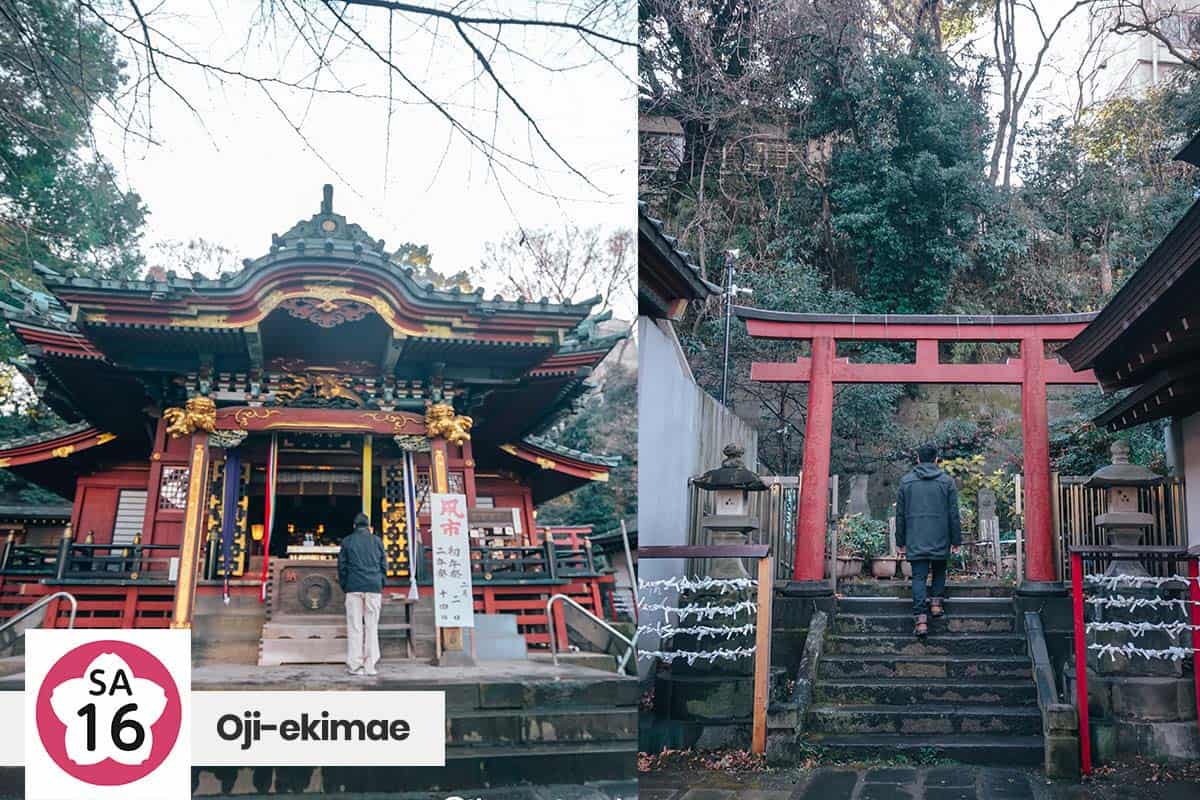
Just a 10-minute walk away from Oji-ekimae Station stands Oji Inari Shrine (not to be confused with Oji Shrine, which is also nearby).
Oji Inari Shrine is a Shinto shrine built in 1822 and is where the famous Fox Parade takes place on New Year’s Eve. Next to the main temple is a short series of torii gates that will take you to a rock that is believed to be miraculous in a way. Legend has it that if you’re able to lift the rock from its place as you think of what you want to attain, that wish will come true. Otherwise, according to legend, that dream isn’t for you. Vins and I were able to carry the rock, though, so yay!
After you have your moment of peace and contemplation, make your way on foot to Oji Subway Station and take the Tokyo Metro Namboku Line to Ichigaya and then transfer to Toei Shinjuku Line to Iwamotocho.
Stop 6: Akihabara
Nearest subway stations: Iwamotocho (Toei Shinjuku Line), Akihabara (Tokyo Metro Hibiya Line)
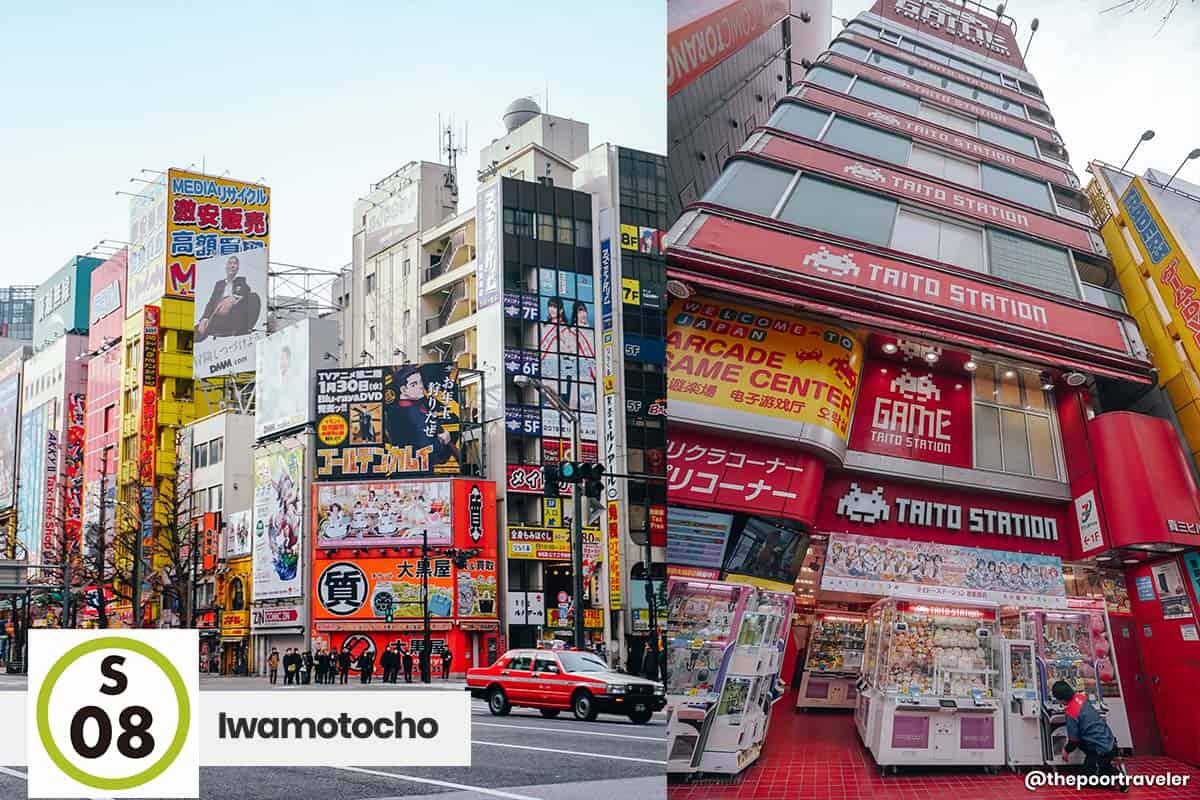
Akihabara is the otaku’s ultimate mecca and Tokyo’s quirkiest destination. Here you’ll find several electronic stores, manga shops and cafes, maid cafes, Gundam Cafe, Tokyo Anime Center, and several arcade centers like Taito Station.
We decided to spend some time trying to win a plushie at Taito Station. Although luck was not with us, we still had a great deal of fun. Afterwards, we walked to Yodobashi-Akiba, a massive store brimming with electronics and household appliances. If you’re planning on shopping, don’t forget to bring your passport because you will need it to score the Tax-Free discount if your purchase is above ¥5000.
Instead of going back to Iwamotocho, walk to Akihabara Subway Station instead, which is nearer, and take the Tokyo Metro Hibiya Line to Ningyocho, then switch to Toei Asakusa Line to our next destination. Clue: It’s gonna keep you looking up.
Stop 7: Tokyo SkyTree
Nearest subway station: Oshiage (Toei Asakusa Line) Admission Fee: First observatory, ¥2060; Second observatory: additional ¥1030.
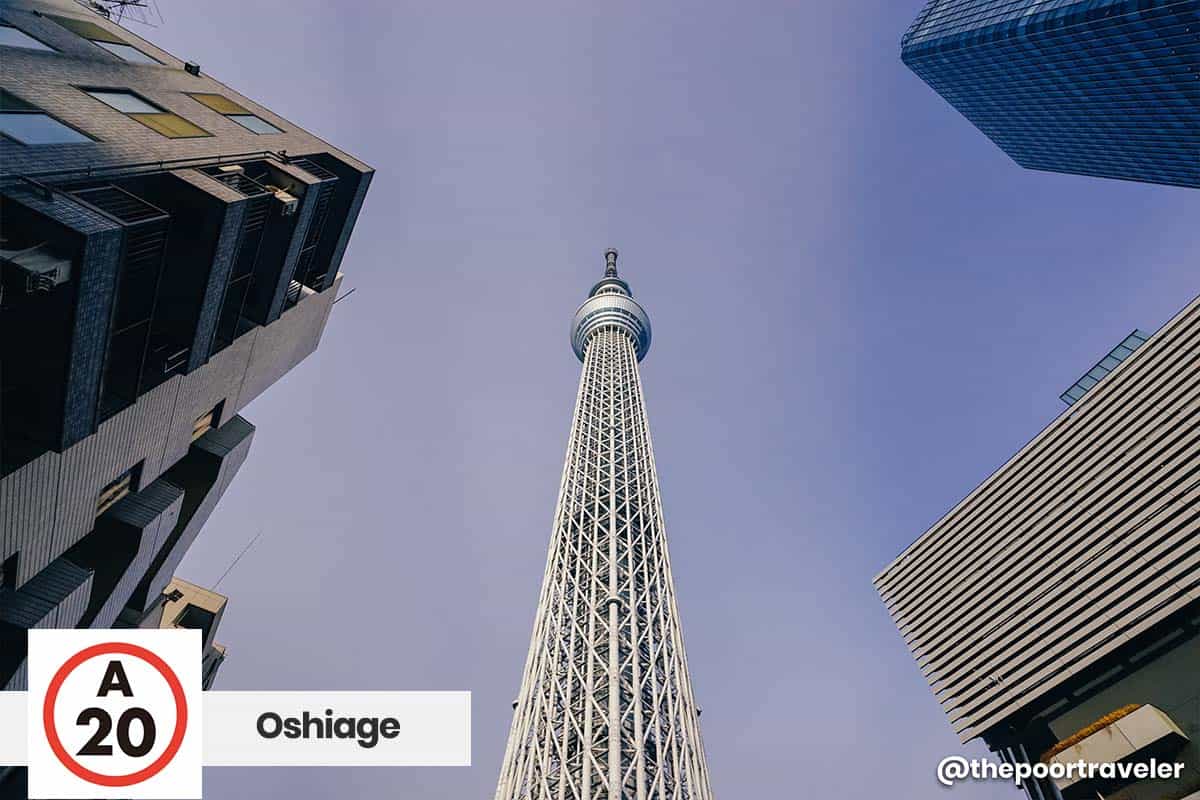
The entrance to the tower is on the fourth level of SkyTree Town. If it’s packed and you didn’t make advance reservations, approach the staff by the entrance and they will usually assign a time slot. At 634 meters, this is Japan’s tallest structure. Suffice it to say that the panoramic view of the megalopolis from the top is nothing short of breathtaking. Again, if you can, visit just before dusk so you get to enjoy the view in daylight, at sunset, and at nightfall. Don’t forget to take photos as you move around the observatory. If you want something to remember this moment by, you can make a quick stop at the souvenir shop on the way out.
From here, walk back to Oshiage Station and take the Toei Asakusa Line to Asakusa Station.
Stop 8: Asakusa
Nearest subway station: Asakusa (Toei Asakusa Line)
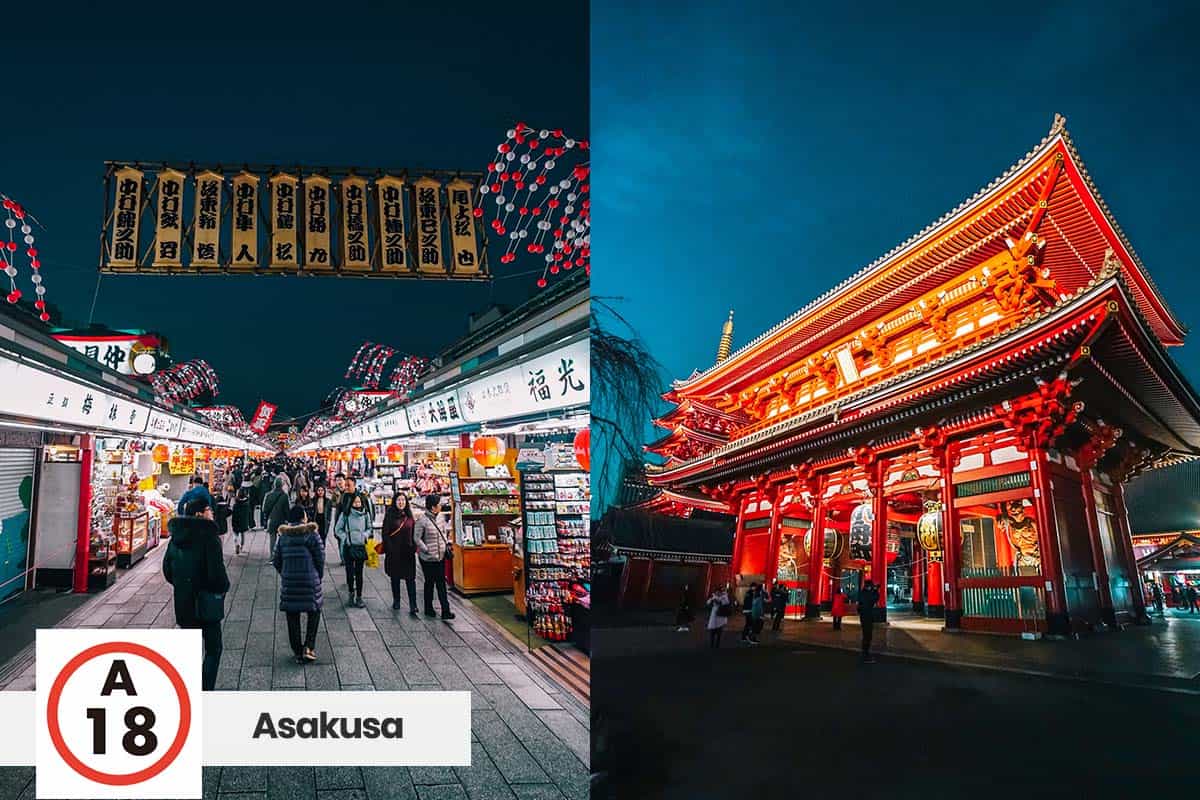
The Toei Asakusa Line is remarkable because it connects both Haneda Airport and Narita Airport to some of the city’s most popular attractions like Tokyo SkyTree and, of course, the Asakusa district.
Asakusa is one of the most well-known neighborhoods in Tokyo primarily because of the iconic Sensoji temple. If you’re walking from Asakusa Station, the first structure that will greet you is the Kaminarimon (Kaminari Gate), constructed over 1000 years ago. From here, you’ll be walking down Nakamise-dori, a 250m long alley flanked with shops selling souvenirs and Japanese snacks. At the end you’ll find Sensoji, Tokyo’s oldest temple, built in 645 as a tribute to Kannon, the goddess of mercy.
Because this is our second to the last stop, you can spend as much time as you want praying, admiring the architecture, trying out snacks, or shopping for souvenirs. You can also see the Tokyo Sky Tree from here!
Stop 9: Tempura Daikokuya
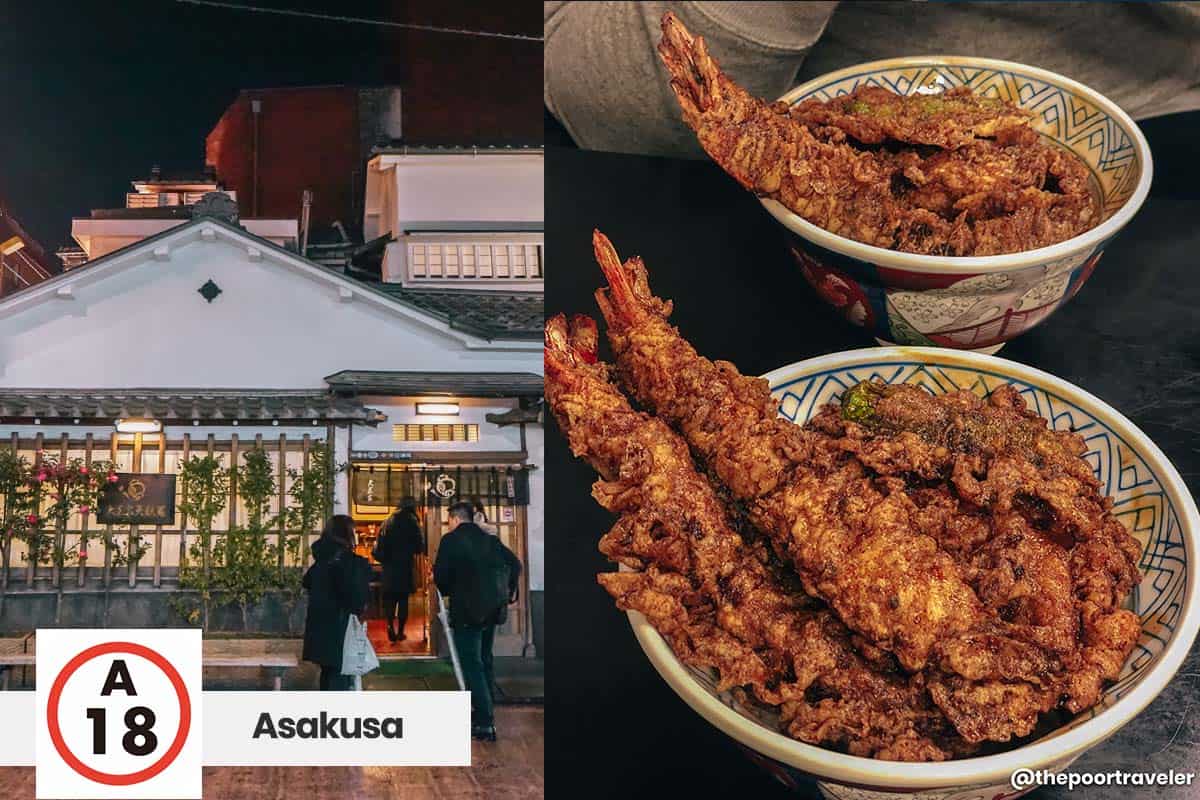
Of course, we’re not going to call it a day without dinner. This time around, we’re having tempura! I know you’re familiar with it because it’s also pretty popular outside Japan. But we’re not having tempura just anywhere. Since we’re already at an ancient site, we might as well have dinner somewhere that has a bit of history – Daikokuya. Daikokuya is a highly-regarded restaurant has been serving tempura since 1887. Yep, it’s over 130 years old! Their signature dish is tendon, basically a bowl of rice crowned with battered prawns that are deep-fried. It’s often served with other types of seafood and vegetable tempura. One thing I instantly noticed was how different it looked. The tempura that I’m used to has batter that is light in weight and color. Daikokuya’s is a bit darker, close to golden brown, but absolutely more packed with flavor. It’s also a lot crispier, complementing the soft, soft rice that it hides underneath. Price starts at ¥1550. After the meal, you can make your way back to your hotel. If you’re staying near Ueno-okachimachi, you can take the Toei Asakusa Line to Kuramae, then transfer to Toei Oedo Line to Ueno-okachimachi Station.
Tokyo Trip Summary
This map shows all the attractions covered by this itinerary. Click the image to enlarge:
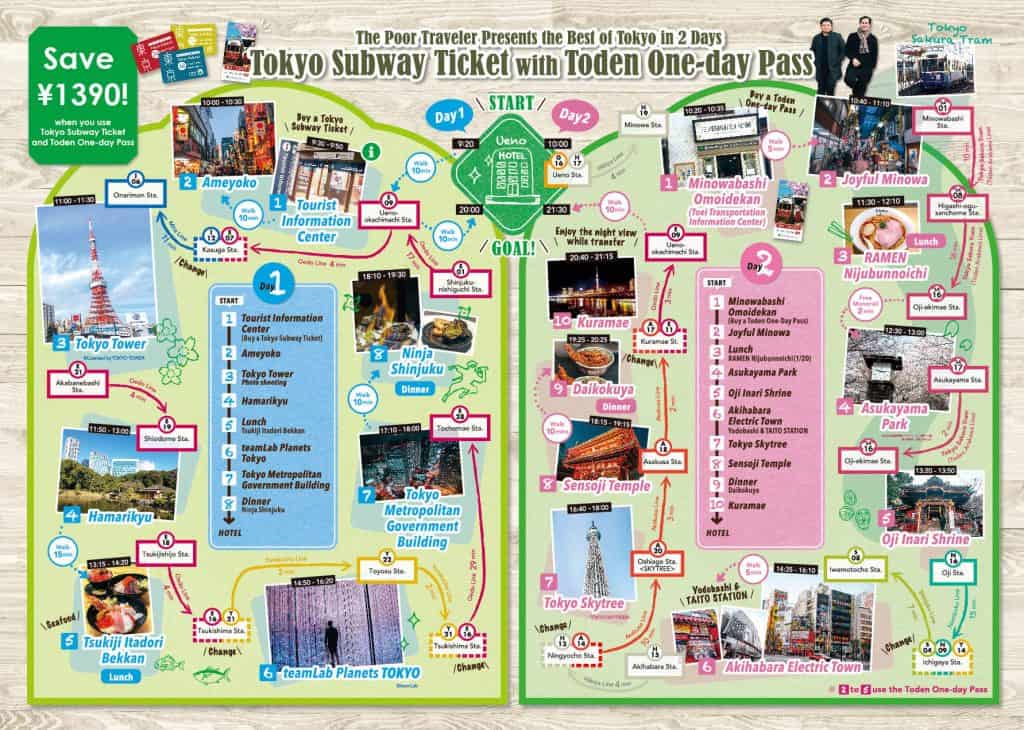
If you follow the above itinerary, you will be spending only ¥1600 on transportation (¥1200 for the 48-hour Tokyo Subway Ticket and ¥400 for the Toden One-day Pass). Without these passes, you would have spent ¥2900. That’s a total of ¥1390 savings!
Not to mention all the time that you saved by not falling in line or trying to purchase a ticket each time you’re gonna use the train or tram.
Here’s the breakdown of expenses:
- Tokyo Subway Ticket (48 Hours): ¥1200
- Ameyoko: FREE
- Tokyo Tower (ground only): FREE
- Hamarikyu Gardens: ¥300
- Tsukiji Itadori Market Kaisen-don: ¥1480
- teamLab Planets (weekday): ¥2700
- Tokyo Metropolitan Government Building: FREE
- Ninja Shinjuku: ¥4000
- Toden One-day Pass: ¥400
- Joyful Minowa Shopping Street: FREE
- Omura Kuroke sandwich: ¥150
- Ramen 1/20: ¥950
- Asukayama Park: FREE
- Oji Inari Shrine: FREE
- Tokyo SkyTree (1st observatory): ¥2060
- Sensoji: FREE
- Tempura Daikokuya: ¥1550
Including all the entrance fees and meal expenses, prepare to shell out around ¥15,000 (PHP 7180, USD 138, SGD 185) , excluding airfare, accommodations, visa fee, travel tax, and shopping budget. Note, however, that the biggest chunk of the budget went to Ninja Shinjuku on Night 1. If you’re not interested to spend that much on dinner, you can just eat elsewhere for less than ¥1000.
That brings down the total cost to only ¥12,000 (PHP 5800, USD 110, SGD 149) , excluding airfare, accommodations, visa fee, travel tax, and shopping budget. Now that’s pretty low considering that we have visited over 15 attractions including three top-notch restaurants!
Feel free to customize this itinerary according to your preferences. To ensure savings and maximize your Tokyo Subway Ticket, try to find the nearest subway station to the attraction you want to visit!
That’s all for now. Watch out for more posts from our Tokyo trip soon!
2️⃣0️⃣1️⃣9️⃣ • 1️⃣ • 3️⃣1️⃣
More Tips on YouTube ⬇️⬇️⬇️
Is this post helpful to you?

Related Posts:
- Sample JAPAN ITINERARIES with Estimated Budget: 4, 6, 7, 8, 15 Days
- Sample TOKYO ITINERARIES with Estimated Budget: 1-8 Days
- THE BEST OF TOKYO in 5 DAYS: Sample Itinerary for First Timers
- The Emperor’s New Year Greeting: Imperial Palace, Tokyo, Japan
- TOKYO IN WINTER: 7 Awesome Things to Do and Places to Visit
- WHERE TO SHOP IN TOKYO: 10 BEST AREAS!
- Tokyo: Top 10 Budget Hotels Under $70
- TOKYO DISNEYLAND & DISNEYSEA: Guide for First-Timers

- Recent Posts
- U.S. TOURIST VISA APPLICATION Requirements & Process for Filipinos + Interview Questions - 4 August 2024
- WHERE TO SHOP IN BANGKOK • Top 8 Shopping Centers and Malls - 29 July 2024
- Where to Eat Cheap in BANGKOK • Our Take on 13 Best Affordable Restaurants (incl. Michelin Guide Restos) - 13 July 2024
Featured On

We heard you!
Your comment is now queued for moderation! We’ll try to get back to you soonest. While waiting, follow us on these channels.
Subscribe on Youtube! Follow us on Instagram!

JAVASCRIPT IS DISABLED. Please enable JavaScript on your browser to best view this site.
- North America
- South America
- Hotels & Flights
- Tours & Activities
- Travel Insurance & Visa
- Travel Gear
- How to Travel Light
- Cost of Living
- Road Safety
- Currency Converter
- Distance Converter
- Temperature Converter
Travel In Culture
Easy acces to local culture, best things to do in tokyo itinerary 2 days.
DAY 1 1. Asakusa Kannon Temple 2. Kappabashi Street 3. Meiji Jingu 4. Takeshita Street 5. Shibuya Crossing 6. Hachiko dog statue
DAY 2 7. Ueno Park 8. Tokyo Metropolitan Art Museum 9. Yanaka Cemetery 10. Yanaka Ginza 11. Akihabara – anime and manga 12. Tokyo Tower
➤ Where to stay in Tokyo!
What to do in Tokyo in 2 days? We suggest an itinerary including some of the absolute top sights in Tokyo and tweak it with a few of our favourite spots – for 2 full days in Japan’s capital. Of course, you can easily stretch the Tokyo 2-day itinerary over several days.
You should check in advance what kind of day pass you want for public transport while in Tokyo. If you are also planning to travel around Japan, you might benefit from buying a Japan Rail Pass, which you can also use for 2 days in Tokyo, for example, on the JR Yamanote Line.
Order your Rail Pass here: Japan Rail Pass
Inspiration for Japan : Tokyo to Kyoto in 3 days and Where to stay in Tokyo
You might want to take a look at our Tokyo Travel Guide for practical things regarding transport, hotels, price level, recommendations etc.
If you have 3 full days in Tokyo, you can also read our 3-day itinerary for Tokyo .
First thing in the morning, you will take the train to Asakusa Kannon Temple, also known as Sensoji Temple. Your itinerary starts here with the probably most significant Buddhist temple in Tokyo – it is a must-see during your 2 days! Just outside the temple, you will find the lively Nakamise Street, with its multitude of little shops and stalls offering traditional Japanese souvenirs. If you are staying nearby, you might even consider returning in the evening. Seeing Sensoji Temple at night, when you have it almost all to yourself, is an equally breathtaking experience!
Photo: Travel In Culture
After the temple visit, don’t deprive yourself of a visit to the kitchenware shops in nearby Kappabashi Street. You might find a thing or two here to buy for use at home! It is a heaven of helpful kitchen utensils, Japanese knives, and plastic versions of the delicious dishes presented in the windows of many restaurants. It is all very tempting, and you will feel ready for ramen, soba or udon!
Wedding ceremony at Meiji Jingu | Photo: Travel In Culture
Hop on the Yamanote Line to Harajuku Station next to Yoyogi Park on the west side of the loop and get off there. Entering through the forest area towards Meiji Jingu (Meiji Shrine), you will soon come to the massive Shinto torii gate leading to the shrine. Meiji Jingu is dedicated to the former Emperor Meiji (1852-1912) and his wife, Empress Shoken, who introduced radical changes in Japanese society. With him came the end of the feudal era in Japan.
The shrine is a quiet and peaceful place, tucked away inside the green surrounding park, far from the busy atmosphere of other, busier parts of Tokyo. You can’t help but have the feeling that time has stood still for a few hundred years here.
You now head back towards Harajuku and the famous Takeshita Street. The atmosphere here in the lively street stands in stark contrast to the traditional setting at Meiji Jingu. In Takeshita Street, you will experience the young Tokyo with trendy shops and teenagers who are part of the popular Kawaii or pop culture and cosplaying fashion. It is an extraordinary place for people-watching!
Now, it is time to head for the busiest pedestrian crossing in the world at Shibuya Station! At this time of day, you are likely to see it at its busiest – during rush hour. Just outside Shibuya Station (taking the Hachiko exit), you will likely be quite overwhelmed by the crowds of Japanese on their way home from work. It is a fantastic experience to stand here and wait for the red light to change – with more and more people lining up around you. The crowd can get very dense! Just go with the flow as everyone heads into Shibuya Crossing ! Somehow, miraculously, you will get through! Just above Shibuya Crossing, you will find Shibuya Sky – the relatively new outdoor observation deck with a 360° view of Tokyo!
The Hachiko dog statue | Photo: Travel In Culture
Don’t forget to catch a glimpse of the Hachiko dog statue outside Shibuya Station. Hachiko is arguably Tokyo’s most famous and faithful dog ever – it tirelessly waited every day outside the station for its master to return from work – even after his death!
Around Shibuya Station, there are many restaurant options – perhaps you want to try some tasty sushi or sashimi…
To complete your day, you can either go up to the Shibuya Sky observation deck – or back to Sensoji Temple to experience the view at night.
Close to Ueno Station, you will find one of Tokyo’s great parks, Ueno Park, home to some of the most prestigious museums and a beloved place to come to see and photograph the cherry blossoms in spring. It is the epitome of Tokyo, where modern culture and a diversity of people meet ancient traditions at the temples and shrines throughout the park. Ueno Park was the first public park in Japan, founded in 1876.
You will start the second morning of your 2 days in Tokyo (2-day itinerary) here. One of the best things you can allow yourself to do is sit by the large fountain and people-watch – a great way to soak up Tokyo culture here.
Best Things to Do in Tokyo – Itinerary 2 Days
Choose one of the great museums to get more insight into Japanese culture – for example Tokyo Metropolitan Art Museum . It offers six galleries of diverse art in the genres of painting, ceramics, calligraphy, and sculpture and showcases works by Japanese and foreign artists. Admission to the museum is free, but there may be an entrance fee for the exhibition. Note that the museum is closed every 1st and 3rd Monday.
Grab some lunch at the museum restaurant – or head to the nearby Ameyoko bazaar-style market (the old WWII black market, which at the time offered American products), located between Ueno Station and Okachimachi Station, which has a ton of food options.
It is now time to move on to a traditional part of Tokyo – the Yanaka district. From Ueno Park, you can walk through small local streets to the large Yanaka Cemetery. Stroll through the historic cemetery and look for the tomb of the last shogun of the Edo period.
If you are interested in history, perhaps one of the best things to do in Tokyo is to visit the nearby Yanaka Ginza, the quaint old shopping street in Yanaka district close to Nippori Station. The timeless Shitamachi atmosphere, a reminiscence of old Tokyo, mixes with the scents of the delicious food from the stalls along the street. Yanaka Ginza is a real gem!
Akhihabara – Best Things to Do in Tokyo 2 Days Itinerary | Photo: Travel In Culture
You will now continue to the ultra-modern, high-tech Tokyo. From Nippori Station, the Yamanote Line conveniently takes you four stops down to Akihabara Station.
For the next few hours, you will now indulge in the popular anime and manga universe with a bustling atmosphere inside the huge stores with an almost endless selection of otaku objects and other gadgets. The Otaku Stores are unique, numerous, and overwhelming.
Your attention will probably also be caught by the cosplay culture in the streets here – and if you want to try it, you can visit one of the maid cafes like Pinafore , where the waitresses are dressed as maids, and the settings are cosplay-like.
After 2 full days of sightseeing in Tokyo, the last thing on your itinerary is to get a great view of Tokyo at night from Tokyo Tower. That will complete your second day. Before heading up there, check the updated opening hours and fees for Tokyo Tower here .
Are you going to stay in Tokyo for three days? Then you might find our 3-day Tokyo itinerary helpful: What to Do in Tokyo in 3 days – itinerary
Perhaps you are planning a 3-day round trip from Tokyo to Kyoto and Nara? You might want to read our guide Tokyo to Kyoto by Train: Ultimate 3-day Itinerary
Read next: Hotel with a Japanese Onsen in Tokyo and Where to Watch Sumo Training?
See: How to Travel Light
Travel Insurance / Visa Have you considered what you will do in the (unlikely) event of something unforeseen happening? Do you need a travel insurance? Check if you need a travel insurance and check if you need a visa for your trip and apply for it!
Visit Ribe in Denmark – Medieval Town of the Wadden Sea
Møns klint white cliffs of møn.
… Continue reading →
Comments are closed.
Privacy Overview

2-Day Tokyo Itinerary
Navigate forward to interact with the calendar and select a date. Press the question mark key to get the keyboard shortcuts for changing dates.
Navigate backward to interact with the calendar and select a date. Press the question mark key to get the keyboard shortcuts for changing dates.
- Tokyo in 2 days
- 1-Day Tokyo Itinerary
- 3-Day Tokyo Itinerary
- 4-Day Tokyo Itinerary
- 5-Day Tokyo Itinerary

Table of contents
Day 1: most popular attractions, day 2: center of town, tokyo skytree.
Tokyo Solamachi

Ueno Zoological Gardens
Imperial palace, isetan shinjuku, where to eat, ichiran ramen, tempura kondo, tokyo tower, teamlab borderless: mori building digital art museum, roppongi hills, yasukuni-jinja shrine, tsukiji outer market, chūka soba ginza hachigo, sumibi yakiniku nakahara.
Attractions

Top searches in Tokyo
Popular road trips from tokyo, what's the weather like in tokyo.
It depends on when you visit! We've compiled data from NASA on what the weather is like in Tokyo for each month of the year: see the links below for more information.
- Weather in Tokyo in January
- Weather in Tokyo in February
- Weather in Tokyo in March
- Weather in Tokyo in April
- Weather in Tokyo in May
- Weather in Tokyo in June
- Weather in Tokyo in July
- Weather in Tokyo in August
- Weather in Tokyo in September
- Weather in Tokyo in October
- Weather in Tokyo in November
- Weather in Tokyo in December
All road trips from Tokyo
- Tokyo to Kyoto drive
- Tokyo to Osaka drive
- Tokyo to Nikko drive
- Tokyo to Seoul drive
- Tokyo to Nagoya drive
- Tokyo to Kanazawa drive
- Tokyo to Fujikawaguchiko-machi drive
- Tokyo to Matsumoto drive
- Tokyo to Hiroshima drive
- Tokyo to Sapporo drive
- Tokyo to Karuizawa-machi drive
- Tokyo to Takayama drive
- Tokyo to Ito drive
- Tokyo to Shizuoka drive
- Tokyo to Sendai drive
- Tokyo to Hakodate drive
- Tokyo to Nagano drive
- Tokyo to Hamamatsu drive
- Tokyo to Fukuoka drive
- Tokyo to Busan drive
- Tokyo to Ise drive
- Tokyo to Nasu-machi drive
- Tokyo to Nagasaki drive
- Tokyo to Hokuto drive
- Tokyo to Himeji drive
- Tokyo to Kobe drive
- Tokyo to Niigata drive
- Tokyo to Mito drive
- Tokyo to Toyama drive
- Tokyo to Chichibu drive
Explore nearby places
All related maps of tokyo.
- Map of Tokyo
- Map of Chiyoda
- Map of Chuo
- Map of Minato
- Map of Bunkyo
- Map of Taito
- Map of Sumida
- Map of Shinjuku
- Map of Koto
- Map of Shibuya
- Map of Shinagawa
- Map of Arakawa
- Map of Meguro
- Map of Toshima
- Map of Kita
- Map of Nakano
- Map of Itabashi
- Map of Setagaya
- Map of Edogawa
- Map of Adachi
- Map of Katsushika
- Map of Suginami
- Map of Nerima
- Map of Urayasu
- Map of Kawaguchi
- Map of Toda
- Map of Ichikawa
- Map of Soka
- Map of Matsudo
- Map of Komae
Tokyo throughout the year
- Tokyo in January
- Tokyo in February
- Tokyo in March
- Tokyo in April
- Tokyo in May
- Tokyo in June
- Tokyo in July
- Tokyo in August
- Tokyo in September
- Tokyo in October
- Tokyo in November
- Tokyo in December
Looking for other day-by-day itineraries in Tokyo?
Check out our other curated itineraries that are also filled with jam-packed days:
Day itineraries for nearby cities
- 2-Day Minato Itinerary
- 2-Day Chuo Itinerary
- 2-Day Taito Itinerary
- 2-Day Shinjuku Itinerary
- 2-Day Shibuya Itinerary
- 2-Day Chiyoda Itinerary
- 2-Day Koto Itinerary
- 2-Day Setagaya Itinerary
- 2-Day Toshima Itinerary
- 2-Day Sumida Itinerary
- 2-Day Ota Itinerary
- 2-Day Shinagawa Itinerary
- 2-Day Meguro Itinerary
- 2-Day Edogawa Itinerary
- 2-Day Nerima Itinerary
- 2-Day Kita Itinerary
- 2-Day Adachi Itinerary
- 2-Day Katsushika Itinerary
- 2-Day Itabashi Itinerary
- 2-Day Ichikawa Itinerary
- 2-Day Arakawa Itinerary
- 2-Day Matsudo Itinerary

- Itinerary + map in one view
- Live collaboration
- Auto-import hotels and reservations
- Optimize your route
- Offline access on mobile
- See time and distance between all your places
- Skip to right header navigation
- Skip to main content

Travel Blog
- New Zealand Travel
- New Zealand
- Balancing a Career with Travel
- Budget Travel
- Driving Overseas
- Moving Overseas
- Photography
- Winter Travel Tips
- Sustainability

A quick trip to Tokyo: 2 day Tokyo Itinerary
March 1, 2019 // by Mae-Gene // Leave a Comment
Why, hello there! This post might contain affiliate links, which means I earn a commission (at no extra cost to you!) if you purchase from them.
Tokyo holds a special place in my heart. After all, it was the city I was lucky enough to call home when I lived in Japan! This 2 day Tokyo itinerary is based on my recommendations for first-time travelers to Japan.
While I think you could spend months in Tokyo and never run out of things to see/do, if you’re short on time, this guide to spending 2 days in Tokyo will cover all the highlights!
Day 1: Shibuya + Harajuku
One of the most exciting parts of Tokyo is how uniquely modern this city is. And by that, I don’t mean crazy skyscrapers, but rather the hustle of this city, which is best seen by visiting Shibuya, and the ever so famous Harajuku!
Morning: Visit Shibuya
The start of the first day of your 2 days in Tokyo involves visiting Shibuya.
Shibuya is one of Tokyo’s most famous neighborhoods. The surrounding area around Shibuya station is filled with shops selling the latest fashions, department stores and the best cheap eats in Tokyo!
Shibuya crossing
Shibuya crossing is iconic around the world and is synonymous with Japan. Right outside Shibuya station, here you’ll get to watch the masses of people cross the road in all directions possible.
It seems a little bit mad, a little bit crazy, but from afar it looks perfectly orchestrated (I’ve always wondered how no one manages to bump into each other!)
Psst: want to see Shibuya crossing from above? Visit the Shibuya Starbucks to see a cool view!
Explore the alleyways and streets of Shibuya
Shibuya is one of my favorite neighborhoods in Tokyo (I guess I’m biased because this was where I stayed when I lived in Japan!)
Here you’ll find alleyways filled with little eateries (think ramen bars small enough to fit in your living room, where the cook also takes your order!) arcades where young Japanese hang out after work and fashion-forward shops.
Psst: want to see Shibuya in another light? Visit early on Saturday morning – you’ll find street cleaners, empty alleyways and you potentially will spot a couple of people still recovering from the night before 😉

Hachikō Statue
A little bit touristy, but this status has a super sweet story. The Hachikō Statue was erected in memory of an adorable dog named Hachikō.
Hachikō would make his way to Shibuya station every day to meet its master, a professor. When the professor passed away, Hachikō continued to visit the station until he passed away 10 years later. Adorable, right?
Psst: this is a meeting point for many people in Shibuya, so if you’re visiting, you’ll likely see crowds of people around here!
Places to eat in Shibuya
Since I spent a fair bit of time in Shibuya, I’ve included 2 of my favorite places to eat here!
1. Katsumidori Seibu Shibuya
This restaurant is my all-time favorite sushi train restaurant in Japan. It’s so popular that it often has a line outside (yes – I have visited at seemingly random times only to be met with a line still!)
You can select anything off the sushi train line, or put in an order if you want to eat something in particular. When you ask for your bill, the server will count the number of plates you have (by plate color) and calculate your bill that way.
Psst: When there’s a queue, just sit down at the end of the line (it’s a seated line) someone will come out to ask how many people you have and whether you have preference for a table or counter seating (Note: sit at the counter, and you’ll get to see the chefs prepare the sushi!)
Address: Japan, 〒150-0042 Tōkyō-to, Shibuya-ku, Udagawachō, 21−1 A館8階レストラン街ダイニング プラザ (located on the top floor of Seibu Shibuya)
Opening hours: 11 am – 11 pm daily
2. Ichiran Shibuya
One of Japan’s most famous ramen eateries, this chain is renowned for its delicious ramen. Check out the Shibuya store, which is open 24hrs.
Make sure you bring cash – you get to put your order into a vending machine where you’ll receive a little ticket. When you sit down, hand your ticket over to the staff member and fill in the form where you’ll get to nominate your ramen preferences.
Psst: Ichiran is probably not a good idea for big groups, but is great for solo travelers, couples or small groups!
Address: Japan, 〒150-0041 Tokyo, Shibuya, Jinnan, 1 Chome−22−7 岩本ビルB1F
Opening hours: open 24hrs! (most busy during the evenings for dinner, when there’s a line!)

How to get to Shibuya
The best way to explore Shibuya is to take the train to Shibuya Station. As one of Tokyo’s busiest train stations, it’s served by many train lines, including JR Yamanote Line, JR Saikyo Line, JR Shonan Shinjuku Line, Hanzomon Subway Line, Ginza Subway Line, Fukutoshin Subway Line, Tokyu Toyoko Line, Tokyu Den-Entoshi Line, and the Keio Inokashira Line.
If you’re short on time, you can even visit when you arrive straight from the airport – Shibuya is also a stop on the Narita Express!
Afternoon: Visit Harajuku
Harajuku is world famous. Known for young Japanese who like to dress up “kawaii” (the Japanese word for cute), this is a super fun place to visit when you’re in Tokyo.
Harajuku is only a 15-minute walk from Shibuya. If you’re not keen on walking (maybe you want to rest your legs!) Harajuku station is one train stop away from Shibuya station.
Takeshita-dōri
Takeshita-dōri is Harajuku’s most famous street. Here you’ll spy people dressed up in cute costumes, lots of “kawaii” inspired shops and delicious sweets like multi-colored fairy floss or yummy crepes. Harajuku is best visited by exploring the various small shops on Takeshita-dōri and surrounding streets.

How to get to Harajuku
Harajuku is a 15-minute walk from Shibuya or a 25-minute walk from Shinjuku. The JR Harajuku Station is on the Yamanote line.
Meiji Shrine (Meiji Jingu)
Once you’re kawaii-ed out (this is not a real word, but shhh) make sure you visit the Meiji Jingu Shrine. A short walk from Harajuku, the Meiji Shrine is a Shintō shrine dedicated to Emperor Meiji and Empress Shōken.
This shrine was constructed in 1920 and has undergone restoration since WWII when parts of the shrine were destroyed. The shrine is most famous for it’s 12 m high wooden torii gate which sits at the entrance of the shrine. This area is a great place to visit in the afternoon if you’re after some shade or want to get away from the hustle of Tokyo’s busy streets.
How to get to the Meiji Shrine
The Meiji Shrine is a short walk from Harajuku station.

Evening: Visit Shinjuku
Like Shibuya, Shinjuku is a hub for most of Japan’s youth. It has a thriving nightlife, and the streets around Shinjuku station are great to visit in the evenings.
The area is heaving with people relaxing at the end of the day, and you have so many options to choose from when picking somewhere to eat.
Day 2: Asakusa, and Akihabara
Day 2 of this 2 day Tokyo Itinerary is pretty packed, so make sure you pace yourself (you will be doing lots of walking!) Today is about seeing a blend of old Tokyo at Asakusa and modern Tokyo at Akihabara!
Morning: Visit Asakusa
Asakusa is a neighborhood in the north-east side of Tokyo and was where most of the city’s merchants and artisans lived during the Edo period. Here you’ll spy beautiful traditional architecture and one of Tokyo’s most famous temples.
Sensoji Temple
Sensoji is one of Tokyo’s most famous temples. This Buddhist temple is dedicated to the Buddist Buddhist Goddess of Mercy. Sensoji is a beautiful temple with stunning architecture. The entrance of the temple is via a grand red colored gate known as the Kaminari-mon. Here you can also spot a pagoda known as the Five-Storey Pagoda, which is 55m high!

Psst: want a different view of Sensoji? Then visit at night – it’s famous for its night view, where the Five-Storey Pagoda is lit up at night!
Nakamise-dōri
When you get a bit hungry, make sure to fill up on snacks at Nakamise-dōri, the temple precinct’s shopping district. You’ll also find cool souvenirs here!
Where to eat in Asakusa: Towada Sushiyadori
I’ve visited Asakusa a couple of times (when you’ve lived in Tokyo and been to Japan many times before that, you start to remember where you eat!) and one of my favorite places in Asakusa is this adorable soba shop.
Make sure you try their hand-made soba!
Address: 1 Chome-13-4 Asakusa, 台東区 Taitō-ku, Tōkyō-to 111-0032, Japan
Opening hours: 11:30 am – 3 pm Mon – Fri, 11:30 am – 10 pm Sat, 11 am – 9 pm Sun.

How to get to Asakusa
If you’re staying in Asakusa, it’ll be easy to visit Sensoji, but if you’re staying in central Tokyo, the best way to get here is to take the Ginza Line to Asakusa Station.
Afternoon: Visit Akihabara
If you love technology and electronics, Akihabara will be heaven for you.
Right after WWII, Akihabara was known for black market electronics and has since become the place to bargain hunt for electronic goods. You’ll also find this is an excellent place to buy second-hand technology (think tablets, phones, and cameras)
Akihabara Electric Town
Filled with department stores selling floors and floors of electronics, Akihabara is heaven for the electronics enthusiast. The area is also home to stores selling anime plastic models (collectibles to many), cosplay (short for costume play) and comic books.
While Akihabara is not your typical tourist area where you have specific places to visit, I highly recommend a visit even to explore the many shops in the area!
Kanda Shrine
Why would you visit a shrine in Akihabara? The Kanda Shrine dates back nearly 1,300 years and due to its location in Akihabara even sells talismans specifically to protect electronic devices from harm! We loved visiting and seeing the talismans to protect electronic devices. The shrine is only a 10-minute walk from Akihabara Station.

How to get to Akihabara
Akihabara Station is on the JR Yamanote Line, Keihin-Tohoku Line, Sobu Line, and Tokyo Metro’s Hibiya Line.
Where to stay in Tokyo
Tokyo is such a big city; it can be hard to decide where to stay. I’ve put together a guide based on travel styles, which should hopefully make booking your accommodation easier.
Just remember: Tokyo is a HUGE city, and there is no one perfect place to stay, unlike other smaller cities. The best place to stay in Tokyo in my humble opinion is somewhere near a train station 😉

For backpackers: Space Hostel Tokyo
If you’re on a budget, it can be hard to find wallet-friendly accommodation in Tokyo. The Space Hostel is super budget friendly. They have mixed dorms and also female only dorms. The dorms here have a minimalist vibe, and the shared lounge has beautiful wooden furniture.
- All rooms have air conditioning + heating
- Shared bathrooms + toilets
- Shared kitchen
- Towels and sheets available for a fee
- Free luggage storage at check-in and check-out
Location: The Space Hostel Tokyo is located in the neighborhood of Taito, which is right next to Asakusa (Sensoji temple is only a 15-minute walk away!) While you won’t be in central Tokyo, you’re only a 3-minute walk to the Iriya Subway Station (on the Tokyo Metro Hibiya Line), making the rest of Tokyo easily accessible!
Read more at TripAdvisor here
Book on Booking.com | Book on Expedia
For solo travelers who want a hint of luxury: The Millennials Shibuya
This hotel has the coolest capsules I’ve ever seen in Japan. The capsules are super spacious, and the bed adjusts up and down (so you can lie flat or at an angle). They have female only capsules or a mixed option. You can even pay a little extra for a projector (think of the Netflix-ing you can do from your phone!)
- Complimentary bread, pastries, coffee, and green tea are served each morning
- Shared bathrooms + toilets, with free toiletries
- Towels and linen included
Location: Located in Shibuya, The Millennials Shibuya is a great option for solo travelers. Shibuya is my favorite neighborhood in Tokyo, and when you stay here you’ll have access to SO many affordable food options! If you’re short on time and only have a few days (hey – there’s a reason why you’re looking at this 2-day Tokyo itinerary!) this is a great place to base yourself.
For budget-travelers: Sakura Hotel Jimbocho
Sakura Hotel is for you if…
- You’re traveling with a friend or your partner, but you don’t want to share a dorm room
- You’re a solo traveler, but you prefer your own space; or
- You want to share a dorm room anyway ?
Sakura hotel has very budget friendly private rooms (with shared bathrooms) and dorm rooms (separated by gender).
- Rate includes daily continental breakfast
- Free luggage storage
- Coin operated washer and dryer
- Linen included (private rooms include Yukata robes, face towel, and slippers) note: towels are not included!
Location: This hotel is only a 2-minute walk from Jimbocho Subway Station, making it super easy to access any part of Tokyo.
For Mid-range travelers: B:CONTE Asakusa
This modern hotel is a great option if you want to stay somewhere nice without breaking your budget. The rooms are clean, spacious and have all the modern amenities you could need.
- Free bicycles to use during your stay
- All rooms have a kitchen (including microwave, kettle, and kitchenware)
Location: B: CONTE Asakusa is located in the neighborhood of Asakusa. Here you’ll be a 5-minute walk from Asakusa Subway Station and Tawaramachi Subway Station.
For Luxury travelers: MIMARU Tokyo Ueno Inaricho
If you’re celebrating a special occasion, or if you want to treat yo’ self, MIMARU Tokyo Ueno Inaricho is a great option! This accommodation has beautiful modern Japanese architecture and would make for a memorable stay.
All the rooms are fitted with extra long beds – if you’re tall, this is a blessing in Japan!
Location: the hotel is located in Taito, a quieter part of Tokyo away from the hustle of bustle. It’s still a convenient place to be based – the hotel is only a 5-minute walk from Ueno Station!
Tokyo is such a unique city, that even if you have 2 days in Tokyo, you’re bound to enjoy your time here!
I’d love to hear from you: are you spending 2 days in tokyo or more, leave me a comment and let me know.

P.S. Are you looking for more Tokyo planning tips? Here are some helpful links for you…
Heading to Tokyo? Book your hotel room now! Don’t forget to pick up a guidebook: This is a great Tokyo guidebook and this is my favorite Japan guidebook ! Want more Tokyo tips? Check out my guide to Instagrammable spots in Tokyo and my guide to thrift shopping in Tokyo ! Want more Japan planning advice? Check out my posts here , or if you want some help packing I’ve got the ultimate packing guide here
Did you like this post? Pin it for later:

About Mae-Gene Yew
I'm obsessed with eating copious amounts of sushi and hiking in New Zealand. But on most days you can find me in my home city of Melbourne dreaming of my next adventure, working my lil' corner of the internet (this blog!) or gettin' ready to strap on my hiking boots. Read more...

Reader Interactions
Leave a reply cancel reply.
Your email address will not be published. Required fields are marked *
By using this form you agree with the storage and handling of your data by this website. *
Tokyo Itineraries | How to Spend 1 Day, 2 Days, 3 Days, 4 Days in Tokyo?
Crafting the perfect Tokyo itinerary is a delightful challenge, given the city's rich tapestry of experiences waiting to be explored. These Tokyo itineraries for 1-4 days can cater to a wide array of interests, from history buffs to food enthusiasts, ensuring a fulfilling Tokyo journey for every traveler.
A well-planned one-day Tokyo itinerary typically includes visits to iconic landmarks such as Senso-ji Temple in Asakusa, the bustling streets of Shibuya crossing, and the tranquil Meiji Shrine. For a taste of traditional Japan , a two-day Tokyo itinerary to Hakone or Mount Fuji offers a serene retreat from the urban bustle. To view the famous cherry blossom , a 3-day Tokyo itinerary can offer a wonderful Sakura spectacle during cherry blossom season. To fully experience Tokyo's charm, a 4-day Tokyo itinerary is enough to discover hidden gems, indulge in local cuisine, and immerse yourself in the city's cultural scene.
By strategically planning activities, transportation, and dining options, you can optimize your time and make the most of your stay in Tokyo. Whether it's savoring traditional cuisine, shopping in vibrant districts, or simply soaking in the city's unique ambiance, Tokyo itineraries offer a glimpse into the dynamic essence of this captivating metropolis.
Content Preview
How to Spend 1 Day in Tokyo for First Time?
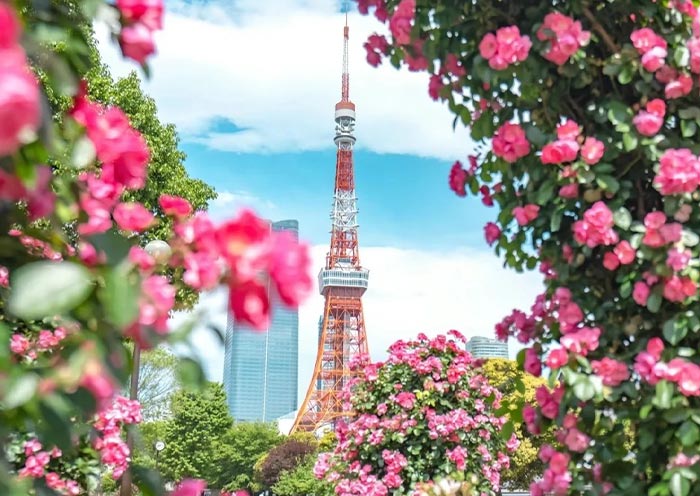
Tokyo , as one of the most bustling metropolises globally, boasts numerous attractions. For first-time visitors , attempting to explore multiple sights in just one day might feel rushed. However, thanks to Tokyo's excellent public transportation system, especially its extensive subway network, it's entirely possible to experience the city's charm with careful planning.
If you're looking for a more in-depth experience and want to avoid the hassle of navigating the city, joining a guided tour is a great option . A professional guide can lead you to iconic landmarks and provide insightful commentary, offering a deeper understanding of Tokyo's culture and history. Additionally, for those unfamiliar with Tokyo's subway system, having a guide can make your trip more seamless and stress-free.
4 Days Japan Tour Package: From Tokyo to Mount Fuji Tour
Best Tokyo One Day Itinerary
Begin your day at the serene Meiji Shrine , nestled in a forested area near Harajuku. As you pass through the towering torii gate, a sense of tranquility envelops you, setting the tone for a day of exploration. Next, venture to the iconic Shibuya Crossing , where the pulse of Tokyo beats strongest. Stand at the bustling intersection as waves of pedestrians crisscross in a synchronized chaos, creating a mesmerizing urban symphony.
In the afternoon, make your way to Asakusa to visit the historic Senso-ji Temple , Tokyo's oldest temple and a beacon of spiritual significance. Wander through the lively Nakamise Shopping Street leading up to the temple, filled with traditional snacks, souvenirs, and the aroma of incense. From there, dive into the electric atmosphere of Akihabara , Tokyo's mecca for anime, electronics, and pop culture. Explore the colorful streets lined with manga shops, arcades, and themed cafes, where the modern and the fantastical converge in a unique blend of innovation and tradition.
Conclude your day at Tsukiji Market , a bustling hub of culinary delights. Navigate through the aisles teeming with the freshest seafood and local produce, indulging your senses with the sights and smells of this gastronomic paradise.
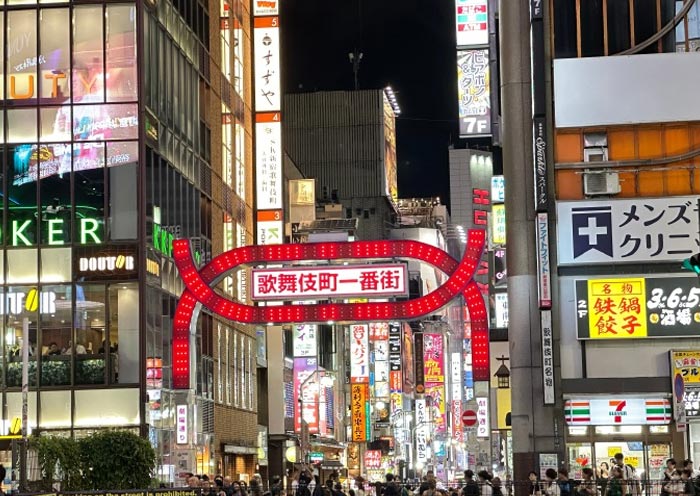
Night Experience Options
While your guided tour may conclude for the day, Tokyo's vibrant nightlife is just beginning. Having navigated the city's subway system with your guide, you’re now well-equipped to explore the city’s dazzling after-dark scene independently.
- Roppongi : Visit Roppongi for its nightlife scene, with a mix of bars, clubs, and restaurants catering to both locals and tourists.
- Shinjuku : Explore Shinjuku, a bustling district known for its neon lights, entertainment options, and vibrant nightlife.
- Ginza : Experience the upscale district of Ginza, home to luxury boutiques, fine dining restaurants, and elegant nightspots.
- Tokyo Skytree : Head to Tokyo Skytree for panoramic views of the city from one of the tallest structures in the world.
- Tokyo Tower : Alternatively, visit the iconic Tokyo Tower for stunning night views of Tokyo and enjoy the vibrant atmosphere around the tower.
This itinerary offers a blend of cultural exploration, shopping, and nightlife experiences, allowing you to make the most of your day in Tokyo . Enjoy your time in this dynamic and fascinating city!
6 Days Japan Highlights Tour with Mt. Fuji & Hakone Onsen (Hot Spring Tour)
How to Spend 2 Days in Tokyo? (for First Timers)
In two days, you can cover Tokyo's essential attractions, delve into its historical sites, immerse yourself in its diverse culture, and explore its lively shopping districts. Consider a day trip to Mount Fuji or a visit to Disneyland for a delightful experience with family.
Option 1: Nature and Culture in Tokyo
- Day 1: Start your day at Asakusa Temple , a historic Buddhist temple, and then dive into the world of anime and manga in Akihabara . Afterward, visit the Imperial Palace and explore the beautiful East Garden . Conclude your day with a trip to Odaiba , a futuristic waterfront area with stunning city views.
- Day 2: Begin at Meiji Shrine , a serene Shinto shrine dedicated to Emperor Meiji and Empress Shoken. Then, head to the iconic Shibuya Crossing . Finally, ascend the Tokyo Tower for panoramic views of the city.
Although Tokyo's attractions are spread out, the city's well-connected subway system makes it easy to visit these iconic landmarks. With the Imperial Palace as the center, you'll find Asakusa Temple and Ueno Park to the northeast, Akihabara to the east, Ginza to the southeast, Tokyo Tower to the south, Shibuya to the west, and Meiji Shrine and Shinjuku to the northwest. This itinerary offers a splendid balance of traditional charm and modern vibrancy in Tokyo , showcasing a rich tapestry of cultural experiences against a backdrop of futuristic marvels and iconic landmarks. For more ideas on what to do in Tokyo , check out things to do in Tokyo.
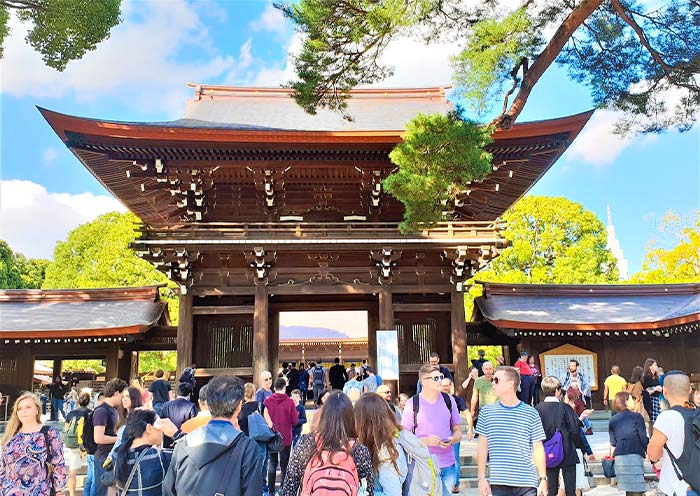
Option 2: Mount Fuji Adventure
- Day 1: Explore the traditional Senso-ji Temple and the electric Akihabara district. In the afternoon, visit the serene Meiji Shrine and the bustling Shibuya Crossing .
- Day 2: Embark on a day trip to Mount Fuji . Visit the 5th Station and Kawaguchiko for stunning views and explore the nearby Hakone area, known for its Lake Ashi and Owakudani. Then return to Tokyo .
Mount Fuji is only 100 kilometers away from Tokyo, making it easily accessible for a day trip. Lake Kawaguchiko and Hakone are two popular spots to view Mount Fuji . If you have extra time in Tokyo , consider spending a day visiting these areas to experience the charm of Japan's iconic landmark. The best time to visit Mount Fuji is during the spring and autumn. If you plan to climb this 3,776-meter-high active volcano, July and August are the recommended months.
14 Days Japan Panoramic Tour for First-Time Visitors 2024/2025
Option 3: Family Fun
- Day 1: Immerse yourself in the traditional atmosphere of Asakusa and the vibrant culture of Akihabara . Visit the serene Meiji Shrine and experience the iconic Shibuya Crossing .
- Day 2: Spend the entire day at Tokyo Disneyland or DisneySea , creating magical memories with your loved ones.
Both adults and children find it hard to resist the charm of Disneyland. Tokyo Disneyland was the first Disney park to be built outside of the United States, and it's renowned for its exceptional service, amazing experiences, and high guest satisfaction rates. The unique DisneySea park adds an extra layer of excitement and anticipation to any Tokyo Disney Resort visit. It is advisable to avoid visiting Disneyland during the summer as the hot and humid weather can reduce the overall experience.
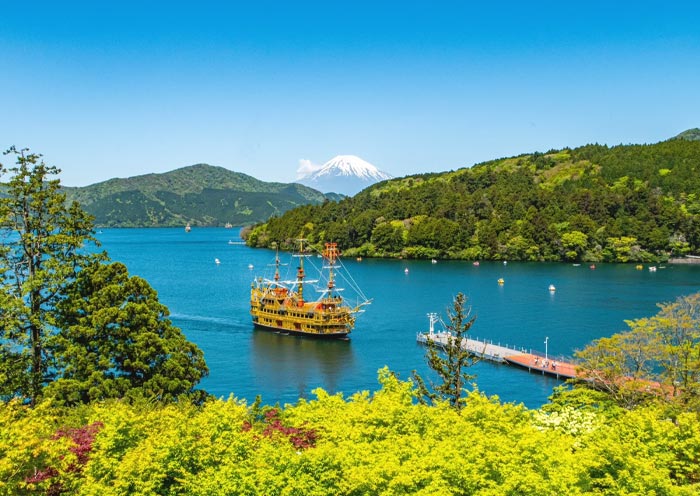
How to Spend 3 Days in Tokyo? Best for Cherry Blossom View
If you have three days to explore Tokyo , we recommend spending two days exploring the city, visiting iconic landmarks, experiencing Japan's unique culture, and savoring exquisite Japanese cuisine. Then, dedicate one day to a sightseeing trip to Mount Fuji , where you can witness the magnificent beauty of this iconic Japanese peak up close. This three-day itinerary is also perfect for exploring Tokyo during the cherry blossom season.
10 Days Japan Spring Tour - Sakura Cherry Blossom Tour to Tokyo, Mt. Fuji, Kyoto & Osaka
Day 1: Traditional Tokyo and Cherry Blossoms
Embark on a journey through Tokyo's cultural tapestry. Begin at Asakusa's Senso-ji Temple, then venture to the green oasis of Ueno Park. Dive into Akihabara's tech and anime scene before a serene stroll around Chidorigafuchi near the Imperial Palace.
- Asakusa Temple and Sensō-ji: Start your day at Asakusa Temple, one of Tokyo's oldest temples, and wander through the vibrant Nakamise-dori shopping street. Don't miss the chance to see the beautiful cherry blossoms around the temple.
- Ueno Park: Explore Ueno Park, a vast green space with numerous museums, a zoo, and a stunning cherry blossom tunnel.
- Imperial Palace East Garden: Take a leisurely stroll through the Imperial Palace East Garden and enjoy the serene atmosphere and beautiful cherry blossoms .
- Chidorigafuchi Moat: Witness a breathtaking display of cherry blossoms along the Chidorigafuchi Moat, a popular spot for cherry blossom viewing in Tokyo . Rent a boat and enjoy the blossoms from the water.
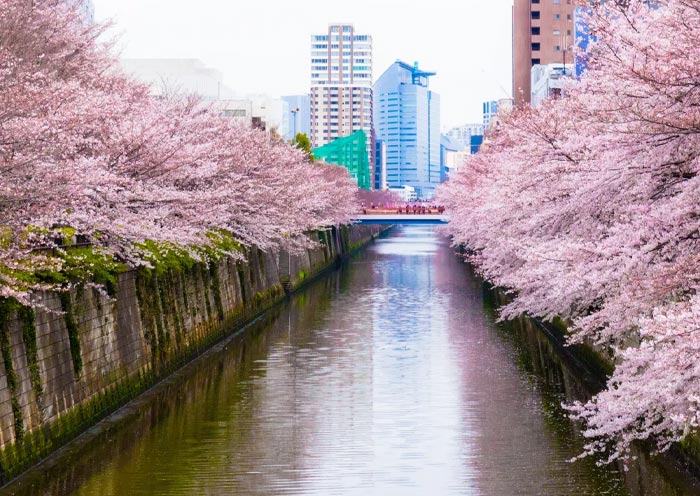
Day 2: Modern Tokyo and Nature
Start your day at Tokyo Tower and Shiba Park, then turn to Shibuya Crossing to experience the bustling area. Head to Meiji Shrine to visit traditional Tokyo shrine with grand torii. Visit the Shinjuku Gyoen National Garden for the various cherry blossoms.
- Tokyo Tower: Ascend the iconic Tokyo Tower for panoramic views of the city, especially beautiful during cherry blossom season.
- Shibuya Crossing: Experience the thrill of the world's busiest pedestrian crossing and admire the city skyline.
- Meiji Shrine: Immerse yourself in nature at Meiji Shrine, a serene Shinto shrine surrounded by a beautiful forest and cherry blossom trees.
- Shinjuku Gyoen National Garden: Relax in the serene atmosphere of Shinjuku Gyoen National Garden, one of Tokyo's largest and most beautiful parks, famous for its variety of cherry blossom trees.
7 Days Japan Essential Tour: Tokyo Kyoto Nara Osaka (Basic Golden Route)
Day 3: Mount Fuji and Hakone Cherry Blossom Day Trip
Depart from Tokyo in the morning and head to Lake Kawaguchiko. Enjoy the cherry blossoms and Mount Fuji view at Oishi Park and Tenjozan Park. In the afternoon, travel to Hakone and cruise a pirate ship on Lake Ashi. Ride the Hakone Ropeway to Owakudani and experience the volcanic landscape. Return to Tokyo in the evening.
Mount Fuji (Lake Kawaguchiko):
- Oishi Park: Enjoy the breathtaking view of Mount Fuji with a carpet of pink moss phlox at Oishi Park. In spring, the combination of cherry blossoms and Mount Fuji creates a stunning landscape.
- Tenjozan Park: Take a cable car up to Tenjozan Park for panoramic views of Lake Kawaguchiko and Mount Fuji. This is also a fantastic spot for cherry blossom viewing, where you can admire the mountain and the blossoms at the same time.
- Lake Ashi Pirate Ship Cruise: Take a unique pirate ship cruise on Lake Ashi and enjoy the scenic views of the lake and Mount Fuji .
- Owakudani: Ride the Hakone Ropeway to Owakudani, a volcanic valley with stunning views of Mount Fuji and the surrounding area. You can also enjoy black eggs boiled in the volcanic hot springs.
The peak cherry blossom season in Tokyo usually falls between late March and early April, but the exact timing can vary depending on the weather. Check the latest cherry blossom forecast before your trip to plan your itinerary accordingly.
This itinerary is designed to provide a memorable cherry blossom experience in Tokyo . You can customize it based on your interests and preferences.
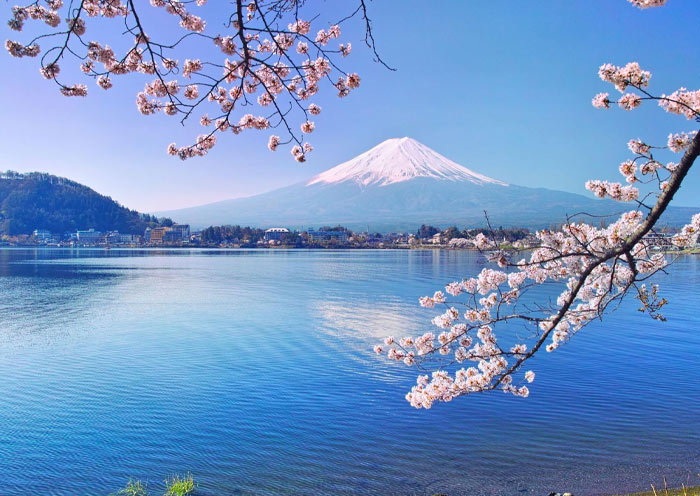
How to Spend 4 Days in Tokyo?
Spending 4 days in Tokyo allows you to explore a mix of traditional and modern attractions, diverse neighborhoods, and unique experiences. Here's a suggested itinerary to make the most of your time in the bustling metropolis:
Day 1: Cultural Exploration
Morning : Start your day at Asakusa to visit Senso-ji Temple and stroll through Nakamise Shopping Street.
Afternoon : Dive into the vibrant tech hub of Akihabara for electronics, anime goods, and themed cafes. Head to Ueno Park to explore museums like the Tokyo National Museum and enjoy a leisurely walk around the park.
Day 2: Modern Tokyo
Morning: Start your day at Meiji Jingu. Explore the trendy district of Shibuya and witness the famous Shibuya Crossing .
Afternoon : Visit Harajuku for unique fashion boutiques and Takeshita Street . Discover the neon-lit streets of Shinjuku and consider a visit to Golden Gai for a taste of Tokyo's nightlife.
7 Days Japan Family Tour with Kids - From Tokyo Disneyland to Kyoto, Nara & Osaka
Day 3: Day Trips and Nature
Morning : Take a day trip to Kawaguchiko to explore the stunning Mount Fuji and the natural beauty of the area.
Afternoon :Head to Hakone to experience Lake Ashi Pirate Ship Cruise. Ride the Hakone Ropeway to Owakudani, a volcanic valley with stunning views of Mount Fuji and the surrounding area. You can also enjoy black eggs boiled in the volcanic hot springs.
Day 4: Culinary Delights and Shopping
Morning : Start your day at the Tsukiji Outer Market for fresh seafood breakfast. Indulge in a food tour in neighborhoods like Ginza or Shinjuku to sample local cuisine.
Afternoon : Explore Odaiba for entertainment and shopping options.
This itinerary offers a blend of Tokyo's must-see attractions, cultural experiences, culinary delights, and opportunities for relaxation. Feel free to adjust the itinerary based on your interests and pace to create a personalized and memorable 4-day trip in Tokyo .
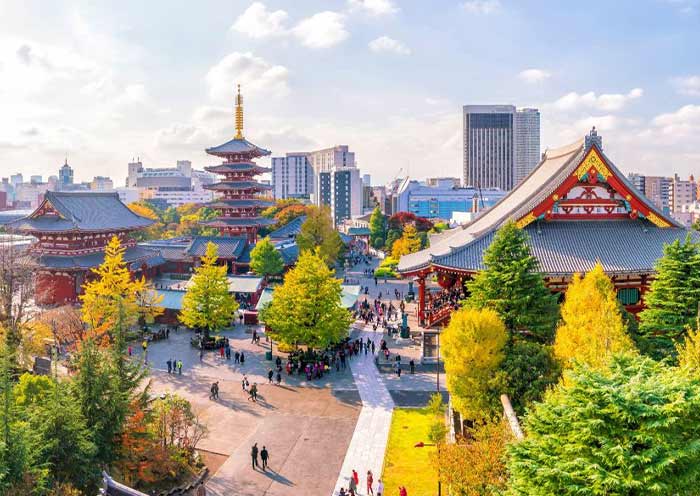
If you have any questions about this article, please contact us by submitting the following form and we'll immediately get back to you.
Ask Us for More Information
Related Travel Articles
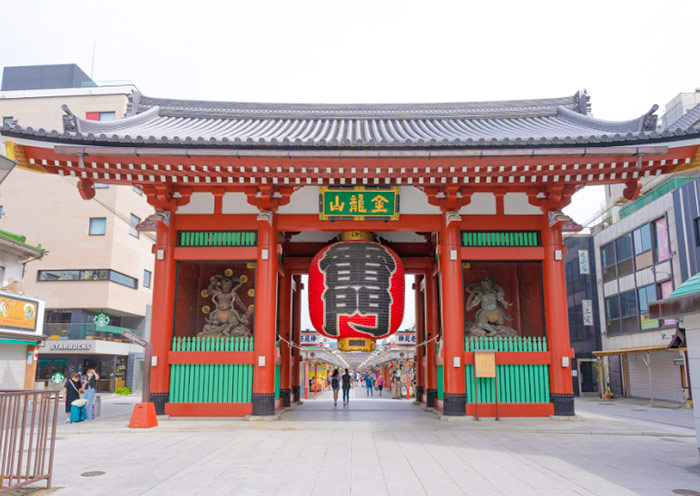
Recommended Related Trips

Two Week Peru Itinerary: Planning an Amazing Trip from the Andes to the Amazon
By: Author Rob Taylor
Posted on Published: May 23, 2024 - Last updated: August 19, 2024

Save this two week Peru itinerary for your first trip to this amazing country! We had an unforgettable experience in Peru, from Lima to the Andes to the desert to the Amazon. This Peru itinerary is doable with kids, or just adults, but it all depends on what you want to see most and how much time you have for your Peru trip.
For us, we built out this two week Peru itinerary based on the things our kids had researched and told us were most important to them. I’ve got to say, they hit the nail on the head for what us adults were interested in too. Running with their list, I built our whole itinerary and where we stayed to make sure we had the best time, enjoying the most interesting experiences possible for two weeks in Peru.
If you have any questions about logistics, our Peru itinerary and how to adjust it, or want to leave your own tips for how to have an incredible experience, please leave a comment or send us a note . We’re always happy to share more!
Join us for a Peruvian Amazon group trip! (Nov 2024, Mar 2025)

Getting to Peru from the USA
I was surprised how easy it was to get from the USA to Peru for our trip. If you have a USA passport you don’t need a visa and Peru customs is very easy to go through. Be sure that you have at least 6 months of validity left on your passport and that you’re ready to say exactly where you’re going, where you’re staying and when you’re leaving. That should be good to get through customs swiftly. You can visit for up to 183 days.
Other nationalities that don’t require visas include:
- All South American nations except Venezuela
- Canada and Mexico
- Most central American and Caribbean nations
- South Africa
- All EU countries plus Britain, Norway, Belarus and Russia
Visa entry or not, you do need to be able to prove you’re going to leave Peru at some point. “Continuing travel” is very important to be able to communicate or prove when you go through customs. A lot of people who are doing slow travel for their Peru trip will pop into Bolivia to the south to refresh their visitation clock. This is NOT an option for USA passport holders as Bolivia requires a visa for US citizens (but not most others).
To fly to Lima from the USA, you have a few options:
- Miami, Florida – MIA and FLL
- Los Angeles, California – LAX
- New York City, New York – JFK and EWR
- Houston, Texas – IAH
- Atlanta, Georgia – ATL
You’ll be surprised how inexpensive flights to Lima are, including the mileage exchange deals you can get from the USA to Peru. Listen to our podcast episodes about Using Points for Travel or Mastering the American Airlines Loyalty Program

Regions to Visit in Peru
Peru is a pretty large country, which includes 80+ of the 126 microclimates on earth. Visiting Peru means seeing the full spectrum of landscapes and ecosystems, whether you’re into science or not. There are six main areas visitors for the first time in Peru might plan on visiting:
- Lima – the capital city and historic center
- The Andes Mountains – Cusco / Machu Picchu / Sacred Valley
- The Andes Mountains South – Lake Titicaca / Arequipa / Colca Canyon
- Ica – Paracas / Ballestas Islands / Ica
- Southern Peru – Nazca Lines / Atacama Desert
- The Amazon – both the Jungle and the River itself
For a first time Peru trip, I would actually recommend keeping it simple and sticking close to sea level. The elevation of Cusco and the Sacred Valley really does have an impact on visitors, especially ones who live at sea level. We’re well traveled, healthy, and pretty resilient, but the altitude sickness hit us so hard that we were fairly miserable for most of our time in the Andes. We were careful and thoughtful, but still suffered intense vomiting, diarrhea, headaches and absolute fatigue. We actually changed our plans to get back to sea level ASAP because it was so intense. Just keep this in mind as you plan your first trip to Peru. Check out our tips for Preventing Altitude Sickness
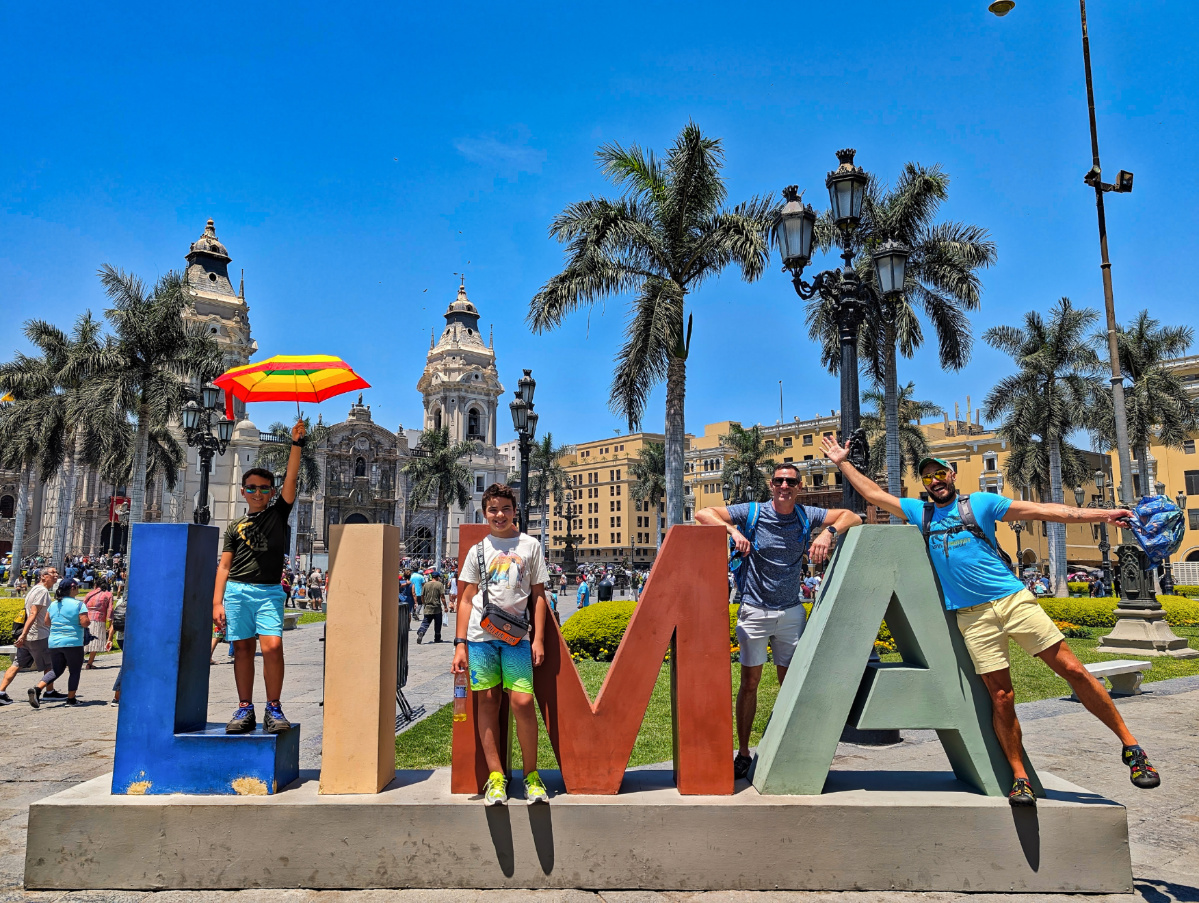
Planning a Peru Trip Podcast Episode
We have several Peru podcast episodes including All About the Andes; Peru at Sea Level – Lima, the Desert and Islands; and the Peruvian Amazon! In our Peru trip planning podcast episode :
- Our transportation throughout Peru
- Itinerary highlights from Machu Picchu to seeing penguins and monkeys
- Tips for making the most of your Peru trip
Travel Within Peru
When building our Peru itinerary, travel within the country was the thing that was the most confusing to me initially. You can look at things on a map until the cows come home, but understanding the logistics of getting from place to place is a whole other thing. Before building our travel plan we’d heard about trains and a great bus system… Yeah, no. Those options are very limited and specific, and not a national thing.
There is NOT a train network in Peru. There is a train between Machu Picchu town, aka Aguas Calientes, and Ollantaytambo, or the train goes all the way to Cusco in the dry season. You cannot travel from Lima to Cusco or Pisco via train. The train to Machu Picchu town is awesome though, and you’ll love the scenery and experience as a part of your Peru trip.
Get train tickets to Machu Picchu!
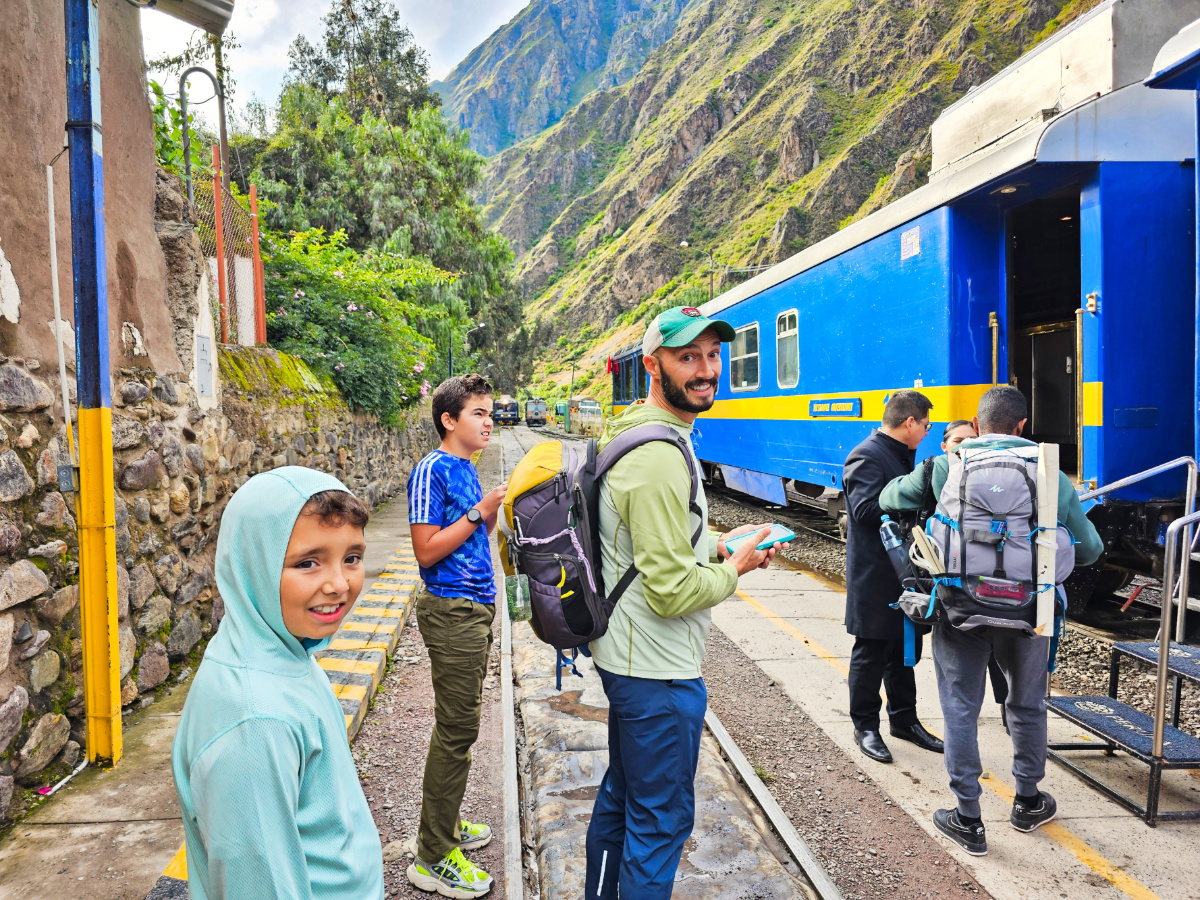
There’s also not an extensive bus system to go beyond Lima, but you can book tour bus passes from Lima up into the Andes, to Arequipa and Cusco. Buses will get you where you need to go with some extra time, but it’s not just a simple bus ride on an afternoon. This is the way to go to slowly, working your way up in elevation, but it’s not a convenient, time-saving sort of transportation.
Get bus tickets from Lima -> Cusco
The regular visitor to Peru probably will need to fly between destinations, or get a rental car. Driving in Peru isn’t weird or scary, but driving in Lima is an absolute nightmare. Between the intense traffic and the aggressive blinker-less road rage, it’s one big anxiety attack. Once you’re on the PanAmerican Highway though, it’s smooth sailing and one of the best roads we’ve driven anywhere in the world. Driving to Arequipa, Cusco or Ollantaytambo is not bad, so if you’re comfortable and confident, go for it.
When it comes to flying, getting to Peru is easy (see above) and once here you’ll be surprised at the ease of travel. From Lima, you can easily fly to Iquitos (the Amazon), Cusco (Machu Picchu/Sacred Valley), Arequipa (colonial area/Colca Canyon), Chiclayo (northern coast), Juliaca (Lake Titicaca) and more. LATAM flights are consistent and are inexpensive for regional travel. You will pay more than a bus ticket, but you will save whole days in travel, allowing you more specific experiences that transportation during your Peru trip.
See regional Peru flights on LATAM
Need to Know to Visit Peru
There are a few things to know before you visit Peru, just because it really is different than the USA or Canada. If you’ve traveled in South or Central America, this might not seem unusual to you, but if this is a first for you, pay attention:
- The money is the Sol or Soles (multiple; said “sole-ais”) – it’s about 4 soles per US dollar (Spring 2024 exchange rate)
- The primary language is Spanish, with Quechua being second, and then a lot of people working in tourism speak English. If you ALWAYS attempt to use Spanish as best as you can before just speaking English, as that’s most polite and sets you up for the most successful conversation.
- When you use a toilet in Peru, any paper does NOT go into the toilet. There are trash cans by toilets for the waste paper, no matter how you think it’s just fine to flush it.
- Wherever you go, you should always bring your own TP. Yes, it is sometimes provided but also more often than not there will not be toilet paper in public restrooms, even when you pay the common 2 soles to use the restroom.
- There are LOTS of potatoes in Peru no matter what region you’re in. You’ll get to try lots of different potato varieties and preparations, so even if you’re not into potatoes, keep an open mind.
I’m sure there are more helpful things to keep in mind before visiting Peru, but these are the things that really stand out to me as unique and important for a great Peru trip.
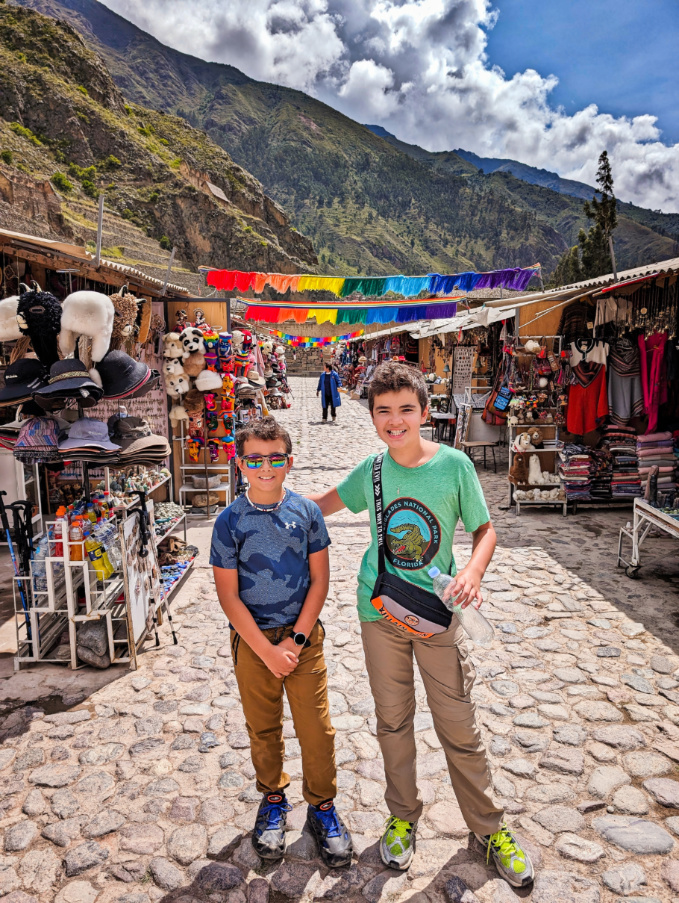
Two Week Peru Itinerary
Now it’s time to get into our two week Peru itinerary. We’ve got a great plan that includes the Andes Mountains, Lima, the desert coast, and the Amazon rainforest. You’ll love it! As you look at our Peru itinerary and start planning, keep in mind that if you can add four more days, you can take your time ascending up into the Andes, which will be very helpful to acclimate.
Begin in Lima, Peru
Since you’ll be flying into Lima, Peru from nearly anywhere you’re starting, you should plan to spend a few days exploring Lima. It’s a really cool city with lots of history and beautiful buildings, so you’ll enjoy having time here to get used to being in Peru. I don’t recommend getting a rental car for your time in Lima, as driving here is a stressful and horrifying experience (worse than Mexico, France or Croatia), but you can easily use Uber to get wherever you need.

Historic Lima Sightseeing
Lima has more people than New York City , so keep that in mind as you’re exploring. The historic core is less densely populated, but still crowded. We visited during Semana Santa (Easter week) and it was so very busy, with long lines to get into the historic churches. Any other time of year you should have no problem visiting historic religious sites throughout the day, but during Easter and Christmas you’ll see that the areas directly surrounding the famous churches are very crowded. Plan your Peru trip to fall just before or after major religious holidays.

How can you get around the issues with crowds? If you book a walking tour, many of the guides have the correct license to be able to detour away from crowds and enter churches that are a part of their tour, including the Cathedral of St Francis where you’ll find the catacombs. You can visit places like the Plaza Mayor or Hotel Bolivar on your own, and the churches too, but it’s much easier with a guide.
We did a historic walking tour of Lima with Lima Experience. Our guide, Joseph, was great and spoke excellent English. He was able to field questions from the kids and explain so much of what makes Lima and Peru the interesting, diverse place that it is today.
Book this exact tour!
If there’s one museum you must visit in Lima, it’s the Larco Museum . Not close to the historic core (a 20 minute Uber ride), the Larco Museum has the most incredible collection of Inca and pre-Inca artifacts in Lima. There is the Inka Museum in Cusco that is larger and more comprehensive with grand exhibits, but the Larco is where you’ll find golden Inca artifacts, aisles and shelves of figures and pottery, and the very unique… adult section of Incan art and artifacts. Yes, it’s what you are picturing and there are some fascinating pieces depicting all varieties of intercourse, human anatomy and birth. The Larco Museum is really a wonderful addition to your Peru trip.
Get advanced tickets for Larco Museum

Neighborhoods to Visit
The most popular neighborhoods that are good for tourists to visit in Lime include Miraflores (we stayed here), the historic downtown and Barranco neighborhoods. These are good neighborhoods for getting the vibe of life in Lima for a few reasons:
- They are more upper class residential, meaning well maintained with good pedestrian access
- There are lots of cafes and restaurants for eating Peruvian foods
- Because they’re known for being tourist friendly, they are diversely populated and welcoming
- There are parks and plazas that you can enjoy, and lots of murals around the neighborhoods.
There are more parts of Lima than these, but when it comes to being able to easily access parts of the city, these three neighborhoods are the easiest and most vibrant. I don’t recommend driving in Lima (it’s intense, as I’ve said) so taking an Uber wherever you need to go that’s not walking distance is a good idea.
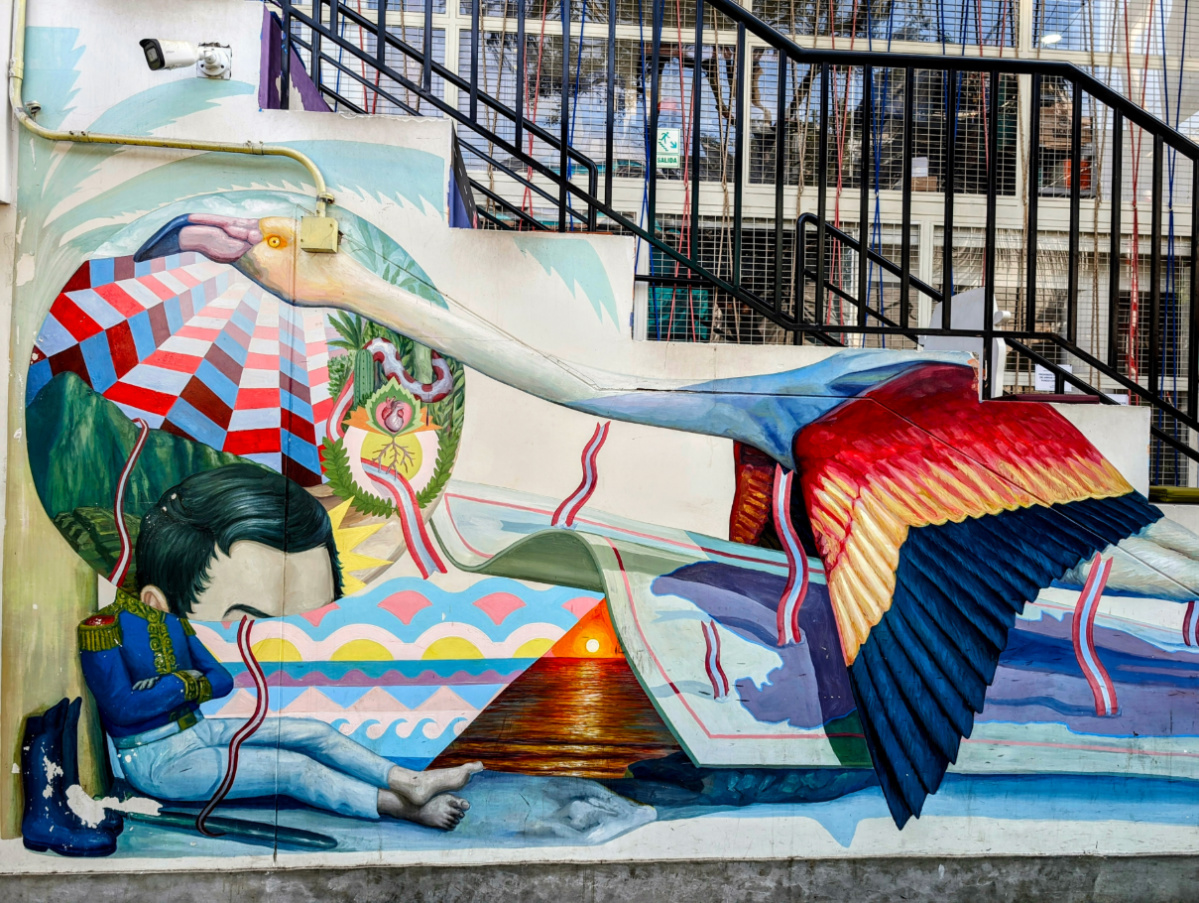
Exploring the Andes Mountains
Before thinking about Lima or the Amazon, most people are excited to visit Peru to go to Machu Picchu. For many, their knowledge of Peru stops at “That’s where Machu Picchu is.” There’s so much more to the Andes than this one site. There are actually many Inca and pre-Inca sites from the mountains just south of the Amazon all the way to Lake Titicaca and into Bolivia and Chile. For our two week Peru itinerary, we are focusing on Machu Picchu and the most famous sites in the state of Cusco.
We have our Andes stops in order of how you can do them to gradually increase your elevation, so hopefully that’ll help make the experience better for you.
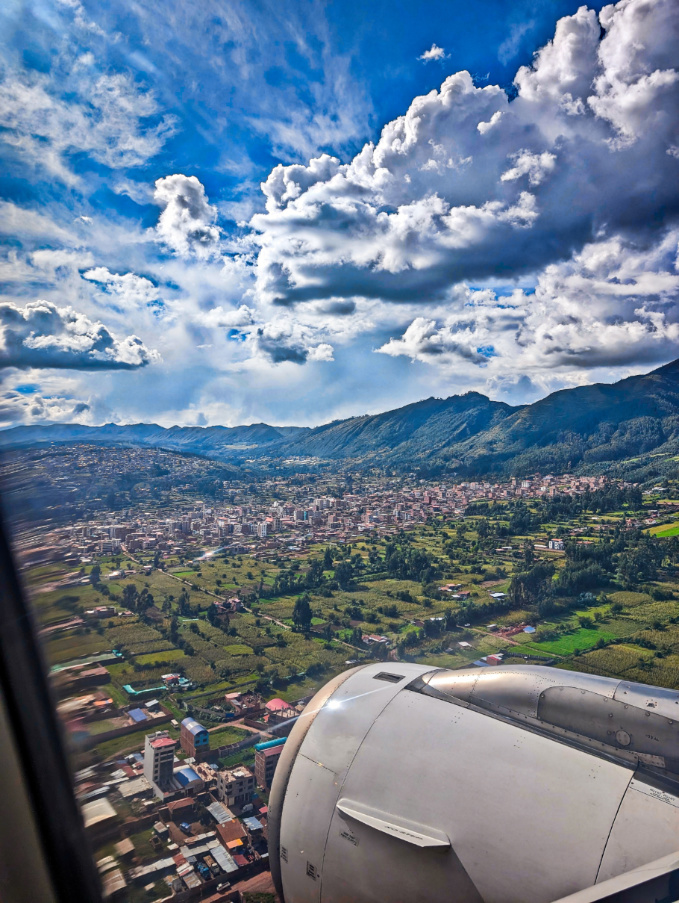
Listen to our Andes podcast episode to hear about our stops and activities. This part of the trip was fun, but also a struggle.
Reality of Altitude Sickness in the Andes
Most of us don’t live at high altitudes like you’ll face in the Andes mountains. We live at sea level in Florida, so aren’t used to the elevation, despite doing mountain trips throughout the year. When you visit the Peruvian Andes, the elevation ranges from 6,693 feet in Aguas Calientes (Machu Picchu Town) to 12,556 feet at Puno (Lake Titicaca). If you’re visiting the famous Rainbow Mountain area, you’ll go even higher to 17,060 feet. That’s 3k feet higher than the summit of Mount Rainier !
The altitude really does have an impact on the human body, so you should be cautious as you plan your travel to the Peruvian Andes. After 5k feel you may feel like you’re huffing and puffing when you go up stairs. At 8k feet your insides feel a bit weird and have a difficult time processing food as usual. Higher than that and you become dehydrated easily in addition to the other side effects. All this can present as fatigue, dizziness, nausea, vomiting, diarrhea and more. We suffered headaches, fatigue and horrible vomiting and diarrhea during our time in the Andes, and we only made it as high at 12,163 feet up.
While not everyone suffers from altitude sickness , there are ways to prevent or mitigate it:
- Ascend from sea level as gradually as possible, staying a few nights at different higher elevations
- Drink LOTS of water and get solid rest
- Take it easy while you acclimate
- Eat small meals, especially as the day winds down
- Don’t drink alcohol, but DO drink coca tea and suck on coca candies
- Keep your overall Peru trip joy in mind when deciding if you want to tough out the elevation
For some travelers, there is a pill you can take called Diamox that helps acclimate to the altitude. THIS IS NOT AN OPTION FOR EVERYONE, SO TALK TO YOUR DOCTOR. This was not an option for our family due to some medical stuff, but it may work for others. Everyone told us just to get it, but upon research and talking to our family doctor we discovered that it could be a very dangerous situation for us, so I’m glad we didn’t just jump into taking a pill without getting info from our trusted medical professional.
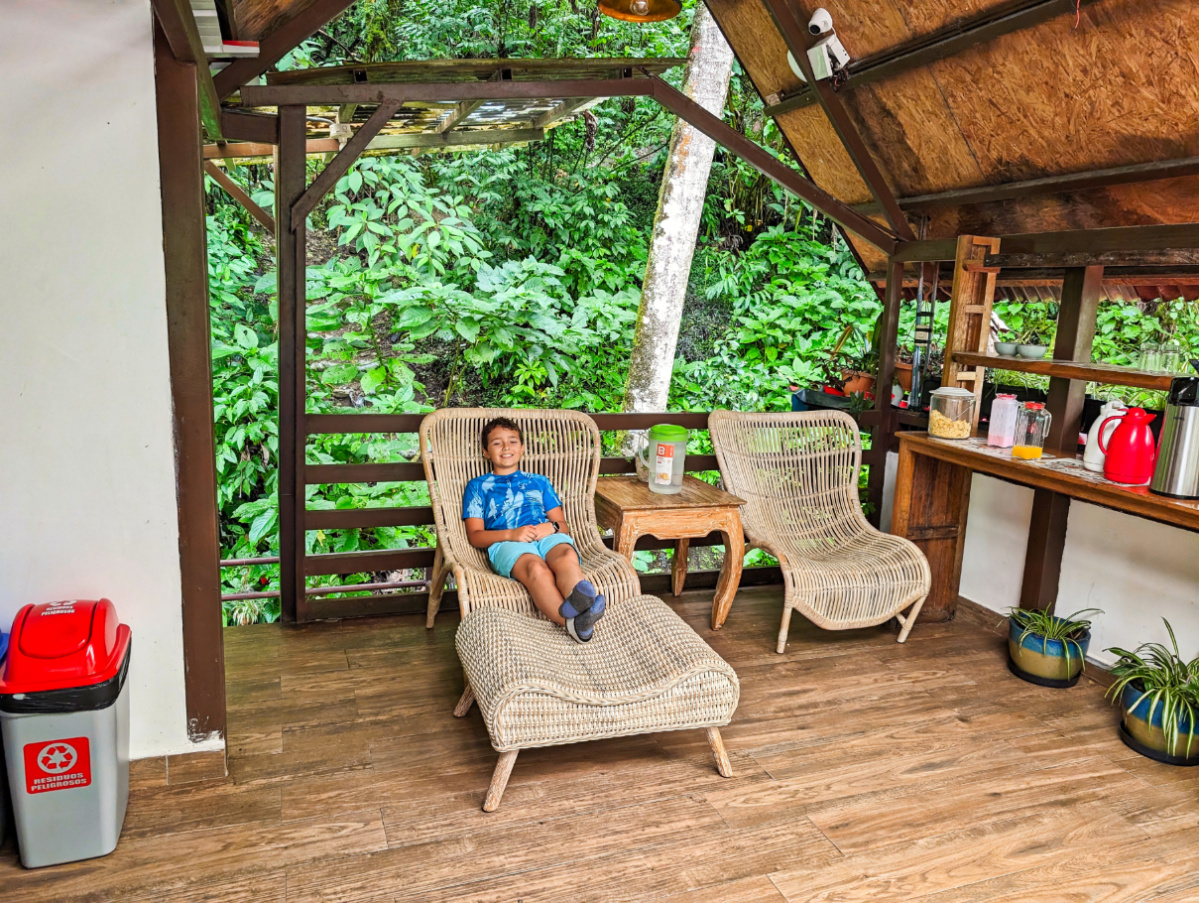
Visiting Machu Picchu
To start, you can either take the bus over several days from Lima up to Cusco, or you can fly into Cusco and then travel to Aguas Calientes, aka Machu Picchu Town. If you have the time to take the bus, do it! To stick with our two week Peru itinerary, you’re flying to Cusco (CUZ). With this, the best option is to immediately exit the city and make your way to Ollantaytambo to catch the train to Aguas Calientes.
Note: during the dry season of April – October you can start the train journey IN Cusco, but during the rainy season the train route is only from Ollantaytambo to Aguas Calientes due to landslides that frequently happen during the rain. This just means you need to plan your Peru trip properly to get the train in the correct town.
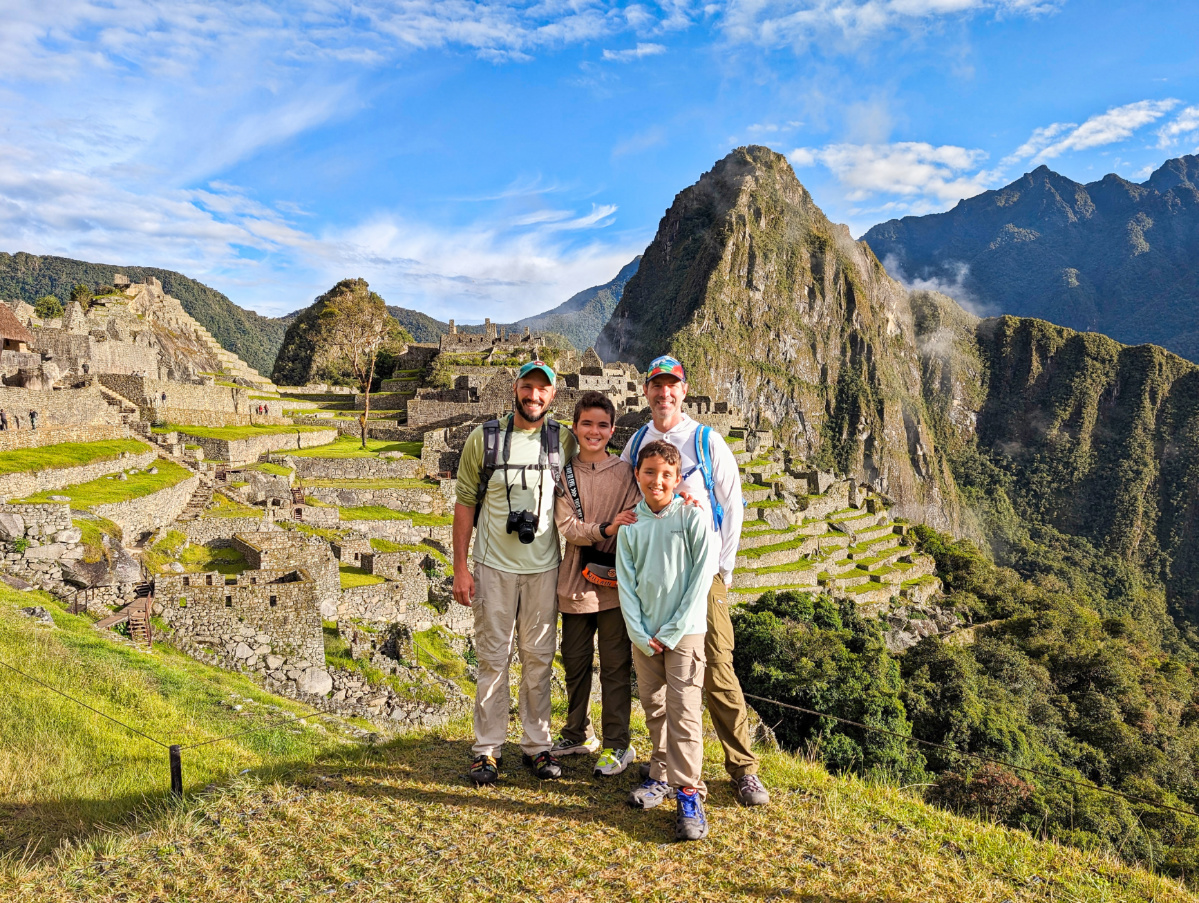
For visiting Machu Picchu, you will need to get your entry tickets IN ADVANCE. Entries to the archaeological site sell out days or weeks before, so as soon as you know when you’ll be there, secure your tickets. We missed out on getting tickets for ourselves and had to book a private tour, as registered guides have access to additional entries. This turned out to be FANTASTIC as our guide, Percy with Wonders of Peru Expeditions was amazing. He was so knowledgeable and very patient with us, both for our questions and our struggles of climbing stairs at such high elevation.
Book our exact Machu Picchu tour here!
Be sure to bring water, snacks, sunblock and ponchos for visiting Machu Picchu. Once you enter the site there are no services and umbrellas are not allowed. You’ll need to be self-contained and ready to brave the elements as the weather can change quickly. If you arrive early, you have great chances of getting a beautiful day at Machu Picchu, because even if there are clouds to start, they’ll probably clear and you’ll have at least a few moments of sunshine.
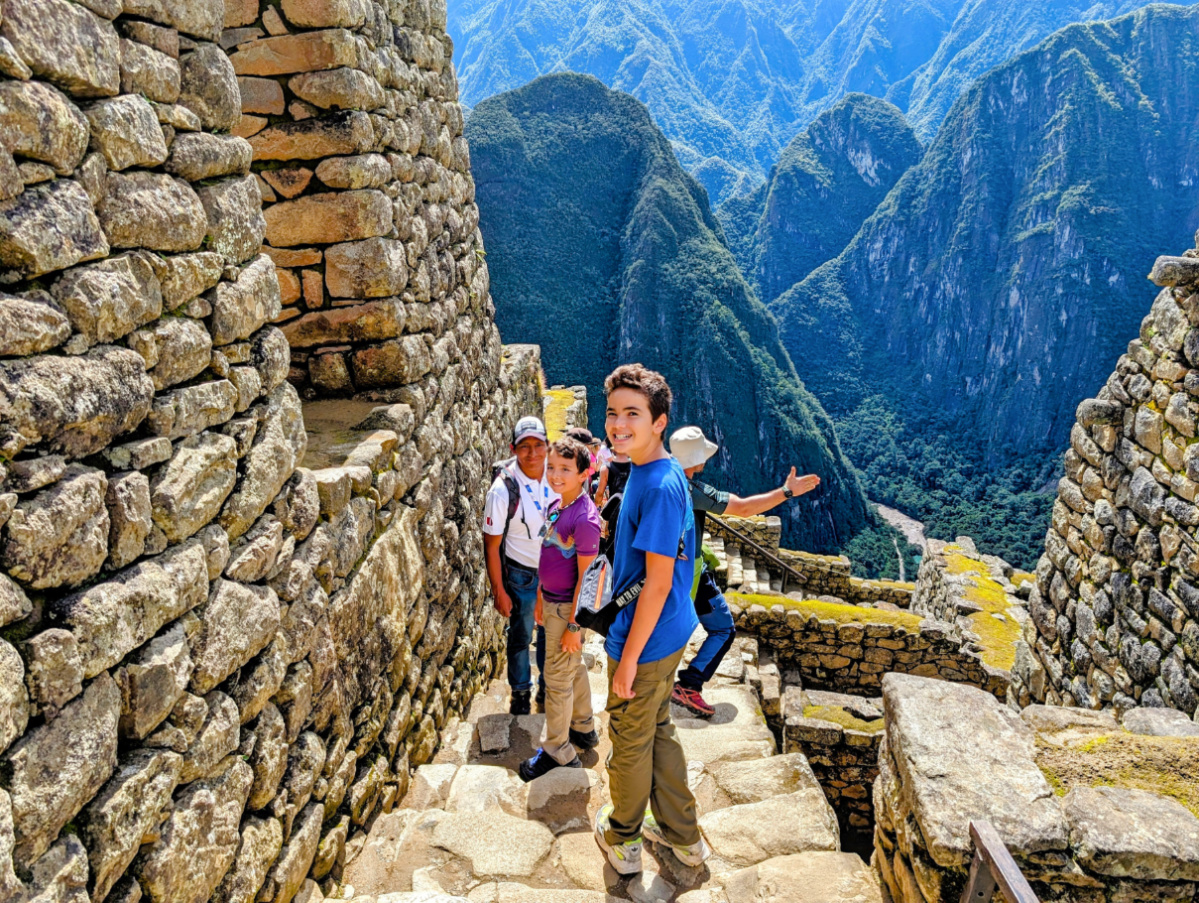
Touring the Sacred Valley
I actually enjoyed our time in the Sacred Valley more than visiting Machu Picchu. This part of the Andes is one of the coolest parts of our two week Peru itinerary. Here you’ll get to see really neat, old towns built by both the Incas and pre-Inca civilizations. There are farms, rivers, plateaus, narrow cobblestone streets, and awesome people. If you choose to rent a car in Cusco and drive yourself, you can take several days exploring the Sacred Valley and really taking your time.
You can also see most of the Sacred Valley sights on a guided tour with a driver. I know, I’ve already recommended two other tours during our two week Peru itinerary, but it’s because here in the Andes and in such historic places, having a specialist who knows infinitely more than we did made each experience exceptional. For our Sacred Valley tour, we spent a very long day with Oscar from Exclusive Inka Tours. He was such a wealth of information and was great with our kids.
Book our exact Sacred Valley tour here!
The main sites to visit in the Sacred Valley include:
- Ollantaytambo Archaeological Site and town
- Moray Incan horticultural laboratory
- Salinas de Maras salt mine – amazing!
- Pisac Archaeological Site and town
- Chinchero Inca town and historic sites
- Mountain View restaurant and llamas
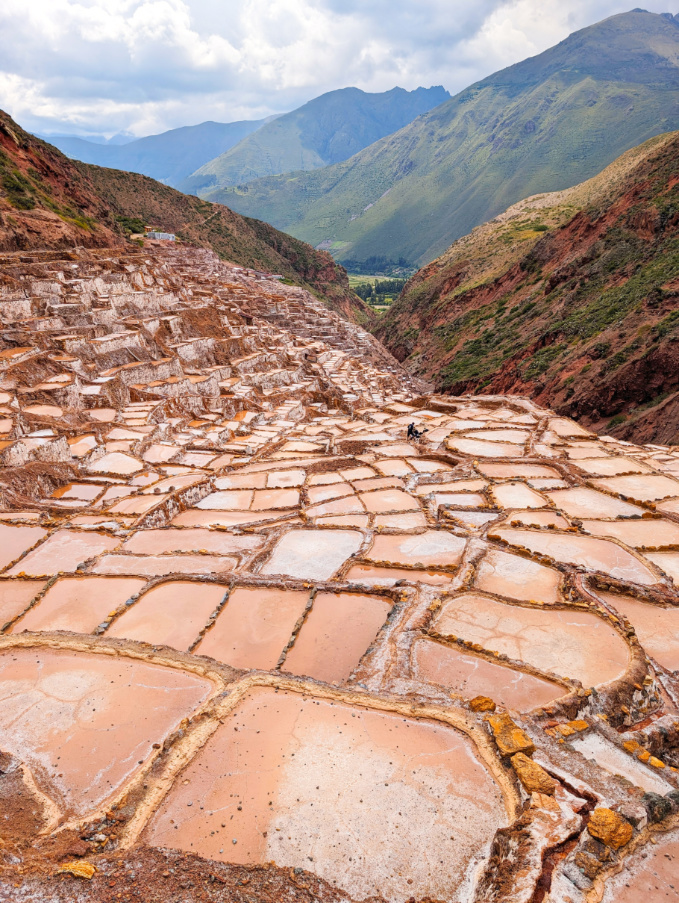
There are more sites to visit, including more archaeological sites, but either doing a tour to cover ⅔ of these spots or spending two days to explore the Sacred Valley on your own is wonderful and will give you a comprehensive visit. This may just be one of your favorite parts of your Peru trip.
Tip: you can purchase a multi-site ticket to cover the Peruvian archaeological park sites and get a bit of a discount. It’s time limited though, so you may need to manage yourself well to be able to get the full value of the ticket (valid 2 days for adults, 10 days for child tickets).
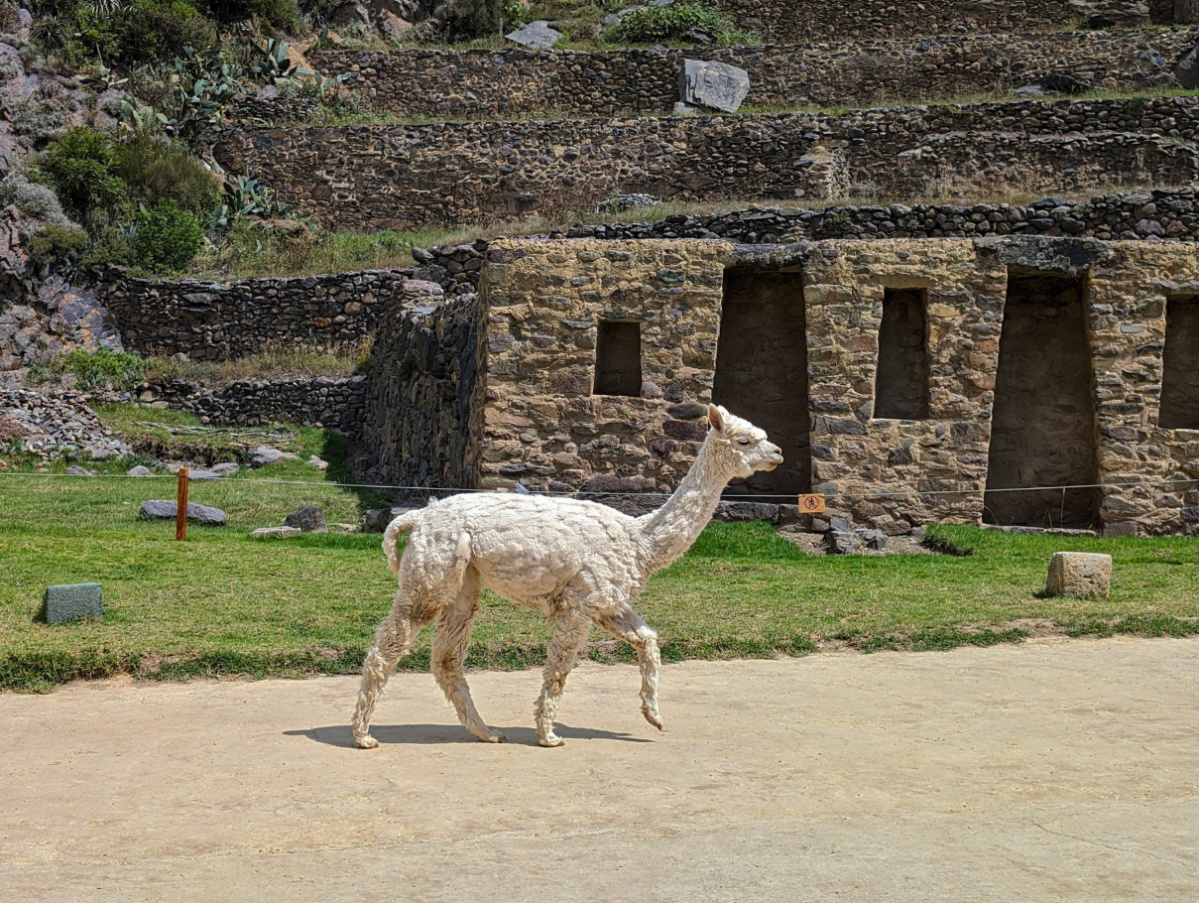
Cusco and More Andes Sightseeing
Cusco is the former capital of the Incan Empire and is one of the most unique cities we’ve been to. The colonial structures are built on top of Incan structures, such as churches built on top of palaces… Cusco is big and densely populated. Because the city is built into the hills and valleys, the streets zigzag their way to the valley floor. There are staircases and flood gutters everywhere, and in the historic core, the streets are tight!
While in Cusco , take it easy as it’s higher in elevation than Ollantaytambo or Aguas Calientes. Spend your time checking out the main historic area around the Plaza de Armas and visiting the Inca Museum, the Historical Museum of Cusco, the cathedral , the Museum of Pre-Columbian Art and more. There is a really cool aqueduct, el Acueducto da Sapantiana , more Inca ruins at Saqsaywaman , Q’enco and others. Cusco is really cool and you can easily spend three or four days here. Before arriving we didn’t realize just how many ruins and archeological sites in Cusco you can visit.
Note: we had to cut our time in the Andes short and skipped most of Cusco because we were suffering from altitude sickness so badly. In any scenario, it’s okay to adjust your travel plans if you’re physically suffering and need to move on. Don’t feel bad about it.
More Andes destinations to add if you have time and are feeling good:
- Puno (highest Andes) and Lake Titicaca
- Rainbow Mountain / Montana Vinikunka
- Colca Canyon for the Andean condors
- Arequipa (low Andes) – for a longer trip to sea level or onto Bolivia

Ica – Where Desert Meets Sea
Never have I ever… been so excited to be back at sea level. After an intense week in the Andes, being back at sea level was such a welcome change. We immediately felt better upon landing in Lima and driving to the state of Ica. Getting out of Lima takes at least an hour (remember, it has more people than New York City) but then once you’re on the Panamerican Highway it’s driving bliss!
Note: ALWAYS DRIVE WITH YOUR LIGHTS ON. You will get pulled over or held back at a checkpoint and ticketed if you don’t have your lights on. We got pulled over and were being cited for 1300 soles… and then the police officer offered us a cash discount on the ticket if we could pay on the spot. Yes, exactly what you’re thinking – IF WE GIVE THE OFFICER CASH WE WON’T GET A TICKET. It was a bribe. Good times.
As your using out two week Peru itinerary, this is a great part of the trip to add time, particularly if you cut some time from the Andes. The Ica region is awesome and NOT what you’re expecting to find during your Peru trip!
Listen to our Peru Itinerary Planning podcast episode to hear about Ica and how we scheduled our time.
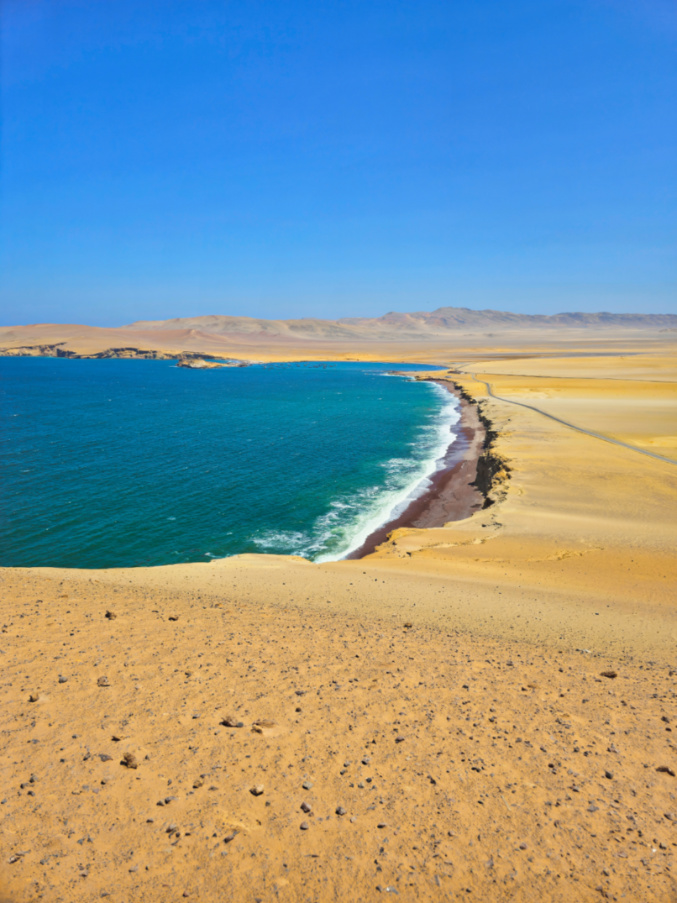
Paracas – Peru Beach Days
I love Paracas! Of all the towns and cities in Peru that we visited, Paracas was my favorite. Maybe it’s because we live in a beach town or maybe because for me it’s nostalgic of Cabo San Lucas or Puerto Morelos in Mexico , but I loved it. The town is full of small restaurants, ceviche and cafes. There are Peruvian coffee shops and little markets. The waterfront has a promenade and a beach.
Visiting Paracas is a complete vibe change over the Andes or Lima. It’s a breath of fresh air and relaxation. While it isn’t as built up and fancy as most Mexican beach towns, Paracas is well maintained with lots of beautiful murals and shops. And it’s home to the largest inflatable water park in South America. Yes, you read that correctly.
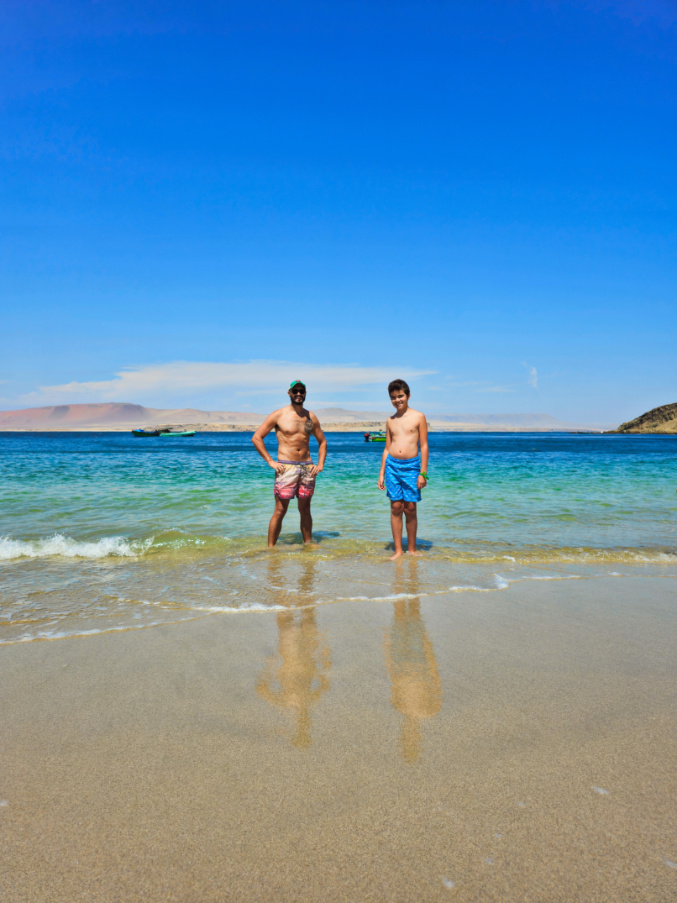
We usually opt for historic sites and nature over any sort of modern or kitschy activity, but after a week in the Andes and still being in recovery mode, when we walked onto the beach and saw Yakupark (an inflatable water park / giant obstacle course) we decided it would be good to just do it and chill. The kids had the best time and needed this sort of wild and fun activity.
Why are most people coming to Paracas, Peru though? For the PENGUINS!!! (keep reading)
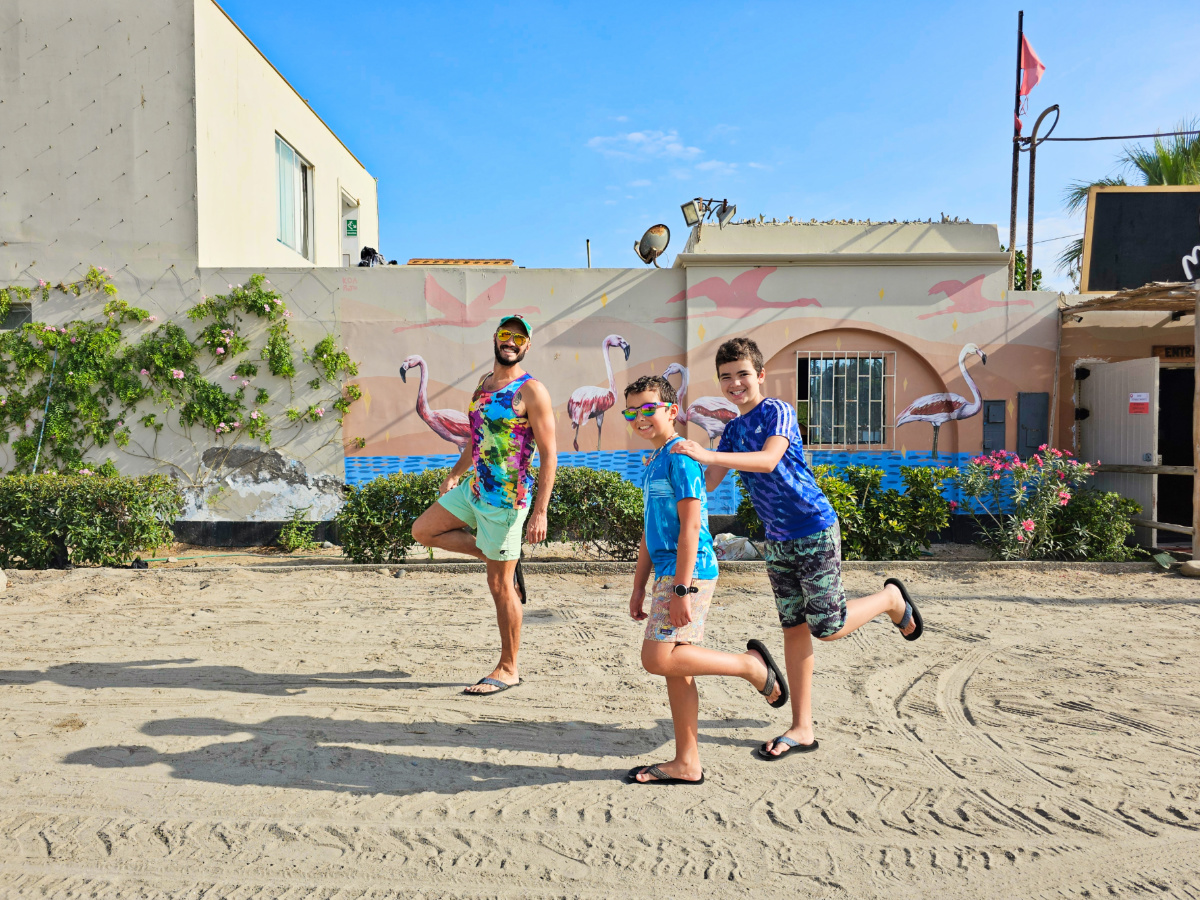
Ballestas Islands
Just off the coast of Paracas is one of my favorite wildlife sites on earth. I geek out over birds and other animals, so getting to visit the Ballestas Islands was a Peru trip highlight for me. Part of the Peruvian national parks system, the islands are a preserve and people aren’t allowed on them anymore, except for research purposes. So how do you actually visit the Ballestas Islands?
Book our exact Ballestas / Paracas Reserve tour here!
From the pier in Paracas you’ll board a tour boat (there are several companies) and head out to sea. You’ll see the fascinating landmark, La Candelabra, in the dunes as you make your way to the islands, and then as you approach you’ll start to see sea lions. Once there, it’s time to start wildlife watching. For us, the highlight was the humboldt penguins. We saw penguins in the wild!!
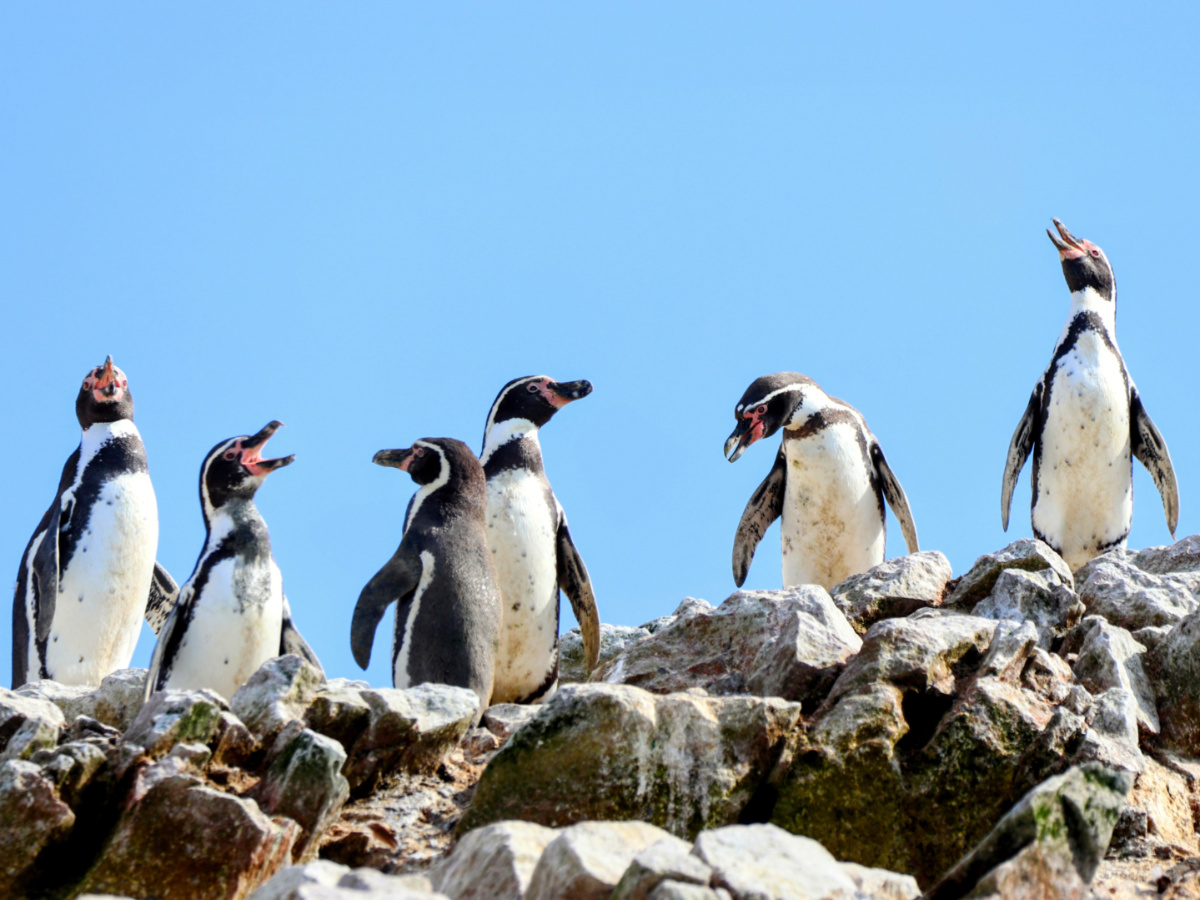
Here’s what to watch for when you do the boat tour to the Ballestas Islands:
- Humboldt penguins
- Lobos marinos aka the Southern sea lion
- Gray boobies
- Peruvian pelicans and more
For the kids, their favorite part was actually visiting Maternity Beach. This part of the Ballestas Islands is where the sea lion colony has its babies and there are hundreds of animals on the shore and in the water. There were countless baby sea lions and it was adorable.

Paracas National Reserve
I had no idea how cool the Paracas National Reserve was going to be. I had seen photos but pictures never really do justice for certain places. The desert as it meets the ocean, both as beaches and sea cliffs is just amazing. Vast expanses of sand dunes with zero vegetation and seemingly no wildlife is really something to take in. It’s fun to explore though, as there are quite a few interesting sites to visit within the Paracas National Reserve.
Oh, and there are flamingos! I know! Pair a visit to the Paracas National Reserve on the same day with the Ballestas Islands and you’ll get to have a day that includes both flamingos and penguins on your Peru trip. Something that really wowed me about this area was how untouched it seems, and perhaps that’s just the nature of the desert, but it was very unique to experience.
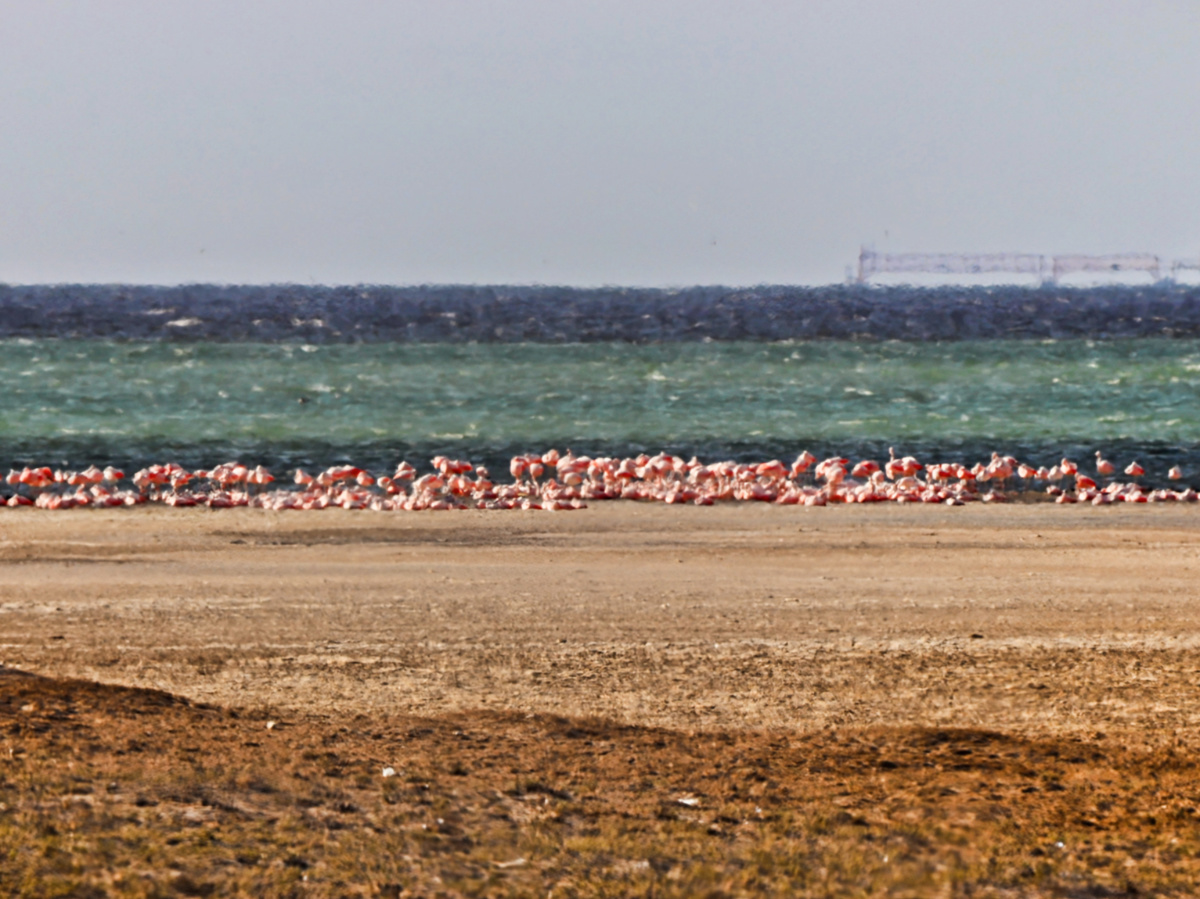
Add the Paracas National Reserve to your two weeks in Peru itinerary to get in some quality beach time. There are beaches here, both for viewing AND for swimming. While you’re not permitted to swim at the red sand beach or the beaches at Cathedral Rock, Playa La Mina is awesome with wonderfully clear water and perfect small waves. There is a fee to use the beach even if you’ve already paid entry to the National Reserve, so have a few soles ready.
Tip: if you’re limited for time, you can book a tour that covers both the Ballestas Islands and the Paracas National Reserve in the same day. This tour includes both areas.
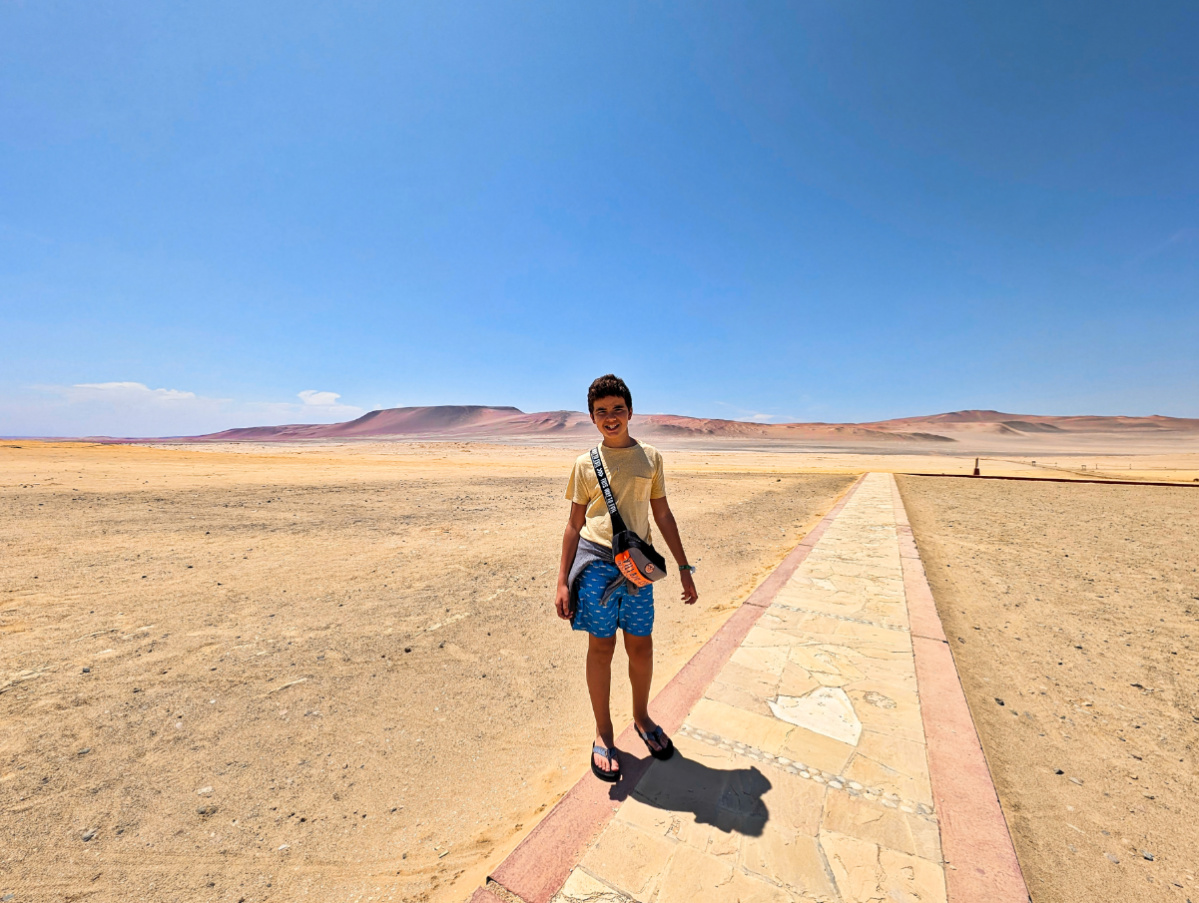
Visiting Ica and Huacachina Oasis
To add onto your time in Paracas, head to Ica. Ica is a larger city with a historic core and great restaurants. It’s half the size of Cusco with about 283k residents. There are a few cool museums, in particular El Museo de Javier Cabrera where you can see countless etched/carved glyphtoliths from pre-Inca times. Ica has historic sites, a cool old cathedral and more.
Just outside of the city is why most tourists head to Ica: the Huacachina Oasis! This is a natural oasis in the desert and it’s beautiful. It’s built up around the edge now, so there are hotels and restaurants, but the phenomenon of the oasis is still very cool and unique. If you tell somebody that you’re heading to Huacachina, no doubt they’ll say “Ooh, are you going sand boarding?!” Sand boarding is a very popular thing to do when you visit Huacachina. It’s just what it sounds like: snowboarding but on sand dunes. If this is on your Peru to-do list, we recommend booking a tour to visit Huacachina so you can enjoy the experience with a guide and the proper gear.
Find a Huacachina tour here!
When you’re done visiting Paracas and Ica, it’s time to head back north to Lima to continue on with your two week Peru trip. I think this part of the trip really is a great way to feel refreshed after the Andes mountains, and you’ll be able to head to the Amazon with lots of energy and excitement!
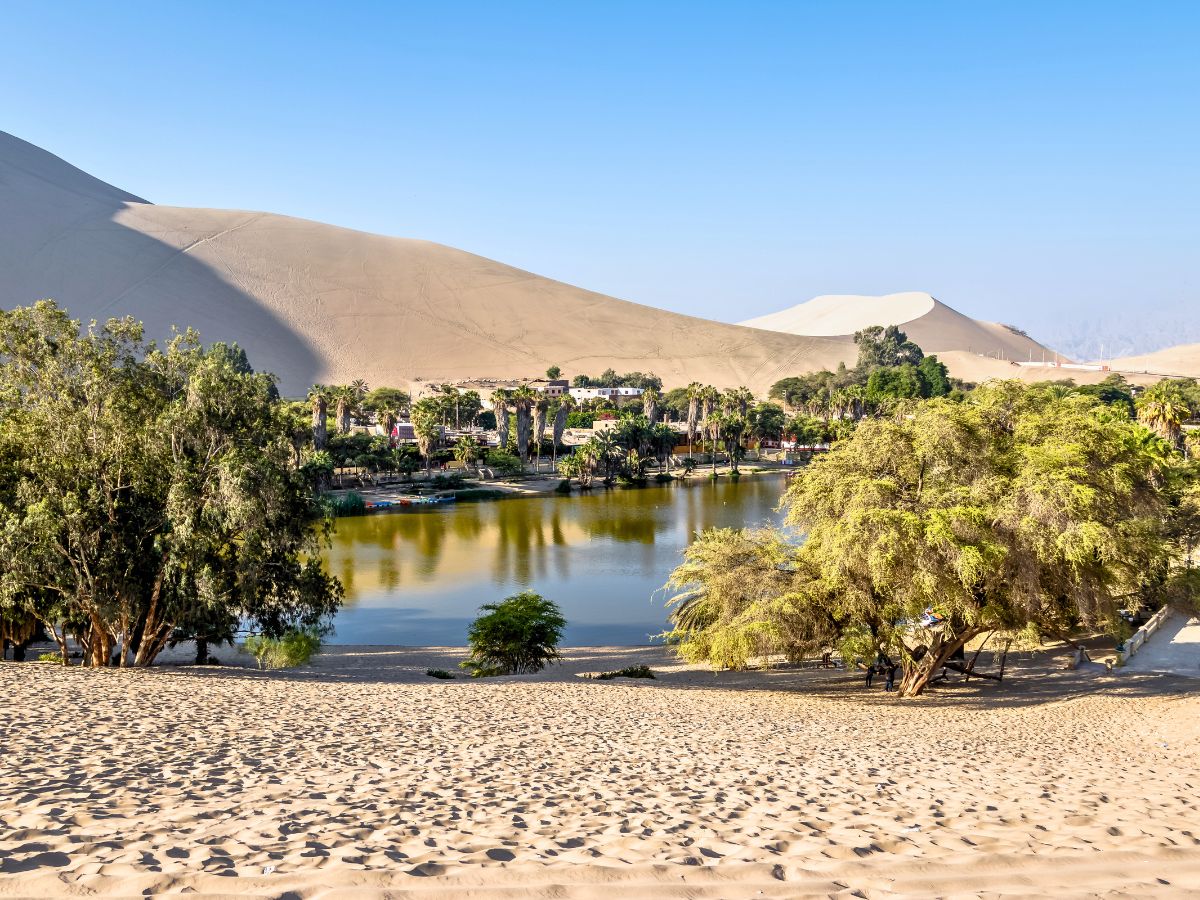
The Amazon River and Rainforest
Our time in the Amazon rainforest was amazing! This was all of our favorite part of our two weeks in Peru. A lot of people think of visiting the Amazon as being something you do when you go to Brazil, but it’s actually very easy to do in Peru and there are lots of wonderful options for how to go about it.
Join us on a group trip to the Peruvian Amazon!
We really enjoyed exploring the Amazon river and rainforest. It was the best part of our Peru trip. Be sure to listen to our podcast episode all about it !
Getting to the Amazon
To get to the Amazon from Lima or anywhere else in Peru, the easiest way is to fly to Iquitos. You cannot drive to Iquitos, Peru, but must either fly or arrive via boat on the Amazon river. To fly to Iquitos, you have to leave from Lima. There are some small regional flights to even smaller towns, but from anywhere a tourist might be, the only option is to go from Lima. Don’t worry, it’s a cheap flight and there are a few every day.
Iquitos is actually a large city, even if it doesn’t seem like it when you land at the tiny airport. Iquitos is larger than Cusco with nearly 500k residents in the city and surrounding area. It’s the launch point for exploring the Peruvian Amazon, including doing one of the many multi-day Amazon River cruises. For us, we were picked up from the airport by our driver from our lodge and then continued on an hour and a half drive to the town of Nauta, where we boarded a small passenger boat for a 45 minute ride south on the Amazon River, and then to our accommodations.
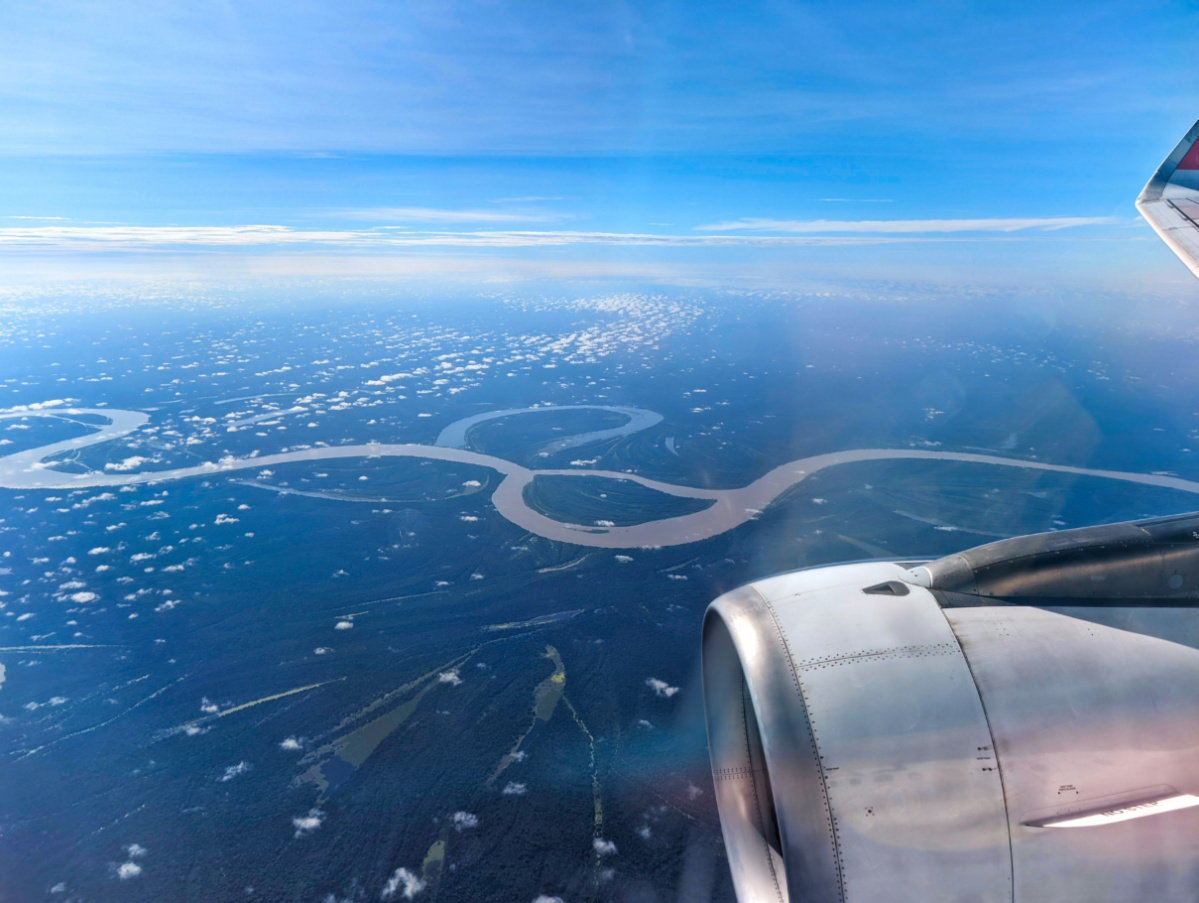
Activities in the Amazon Jungle
Wherever you’re staying for your Peruvian Amazon adventure, you’ll find a variety of activities. Of course the exact execution of the many adventures you’ll find in the Amazon will vary depending on where you’re staying for this part of your Peru trip or who you’re doing your daily excursions through, but you should be able to enjoy AT MINIMUM the following things to do:
- Photo safaris
- Guided bird and wildlife watching
- River cruising (day trips)
- Canoeing and kayaking
- Jungle walks / hikes
- Fishing trips (including piranhas)

Everybody has a different reason for wanting to spend time in the Amazon Rainforest, so as you’re planning your time, do what’s most important to you! For us, we were mostly excited for seeing wildlife of every sort, so we did photo safaris every day and were treated to monkeys, sloths, toucans, macaws and so much more. I can’t imagine another Peru trip without this experience!
Yes, there are mosquitos, but with some planning you’ll be able to enjoy exploring the jungle and cruising along the river without suffering. A combination of bug spray, wearing appropriate clothing to cover as much skin as possible, and even wearing mosquito net jackets can all be good ways to stay itch free. The mosquitos aren’t a problem everywhere or every time of day, but if you’re out at sunset or after, and you’re in the slower flowing parts of the Amazon tributaries or on a lake, the bugs are intense. Just be prepared and you’ll be fine.

Staying at the Treehouse Lodge
Our whole two week Peru itinerary began with us planning our adventures around getting to stay at the Treehouse Lodge in the Amazon rainforest. We had seen pictures online and watched videos of this awesome looking place, so we did more research. Staying at the Treehouse Lodge means that you have an all-inclusive experience where your meals, lodging and ALL excursions are included in your cost.
Our accommodations in our treehouse were perfect for our family of four, including a bathroom in our treehouse, seating, mosquito netting, fans, and getting to shower and watch toucans outside the window. It was wonderful, to say the least. The food was also great, with three meals each day using locally sourced food, prepared in fresh, healthy, Peruvian styles. (Alcohol is the only thing not included, but there is a bar at the Treehouse Lodge.) Across our whole two week Peru trip this was the most magical and comfortable accommodations we had.
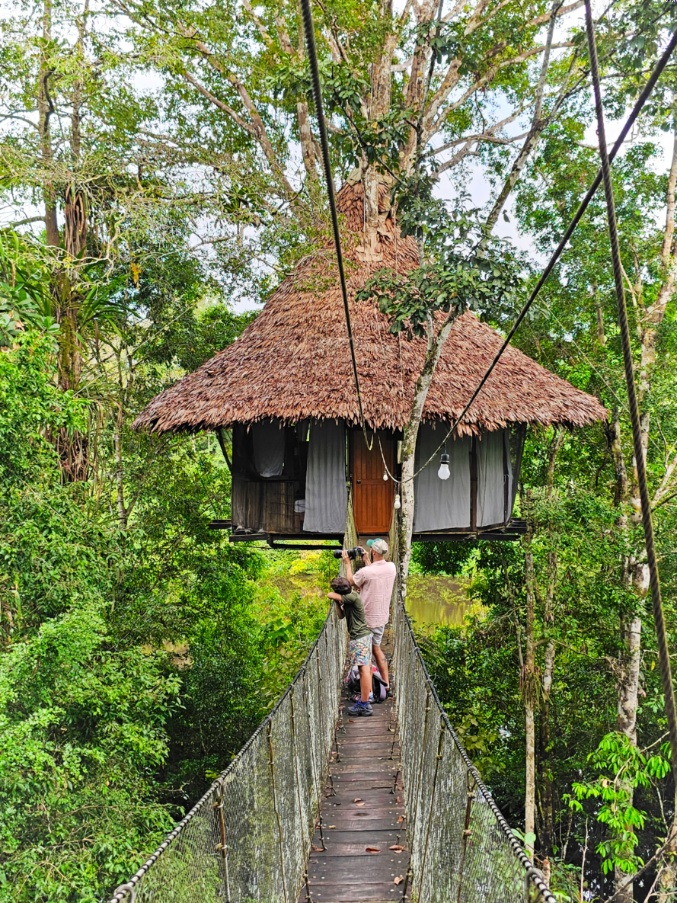
Our daily excursions were amazing. We had our own dedicated guide and river captain, Edgar and Roger. They took great care of us and made sure that we saw the absolute most wildlife and habits that we could in the Amazon Rainforest. We went out at sunrise, morning, midday and sunset. We went fishing multiple times and saw more monkeys and sloths than we could keep track of. Our experience was unmatched in any travel we’ve ever done.
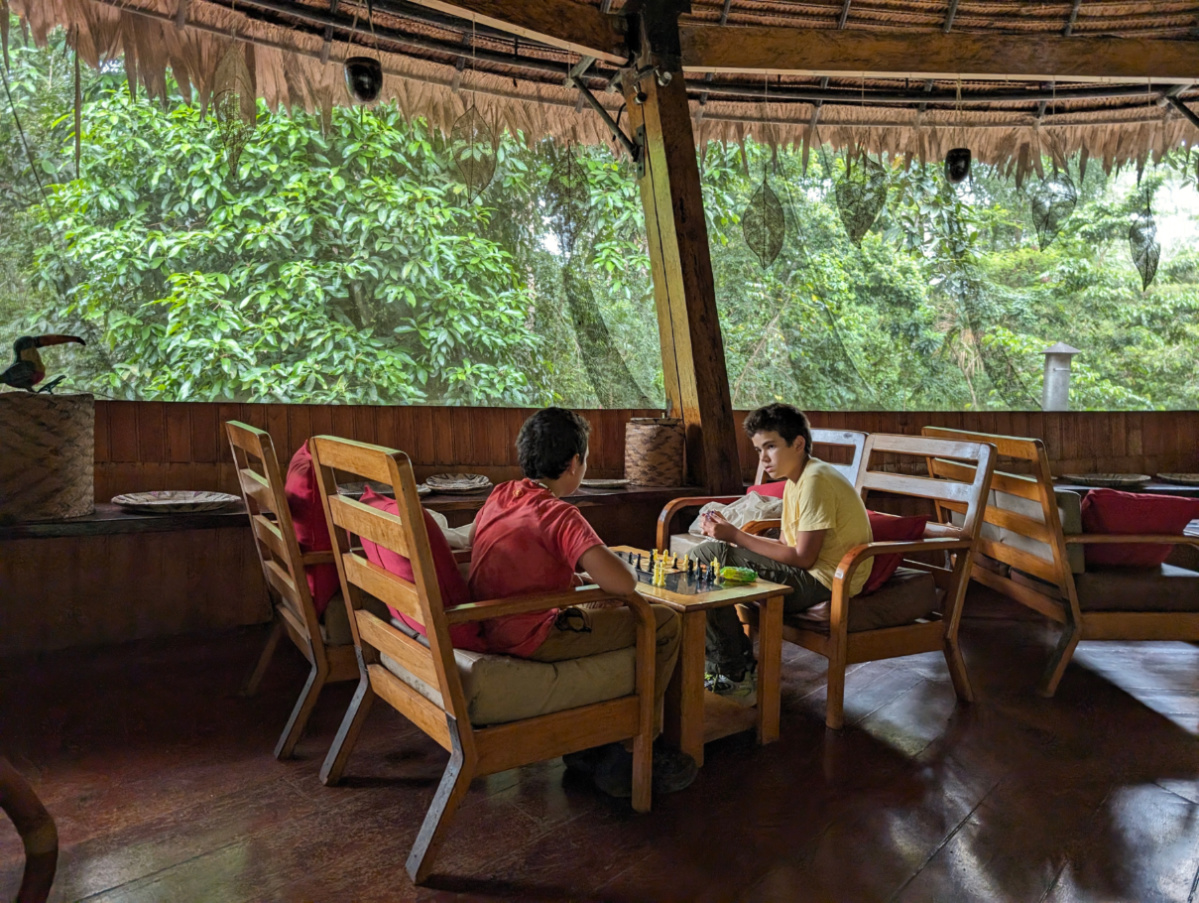
Are you excited to plan a two week Peru trip?! You should be. This itinerary really is solid for having diverse experiences no matter what your interests or travel chops lead you to. Peru is fun, beautiful and unlike what you expect. Please, if you have any questions about either this two week Peru itinerary, planning your trip, or if you want to join us on an upcoming Peruvian Amazon adventure , leave a comment or send us a note . We’re happy to help!

- Expeditions
Press Release
Viking announces expansion of china offering with new voyages starting in 2025, bookings now open for six exclusive itineraries exploring china and japan.
LOS ANGELES (August 29, 2024) – Viking® ( www.viking.com ) (NYSE: VIK) today announced six new itineraries in Asia that will expand exclusive access for guests to Japan and China, with Tibet (Xizang) in 2025. The new voyages range from 15 to 22 days and explore iconic destinations in China, including Shanghai, Beijing, Xi’an and Lhasa in Tibet (Xizang), as well as Osaka, Japan. The itineraries will continue to highlight rarely-seen destinations and ports in China to which only Viking has access. Each voyage will offer guests immersive destination-focused experiences, insightful lectures and regionally inspired cuisine. Now open for booking, the new itineraries will operate from September 2025 to November 2025 on the Viking Yi Dun —formerly the Viking Sun —a sister ship featuring the same award-winning design and service as all other ocean ships in Viking’s fleet.
“We are proud to open our second season of these unique itineraries featuring exploration of the China coast—something that is entirely exclusive to Viking,” said Torstein Hagen, Chairman and CEO of Viking. “For centuries, these phenomenal destinations in Asia have inspired travelers with ancient history and rich culture. Our guests are curious travelers who travel as a way to broaden their minds, and we look forward to introducing more of Asia to them in 2025.”
New Asia Voyages in 2025:
- NEW Jewels of Japan & China (15 days; Beijing to Tokyo) — Embark on a 15-day voyage to discover the history, culture and cuisine of the Far East. Guests will immerse themselves in the German heritage of Qingdao and marvel at Shanghai, a city that perfectly blends tradition and modernity. Admire the natural beauty of Jeju, South Korea and Miyazaki and take in majestic views of Mt. Fuji in Shimizu. Overnight stays in vibrant Hiroshima and Osaka offer guests more opportunities for exploration.
- NEW Classic China Discovery (20 days; Hong Kong to Beijing) — Join Viking for a fully escorted sojourn as guests deepen their understanding of China’s culture, customs and traditions. Explore classic treasures, tracing timeworn steps along the Great Wall of China, and marvel at Xi’an’s Terra Cotta Warriors, each distinctly carved. Enjoy overnights in Shenzhen, Shanghai, Qingdao, Xi’an and Beijing; admire unique architecture, presenting a world of ancient times and forward-thinking modernity; and immerse yourself in local life during calls to quaint locales, with meaningful encounters along the way.
- NEW Pearls of Japan & China (22 days; Tokyo to Beijing) — Set sail with Viking, delving into the vibrant history, multifaceted cultures and delectable cuisine of Asia and beyond during a fully guided journey. Gaze upon majestic Mt. Fuji from Shimizu and enjoy overnight stays in Osaka and Hiroshima. Relax in the natural splendor of Miyazaki and Jeju and immerse yourself in the dynamic cityscape of Shanghai. Cap the memorable voyage discovering the legendary wonders of Tibet (Xizang), Xi’an and Beijing.
- NEW Gems of China & Japan (22 days; Beijing roundtrip) — Join Viking for a fully guided exploration of the rich history, diverse cultures and enticing cuisine of Asia and beyond. See the influence of German settlers in Qingdao and take in the bustling metropolis of Shanghai. Revel in the beauty of Jeju, South Korea and Miyazaki and admire Mt. Fuji looming grandly over Shimizu. An included land package reveals the iconic treasures of Tibet (Xizang), Xi’an and Beijing, immersing guests further into the captivating Eastern world.
- NEW 2025 Wonders of China (22 days; Beijing roundtrip) — Embark on a grand voyage to China on a fully guided sojourn. Be captivated by bustling Shanghai and delve into diverse landscapes, from the isles of Pingtan to modern Shenzhen, with overnight stays that allow guests to fully explore. Immerse yourself in nature in the mountains of Tibet (Xizang) and view the impressive Potala Palace (UNESCO World Heritage Site). Discover Beijing and visit one of the New Seven Wonders of the World, the Great Wall of China.
- NEW 2025 Best of China (22 days; Hong Kong to Beijing) — Guests will immerse themselves in a fully guided cruise tour to see all the highlights China has to offer. Sail China’s scenic eastern coast and delve into the diverse cultures, cuisines and landscapes of this unique nation. View the iconic giant panda and journey into the Himalayas, where ancient traditions infuse every aspect of life in mountainous Tibet (Xizang). Admire the Terra Cotta Warriors and explore the Forbidden City and the Great Wall of China during guests’ memorable sojourn.
Pre and Post Land Extensions
For additional immersion in Asia, Viking is also offering a variety of pre and post land extensions for its 2025 China itineraries, including:
- Beijing – Delve into the mysteries of Beijing, one of history’s great capitals and home to seven UNESCO World Heritage Sites, including the Forbidden City and Great Wall of China. Optional excursions offer an opportunity to be immersed in this multilayered city’s eclectic mix of China’s ancient past and bold future.
- Hong Kong – Delve into one of the world’s foremost metropolises with a three-night extension in Hong Kong. Admire the captivating cityscape and soak up its blend of tradition and modernity, culture and commerce. An optional excursion to Macau allows for more opportunities to experience China’s lively southern coast.
- Hong Kong & Guilin – Explore two versions of China – the urban spectacle of Hong Kong and the enchanting natural beauty of Guilin. Admire the towering skyscrapers and energy of Hong Kong, a metropolis steeped in commerce and culture, while tranquil Guilin captivates with karst mountains, serene rivers and ancient caves.
- Spirit of Mongolia – Immerse yourself in rich traditions and revel in the stark beauty of the Gobi Desert. Explore Ulaanbaatar, an eclectic mix of the ancient and the 21st century. At your desert lodge, admire striking landscapes and enjoy a range of activities curated to bring insight into Mongolia’s nomadic heritage.
- Tokyo – Unravel the mysteries of Tokyo, Japan’s neon-lit capital steeped in imperial history. Zen-like gardens and Shinto shrines mingle with towering skyscrapers in this bustling metropolis, all while the perfectly symmetrical cone of Mt. Fuji watches over.
The Viking Yi Dun
Dedicated specifically to exploring destinations in China, with an onboard experience that complements guests’ discoveries ashore, the Viking Yi Dun is a sister ship in Viking’s award-winning ocean fleet. Classified by Cruise Critic as “small ships,” Viking’s ocean vessels have a gross tonnage of 47,800 tons, with 465 staterooms that host 930 guests; the ships feature all veranda staterooms, Scandinavian design, light-filled public spaces and abundant al fresco dining options.
Media Assets
For more information about Viking, or for images and b-roll, please contact [email protected] .
About Viking
Viking (NYSE: VIK) was founded in 1997 and provides destination-focused journeys on rivers, oceans and lakes around the world. Designed for curious travelers with interests in science, history, culture and cuisine, Chairman Torstein Hagen often says Viking offers experiences for The Thinking Person™. Viking has more than 450 awards to its name, including being rated #1 for Rivers, #1 for Oceans and #1 for Expeditions by Condé Nast Traveler in the 2023 Readers’ Choice Awards. Viking is also rated a “World’s Best” for rivers, oceans and expeditions by Travel + Leisure . No other travel company has simultaneously received the same honors by both publications. For additional information, contact Viking at 1-800-2-VIKING (1-800-284-5464) or visit www.viking.com . For Viking’s award-winning enrichment channel, visit www.viking.tv .
Email: [email protected]
Sign up to receive updates from Viking
Stay current with special offers, news and destination-focused content.
Company Information
- Order a Brochure
- Travel Advisors
- Media Center
- Investor Relations
- Health & Safety Program
- Privacy Policy
- Cookie Policy
- Manage Cookies
Viking River Cruises
- Mississippi
Viking Ocean Cruises
- Scandinavia
- British Isles & Ireland
- North America
- Caribbean & Central America
- South America
- Mediterranean
- Quiet Season Mediterranean
- Australia & New Zealand
- World Cruises
- Grand Journeys
Viking Expeditions
- Great Lakes
- Longitudinal World Cruises

IMAGES
VIDEO
COMMENTS
My 2 Day Tokyo itinerary is the perfect way to make the most of two days in this incredible city, getting a glimpse of both the traditional and the modern.
This 2 day Tokyo itinerary shows you the most efficient way to tour Tokyo in 2 days, including practical tips on how to get around and where to stay.
2 Day Tokyo Itinerary: 15 Must-See Spots + Itinerary Ideas Looking for the best things to do on a 2 day Tokyo itinerary? If you only have 48 hours in the Japanese capital, here's what to do! Tokyo is a bustling metropolis that offers a unique blend of modernity and tradition.
Explore Tokyo; from skyscrapers to shrines in 2 days. Dive into our 2 days Tokyo itinerary for top sights, ensuring a memorable first impression of Tokyo.
Looking for a Tokyo 2 day itinerary? Check out ours, where we show you what to see in Tokyo in 2 days, what to eat and how to get around Tokyo.
This guide is perfect for those who only have 48 Hours in Tokyo - A 2 Day Itinerary. We will show you what to do in Tokyo, where to stay, what to eat and how to get around, whether its a weekend in Tokyo Japan or just a quick trip.
TYPE. 2 hours to Half Day. TIME TO SPEND. Read More. If you're looking to learn a little (or a lot) about Japan's history, the Tokyo National Museum is the place to go. This museum is one of the ...
2. Relax at Odaiba. Assuming you started your morning early at the fish market, a leisurely waterfront afternoon will be the perfect thing to ease you into the rest of the day. Located in Tokyo Bay, Odaiba is an artificial island quickly becoming one of Tokyo's most popular tourist hotspots.
Discover how to spend 48 hours in the fantastic and frenetic capital of Japan with our Tokyo 2 day itinerary.
2 Days in Tokyo Itinerary - The Gateway to the "Land of the Rising Sun" in 48 hours! 2 Days, Itinerary, Japan, Tokyo. Bustling downtown streets and calm shrines, cutting-edge high-tech and ancient traditions, the biggest metropolitan space in the world will surely capture you in no-time! Whether this might be the first stopover before ...
There are so many things to see and do in Tokyo that it's hard to narrow down what to do if you only have a couple of days to spend in this iconic city but if that's all the time you have, here's the perfect 2-day itinerary for you.
Planning to spend 2 days in Tokyo, Japan & looking for info? In this post, you will find a perfect 2-day Tokyo itinerary.
As the capital city of Japan and hottest destination for inbound travelers, Tokyo has everything. But what if you don't have much time? Take a look at this 2 days in Tokyo itinerary that showcases the highlights of the city. Here's your guide to seeing Tokyo in a 2 day weekend or if you only have 48 hours to visit.
Unveil all the secrets with our expert 2 day Tokyo itinerary - from bustling streets to serene sights, and exquisite dining.
Everything you want to make sure you DON'T MISS if you have 2 days in Tokyo. This guide includes WHAT TO DO and WHAT TO EAT. Tips on how to see Shibuya Crossing, Hachiko Dog Statue, Meiji Shrine, Tokyo Skytree, Robot Restaurant, shopping, and food. Some tips on where to stay and how to get around included.
There are many places to see in Tokyo and you might feel a little lost as to where to start your trip. So we compiled a two-day-itinerary for exploring the different areas in Tokyo. With this itinerary we covered the most of the must-visit places for first-time travellers to Japan. Including cultural hotpots, hidden gems, stunning scenery and much more. Let's go!
A Tokyo itinerary suitable for first time visitors looking to have a short 2-day trip in the city. Experience both old and new Tokyo!
In this guide we go through absolutely everything you need to know to plan your own 2 day Tokyo itinerary, from where to stay, what to see, and everything in between. And now that Japan is back open for tourists post Covid, we share our travel tips so that you too can see Tokyo in 2 days (or more!).
From the neon lights to the majestic antient temples, deciding what to do in the massive city Tokyo can be hard. Here is the perfect 2 days in Tokyo, Japan.
DAY 1. For the first day's itinerary, you will be using the Toei Oedo Line a lot. This subway line is particularly useful for visitors because it connects many of the most popular tourist spots in Tokyo including the Tokyo Tower, Shinjuku, Yoyogi, and Roppongi. But of course, we'll also use other subway lines.
Take a look at this Tokyo 2-day itinerary with all the best things to do in Tokyo if you are visiting for just a few days in 2024.
2-Day Katsushika Itinerary. 2-Day Itabashi Itinerary. 2-Day Ichikawa Itinerary. 2-Day Arakawa Itinerary. 2-Day Matsudo Itinerary. Make the most out of your 2 days in Tokyo by exploring these top visited places: Tokyo Skytree, Sometarō, Tokyo Tower, and Sukiyabashi Jiro Roppongi Hills Restaurant.
Tokyo holds a special place in my heart. After all, it was the city I was lucky enough to call home when I lived in Japan! This 2 day Tokyo itinerary is based on my recommendations for first-time travelers to Japan.
Crafting the perfect Tokyo itinerary is a delightful challenge, given the city's rich tapestry of experiences waiting to be explored. These Tokyo itineraries for 1-4 days can cater to a wide array of interests, from history buffs to food enthusiasts, ensuring a fulfilling Tokyo journey for every traveler.. A well-planned one-day Tokyo itinerary typically includes visits to iconic landmarks ...
Take the trip of a lifetime to Japan with All Nippon Airways (ANA), Japan's largest airline. ANA is consistently awarded a 5-Star SKYTRAX rating, which means an exceptional trip always starts in the sky. ANA welcomes you aboard with "omotenashi" (Japanese hospitality) and the ultimate in comfort and convenience.
Looking for a day trip from Tokyo? Yokohama, Japan's second most populous city, is super accessible by train from Tokyo. While it's often known for having Ja...
From Fairbanks to Coldfoot on this four day itinerary, you'll get to explore the history, culture, and nature that Alaska's Interior and Arctic regions are famous for.. Day 1: Fairbanks. Fairbanks is accessible via commercial flight from many cities in the Lower 48 and via Anchorage.Upon arrival, check in to a cozy lodge or modern hotel, and if you're in town from August to April, be sure to ...
When building our Peru itinerary, travel within the country was the thing that was the most confusing to me initially. You can look at things on a map until the cows come home, but understanding the logistics of getting from place to place is a whole other thing. ... (valid 2 days for adults, 10 days for child tickets). Cusco and More Andes ...
LOS ANGELES (August 29, 2024) - Viking® (www.viking.com) (NYSE: VIK) today announced six new itineraries in Asia that will expand exclusive access for guests to Japan and China, with Tibet (Xizang) in 2025.The new voyages range from 15 to 22 days and explore iconic destinations in China, including Shanghai, Beijing, Xi'an and Lhasa in Tibet (Xizang), as well as Osaka, Japan.